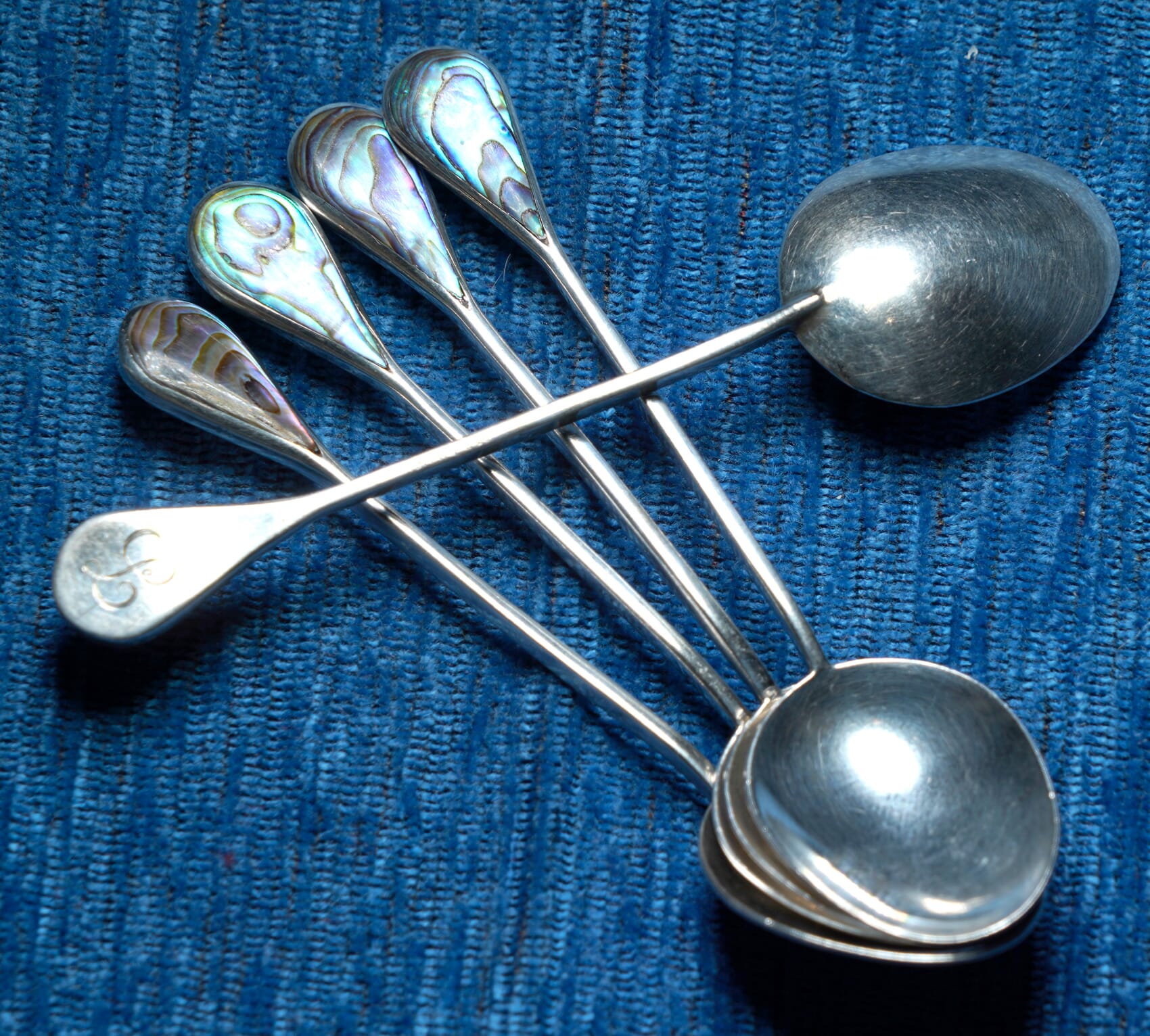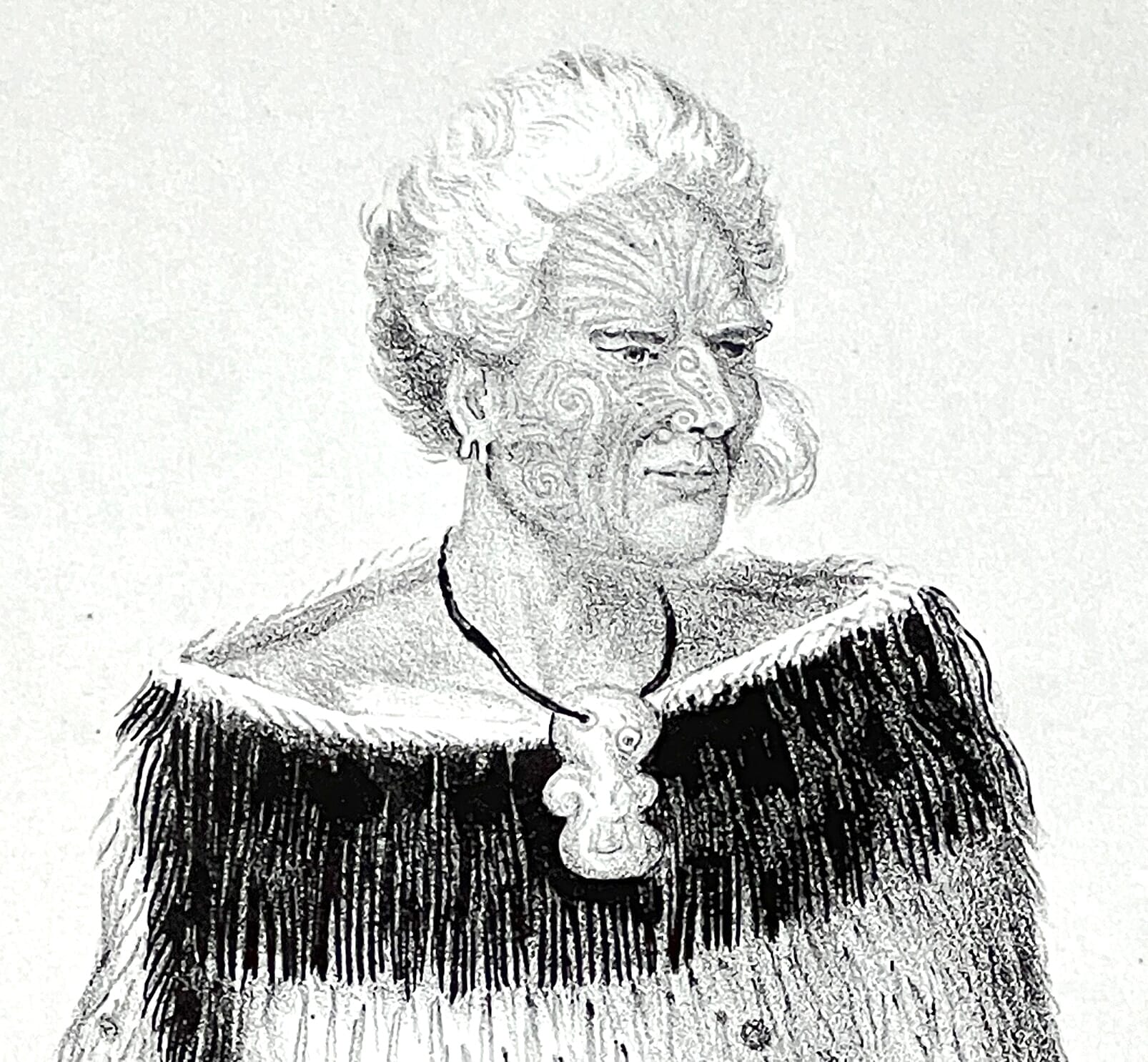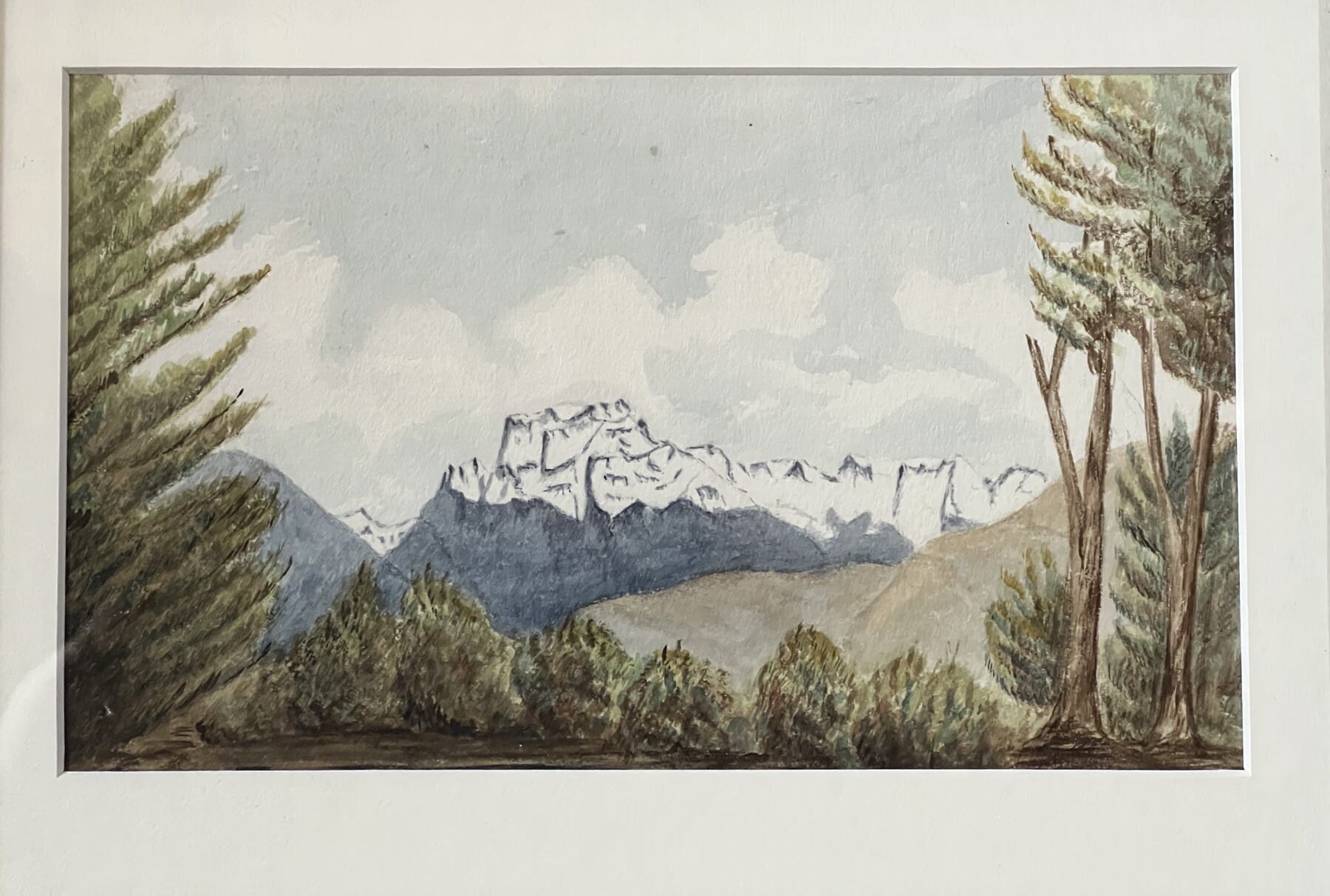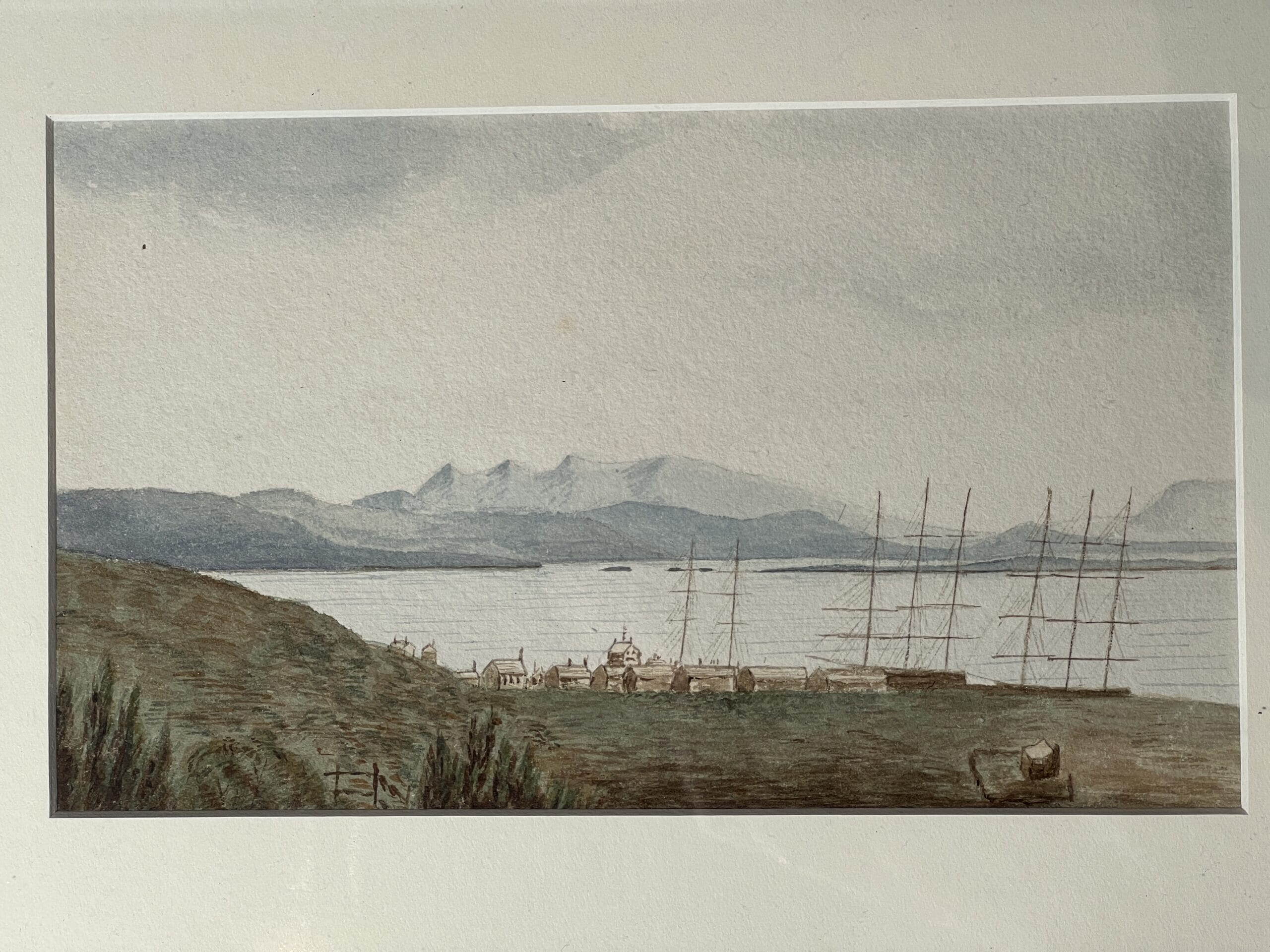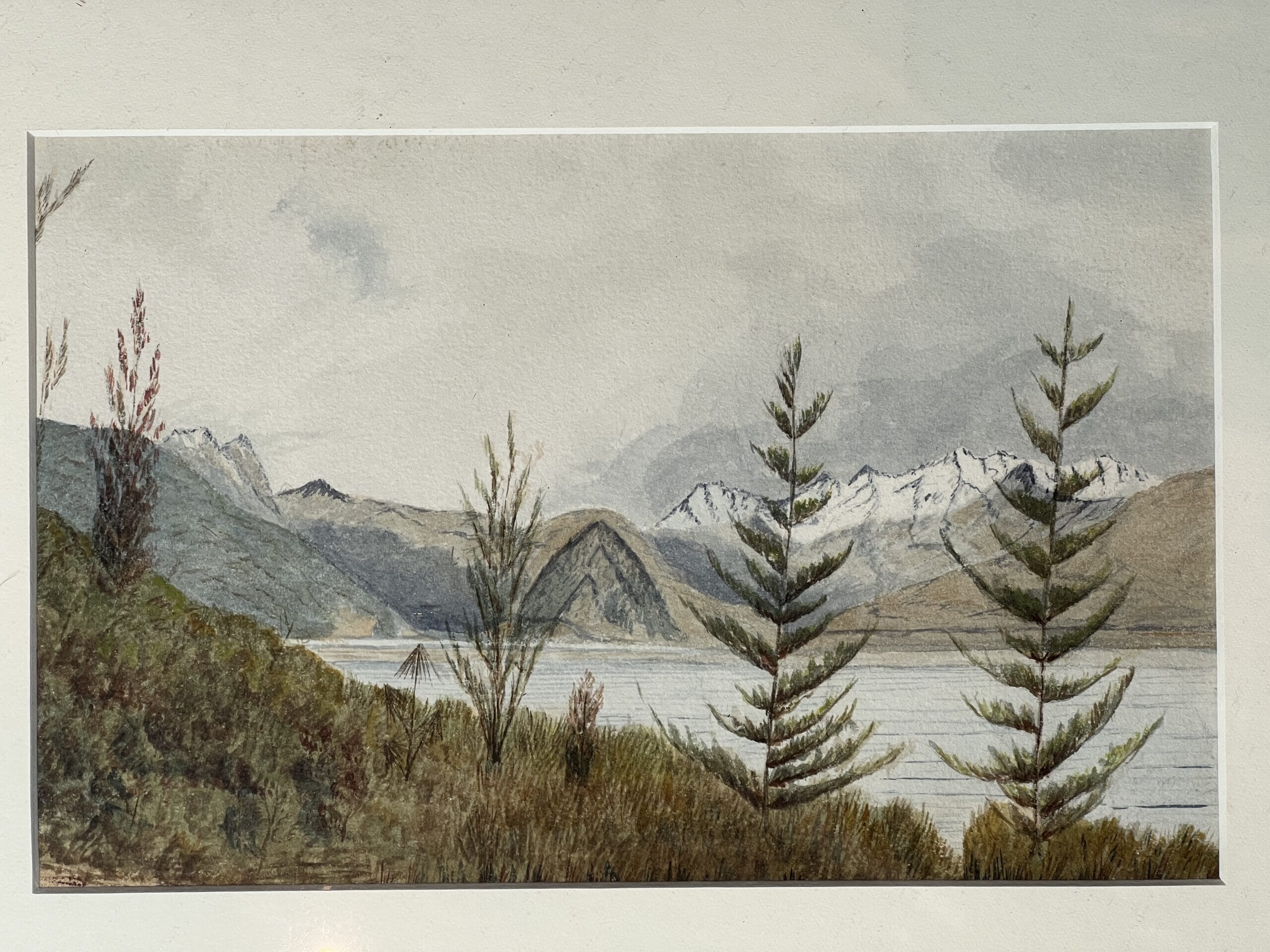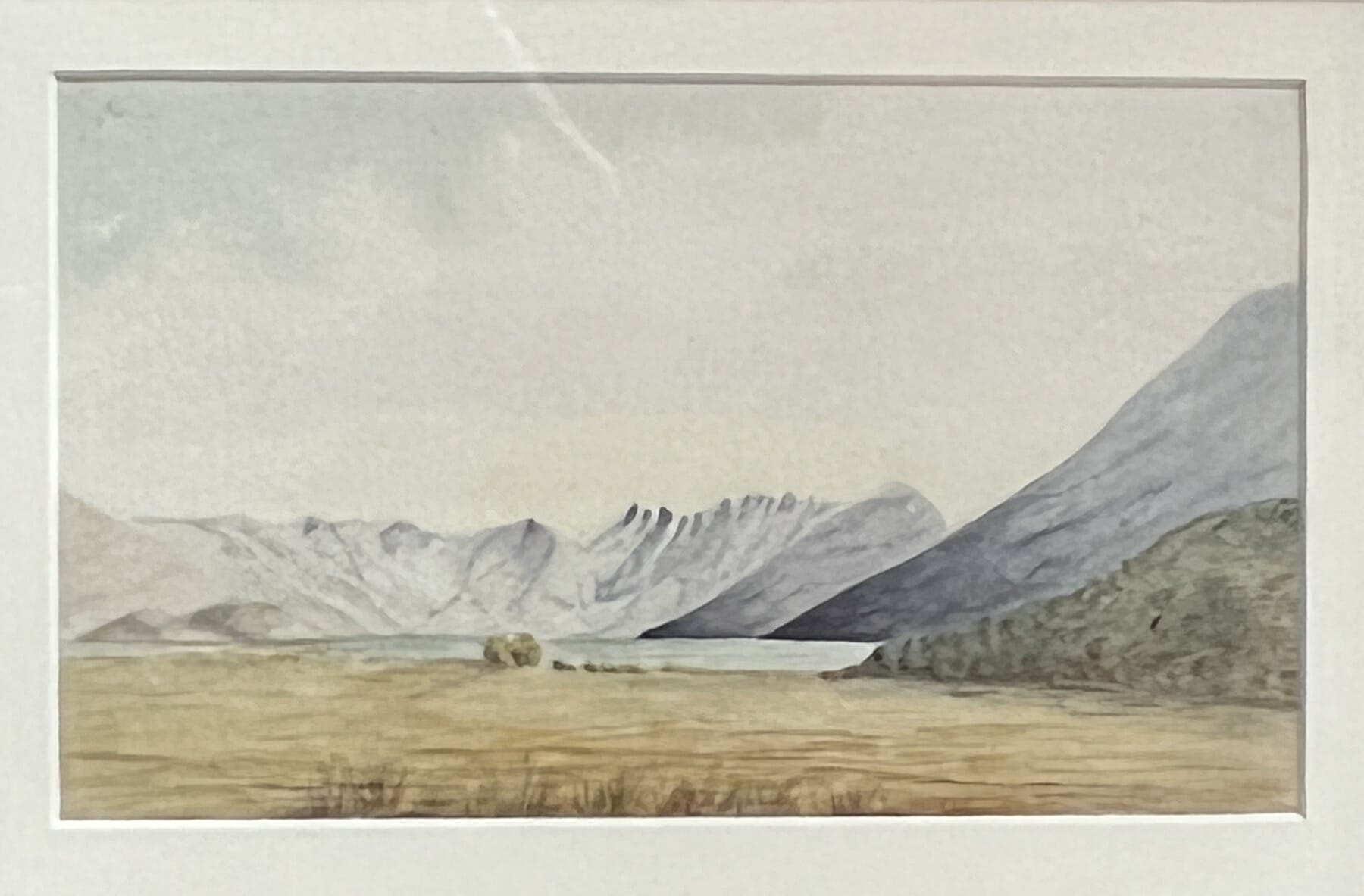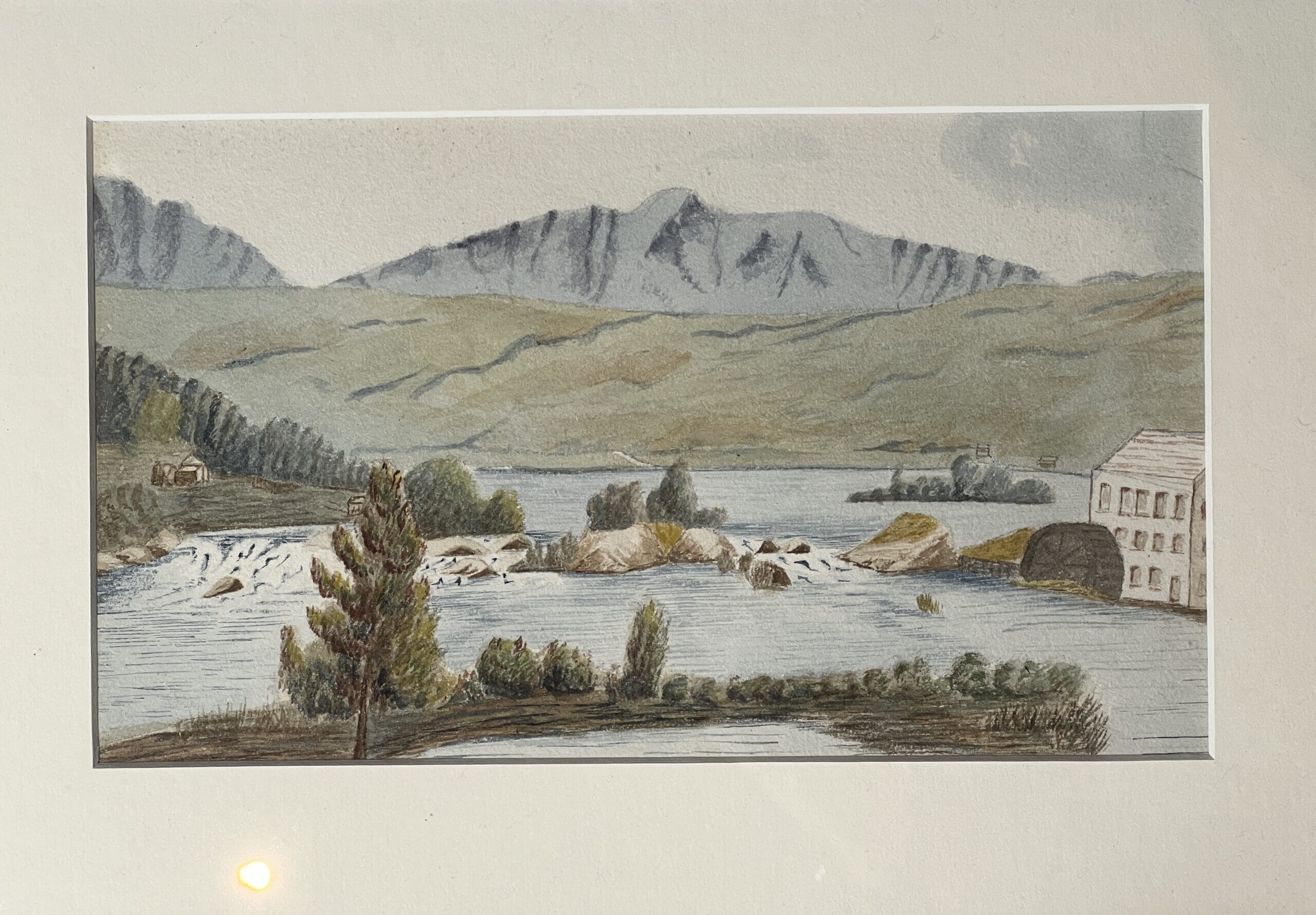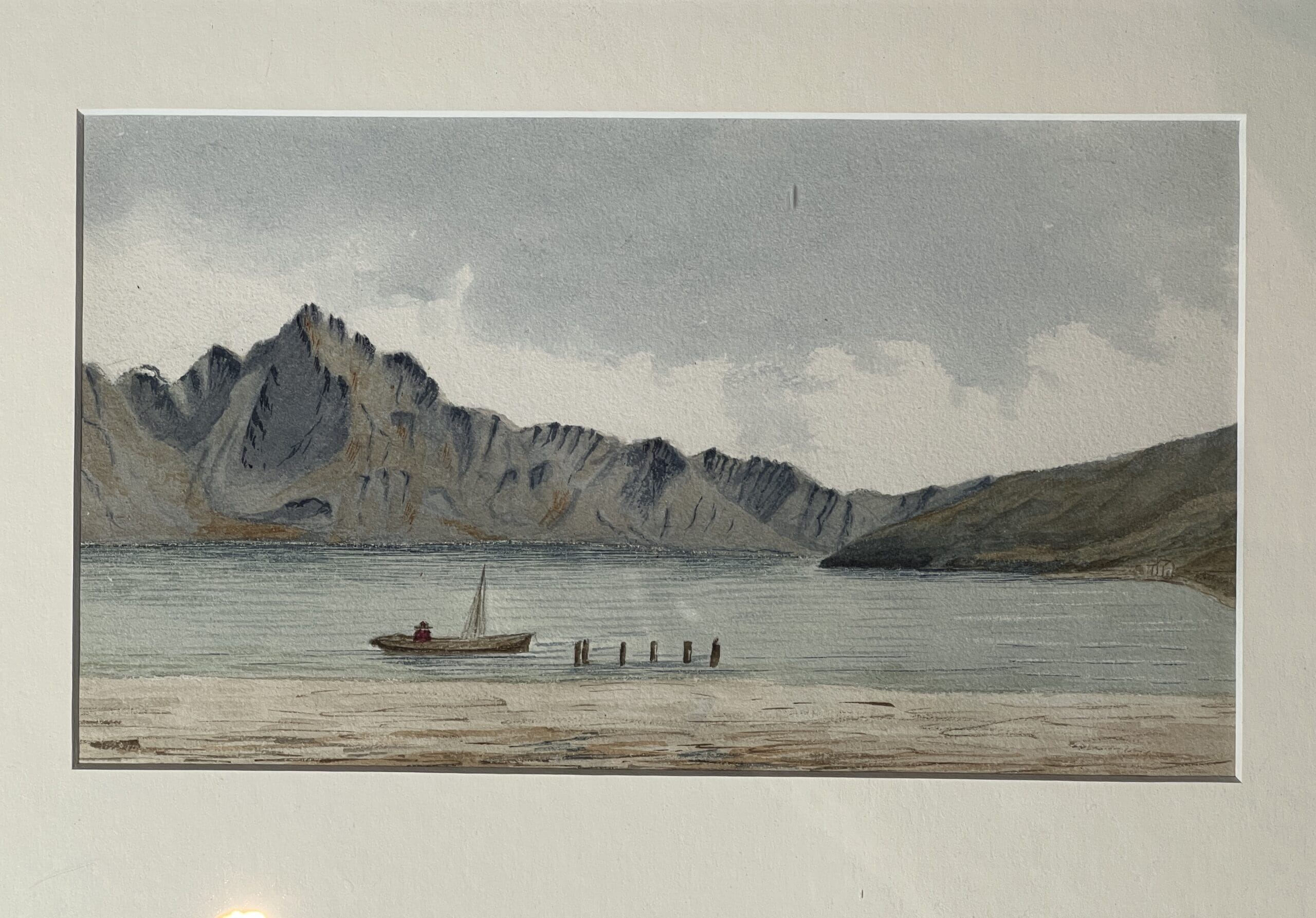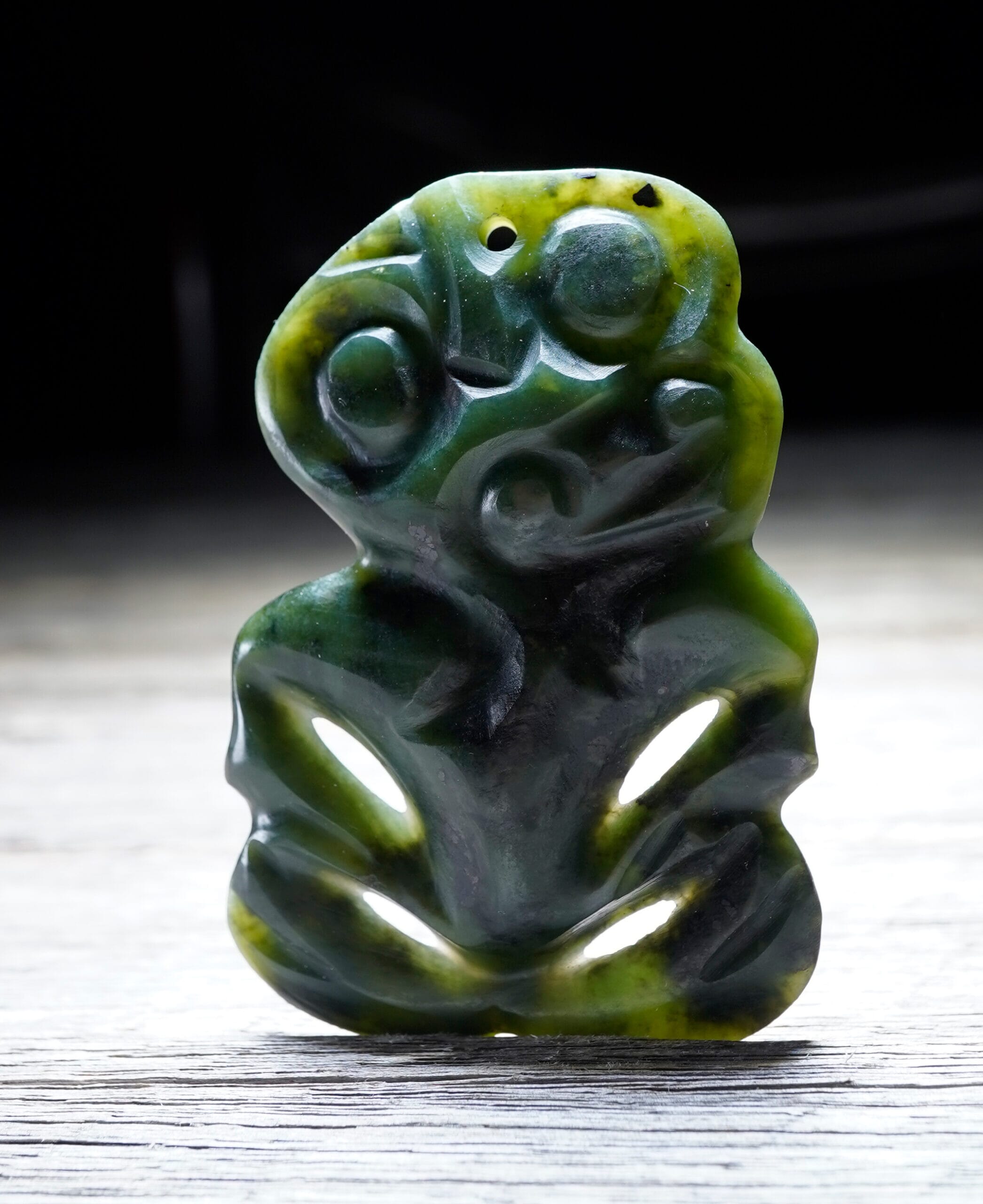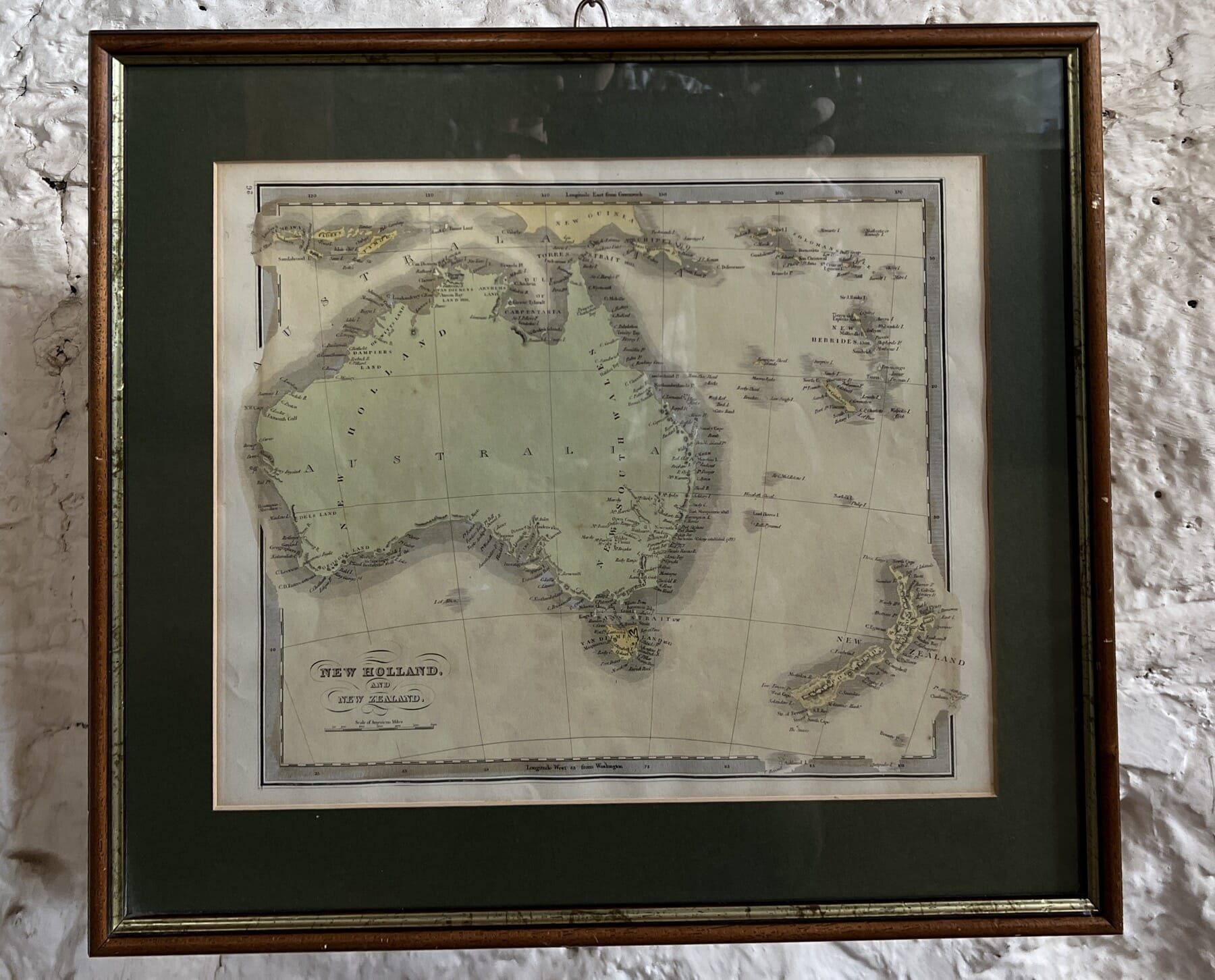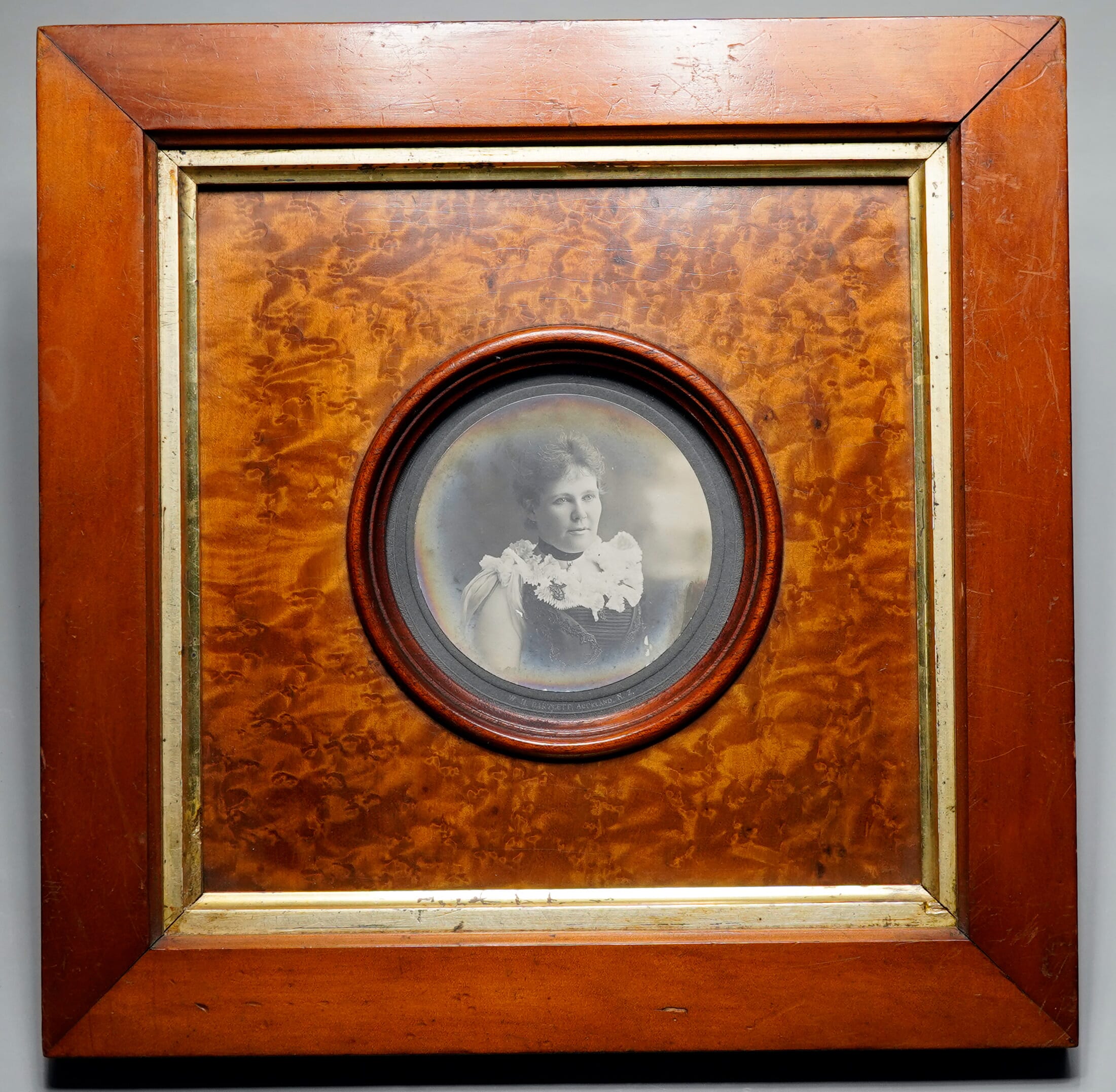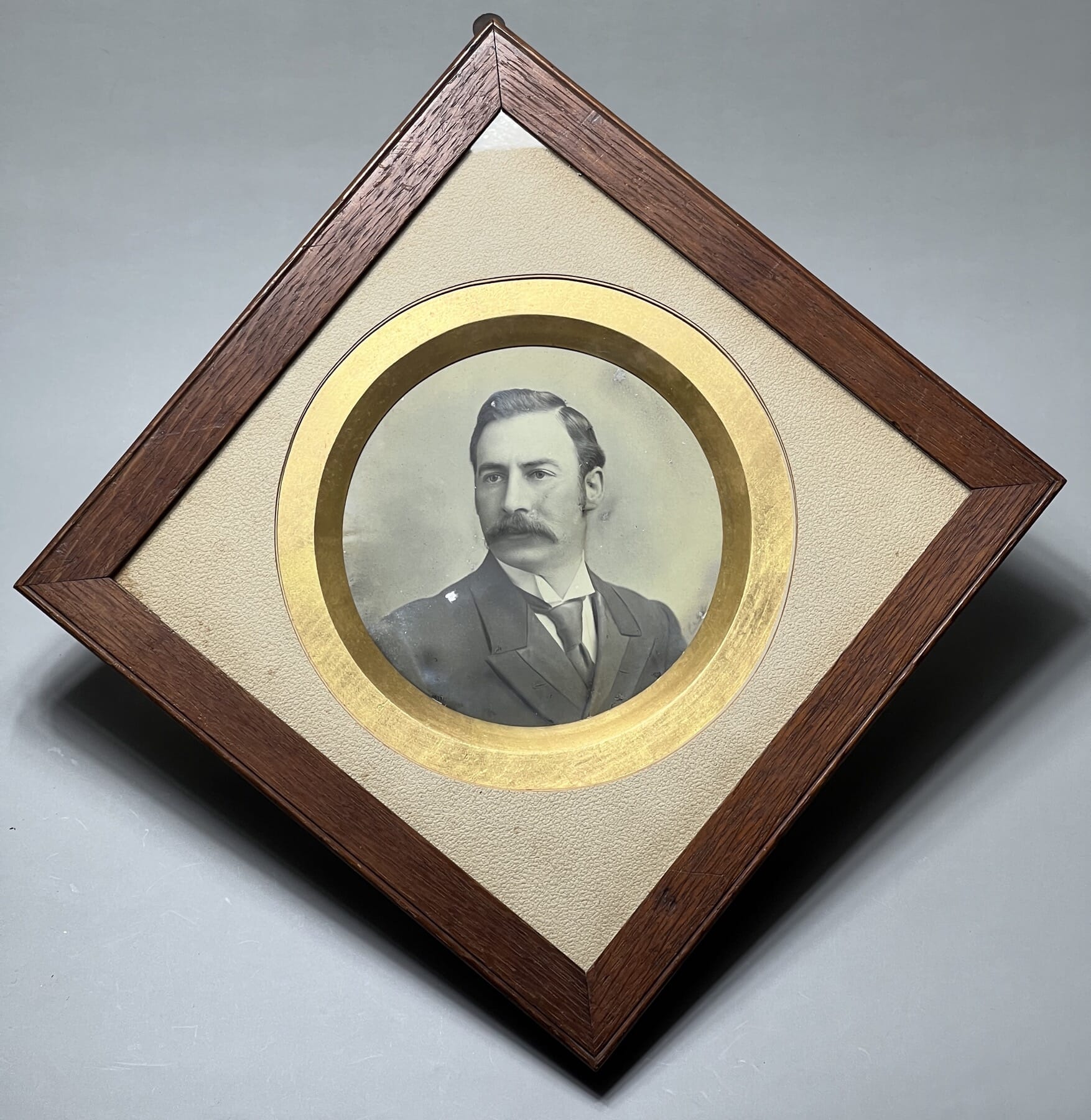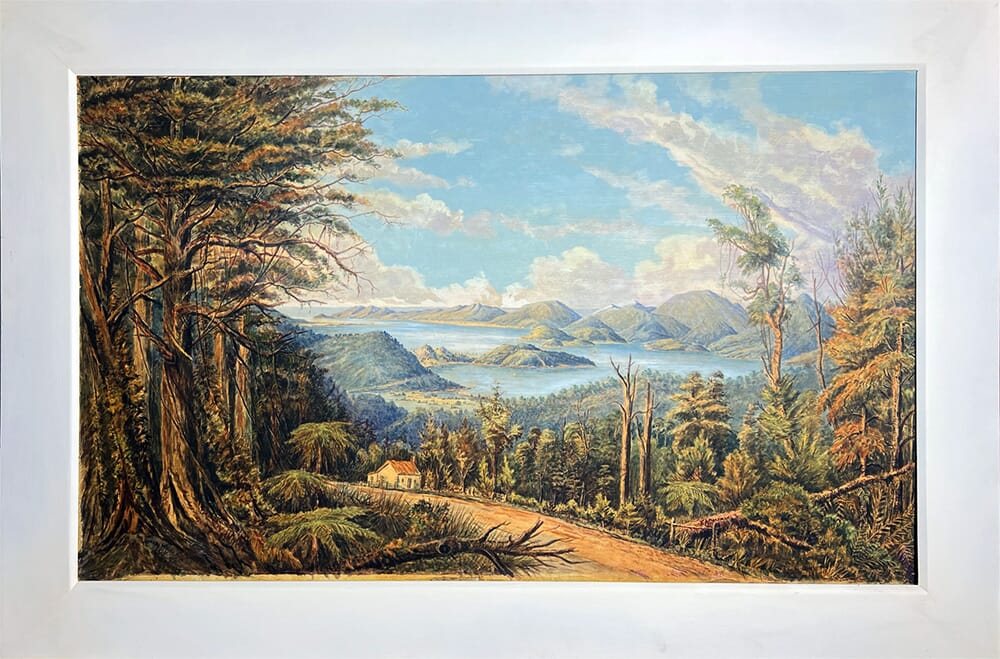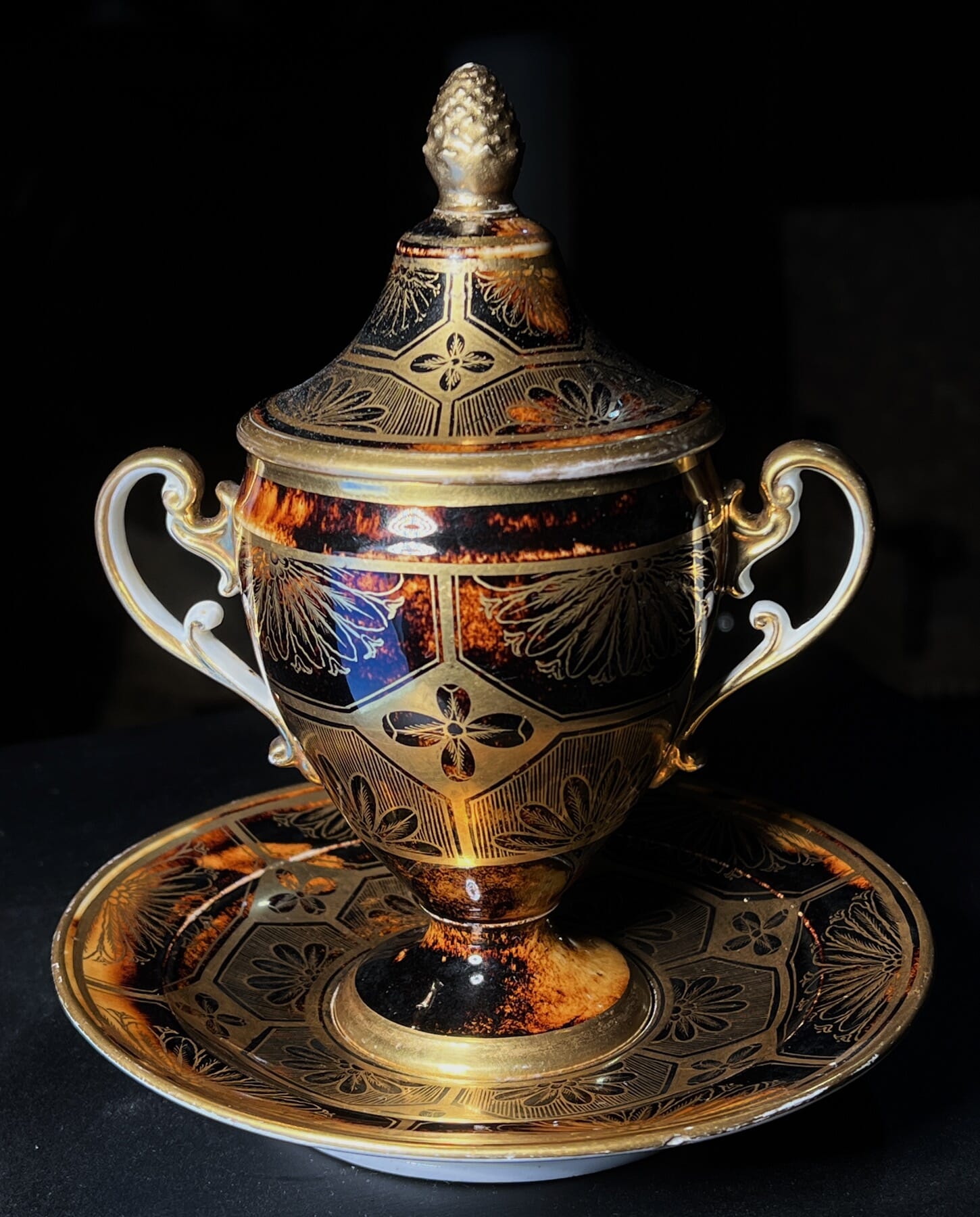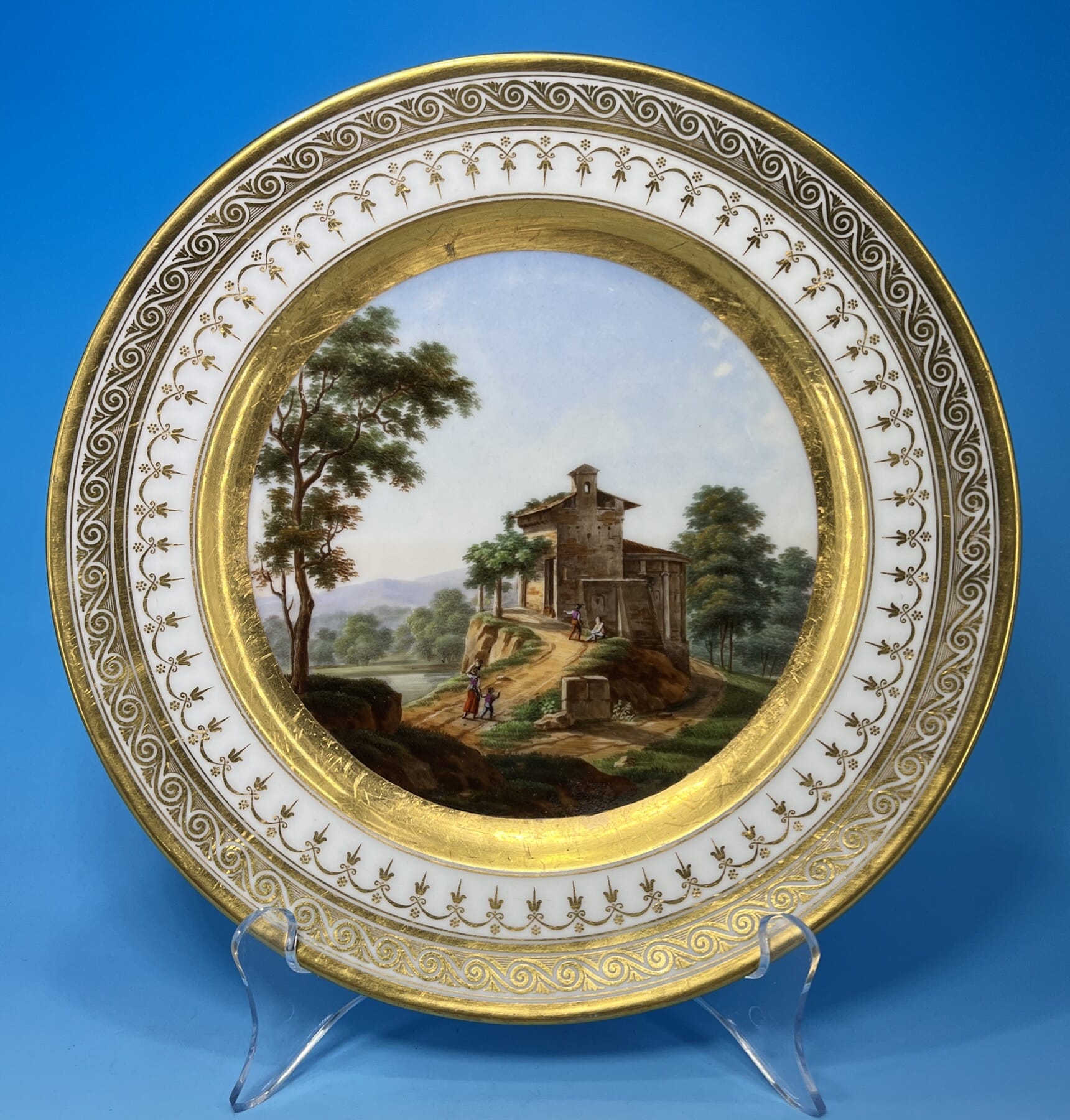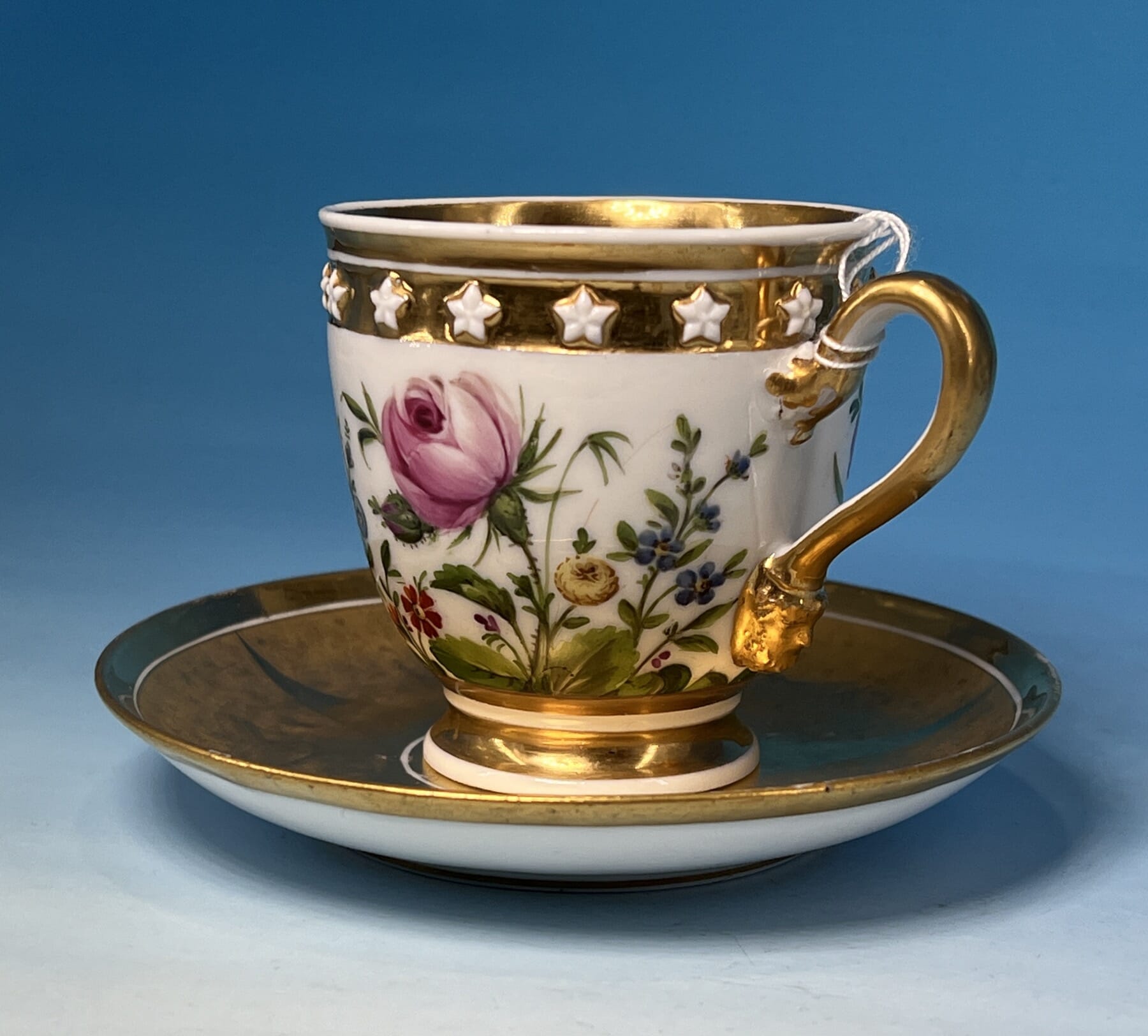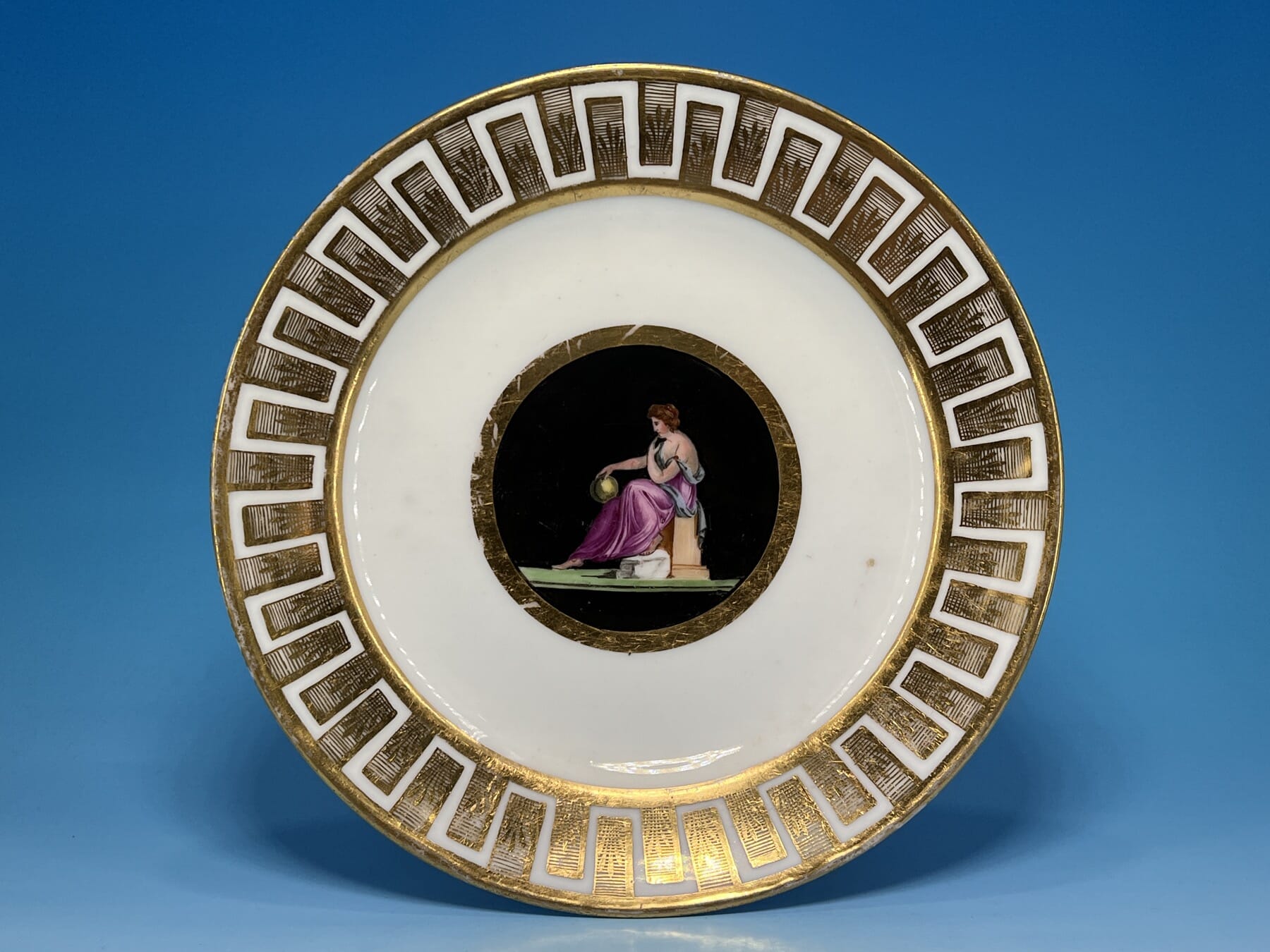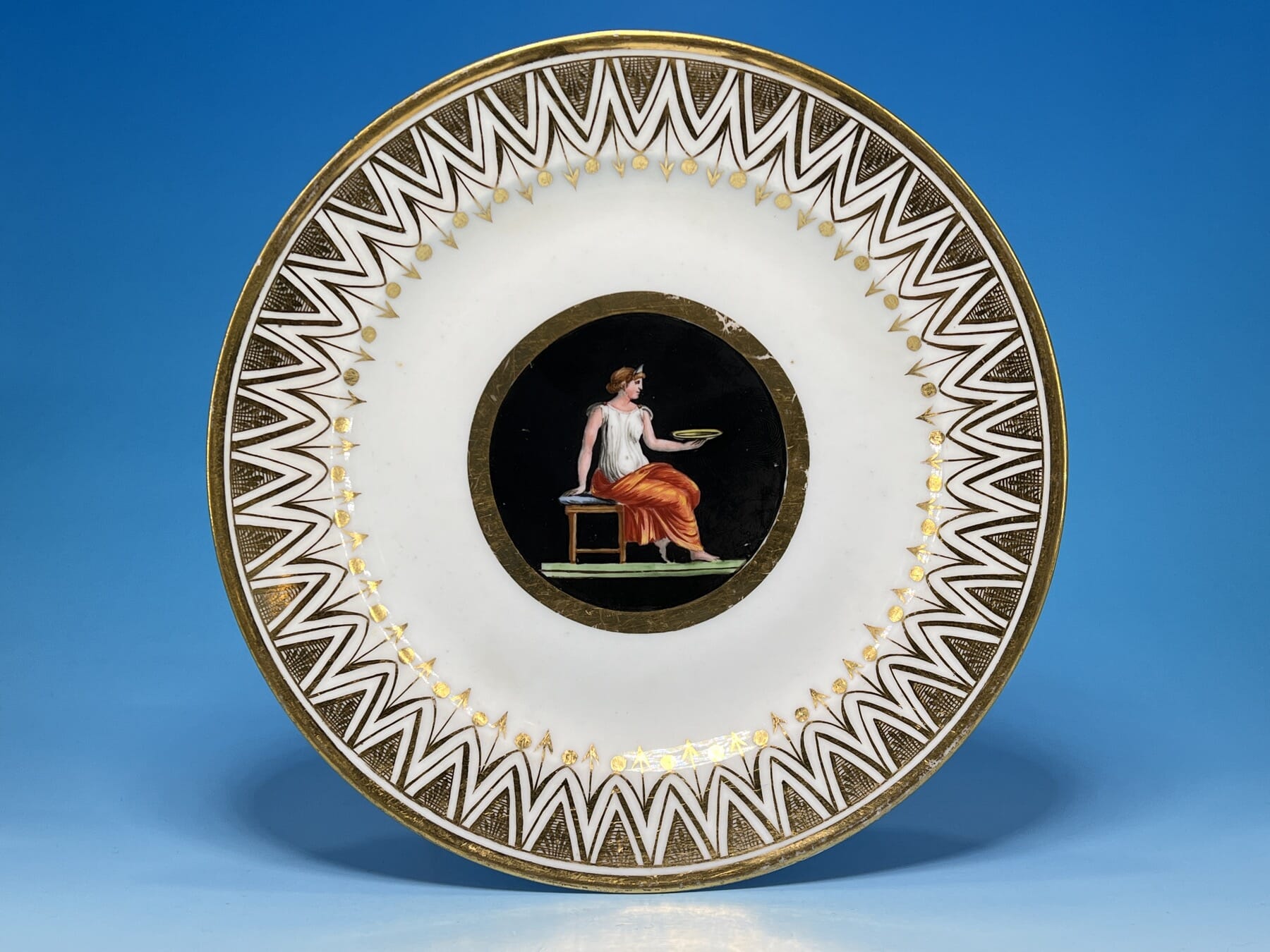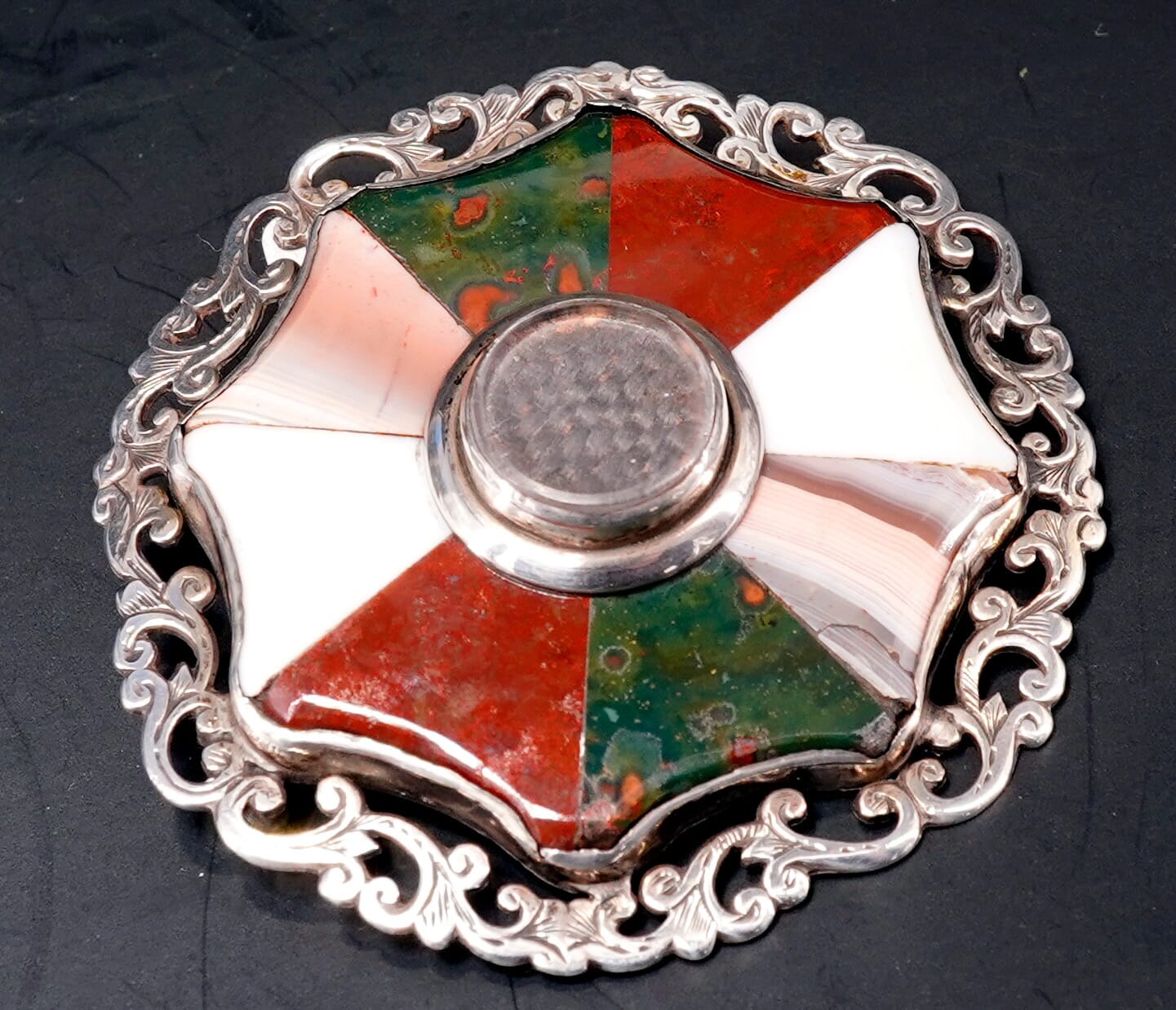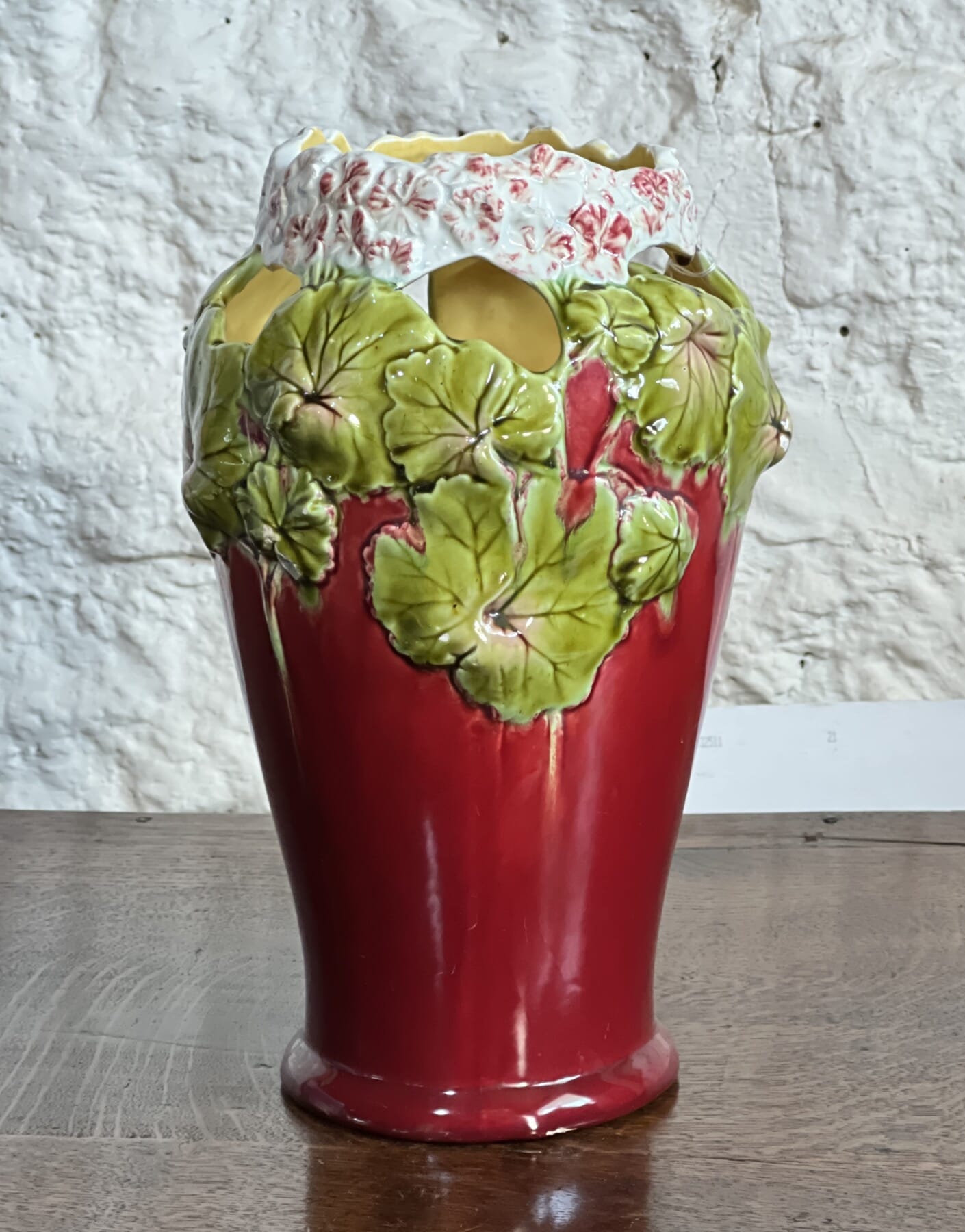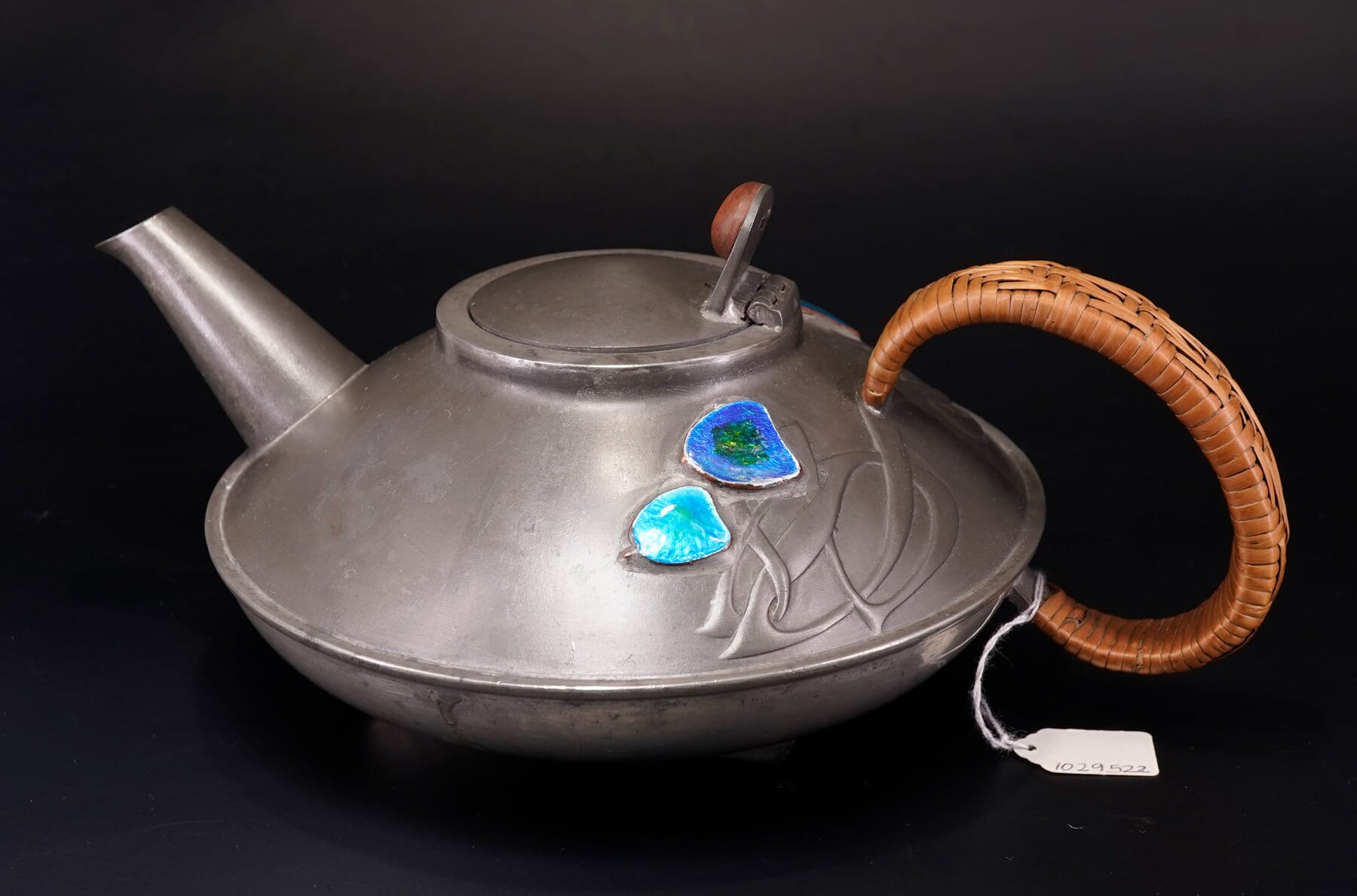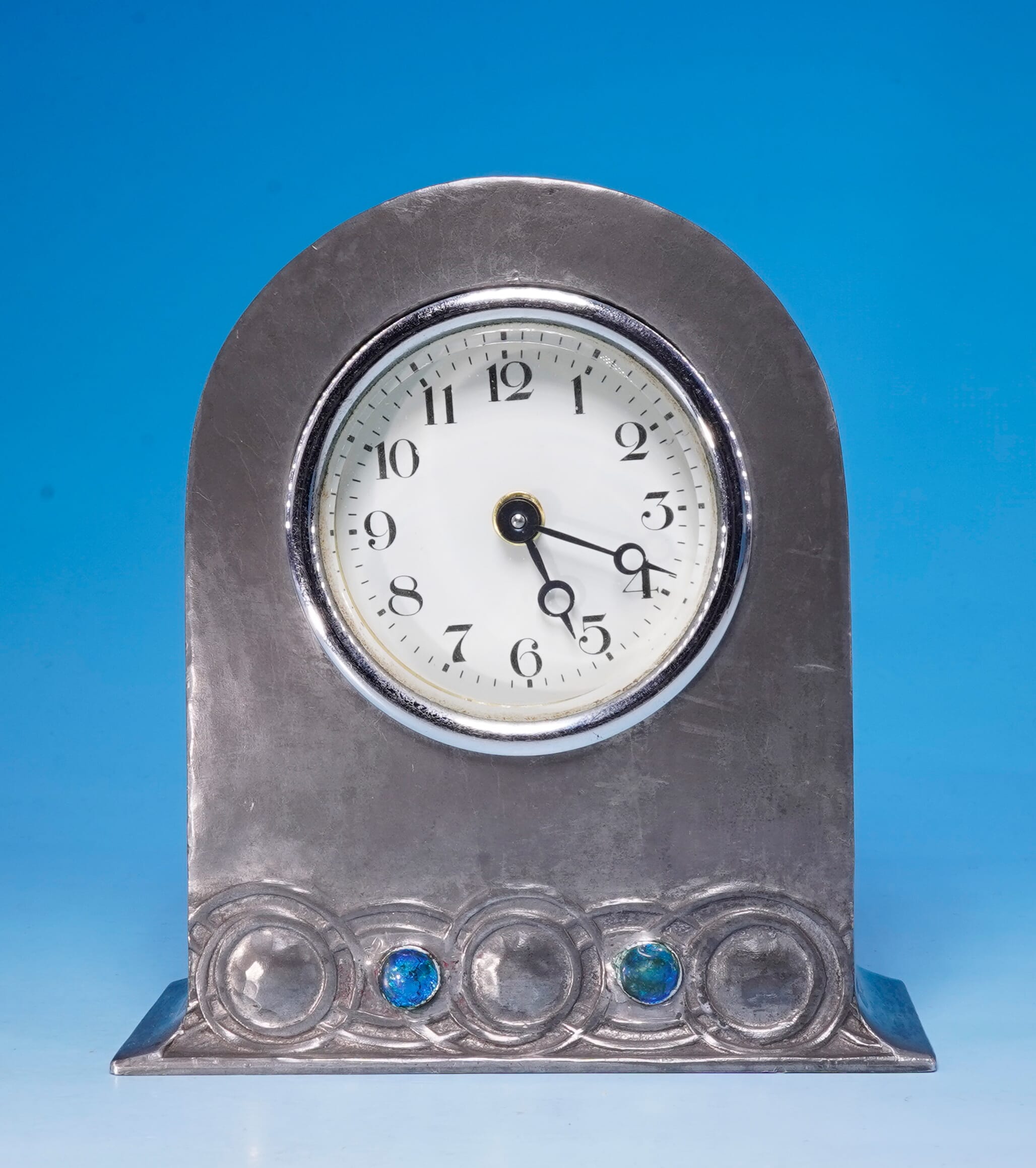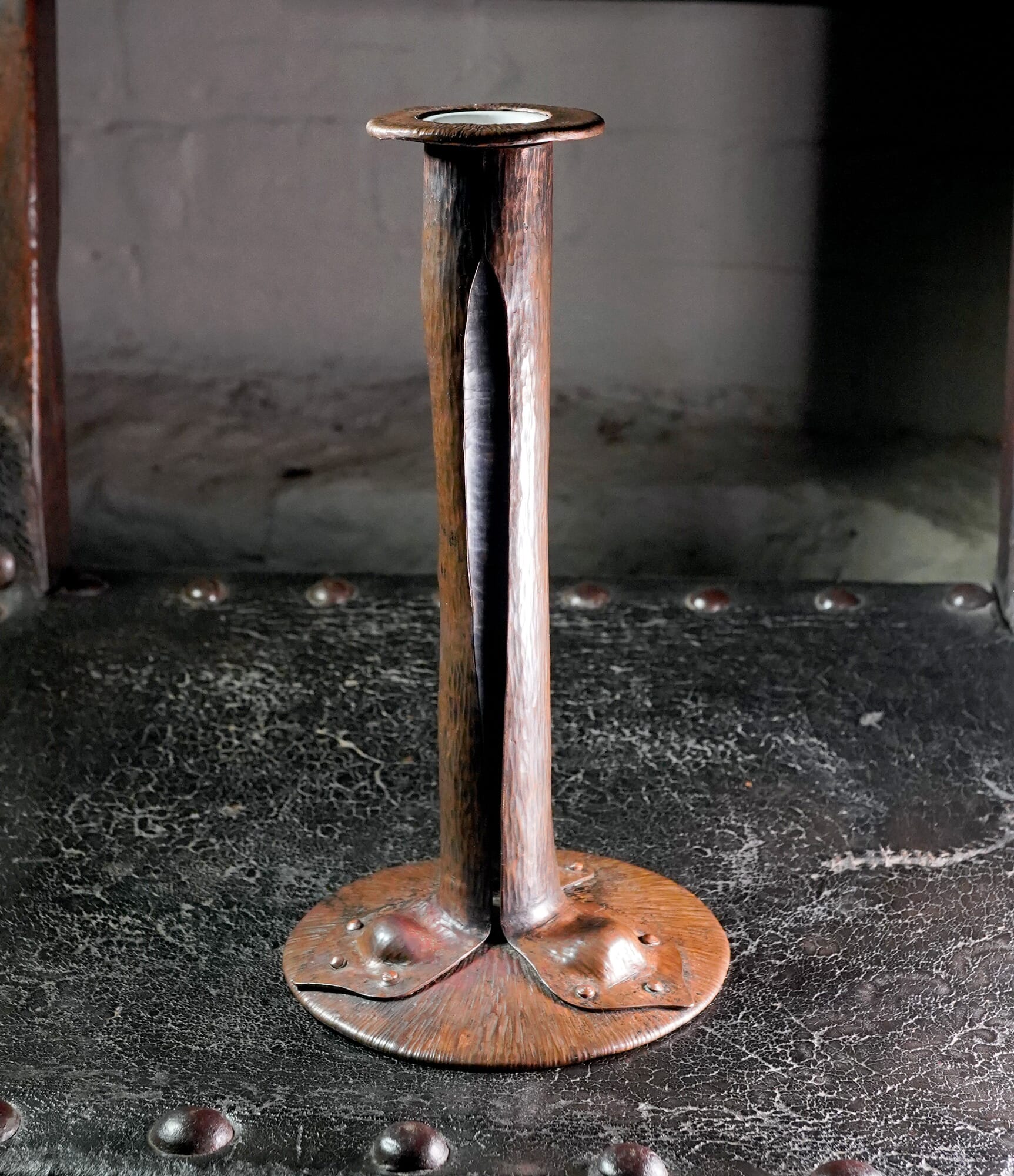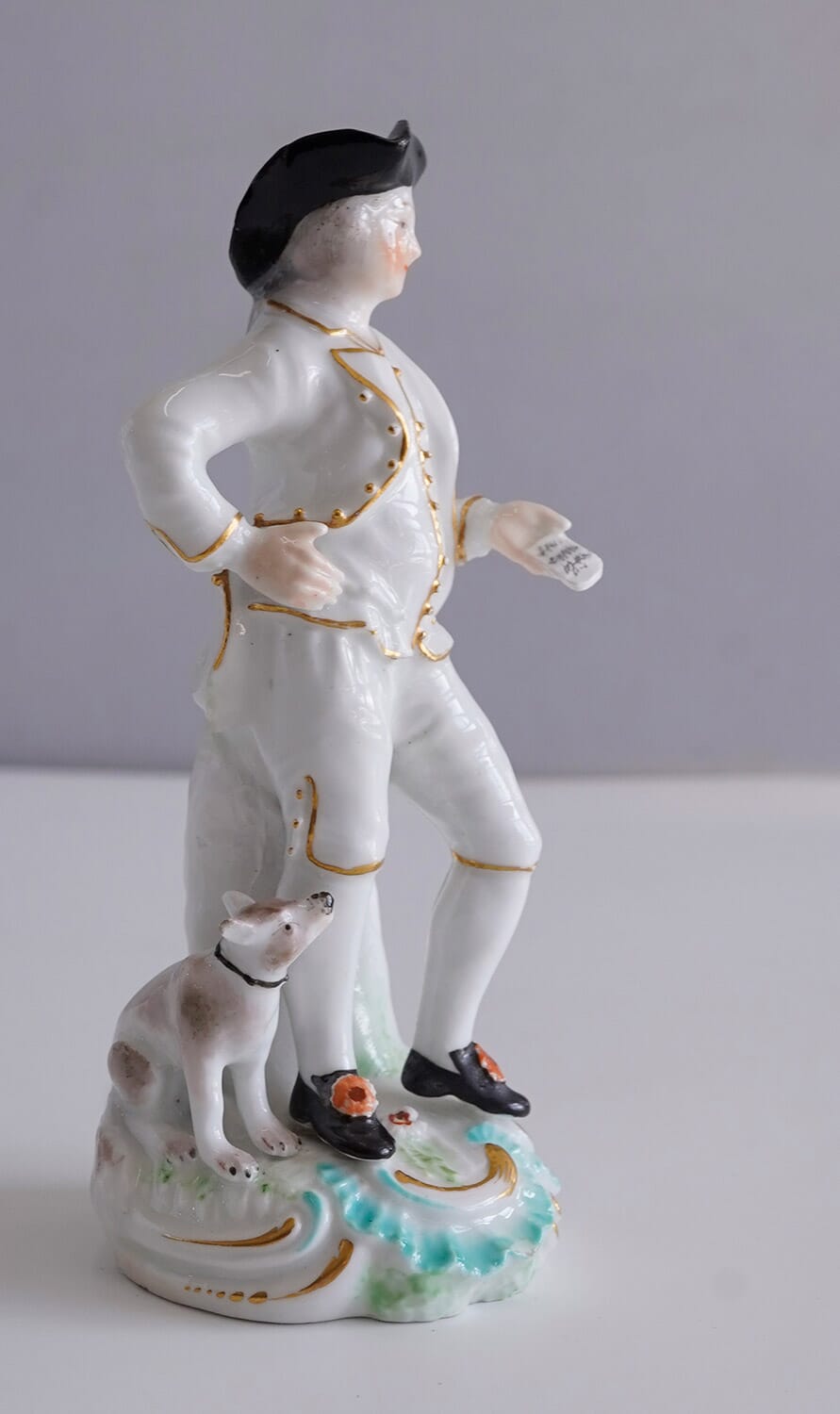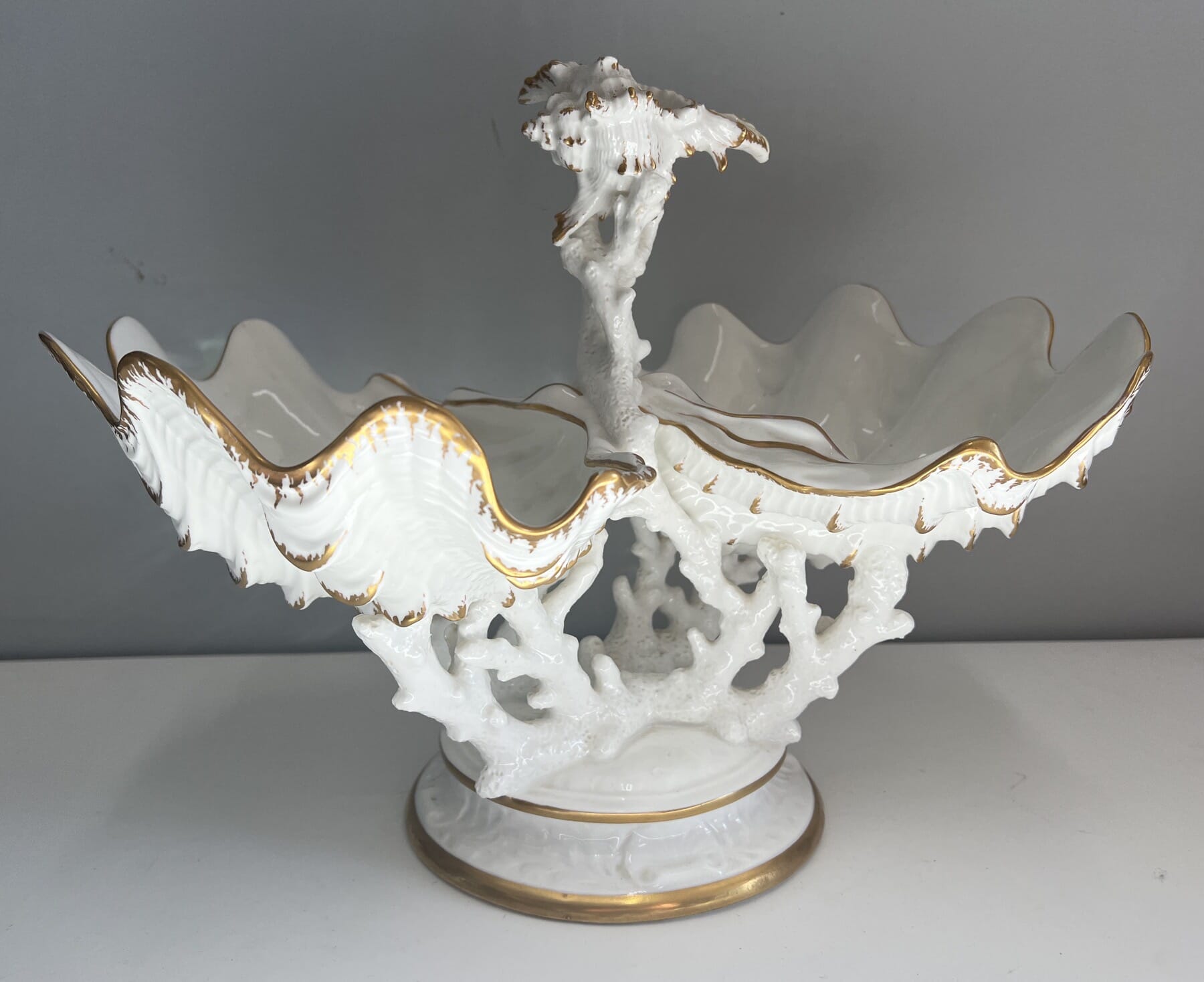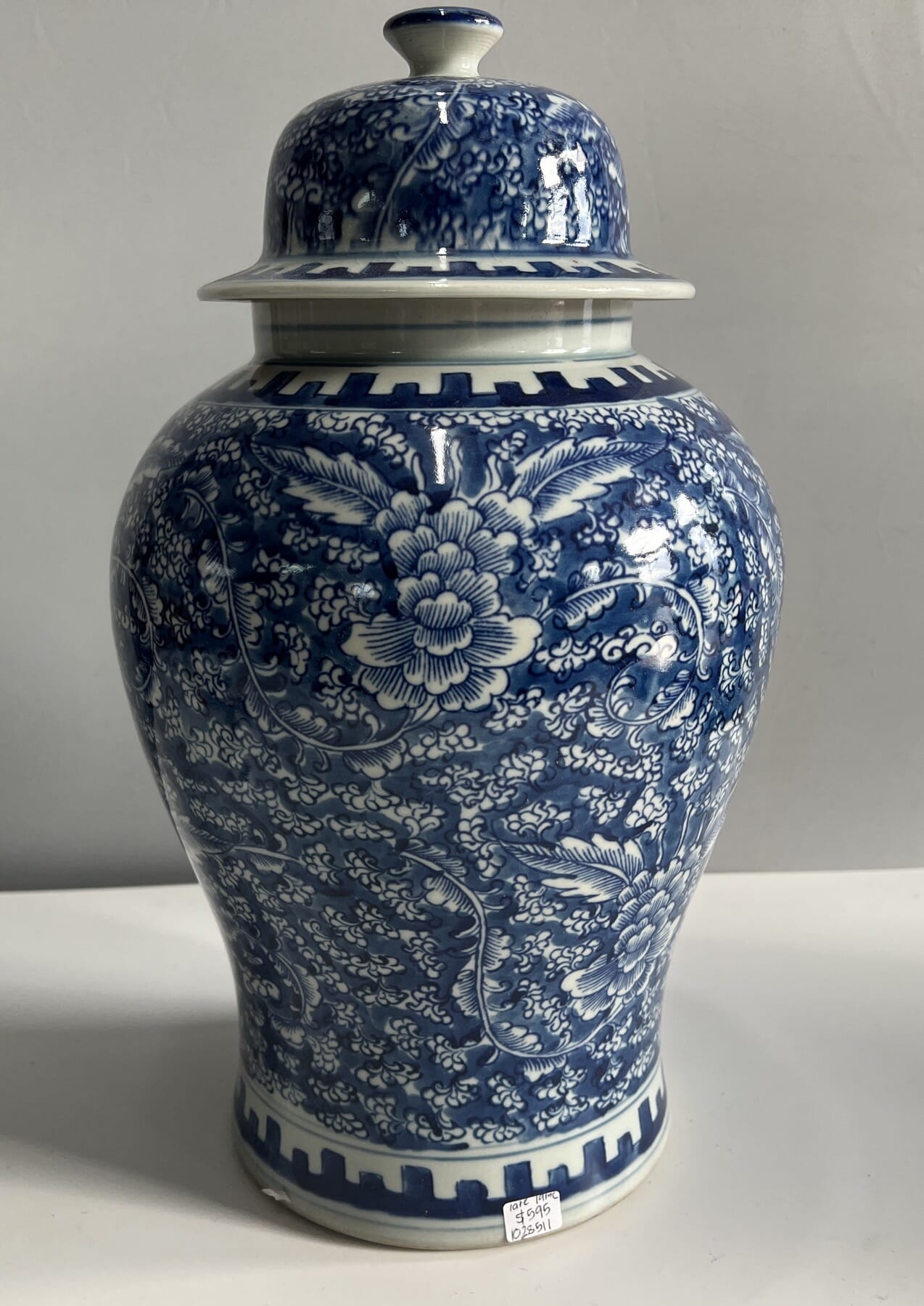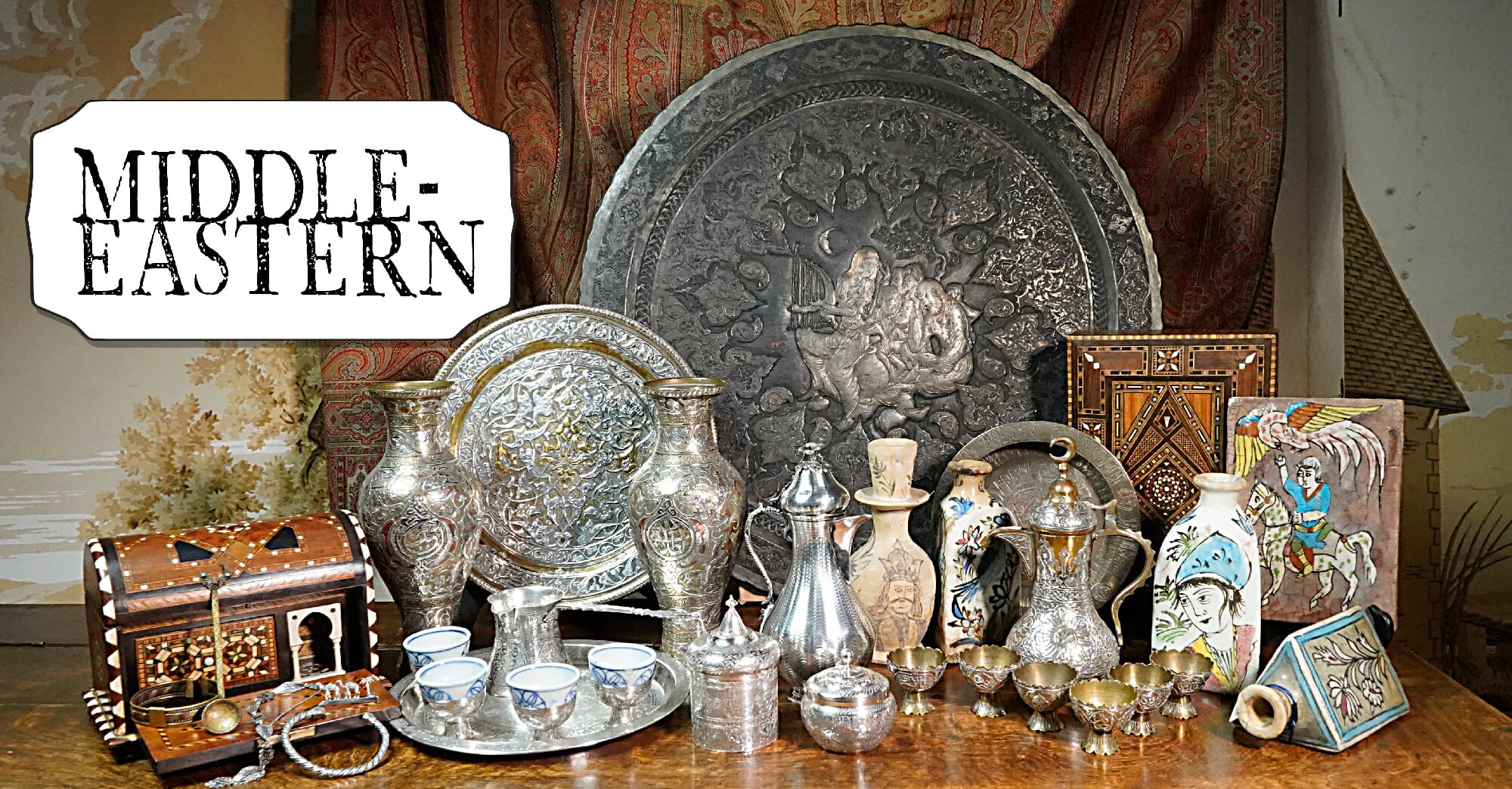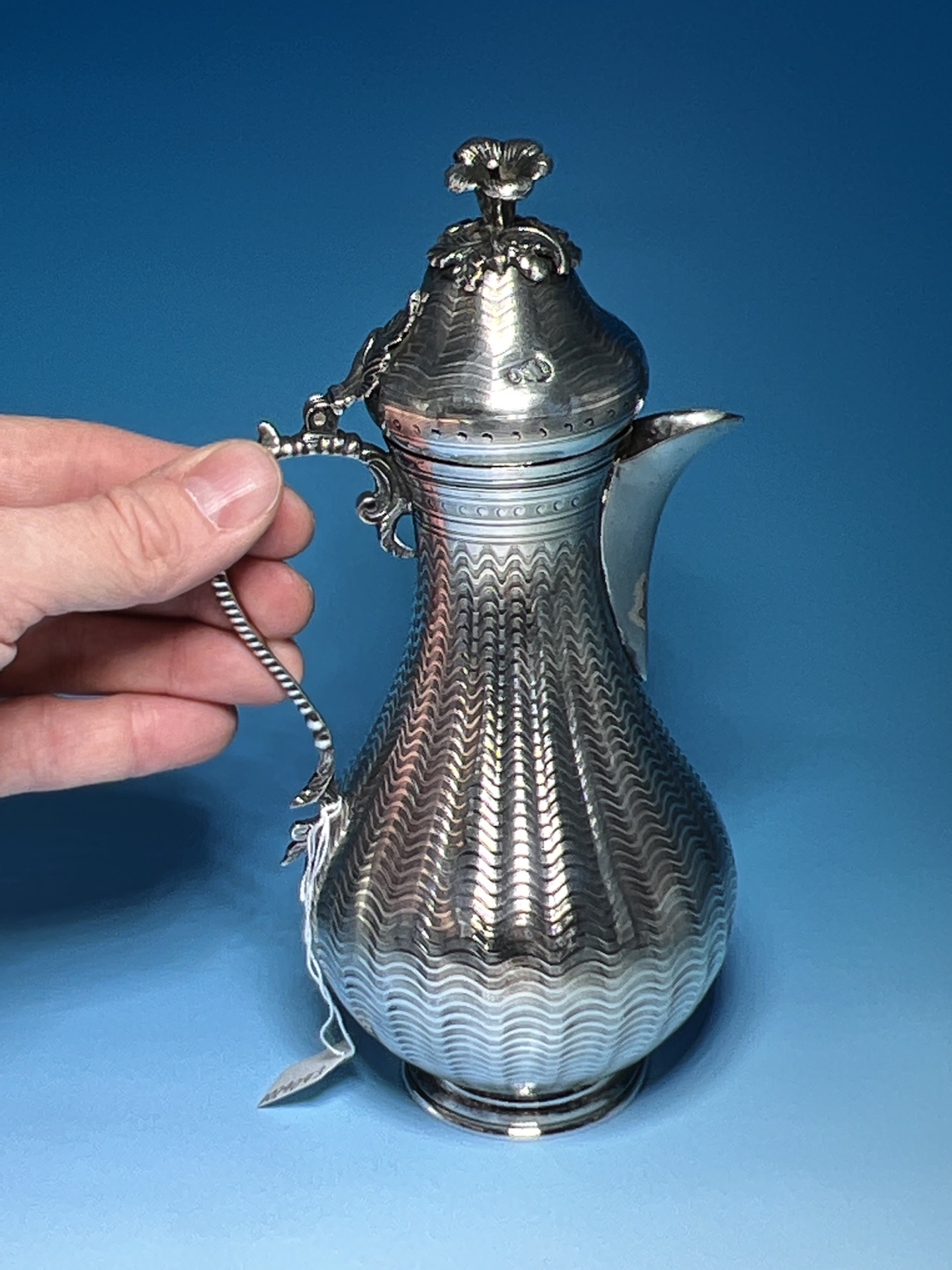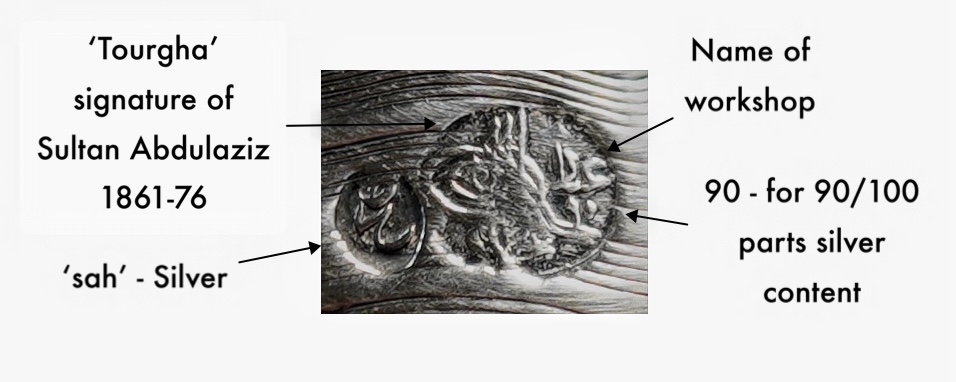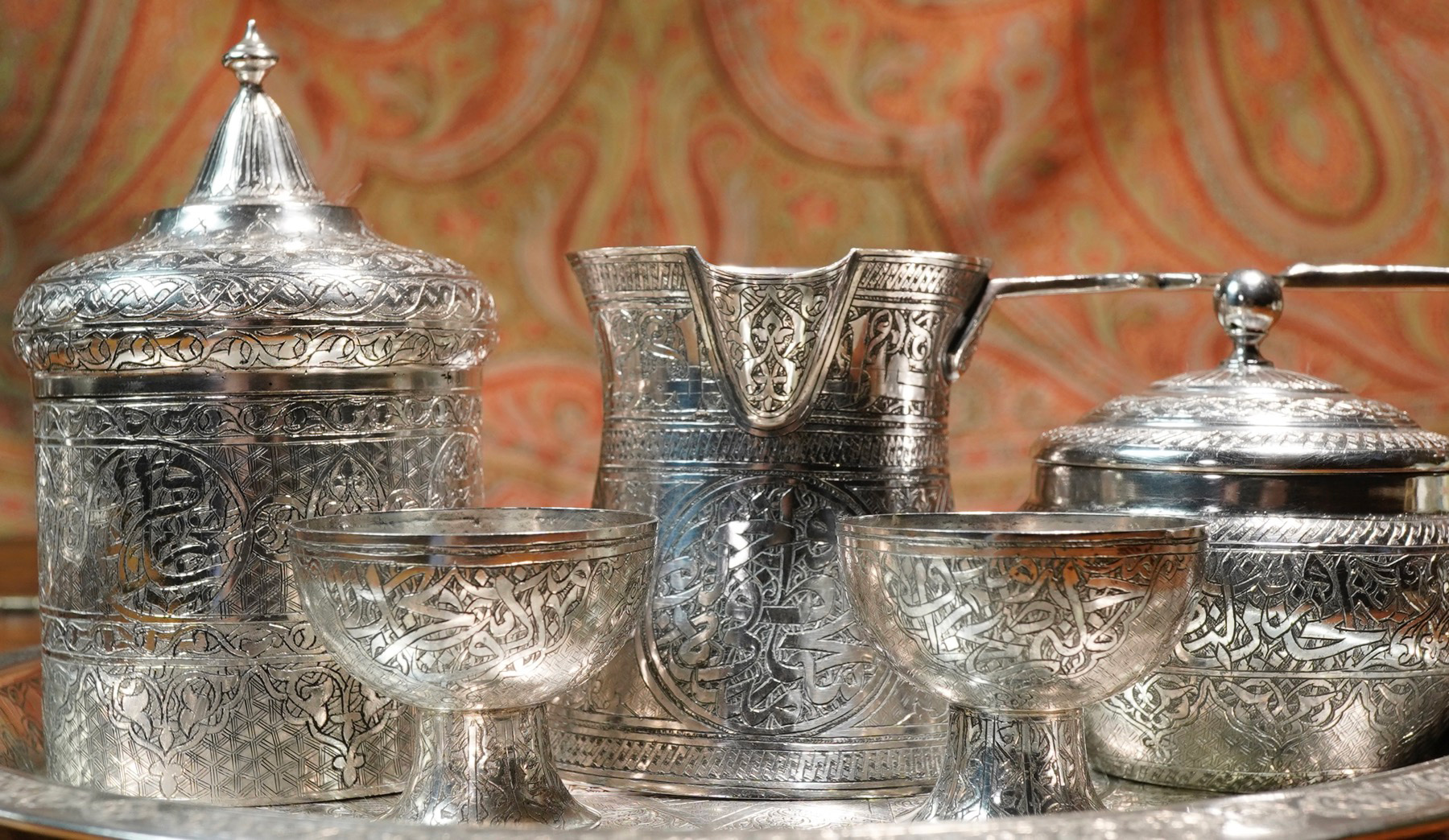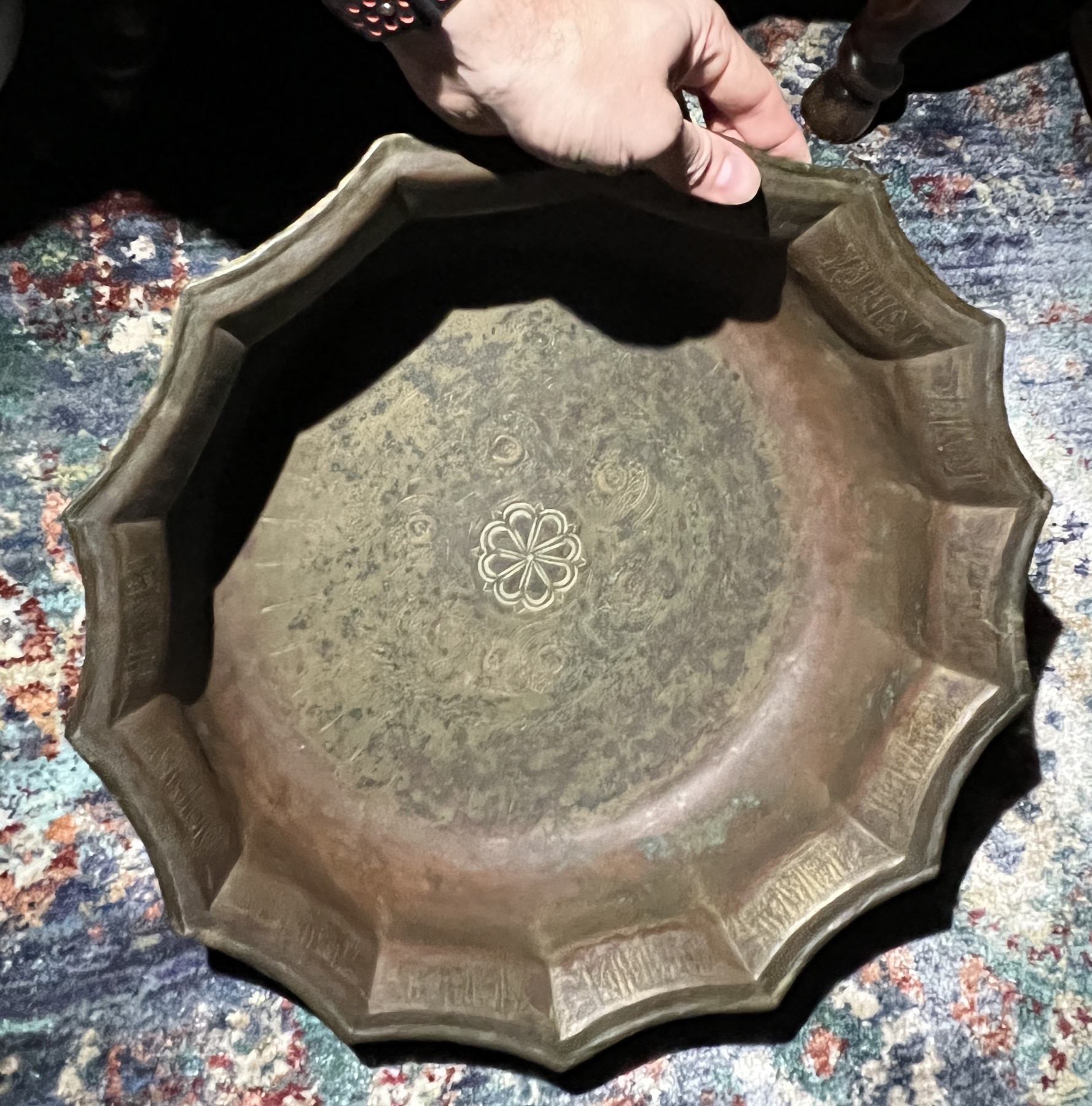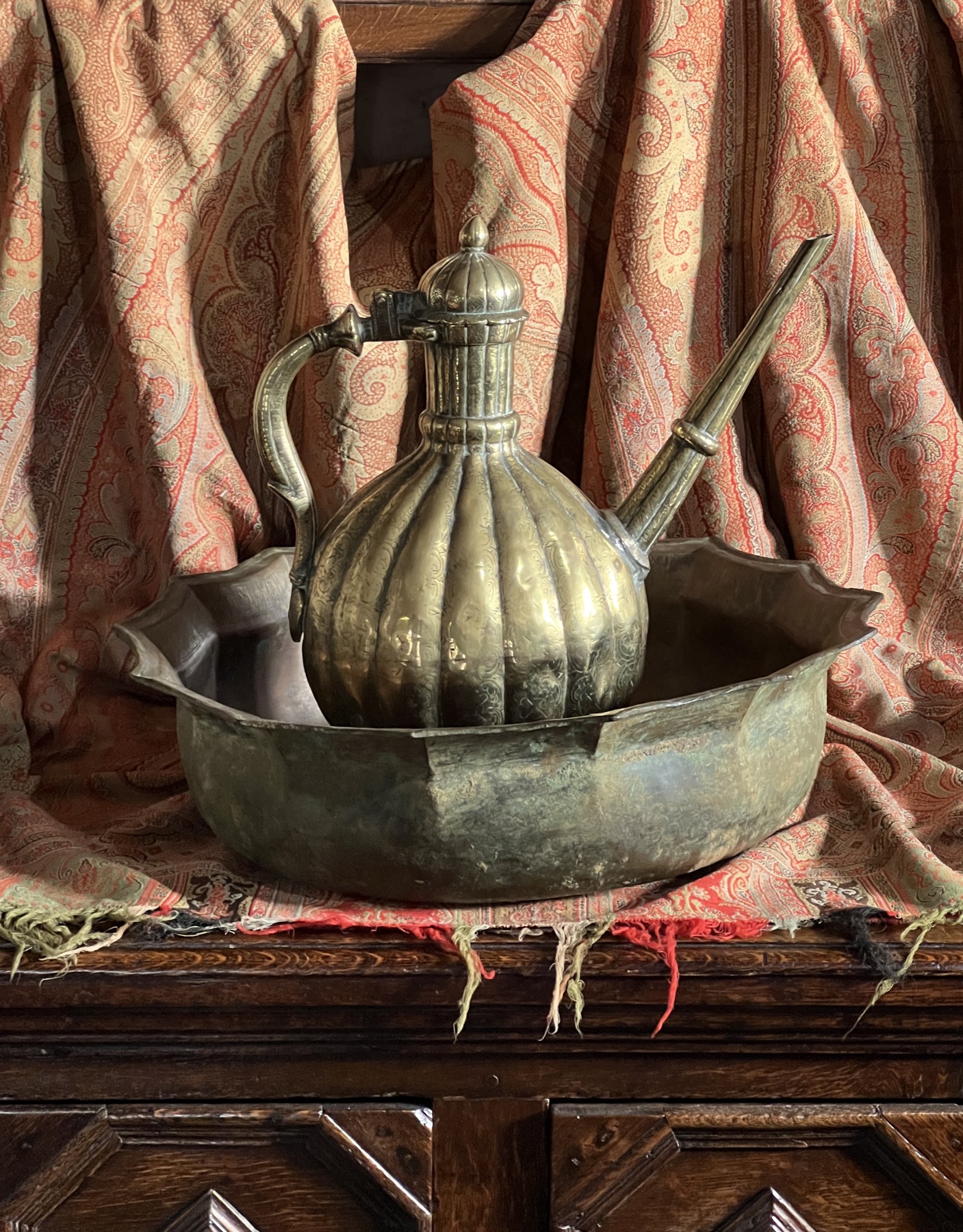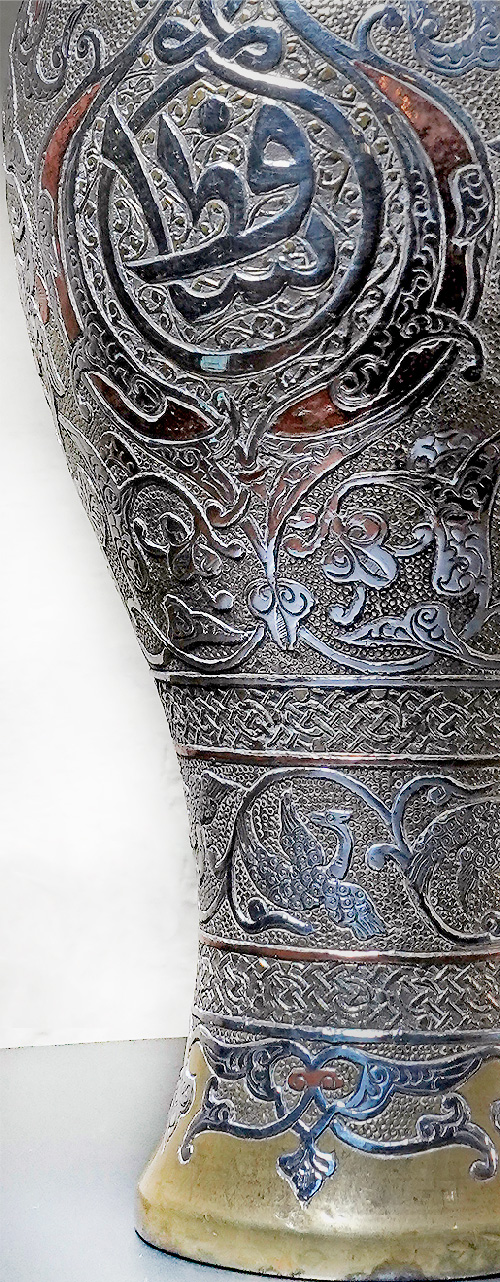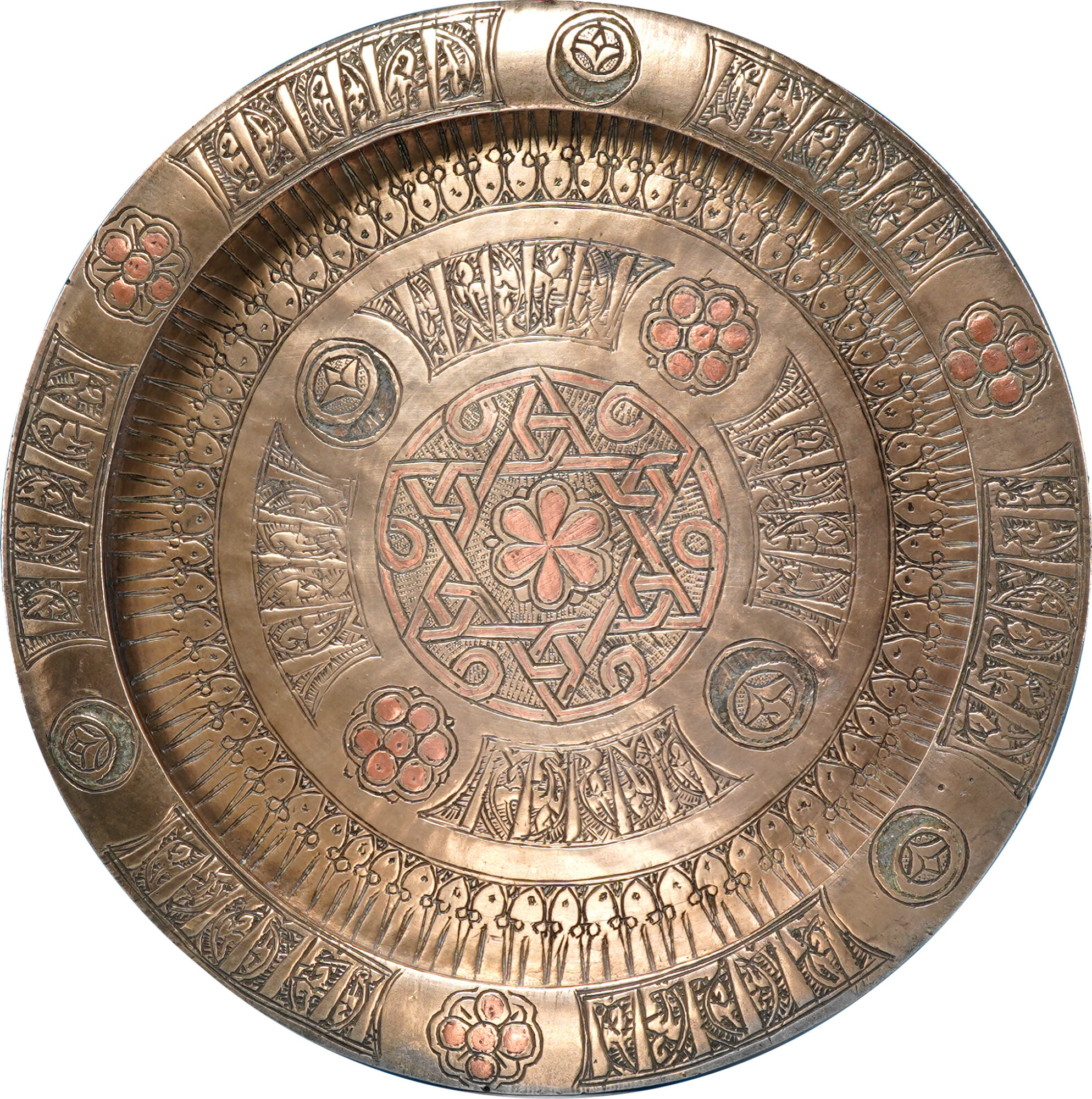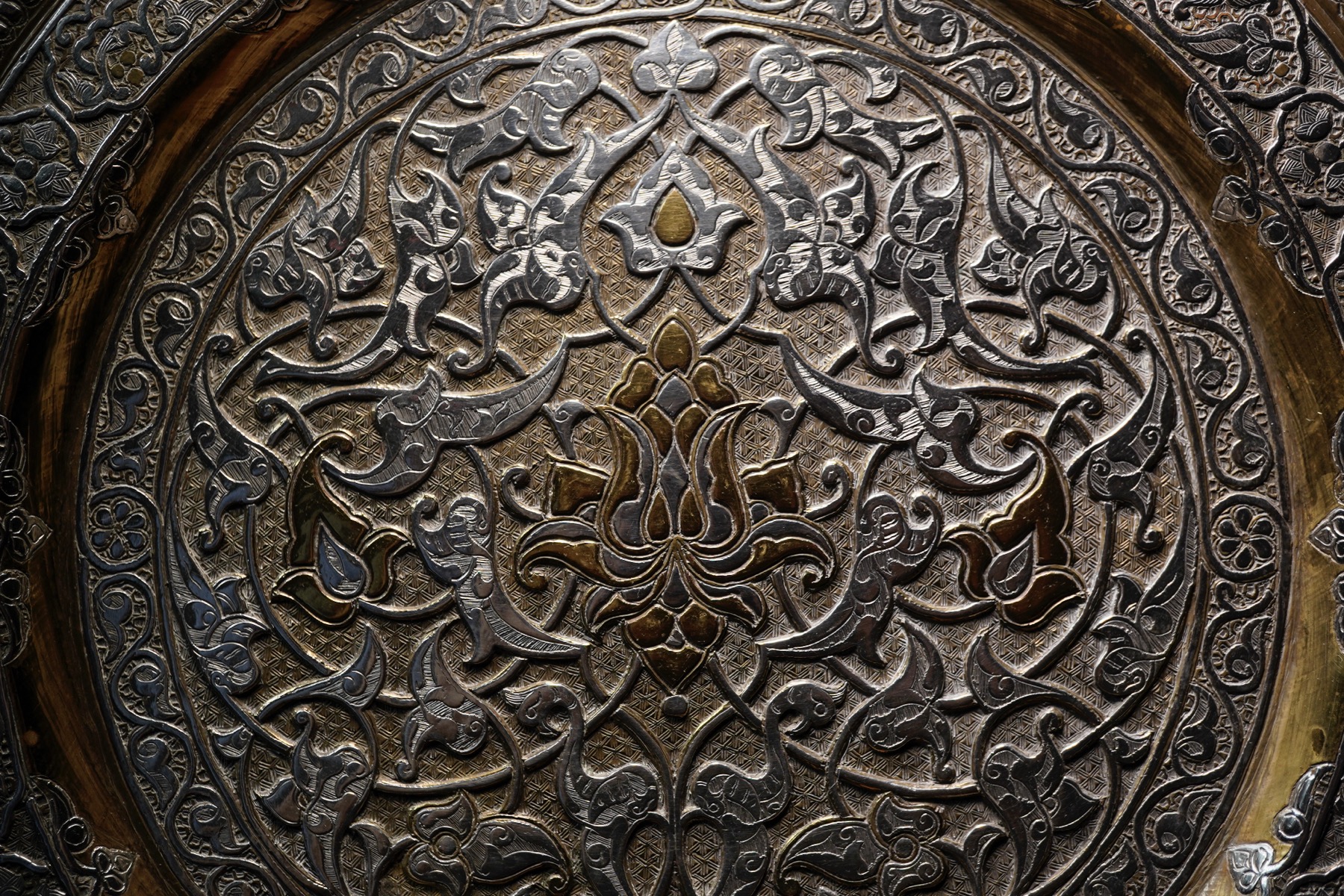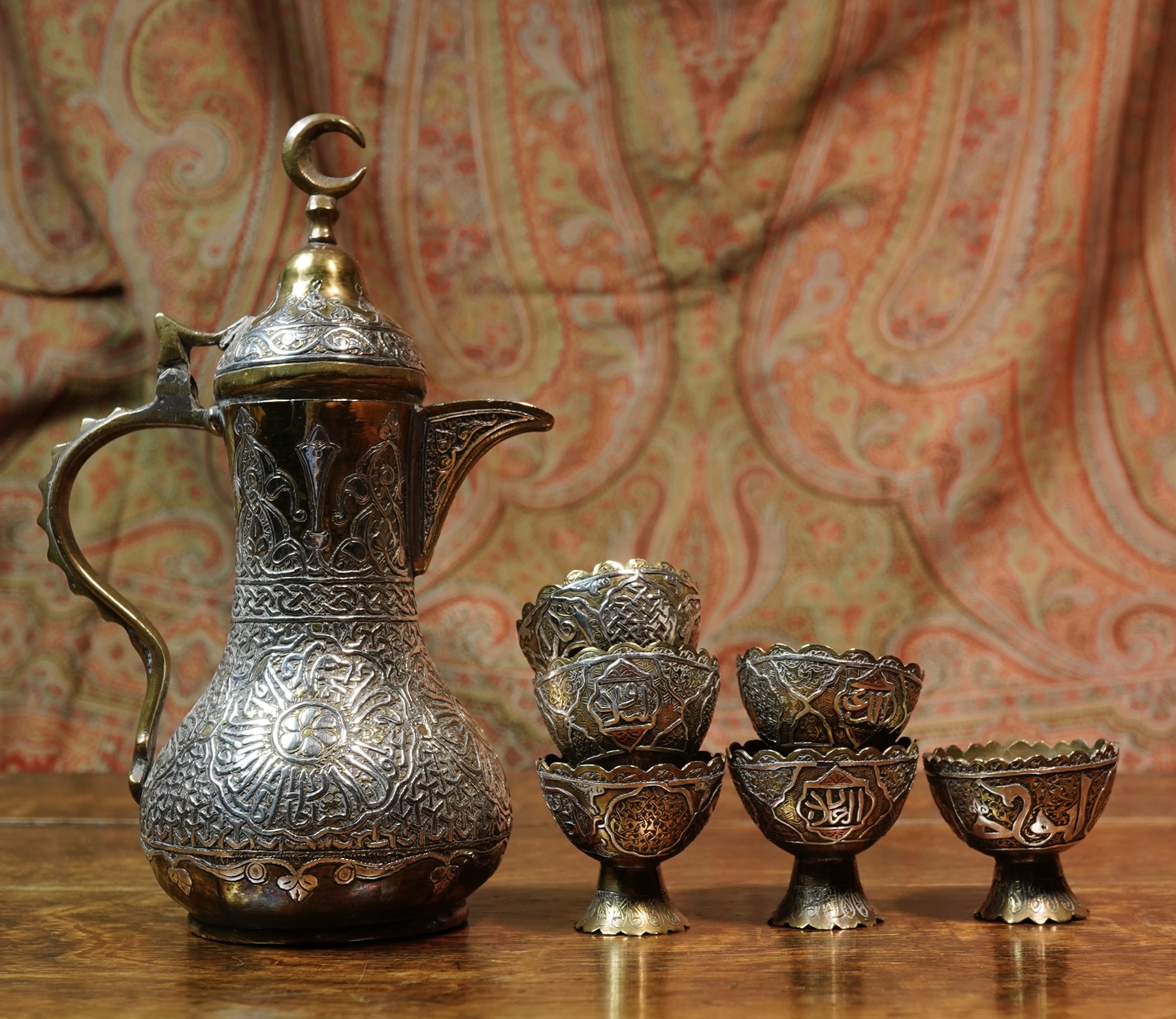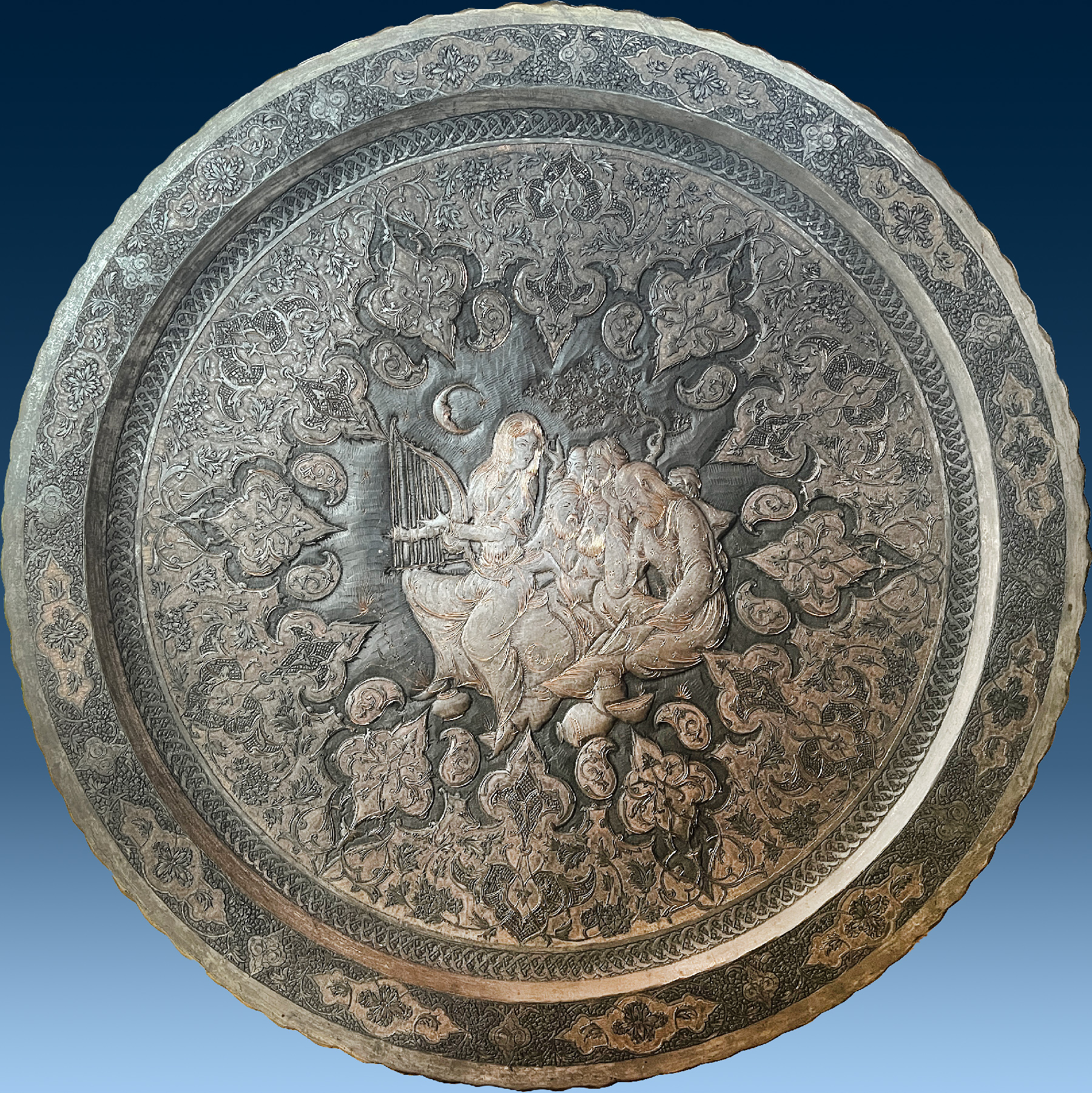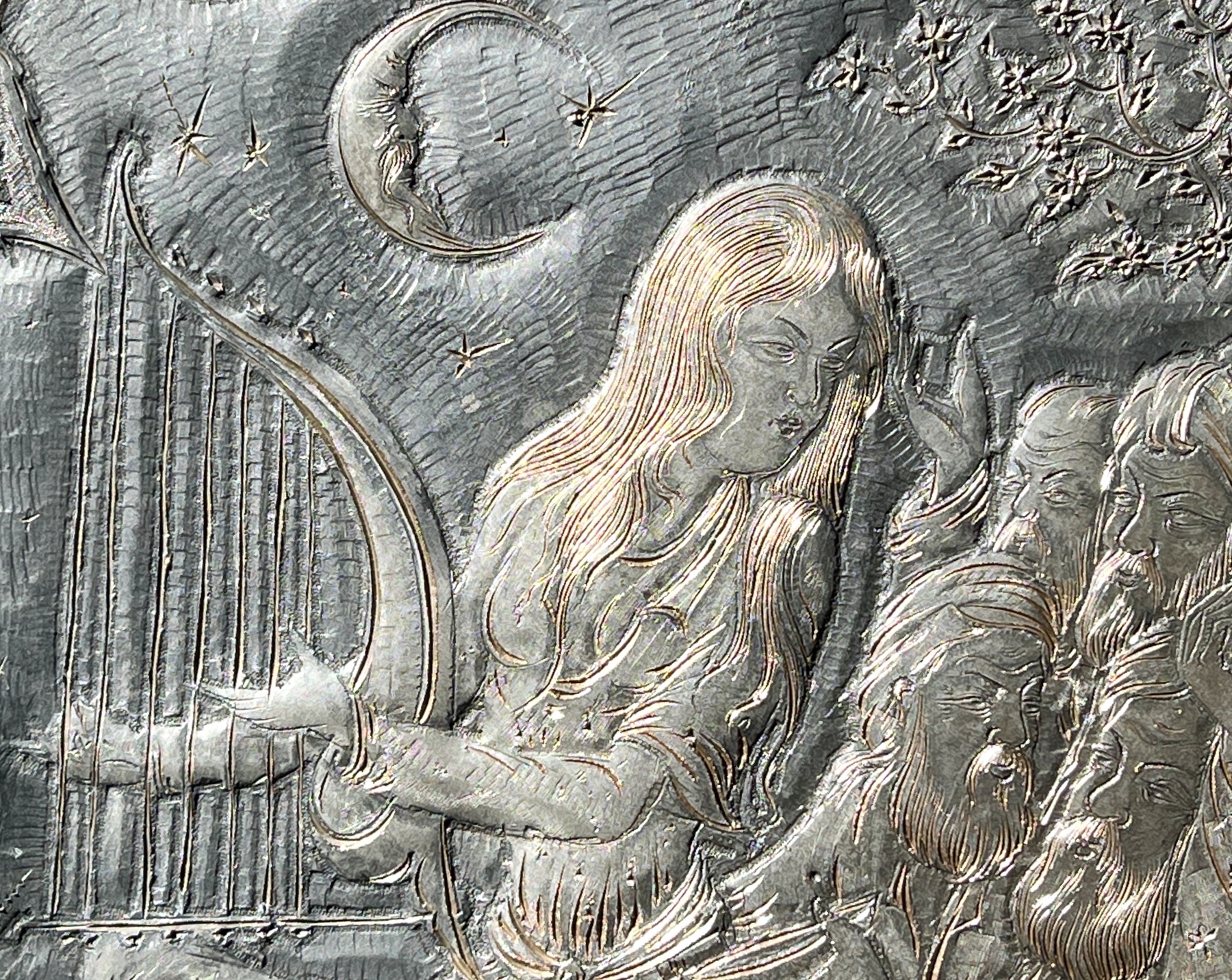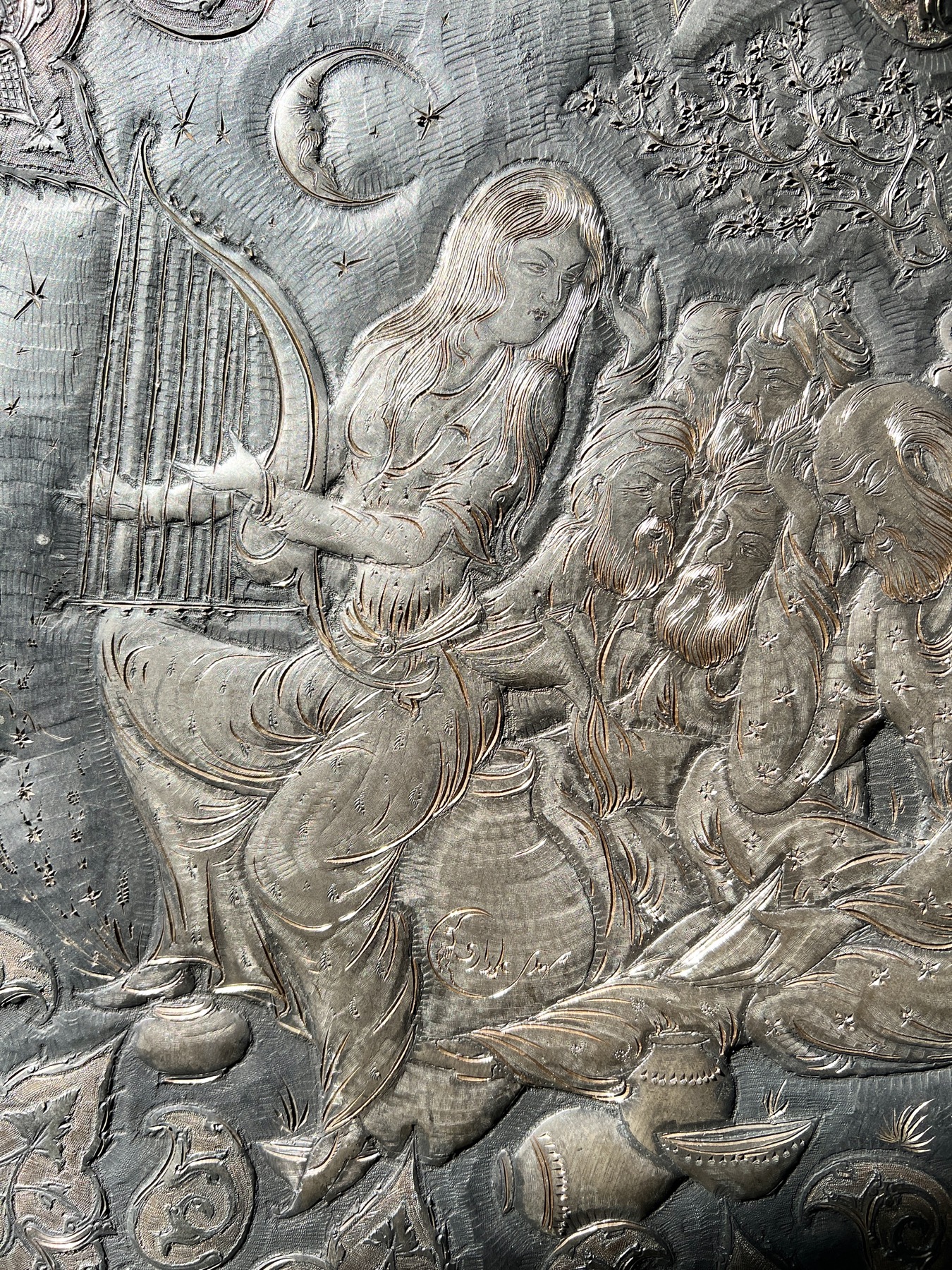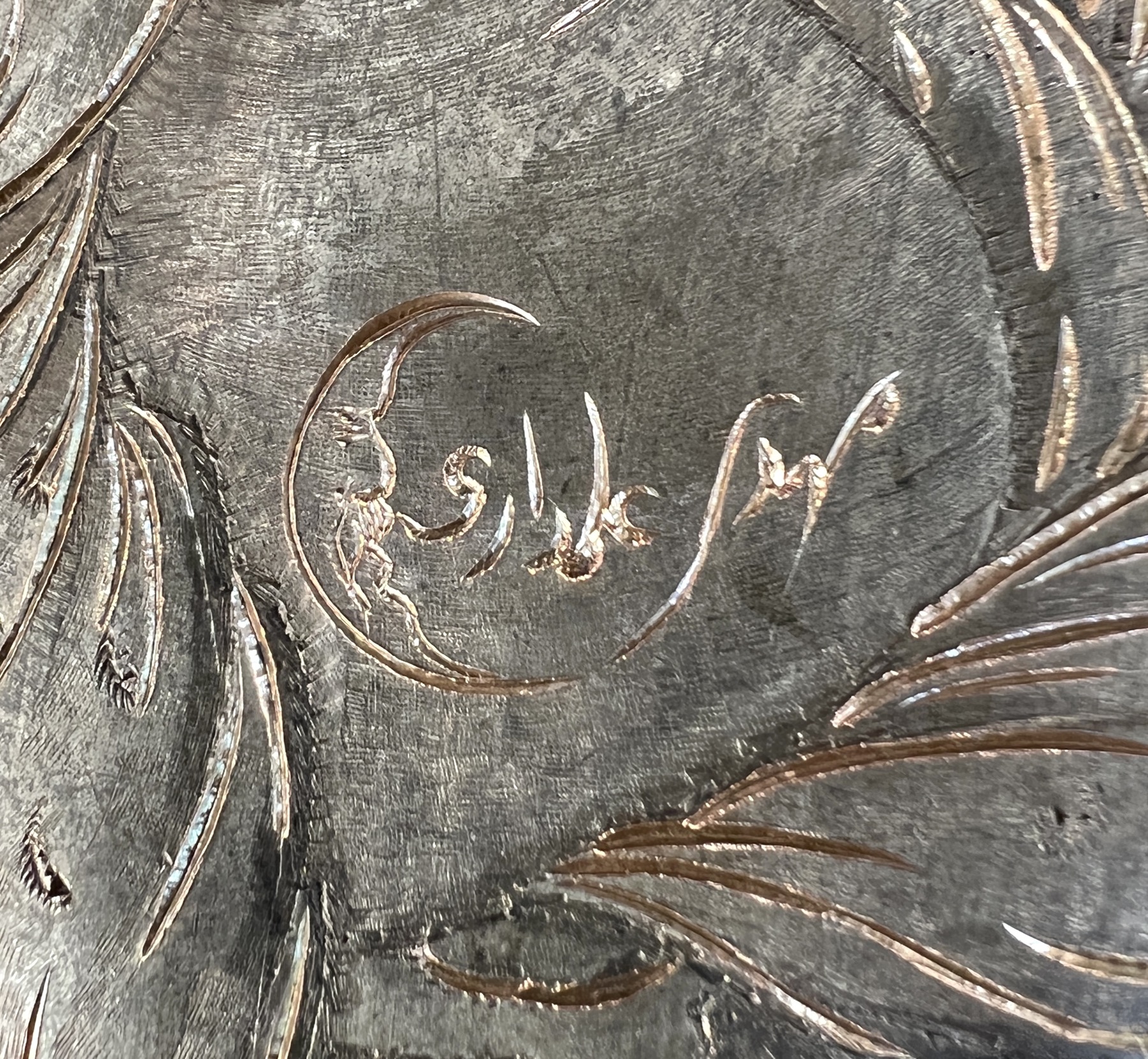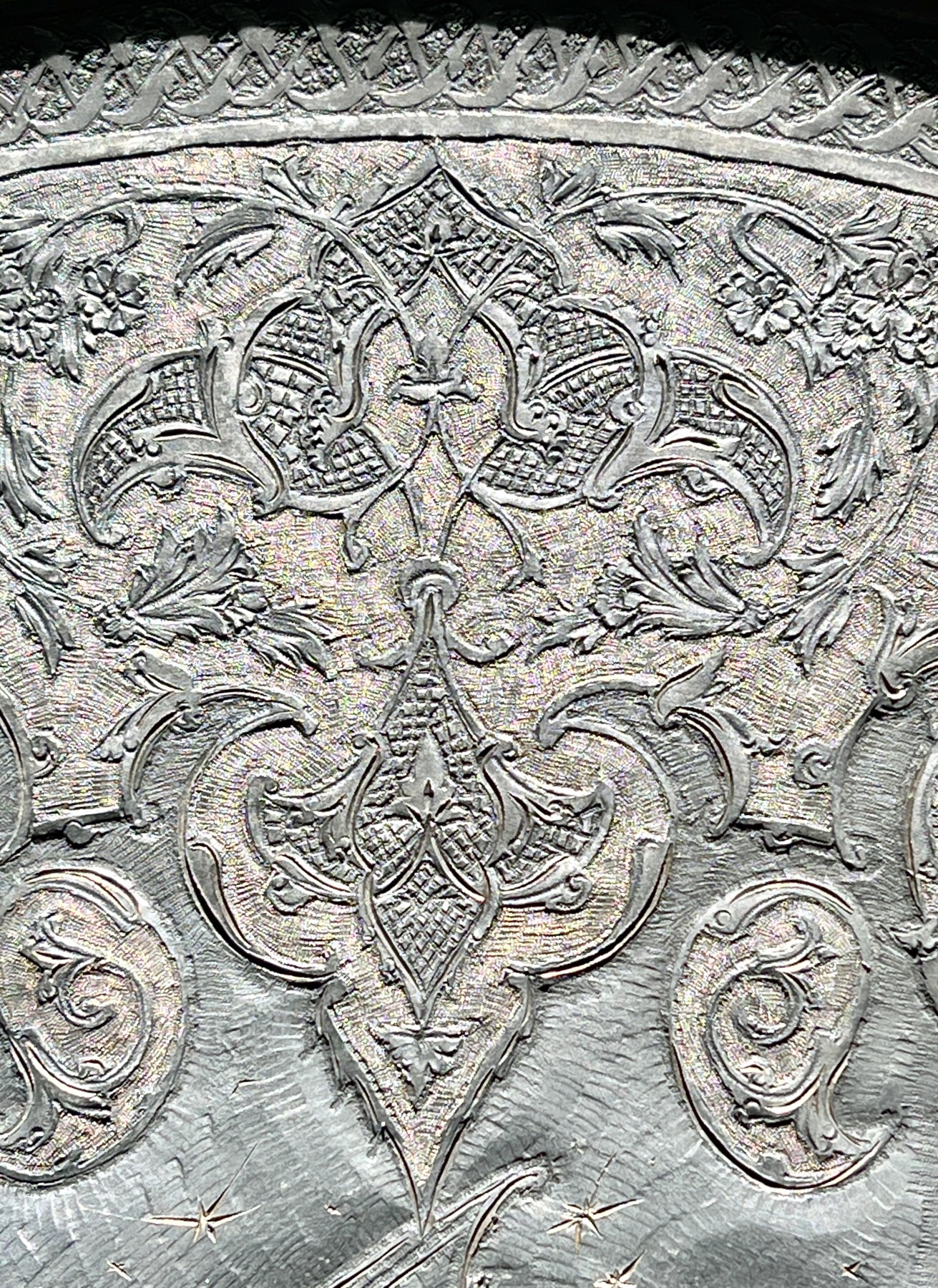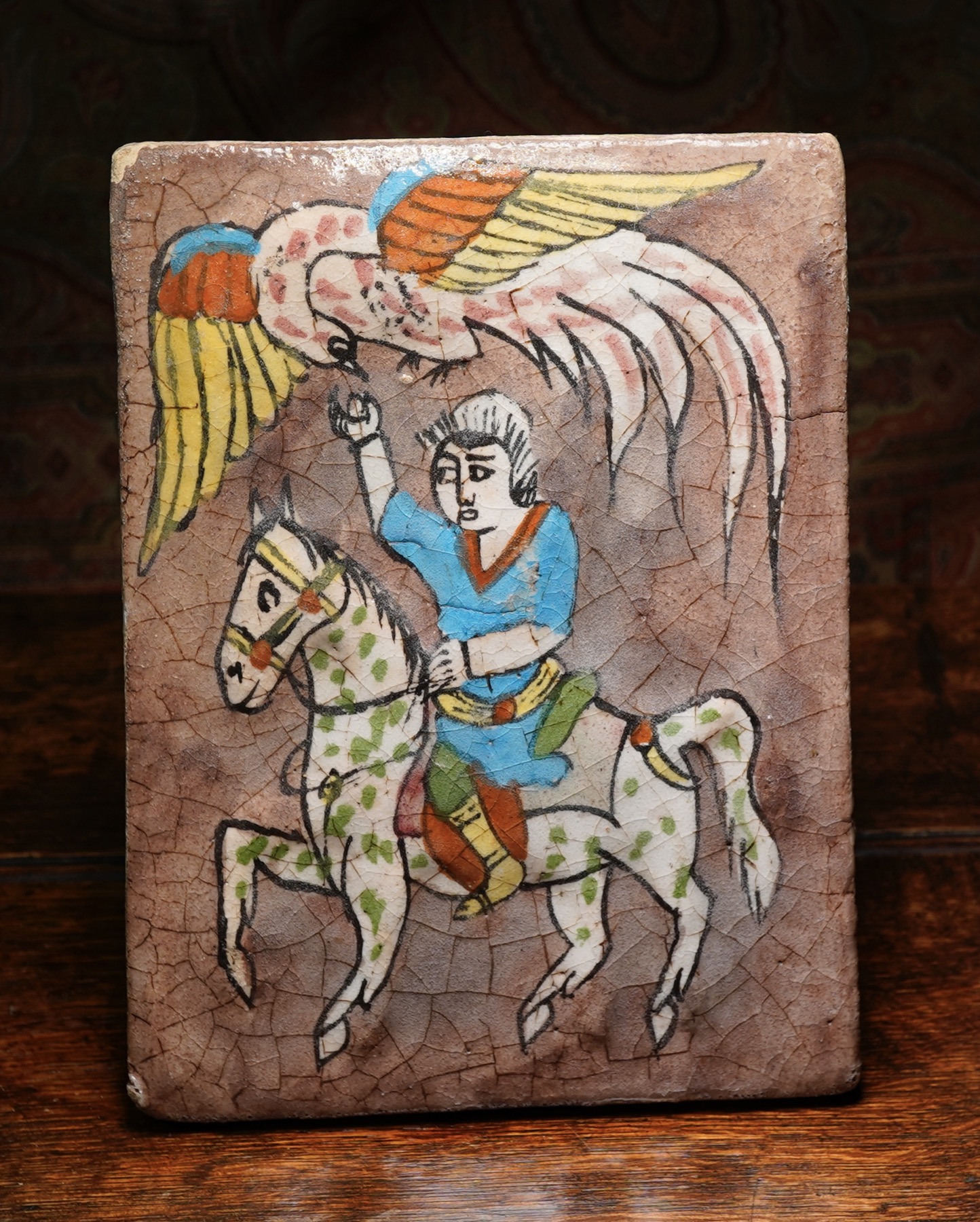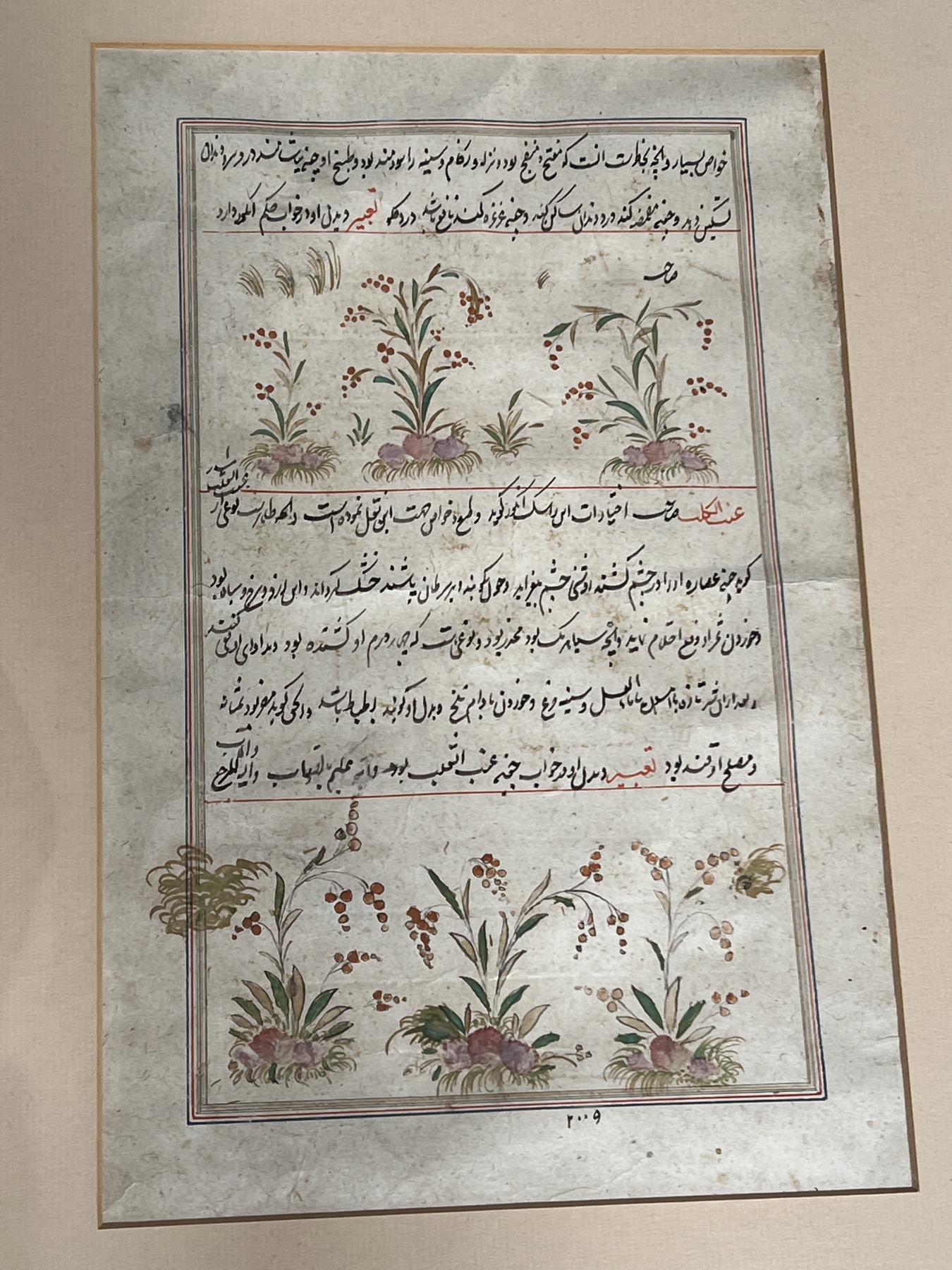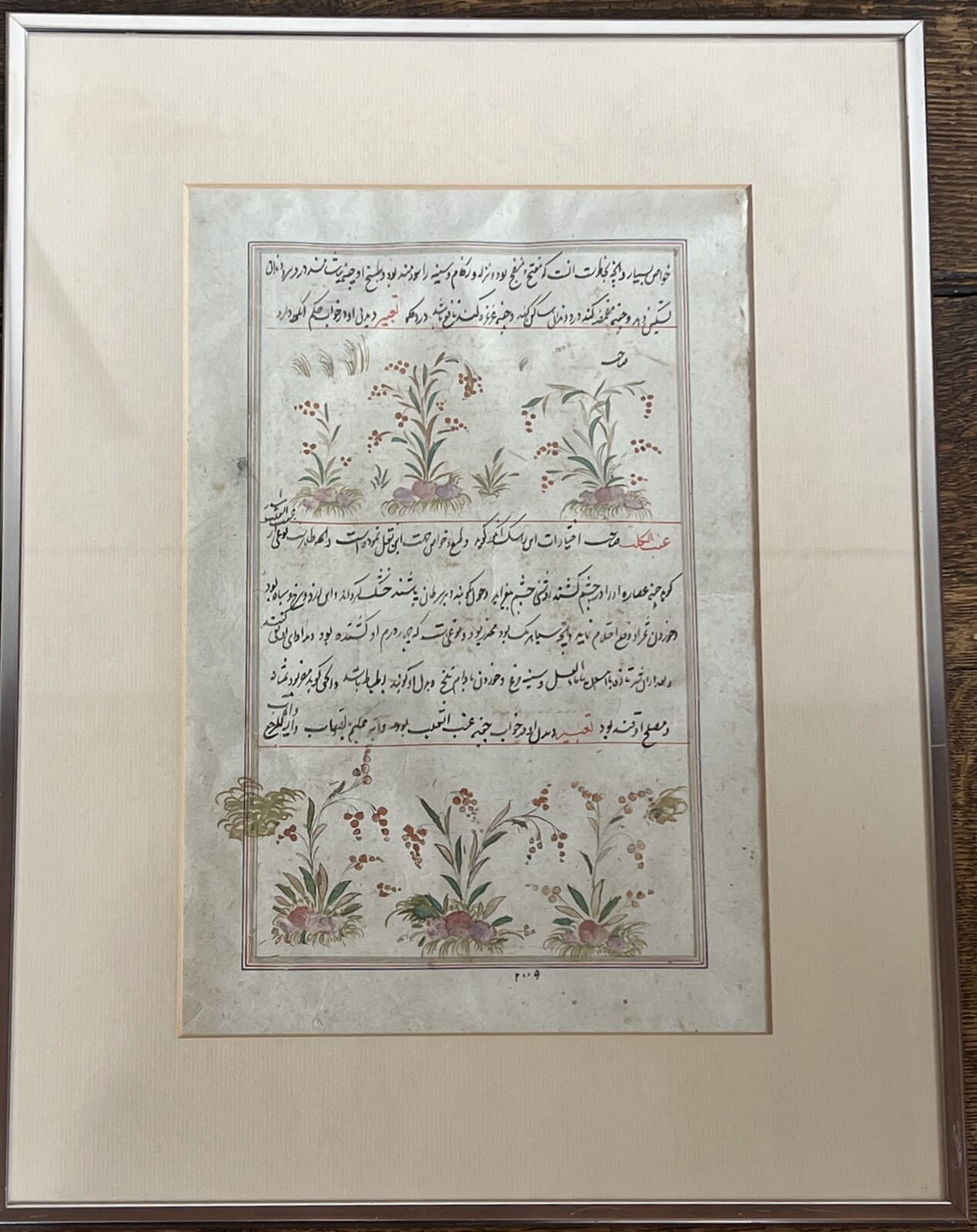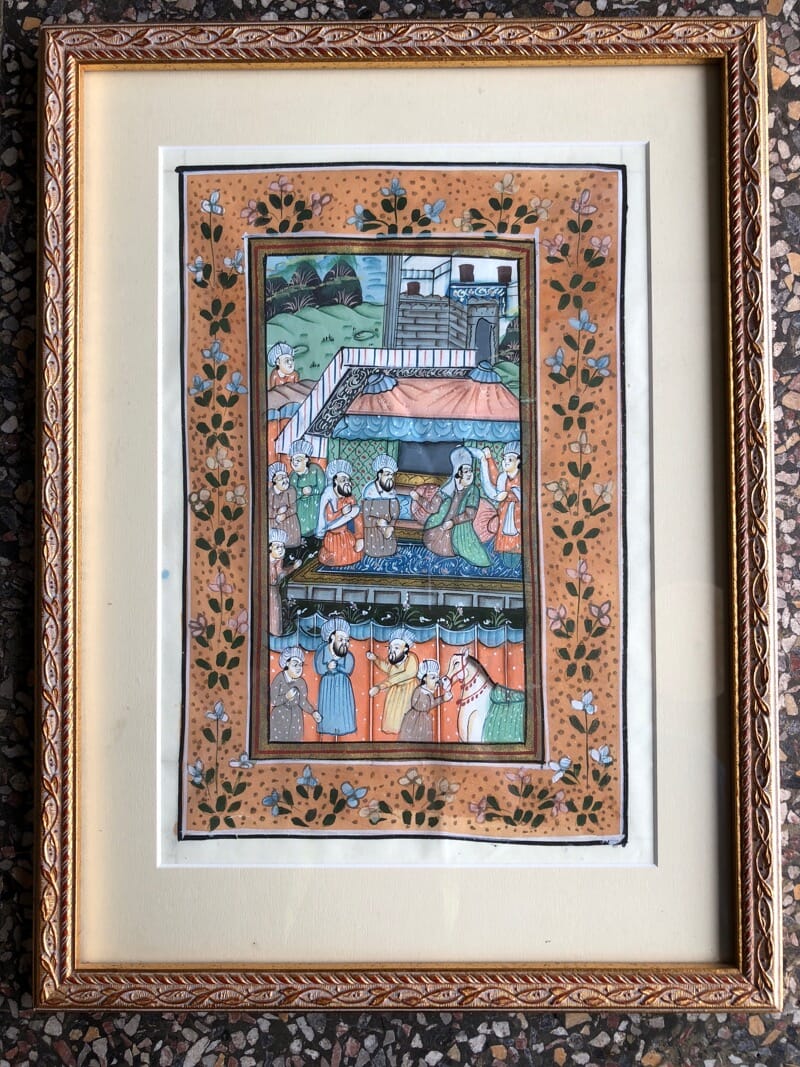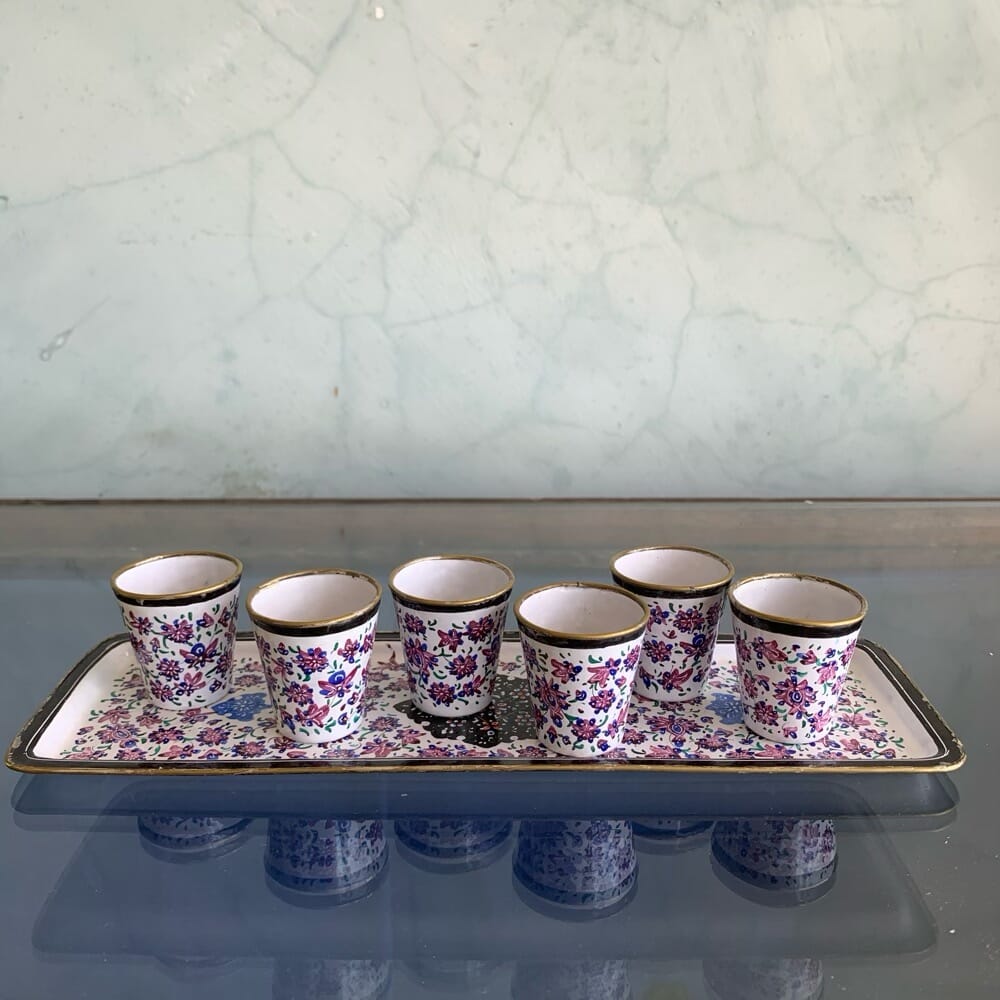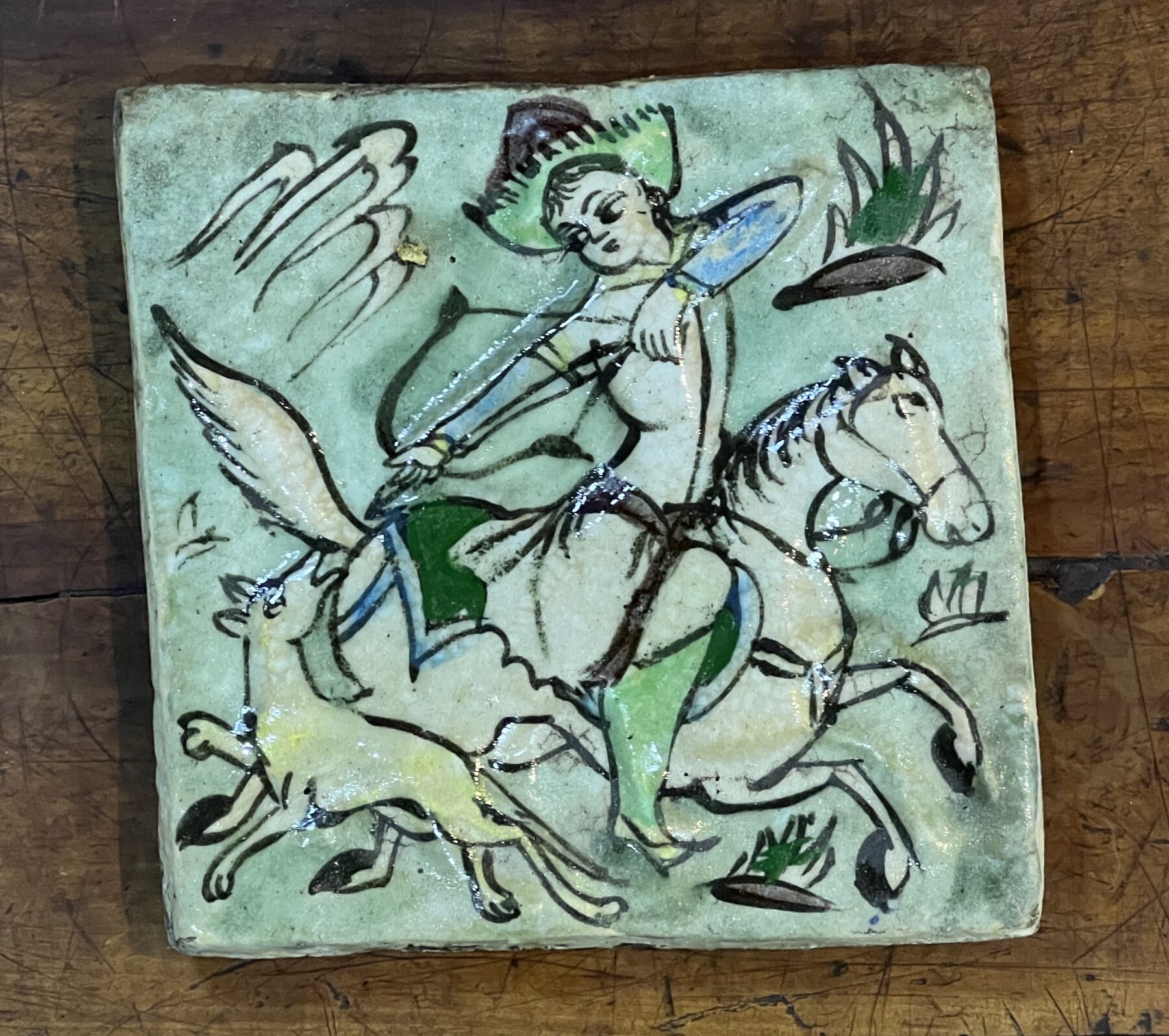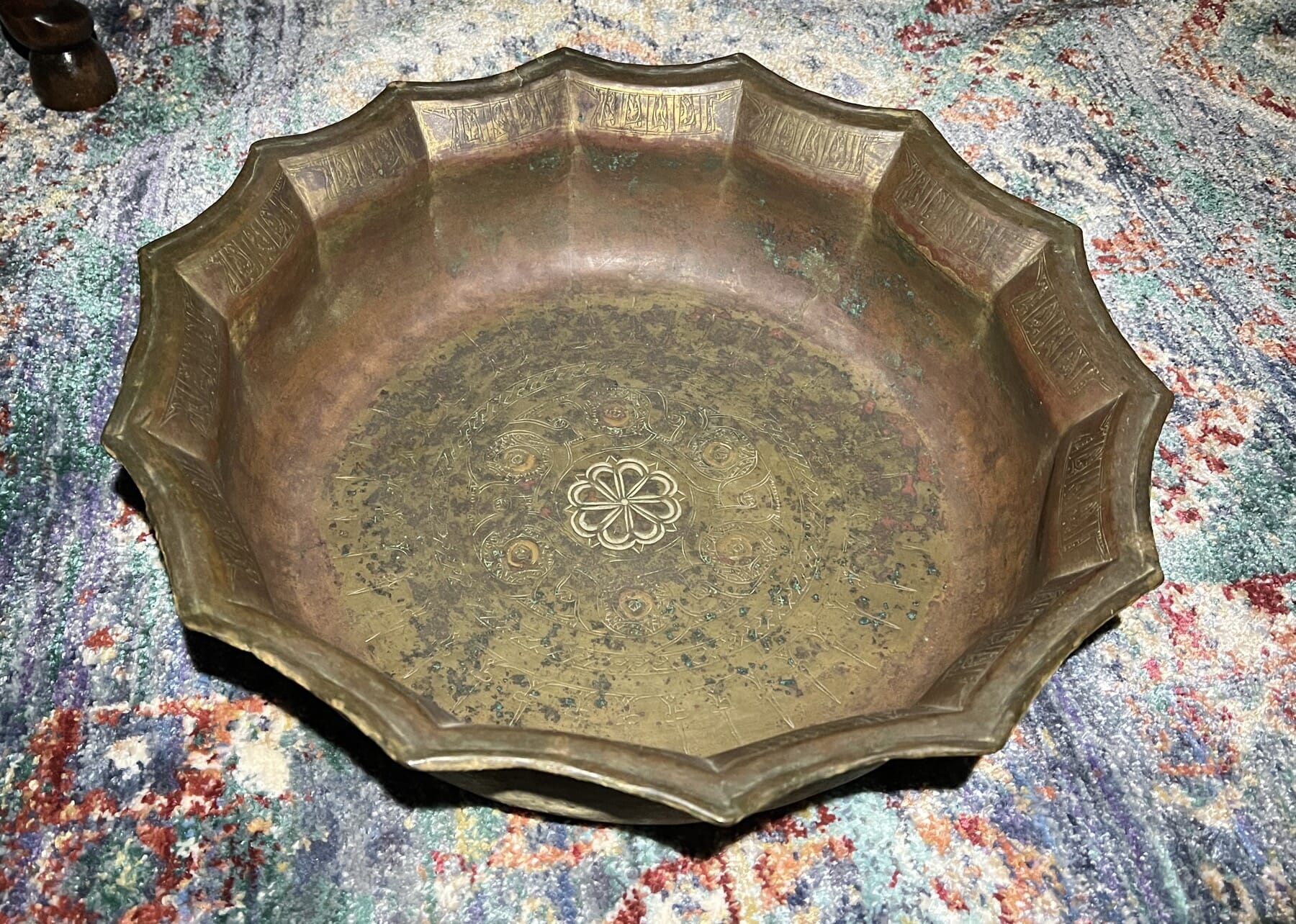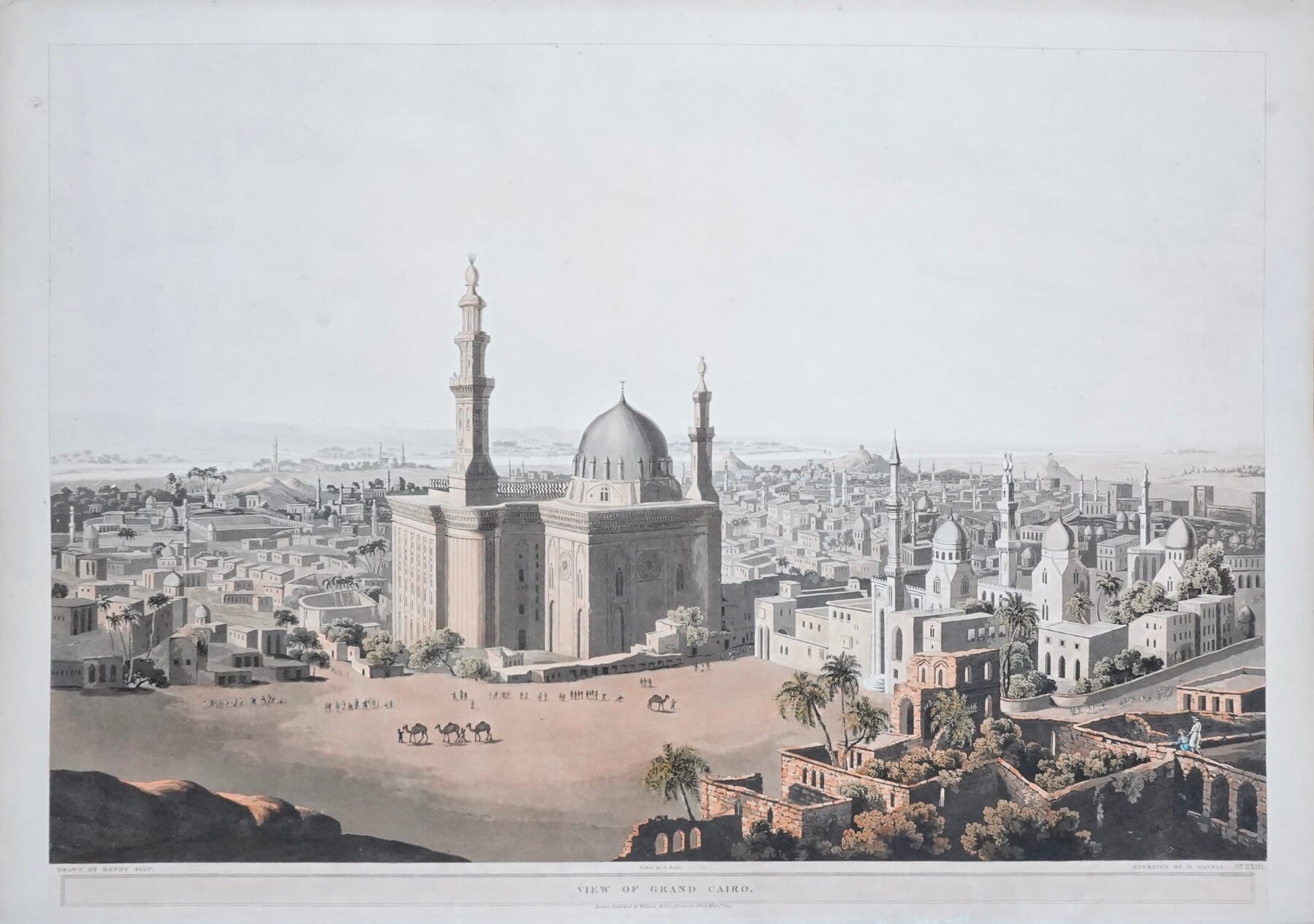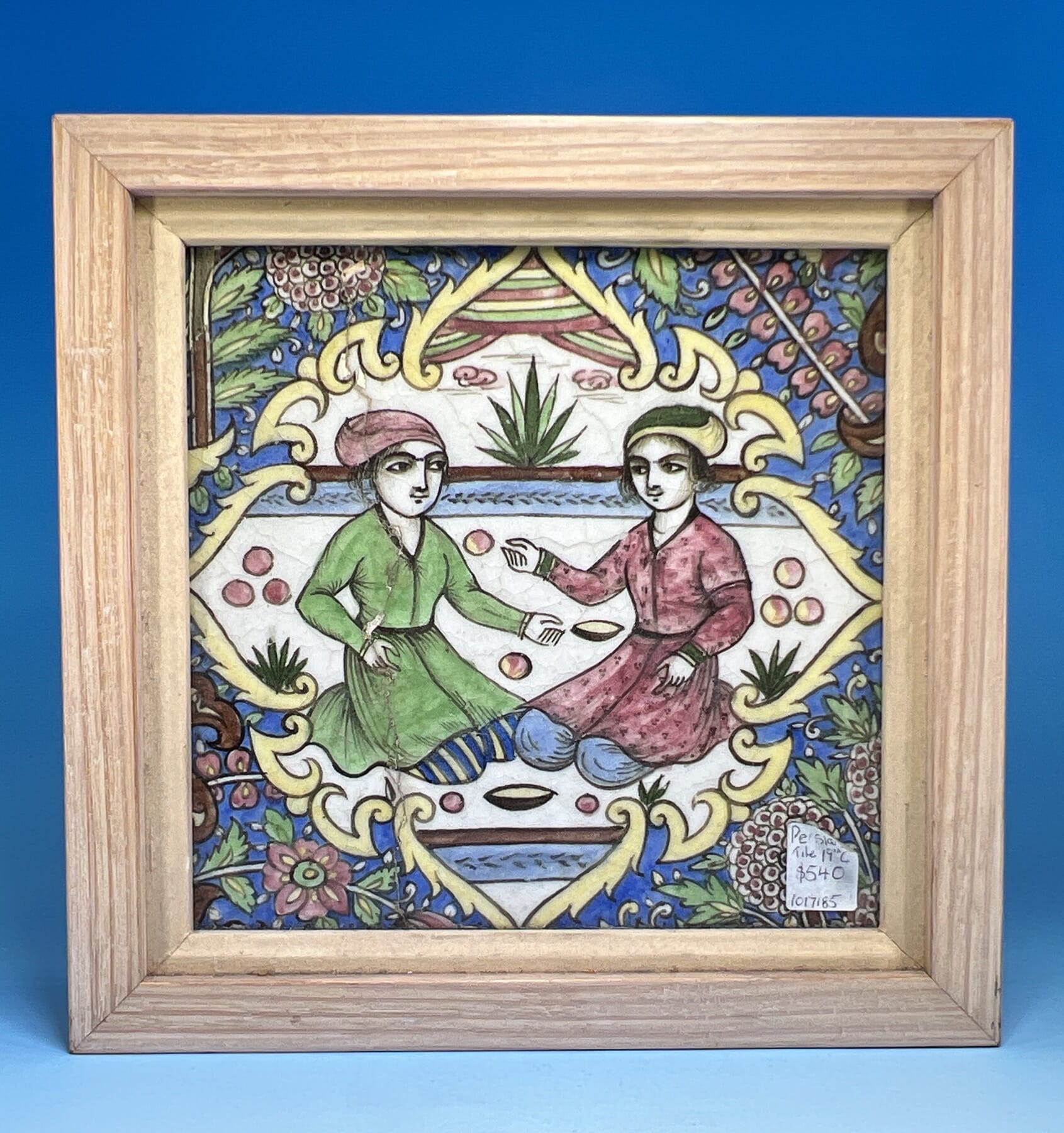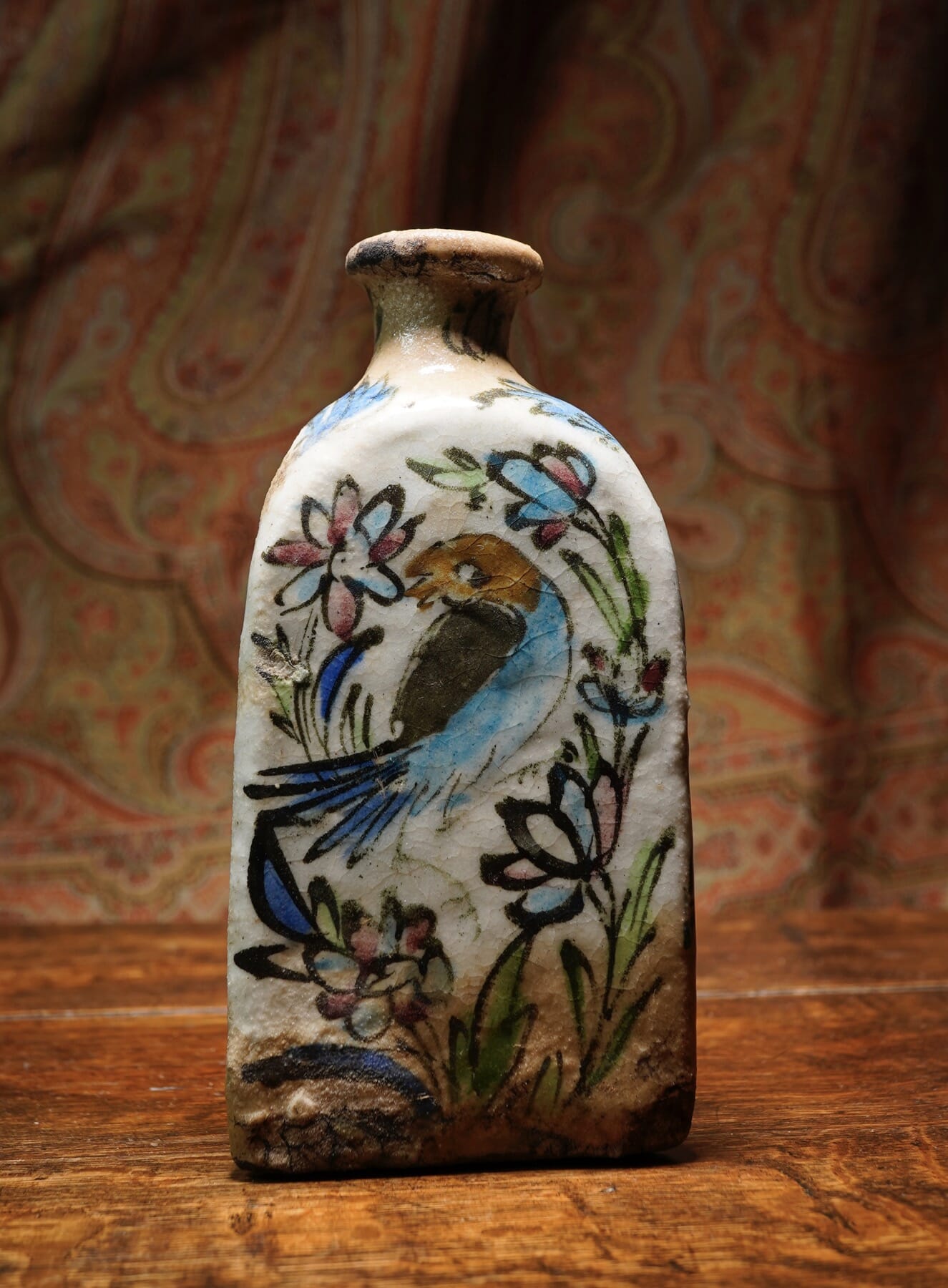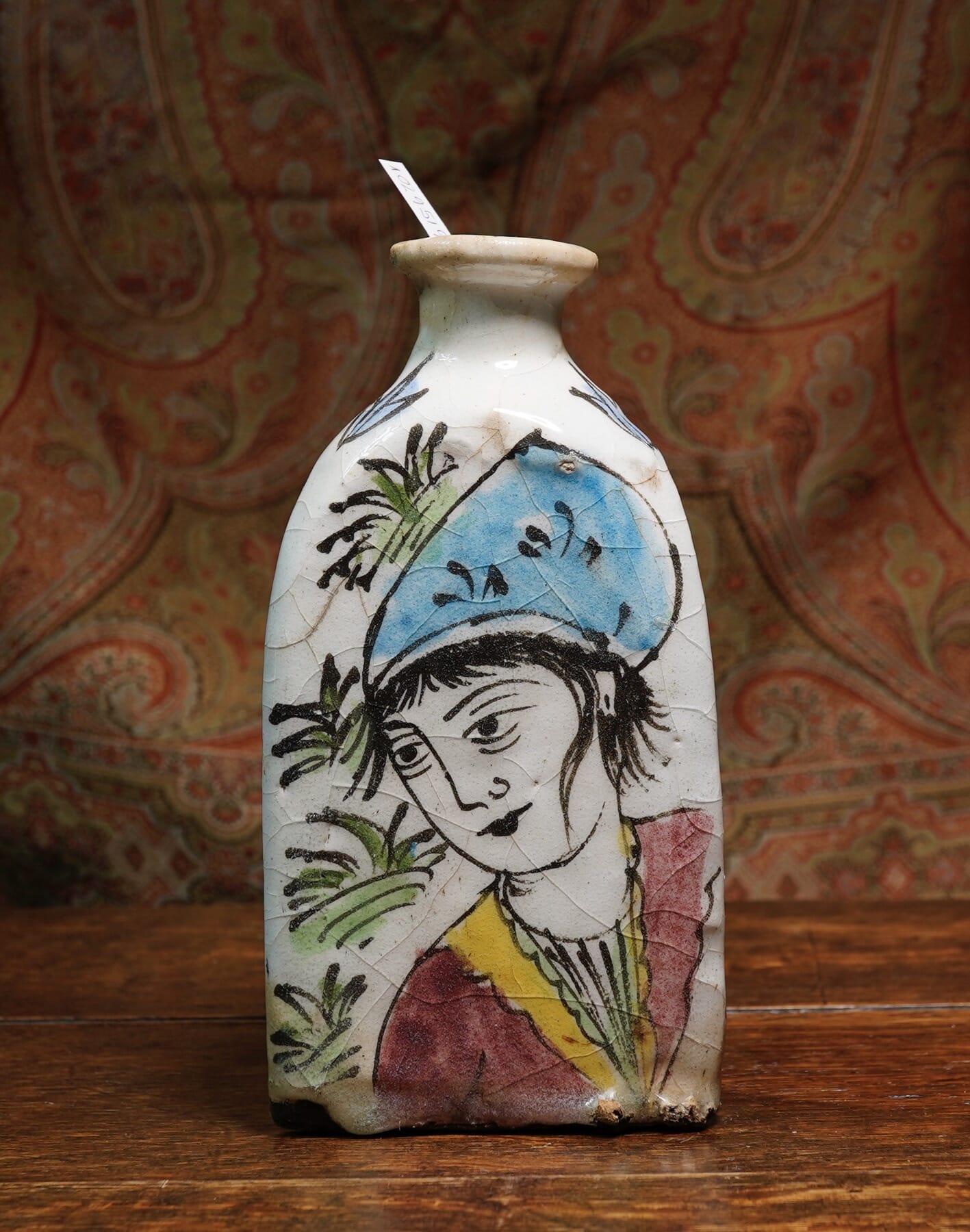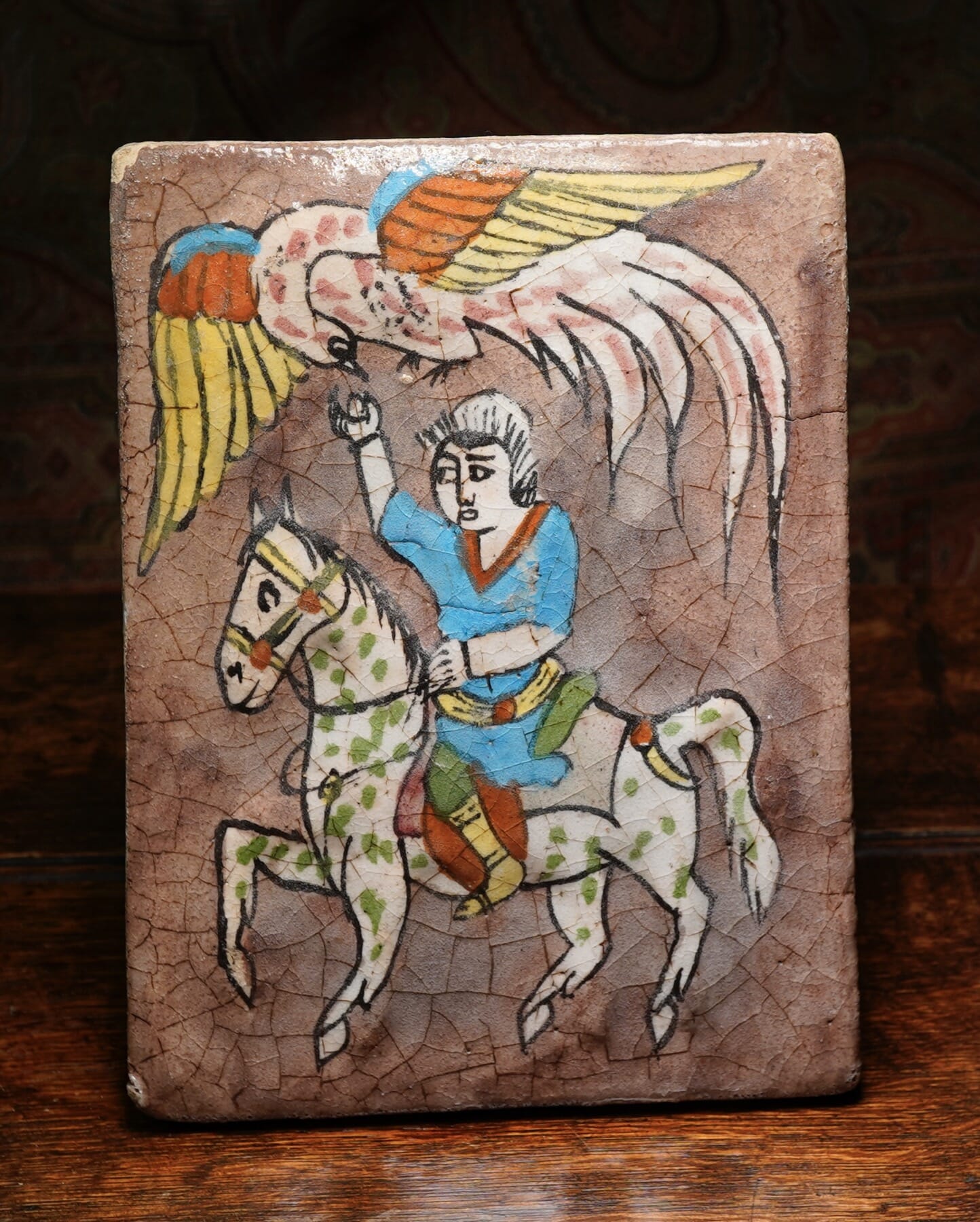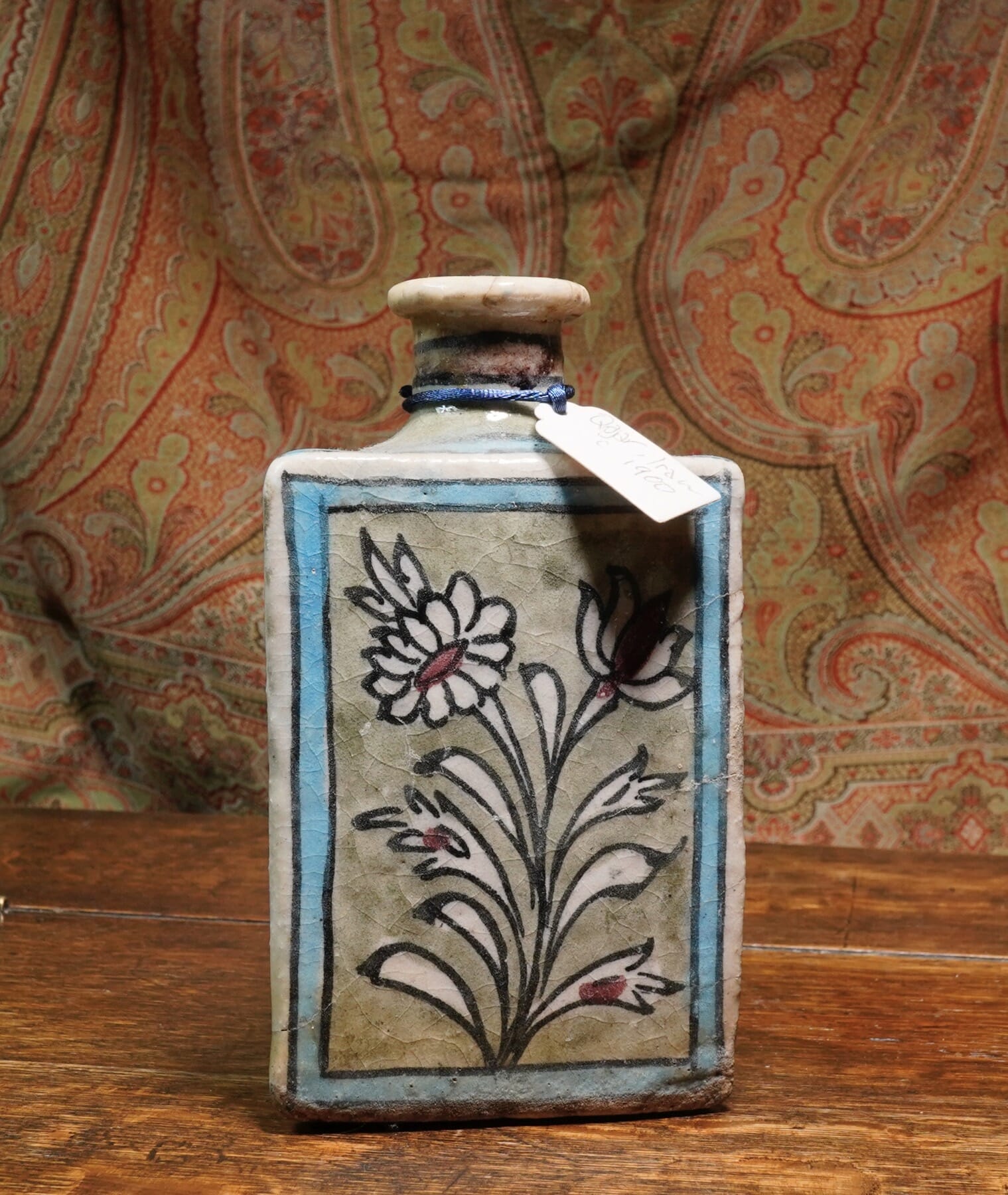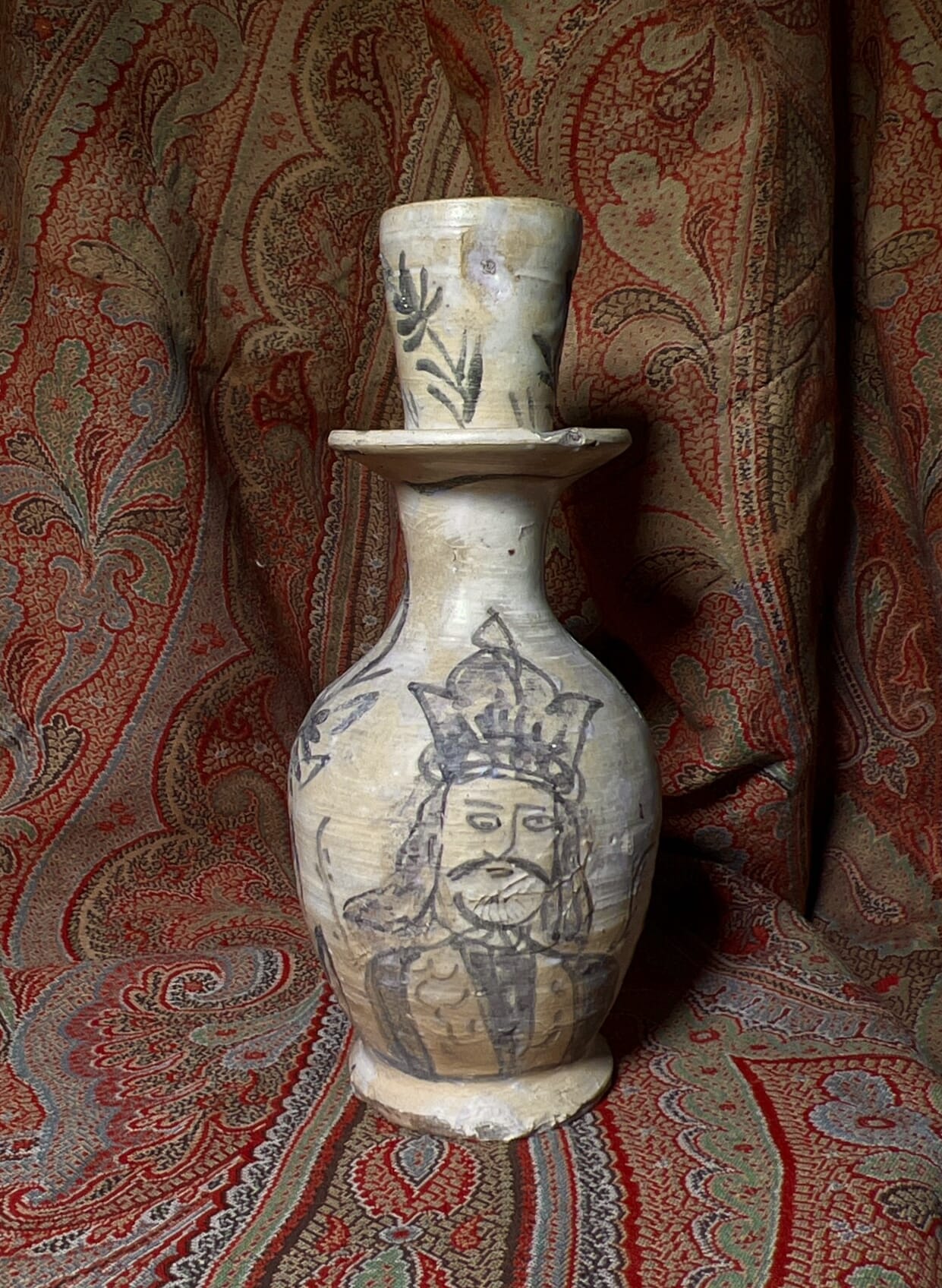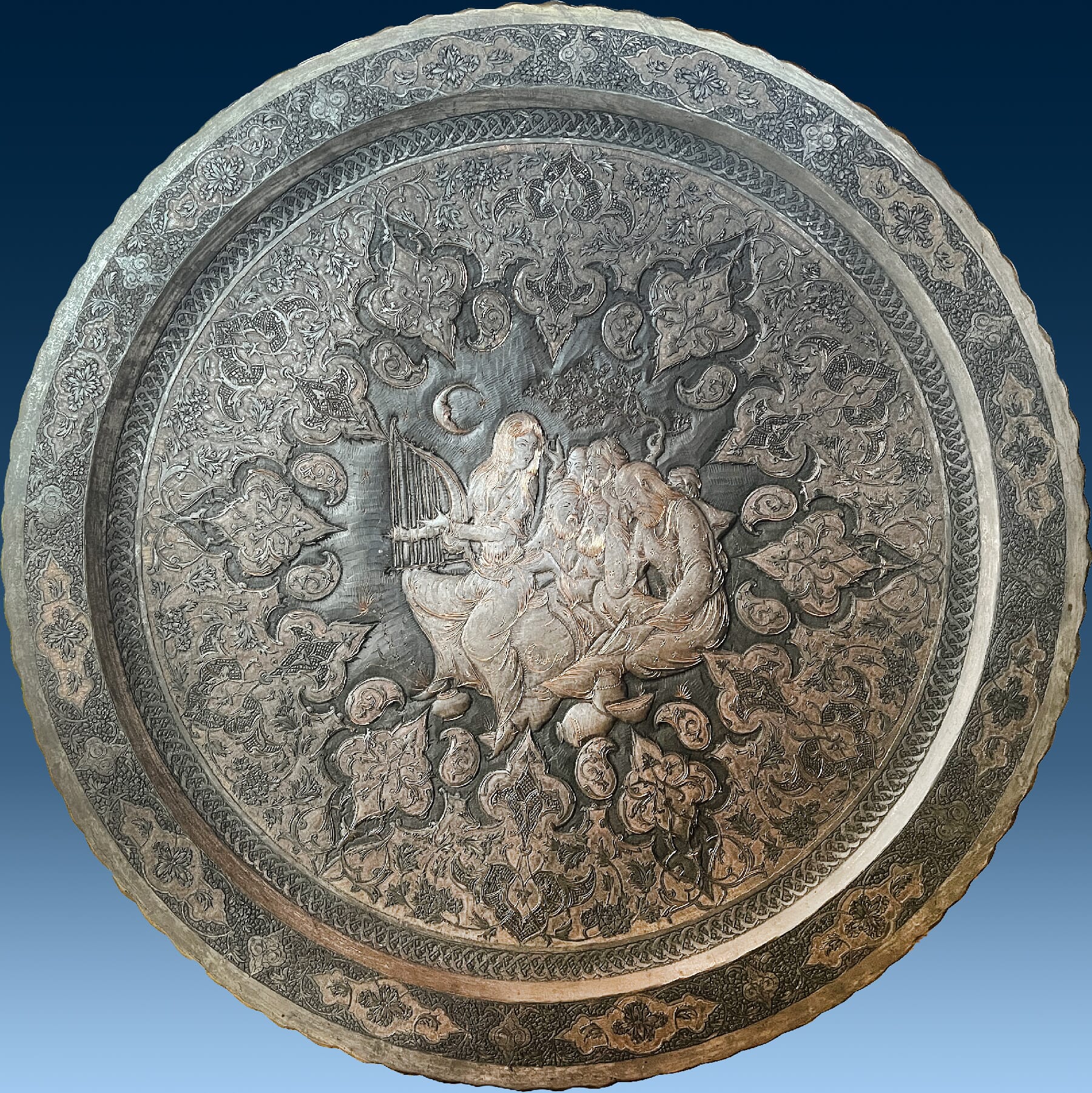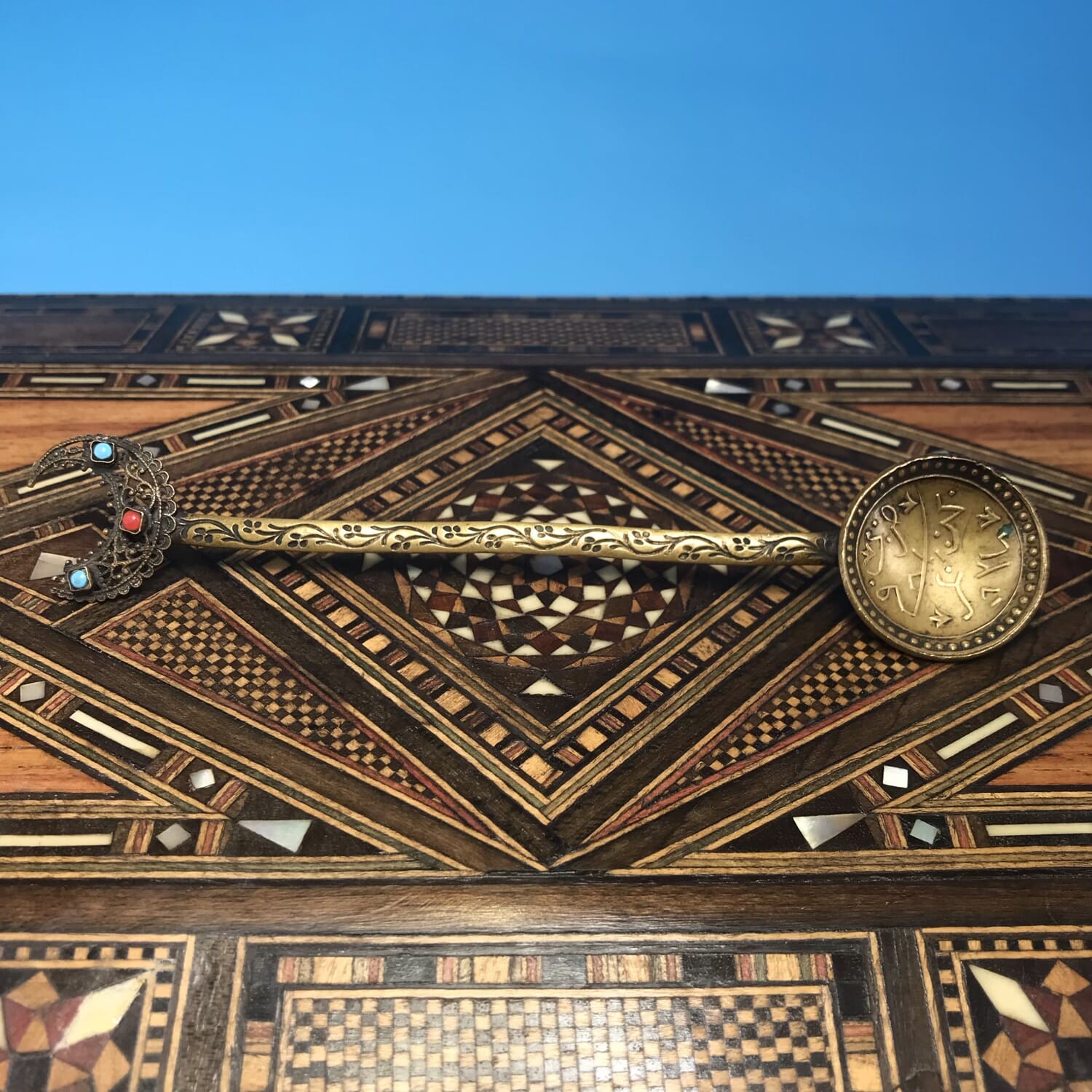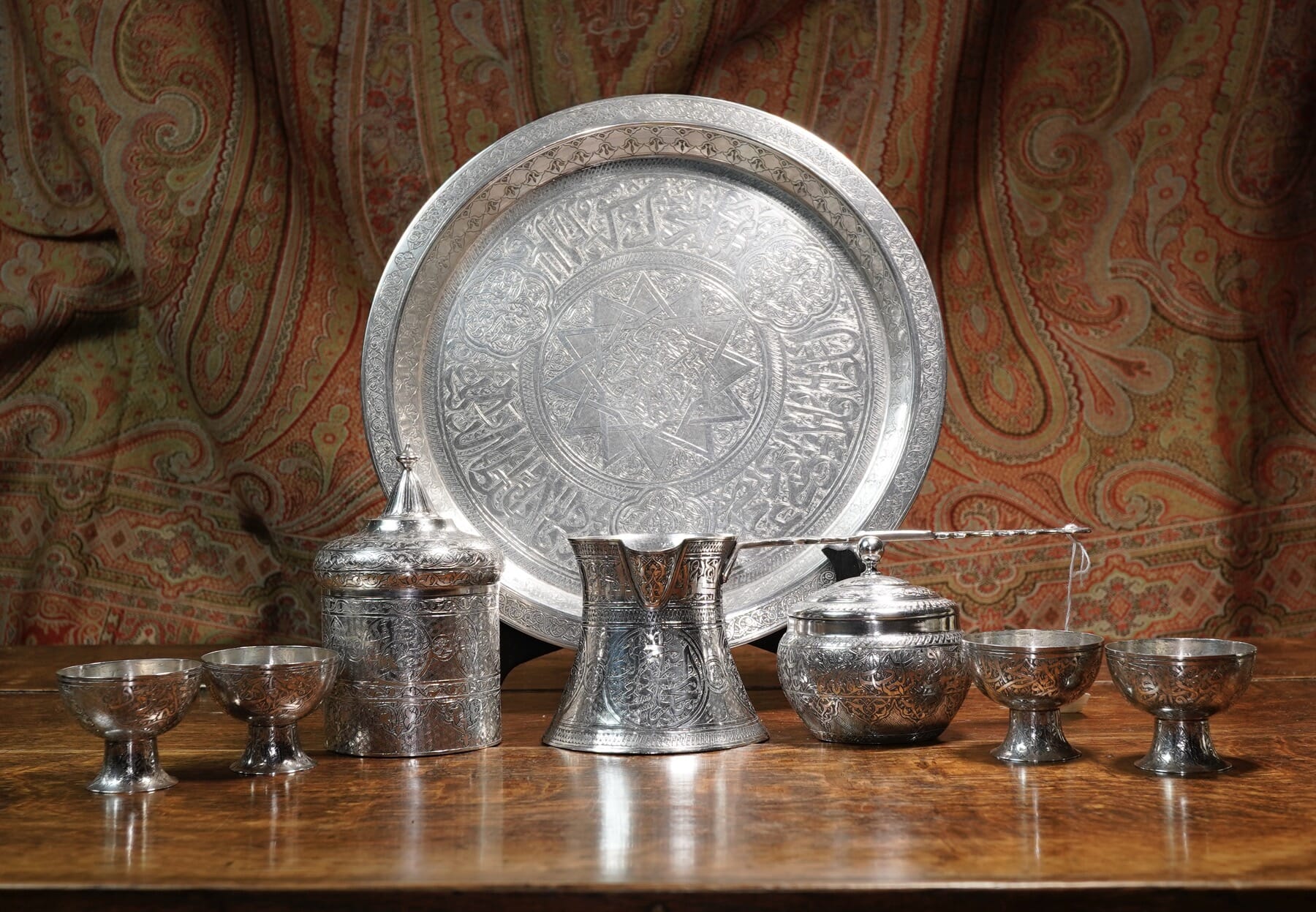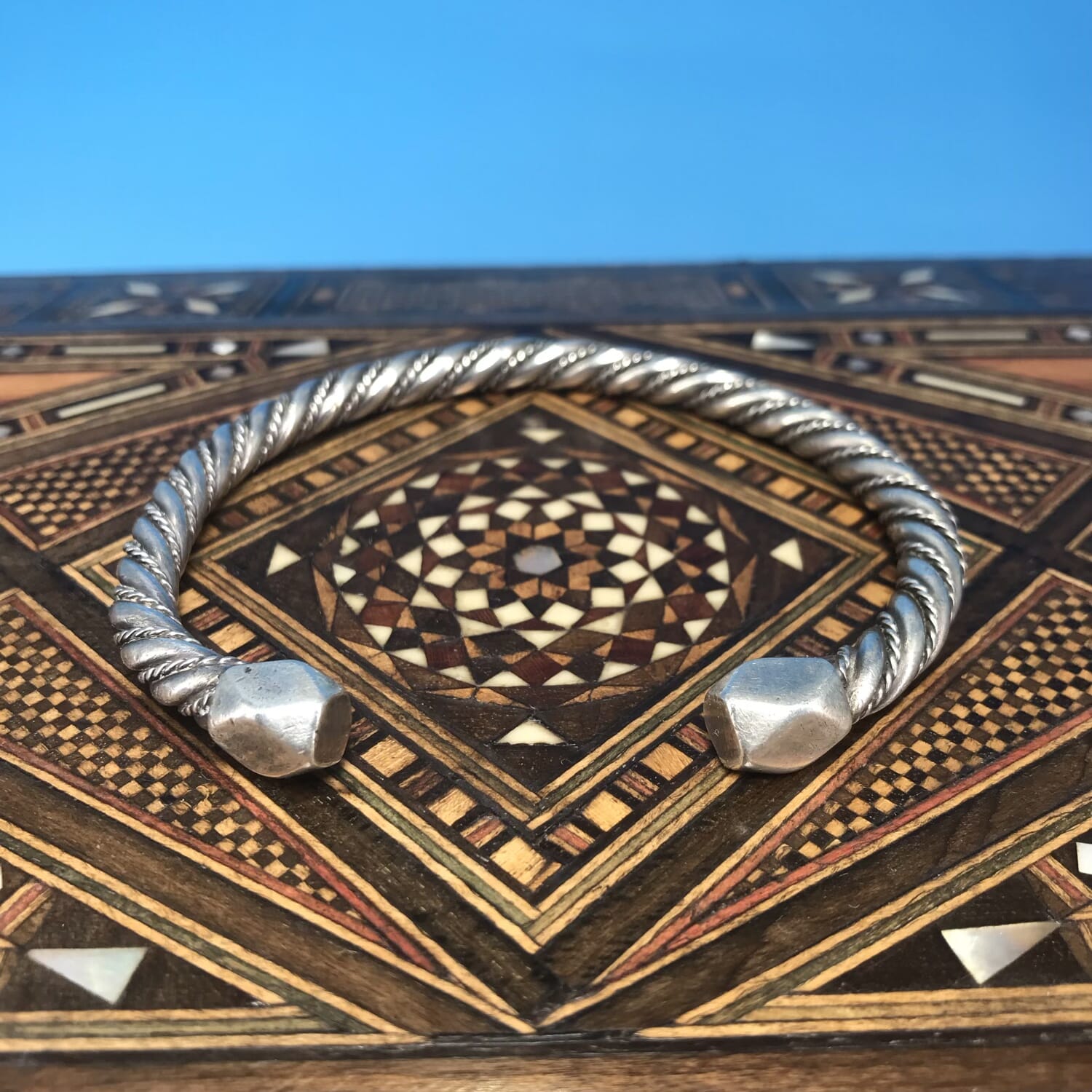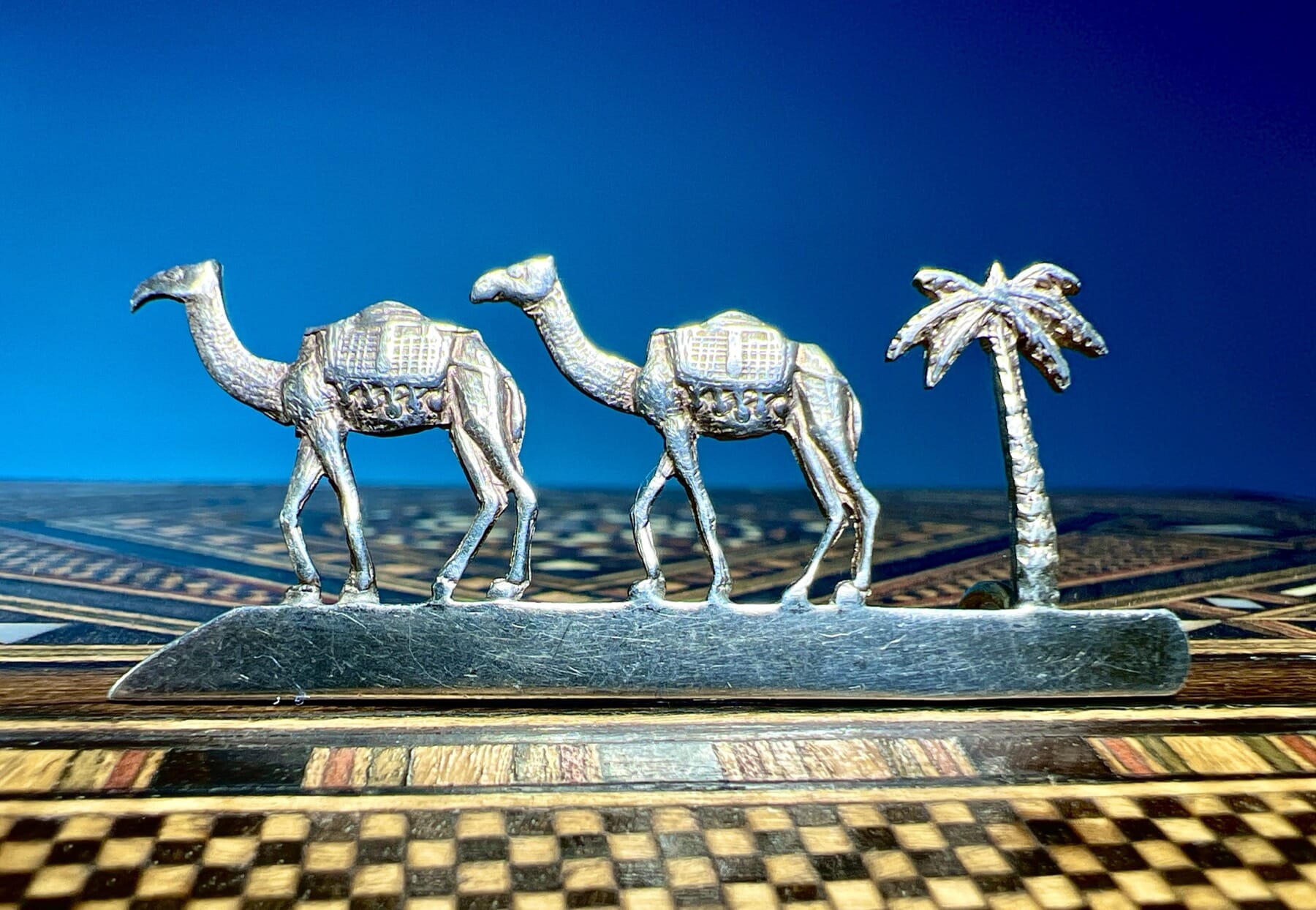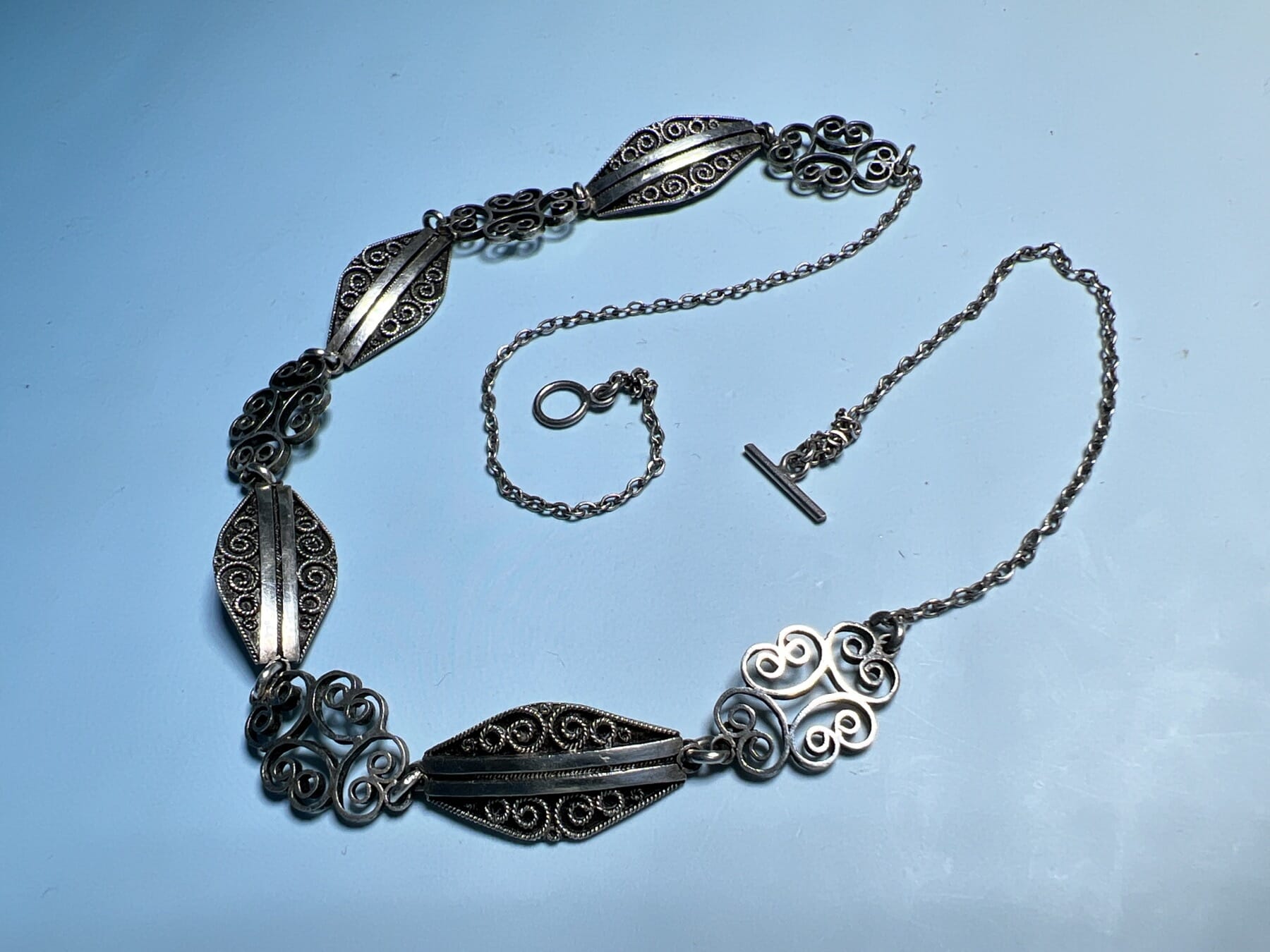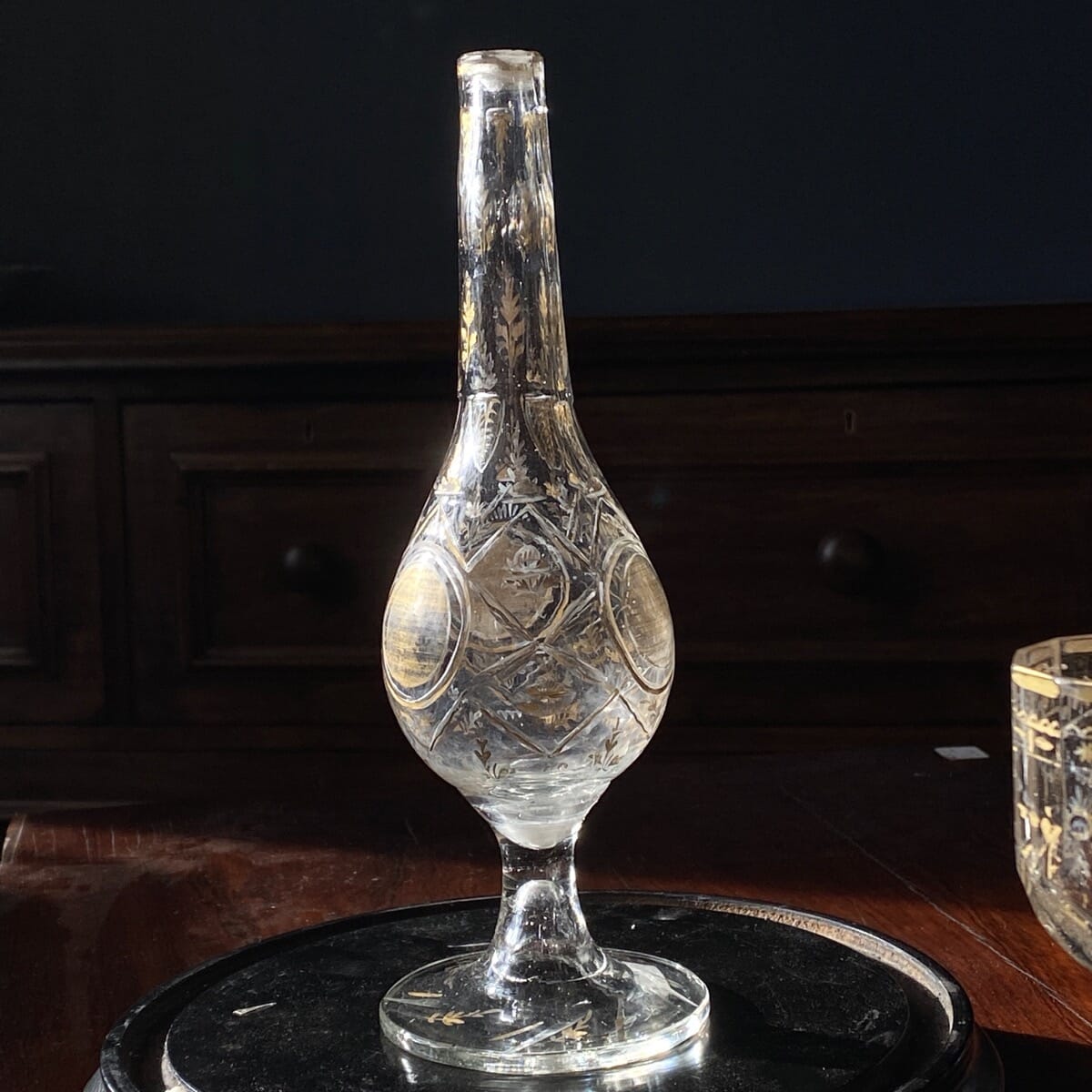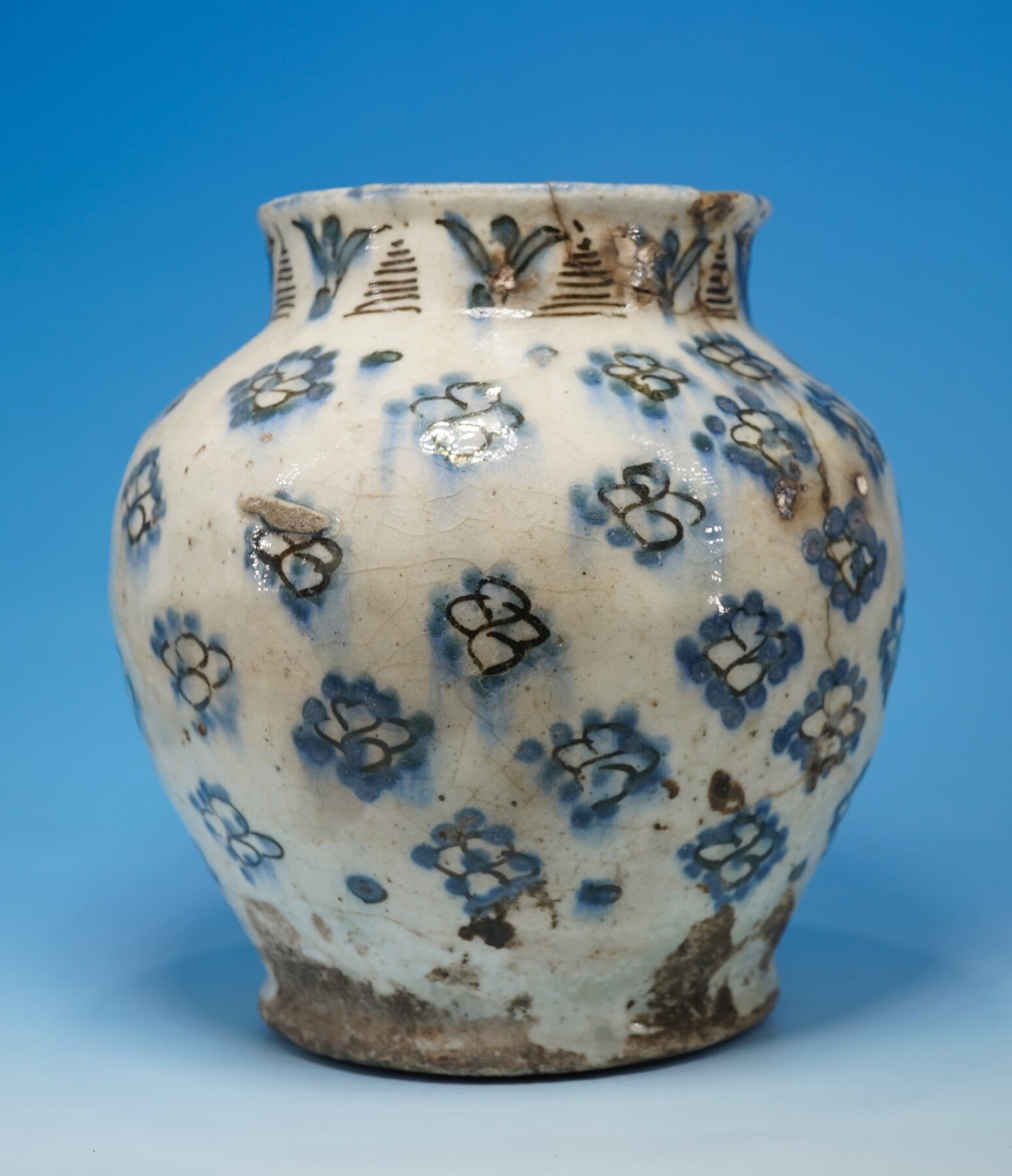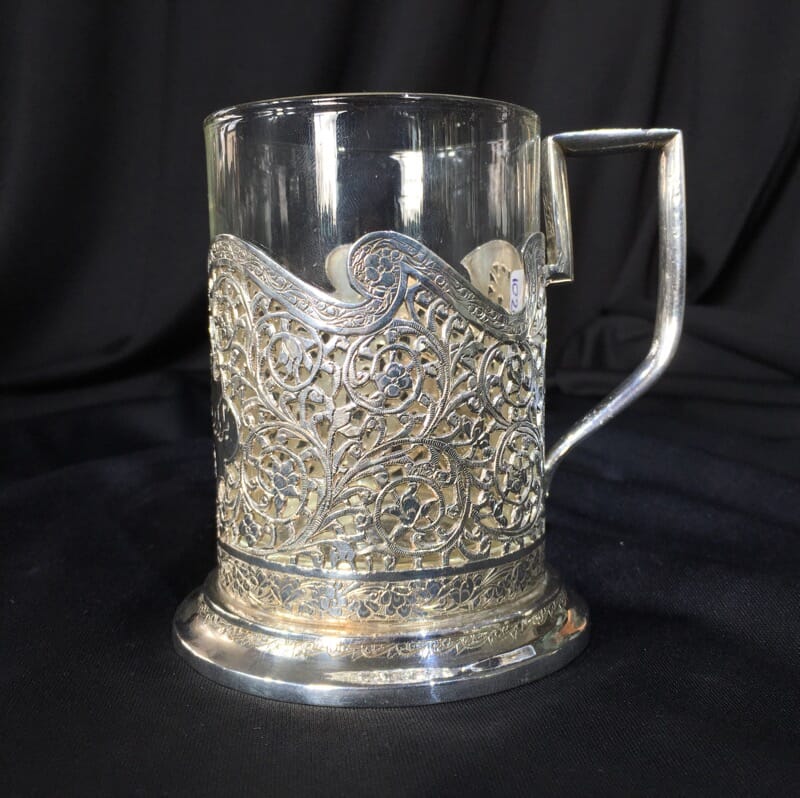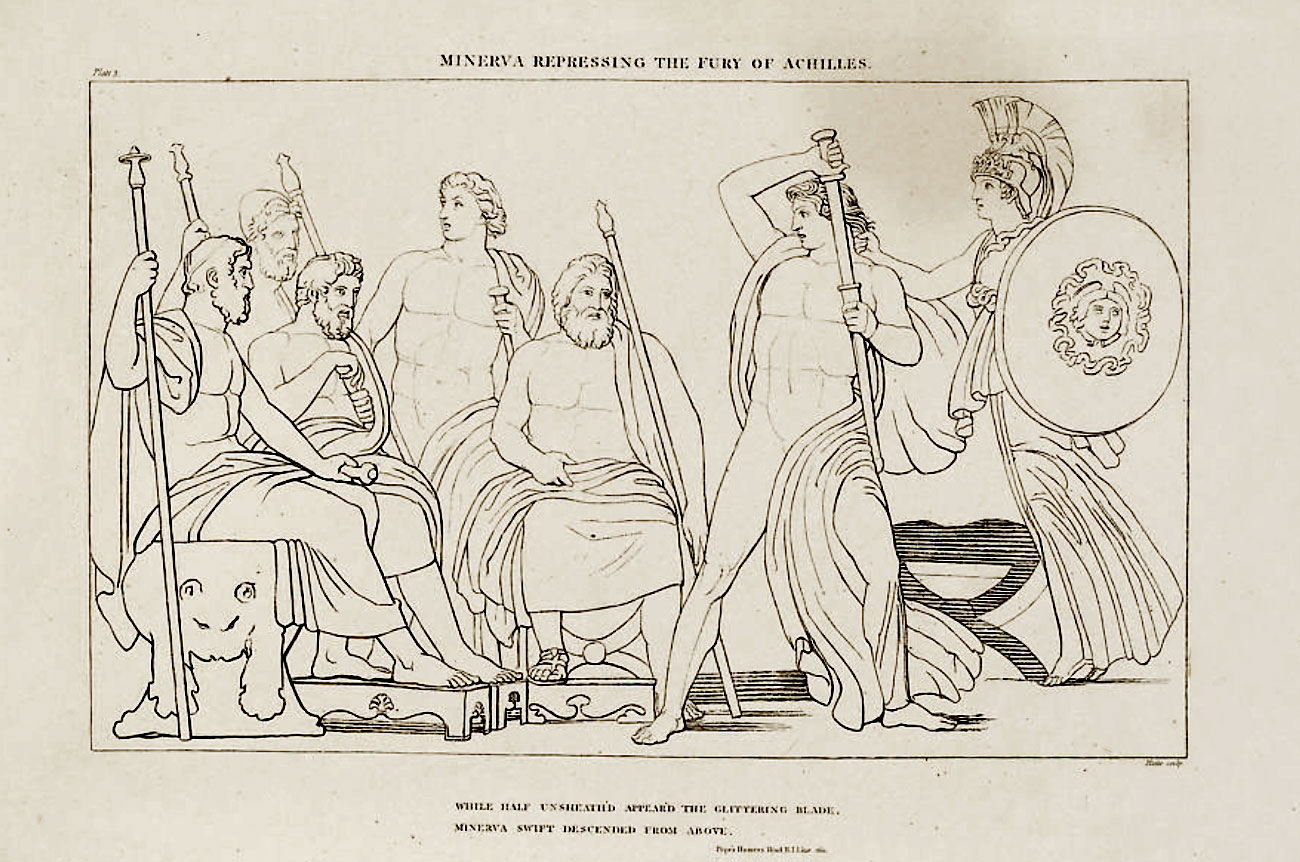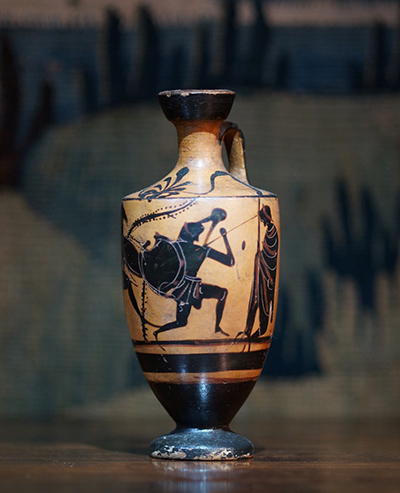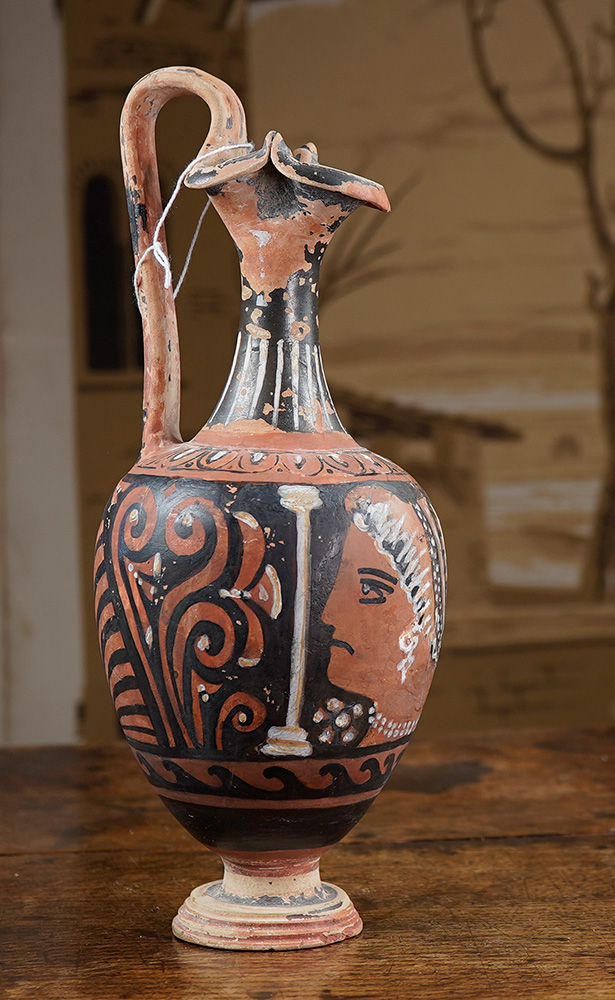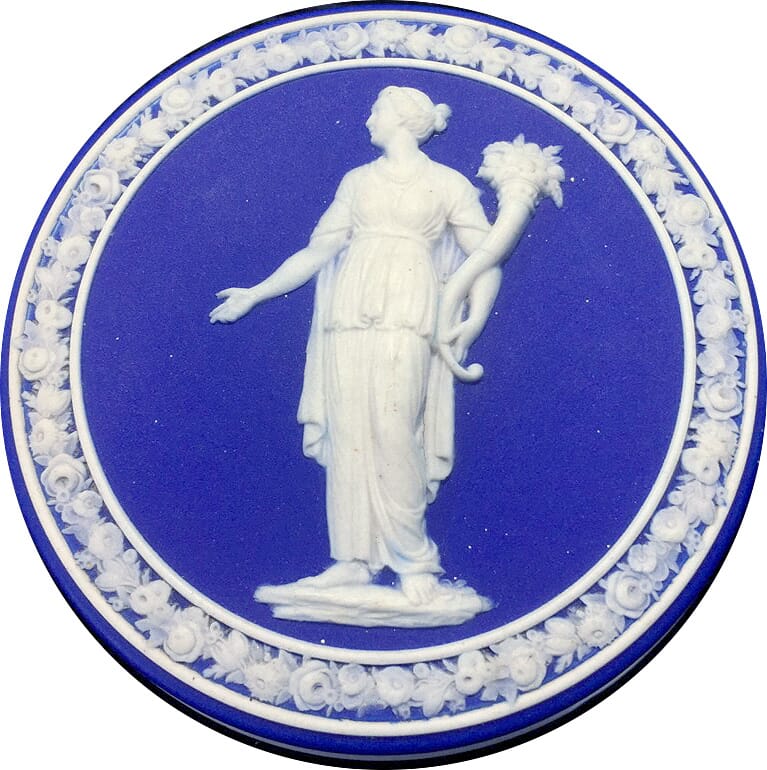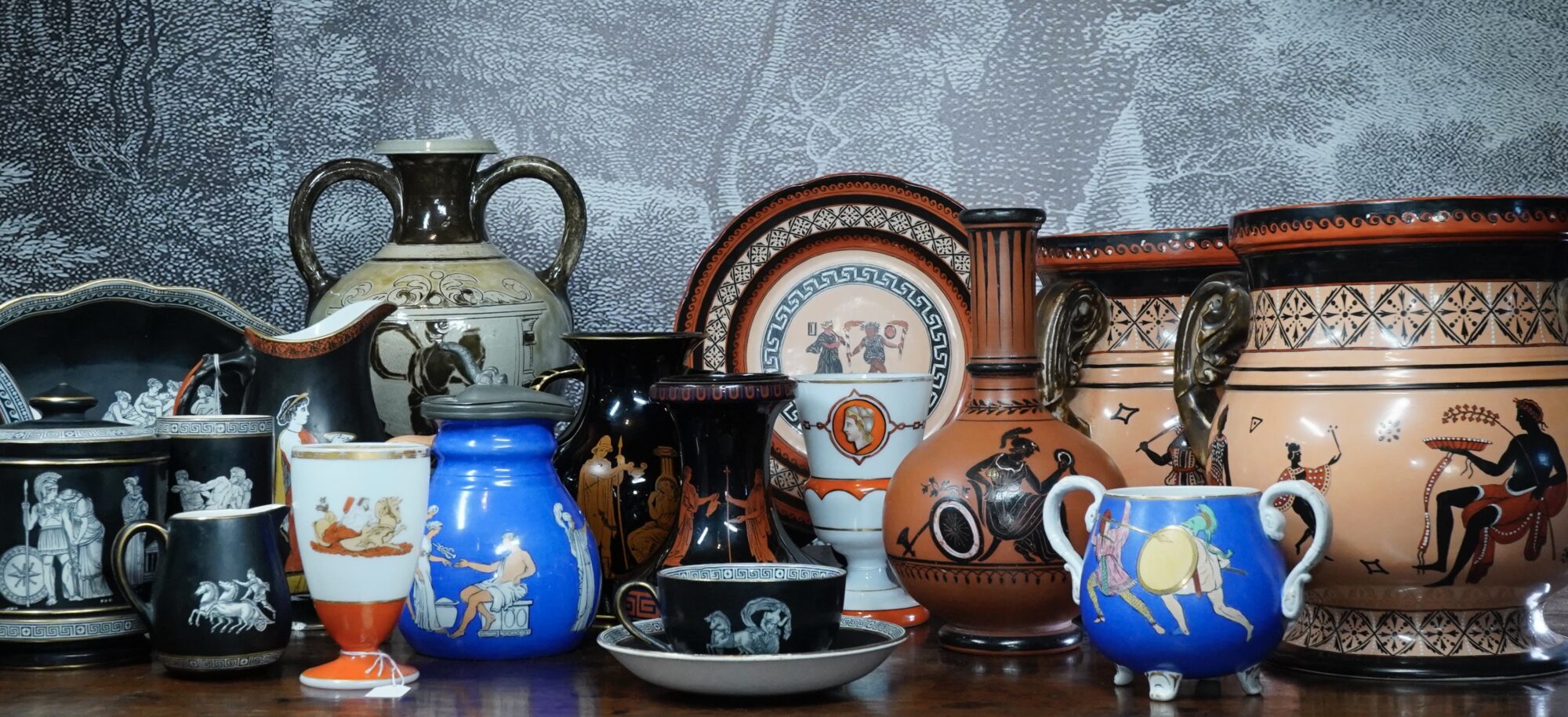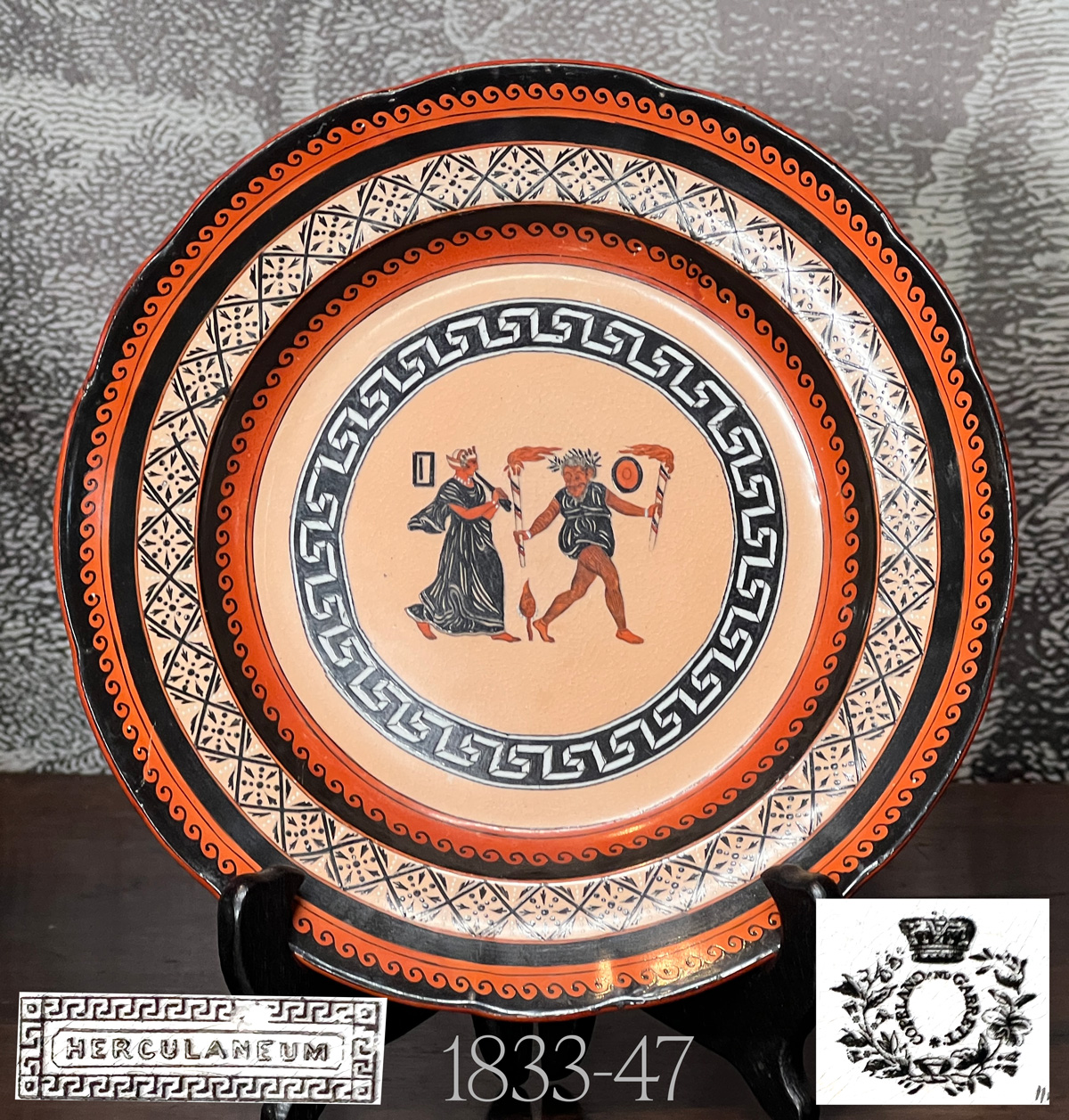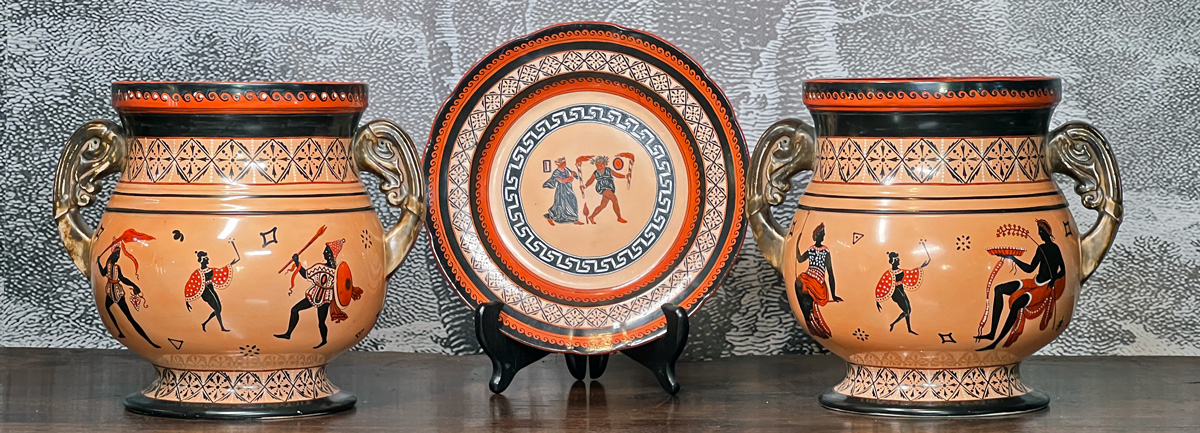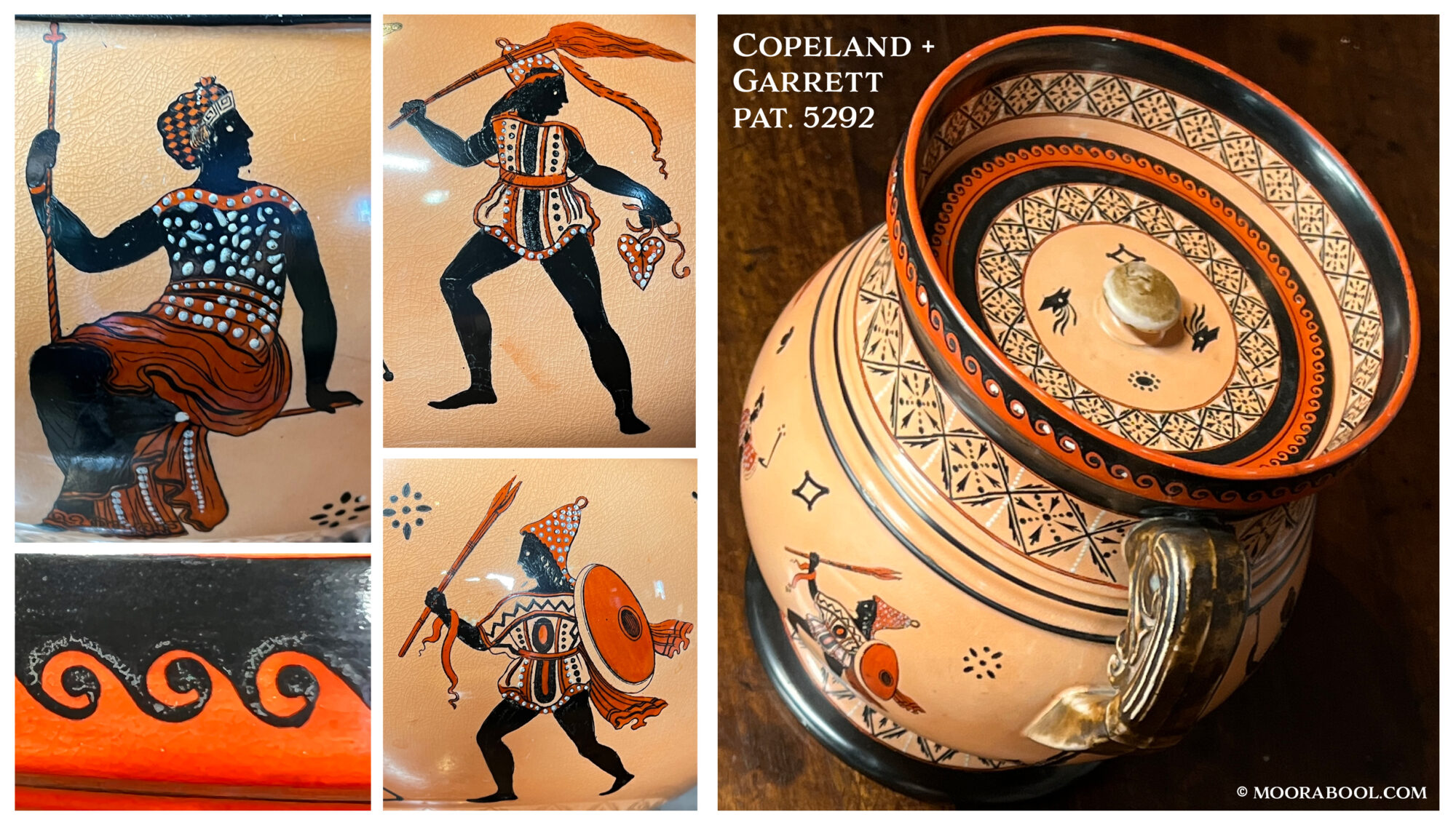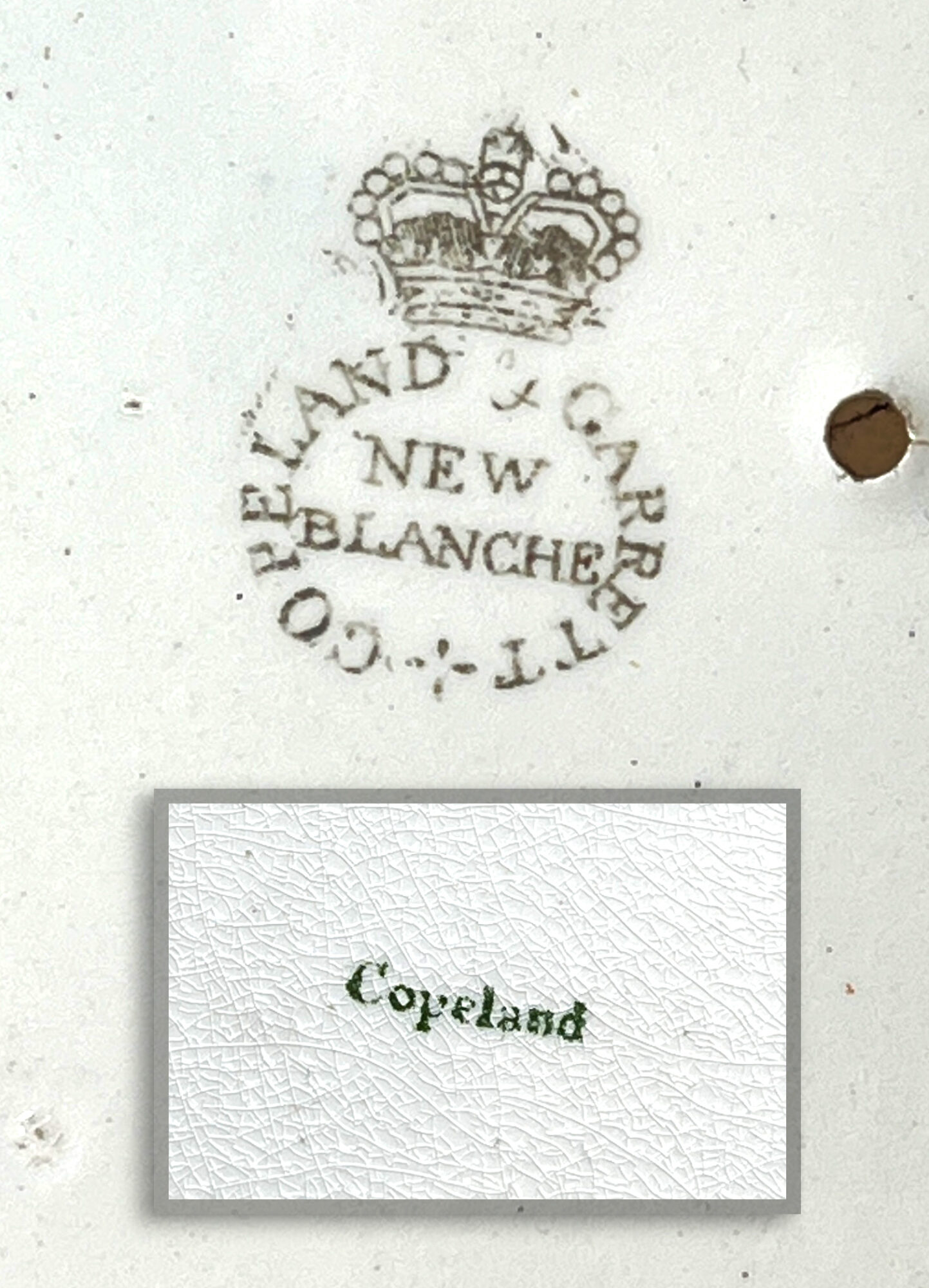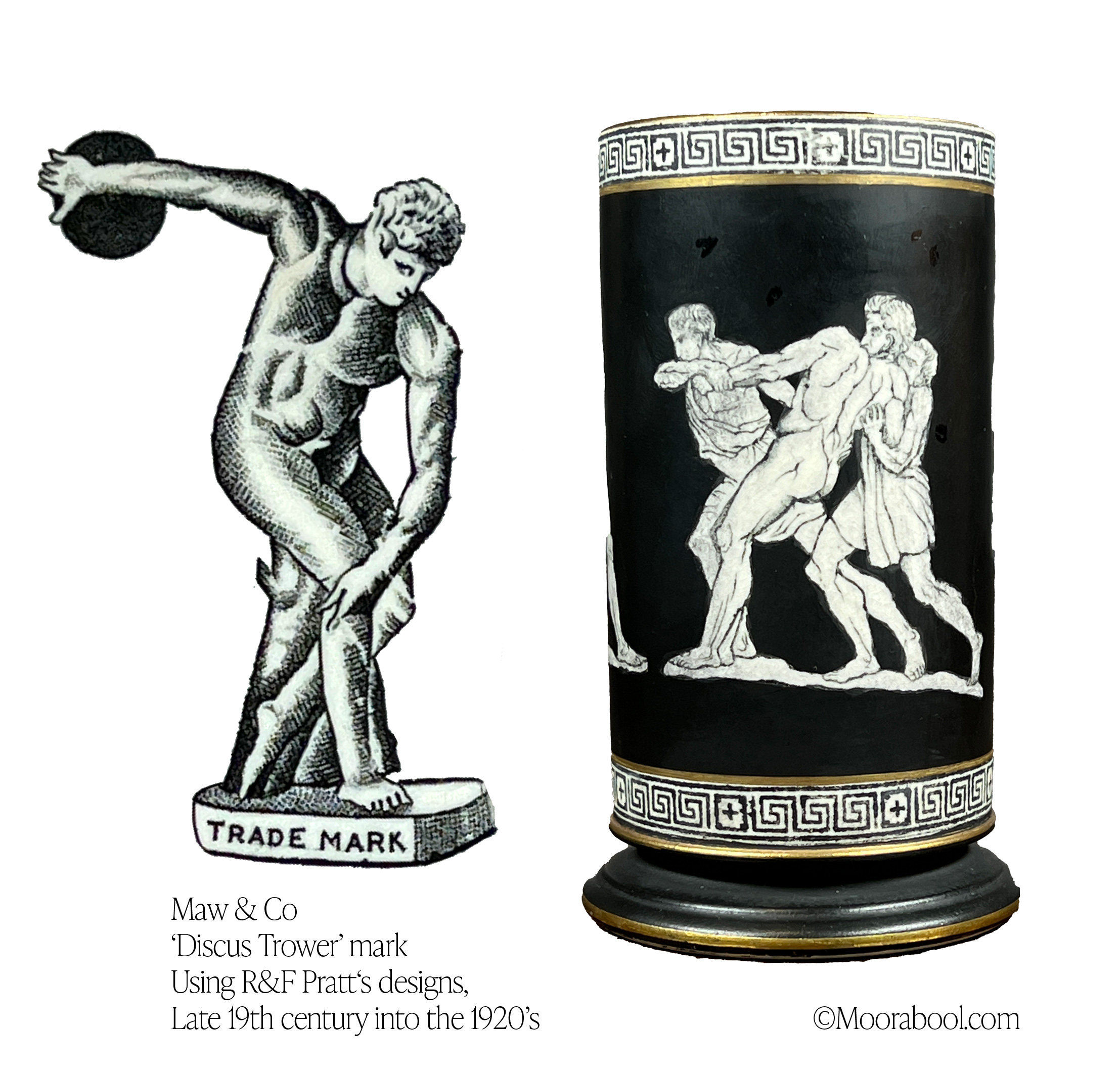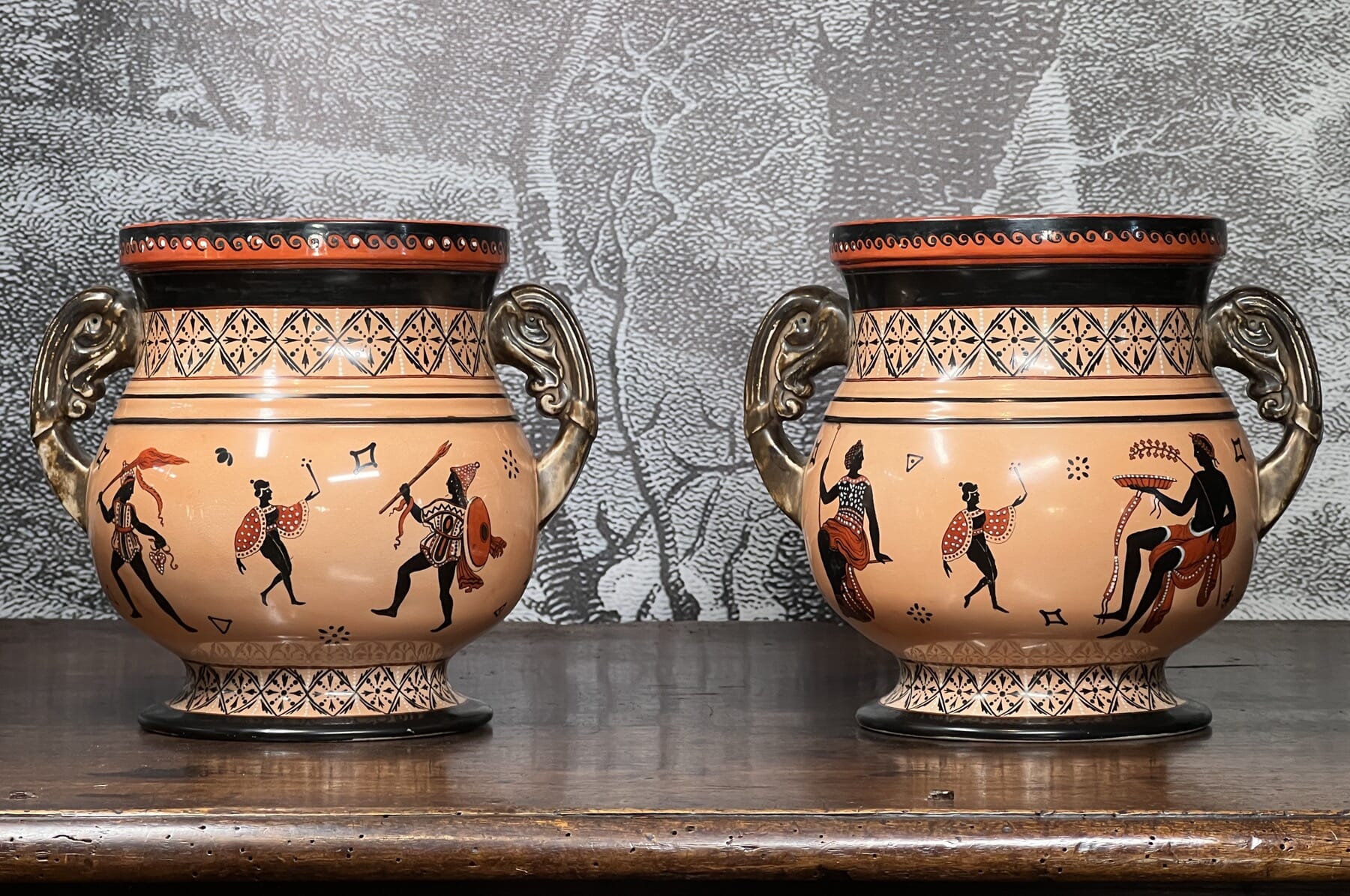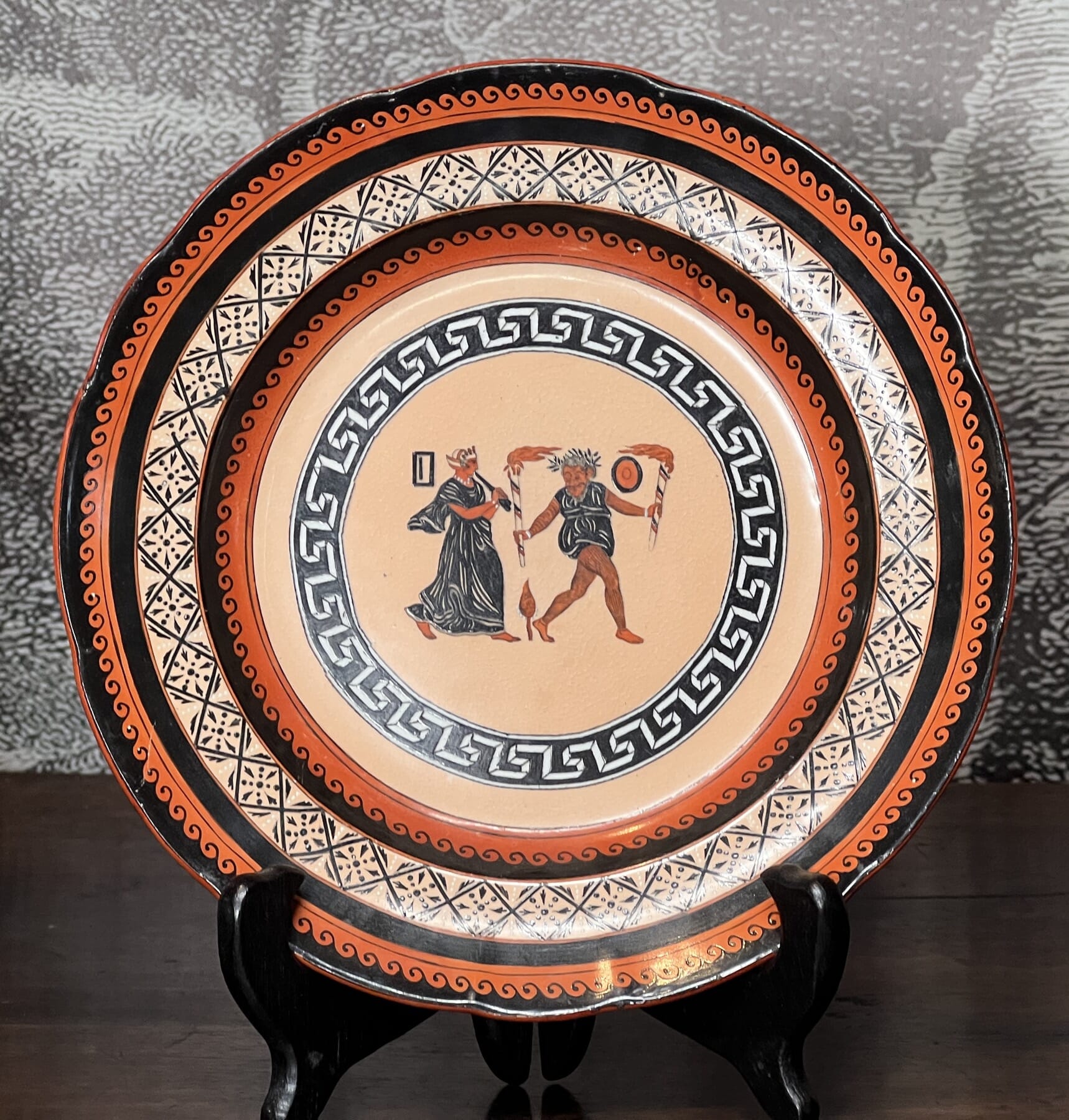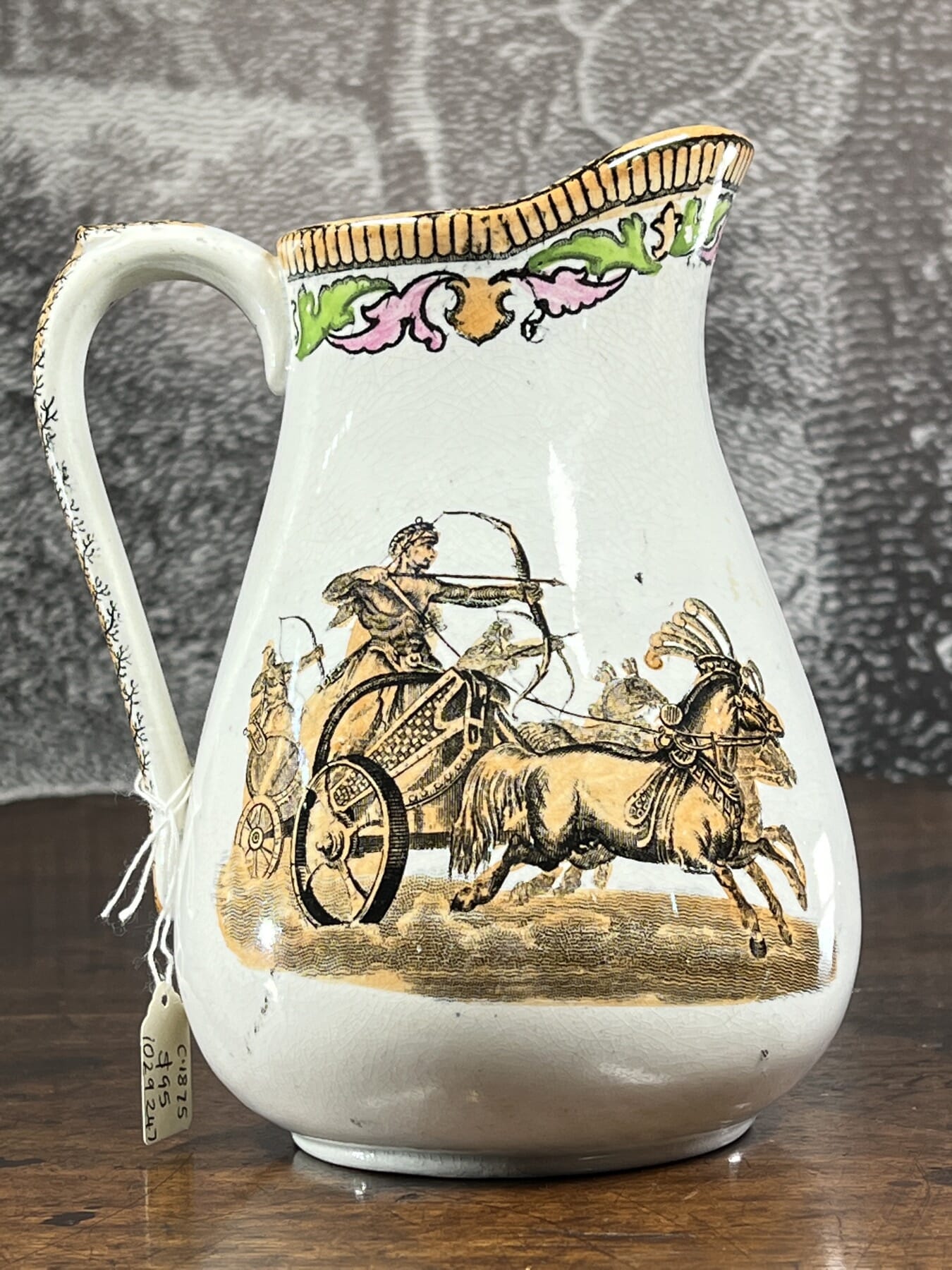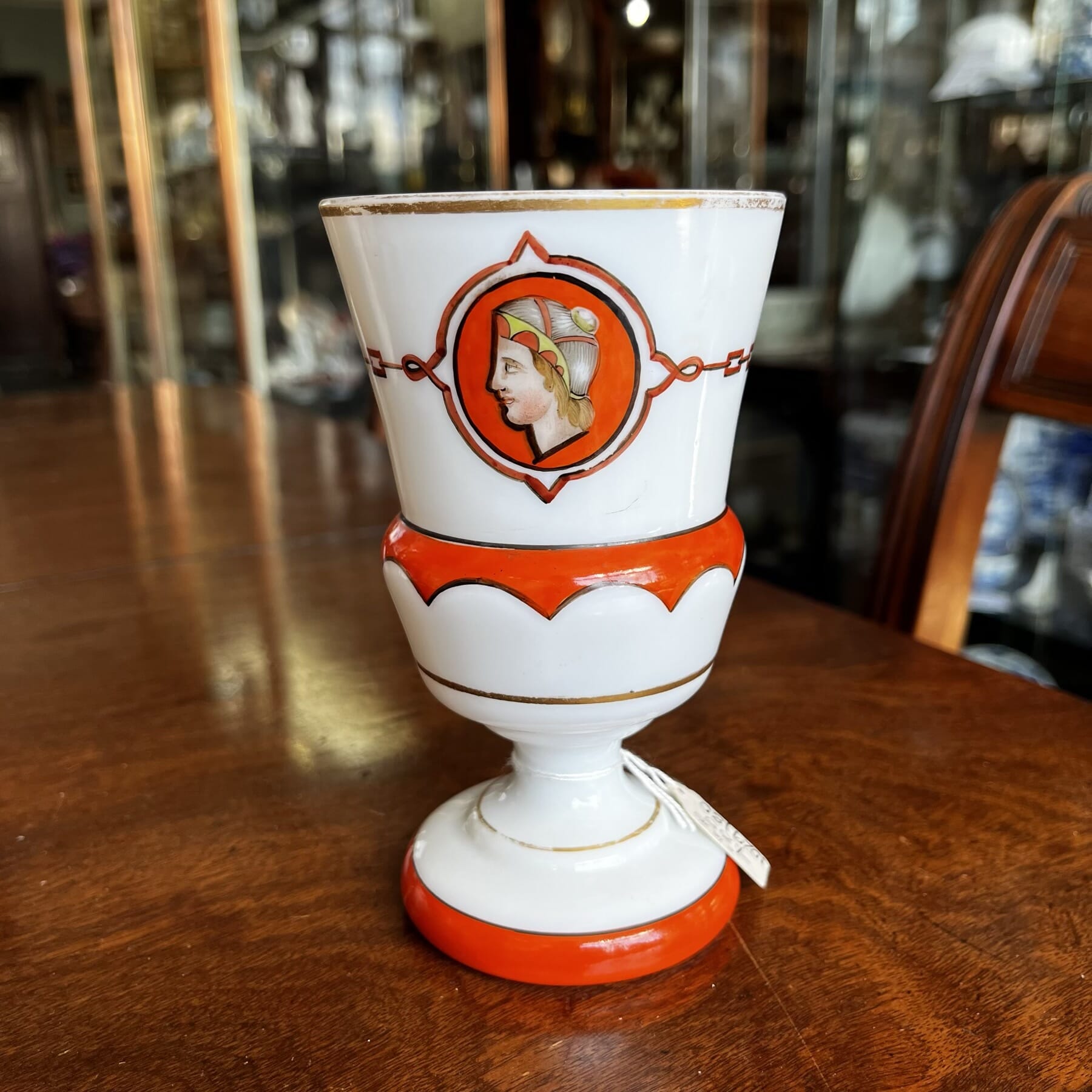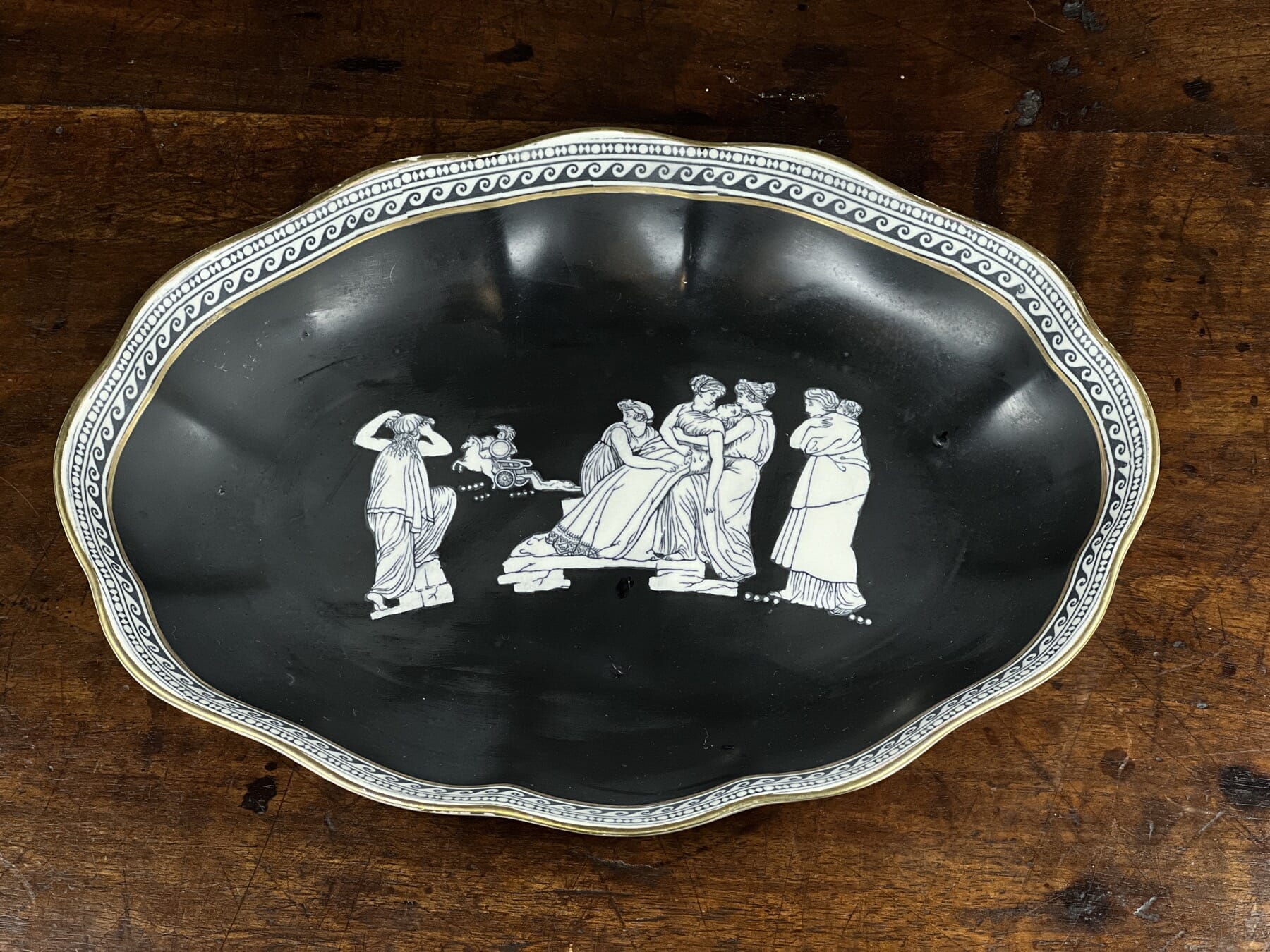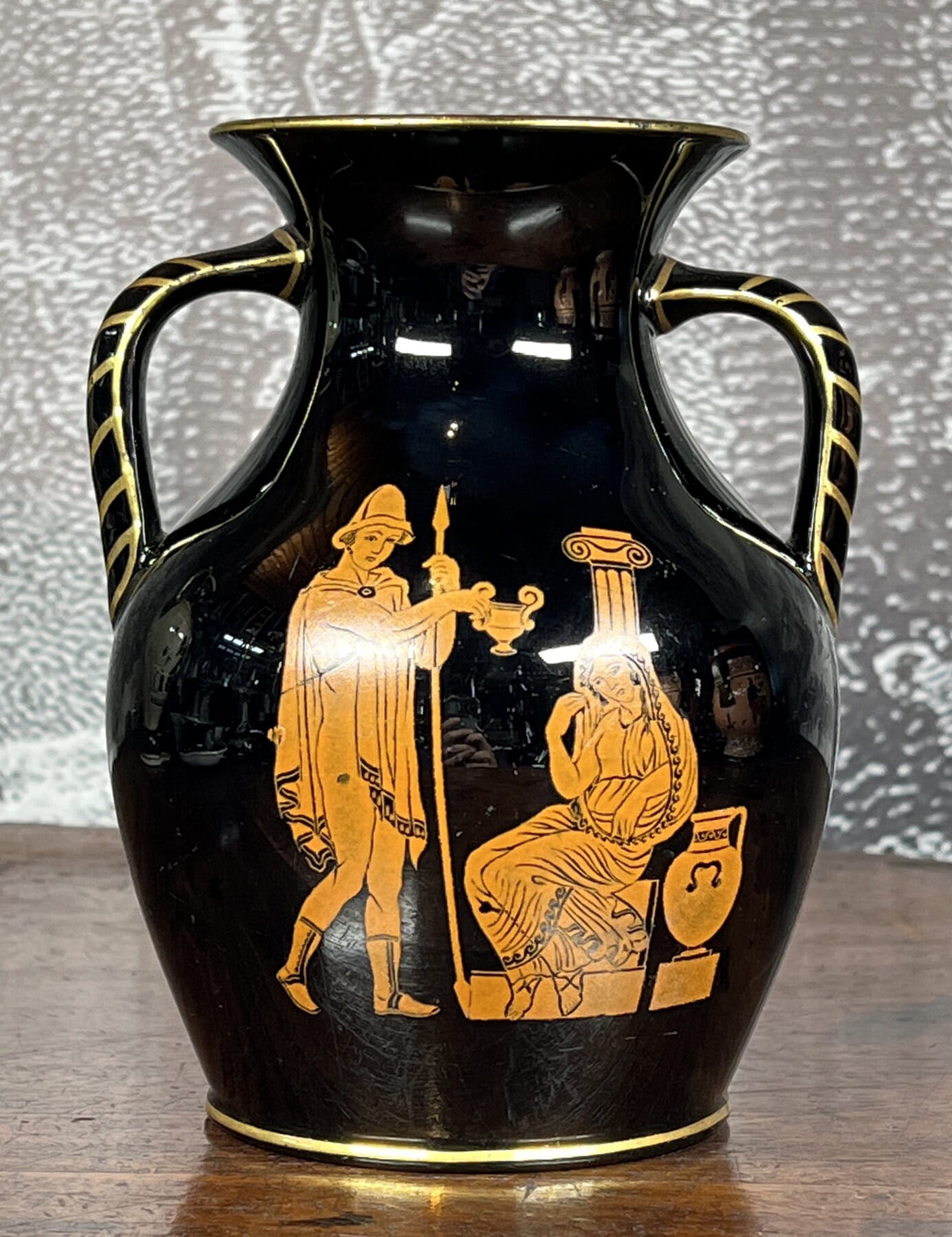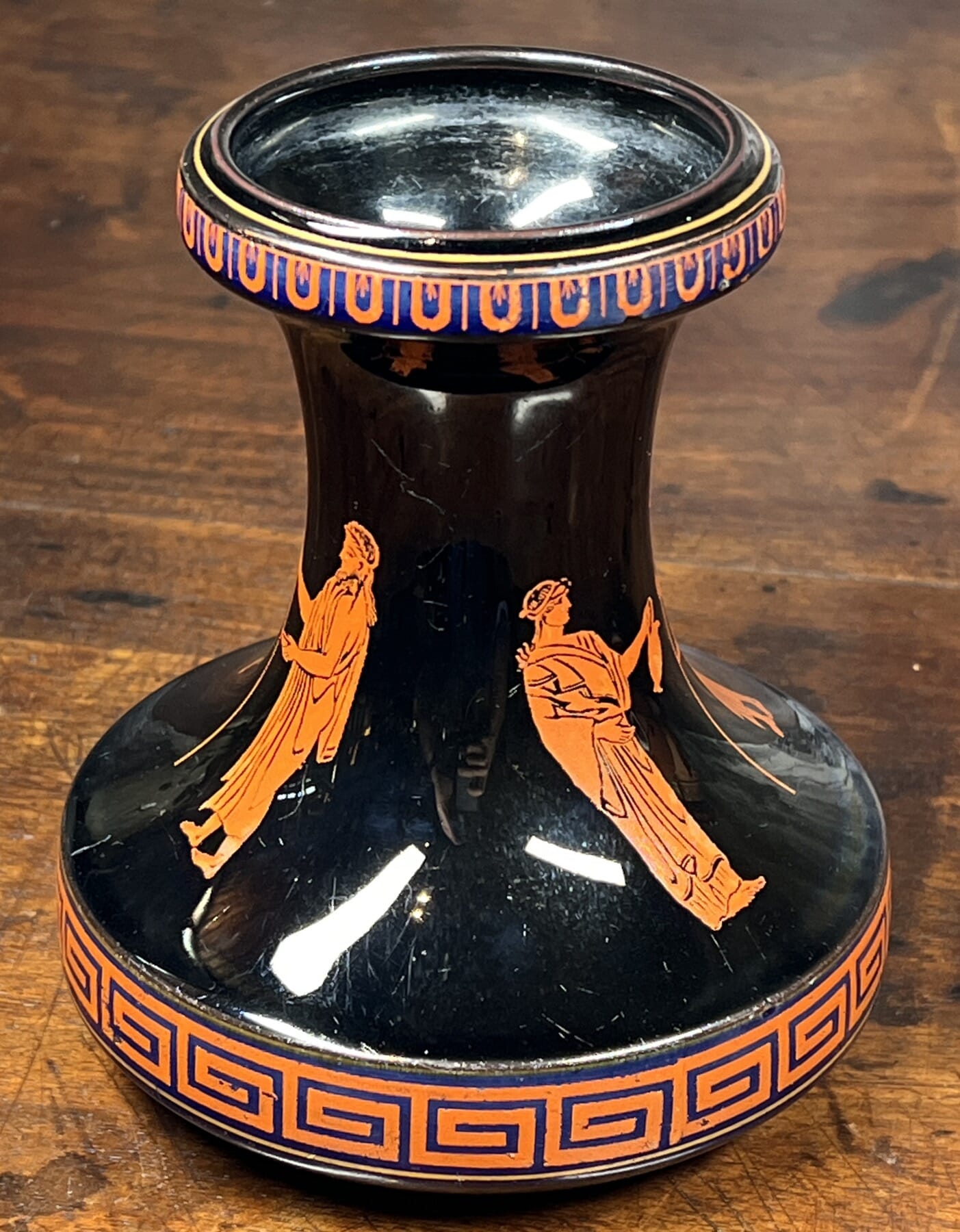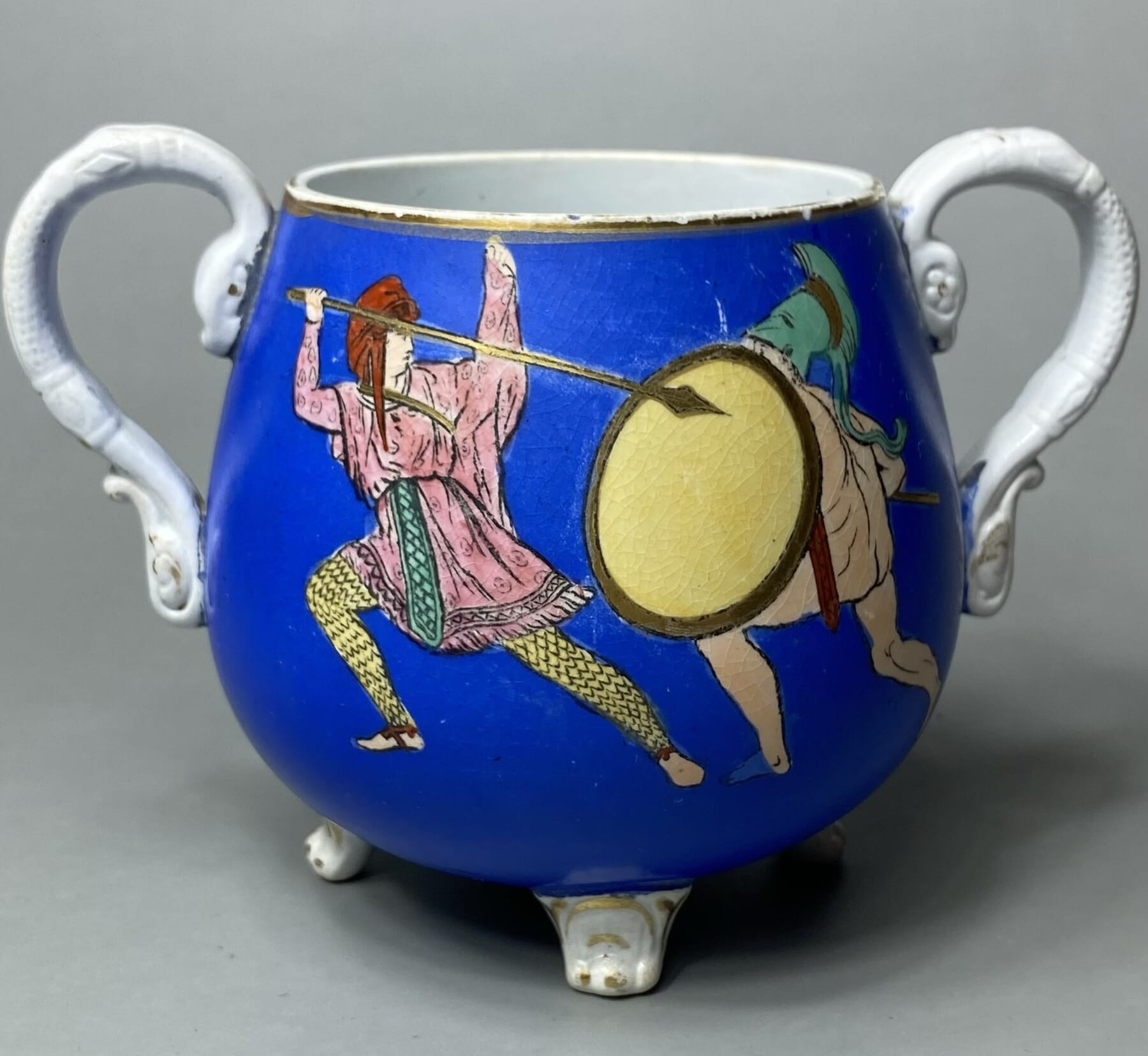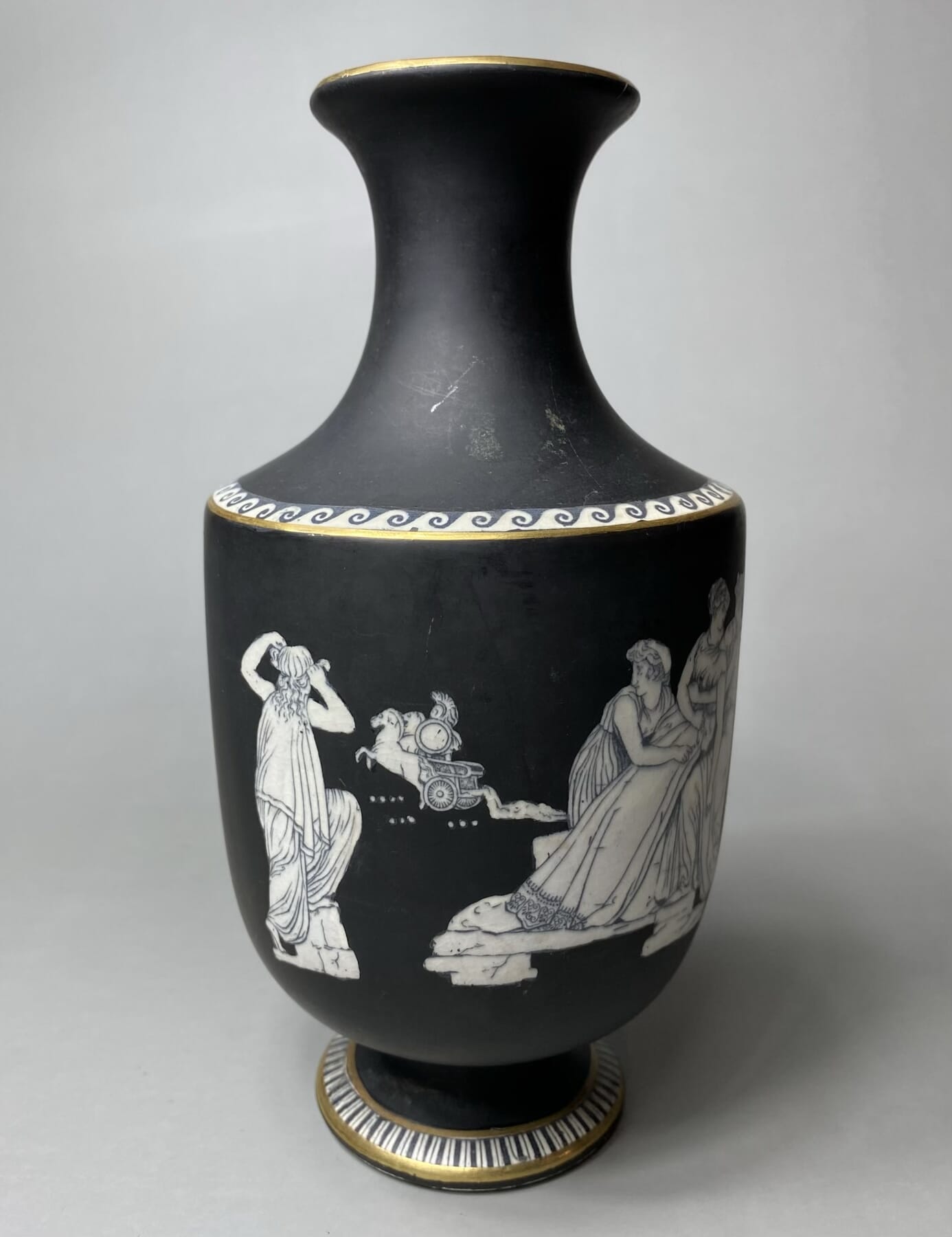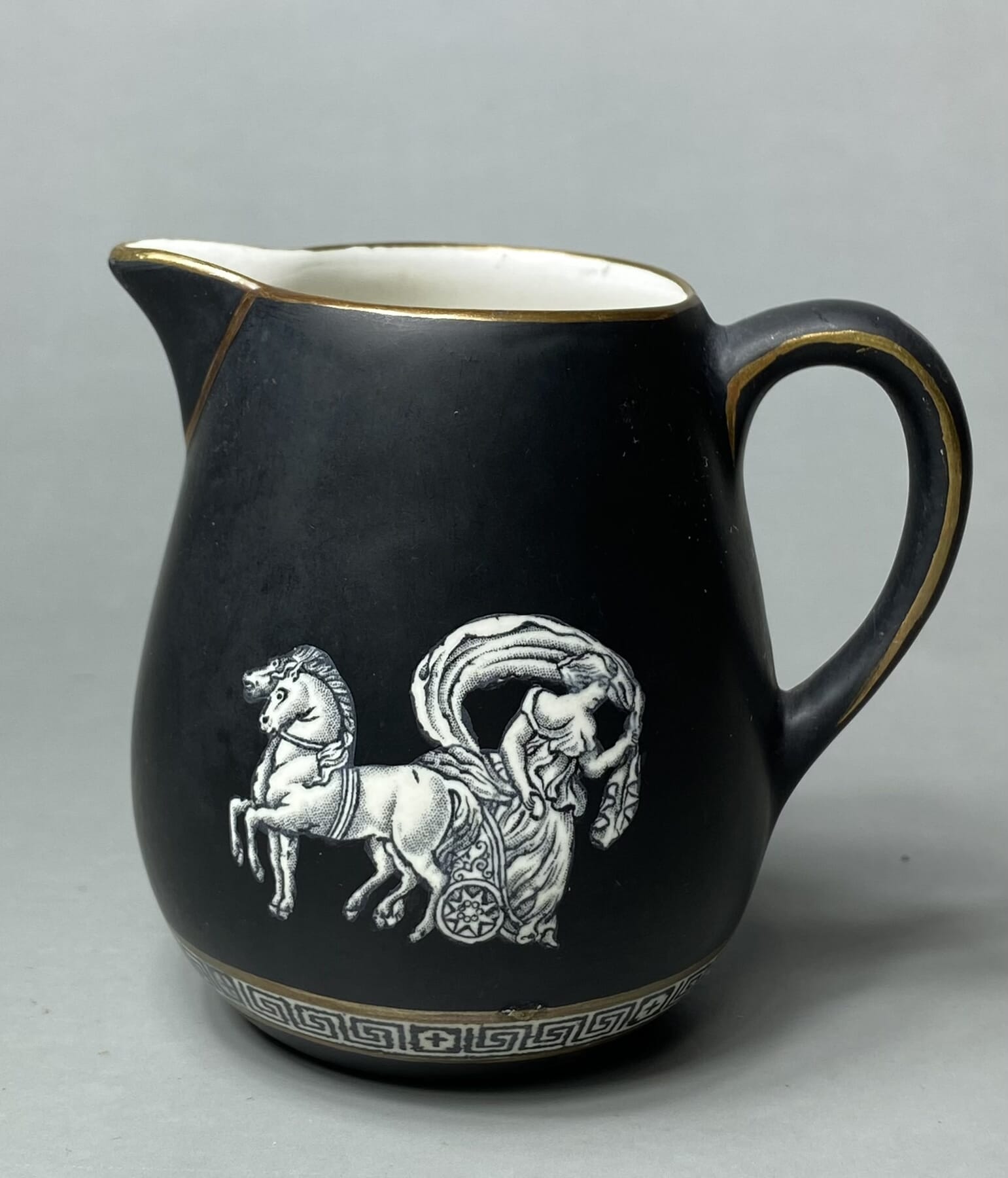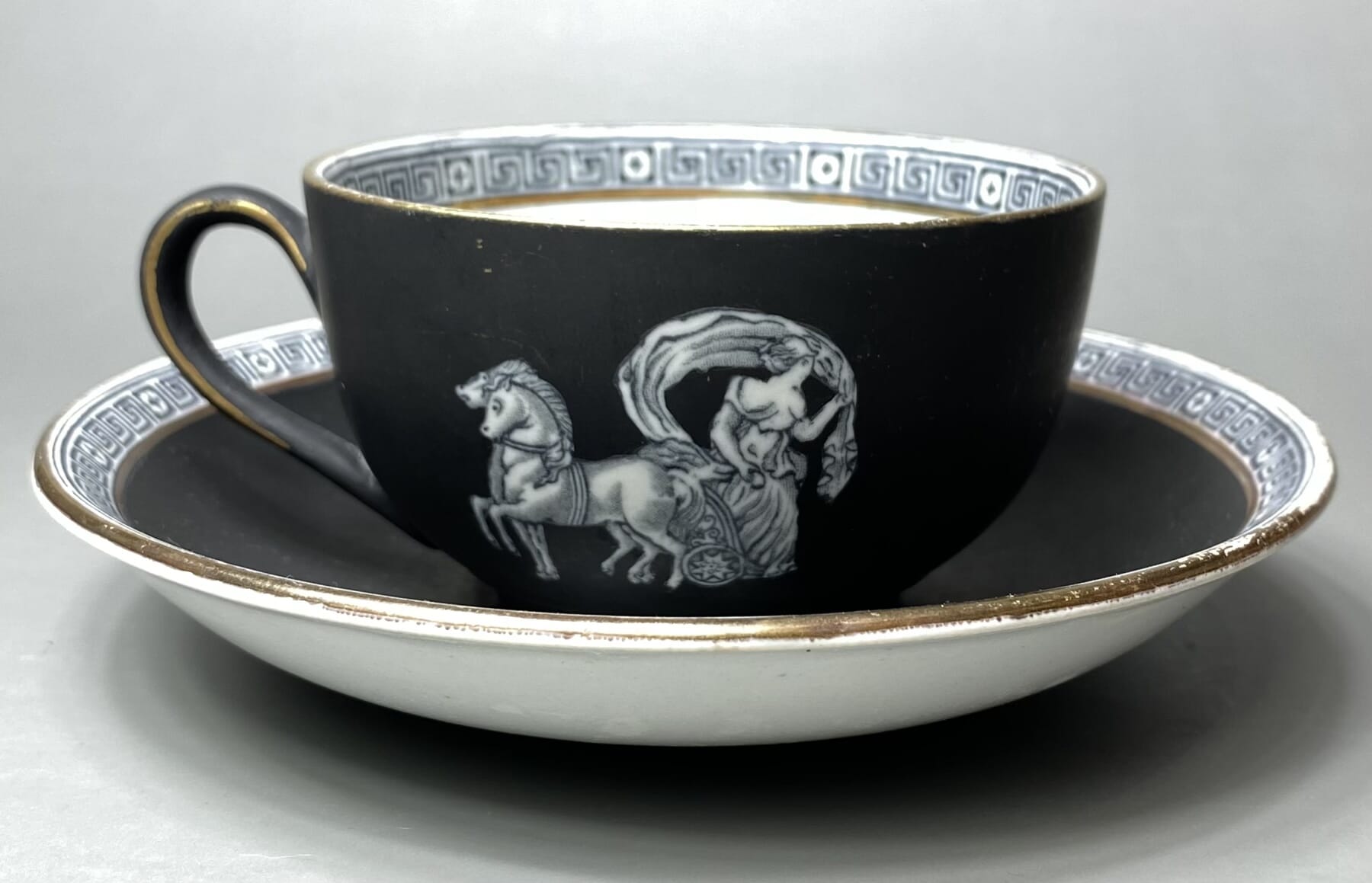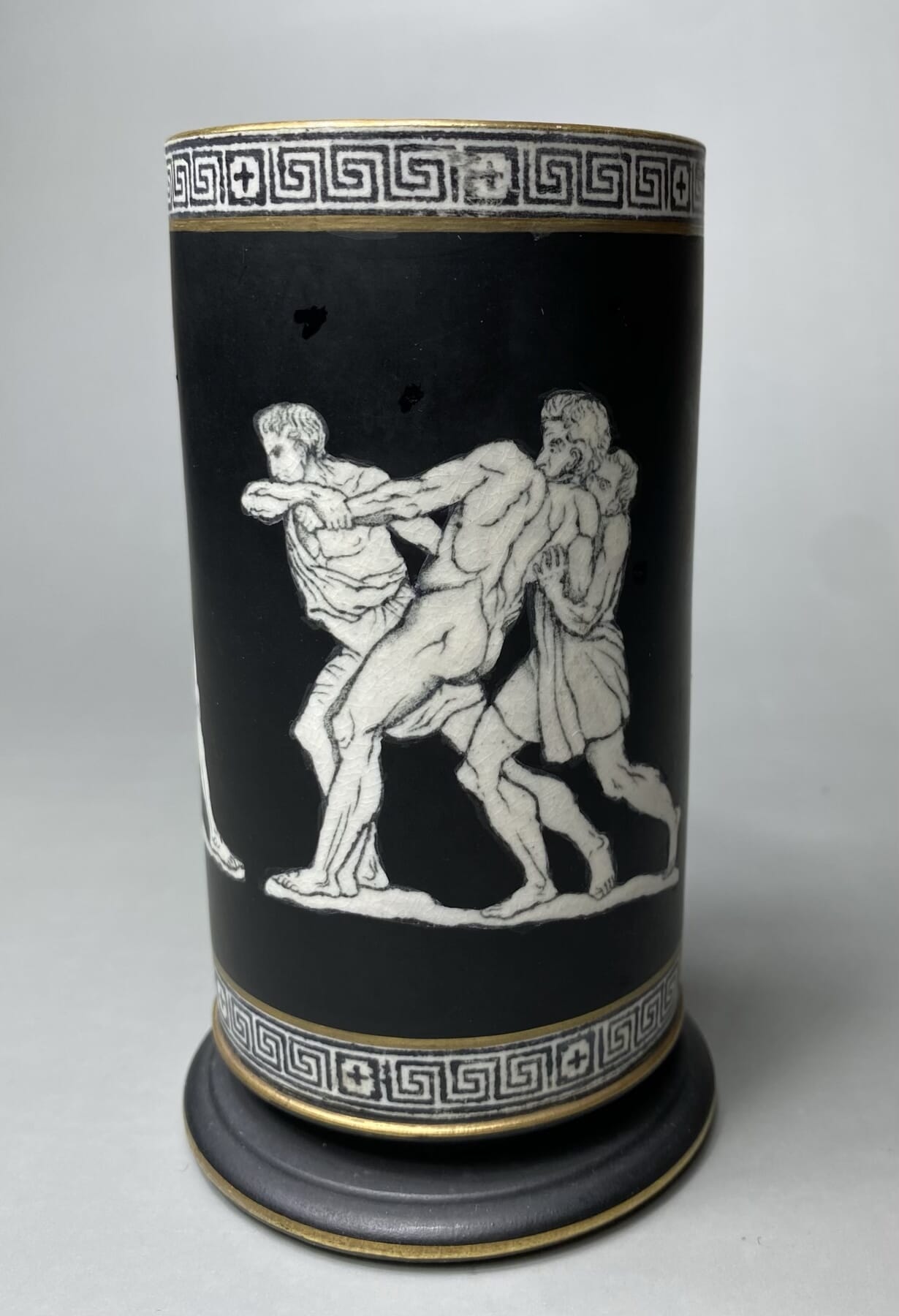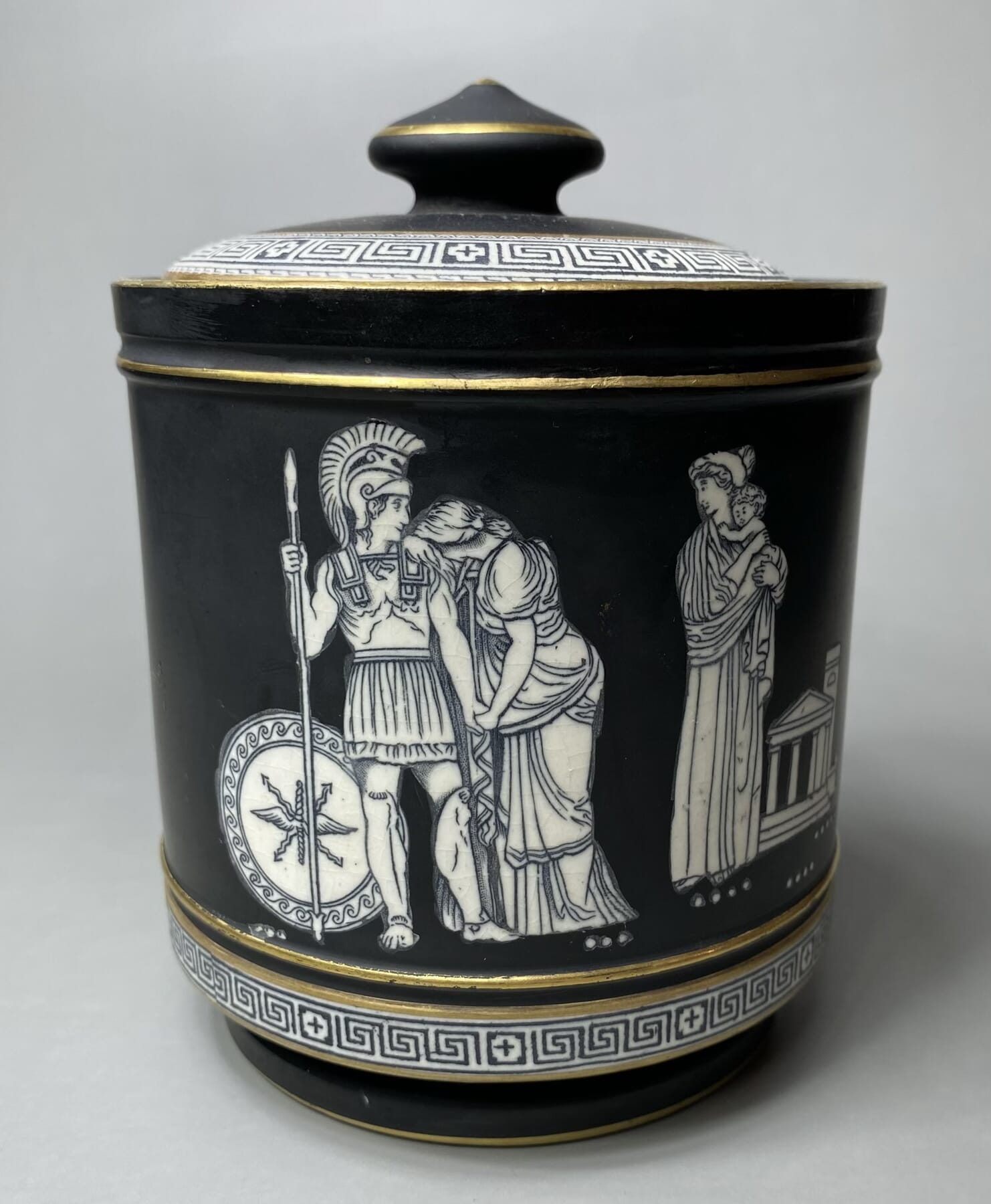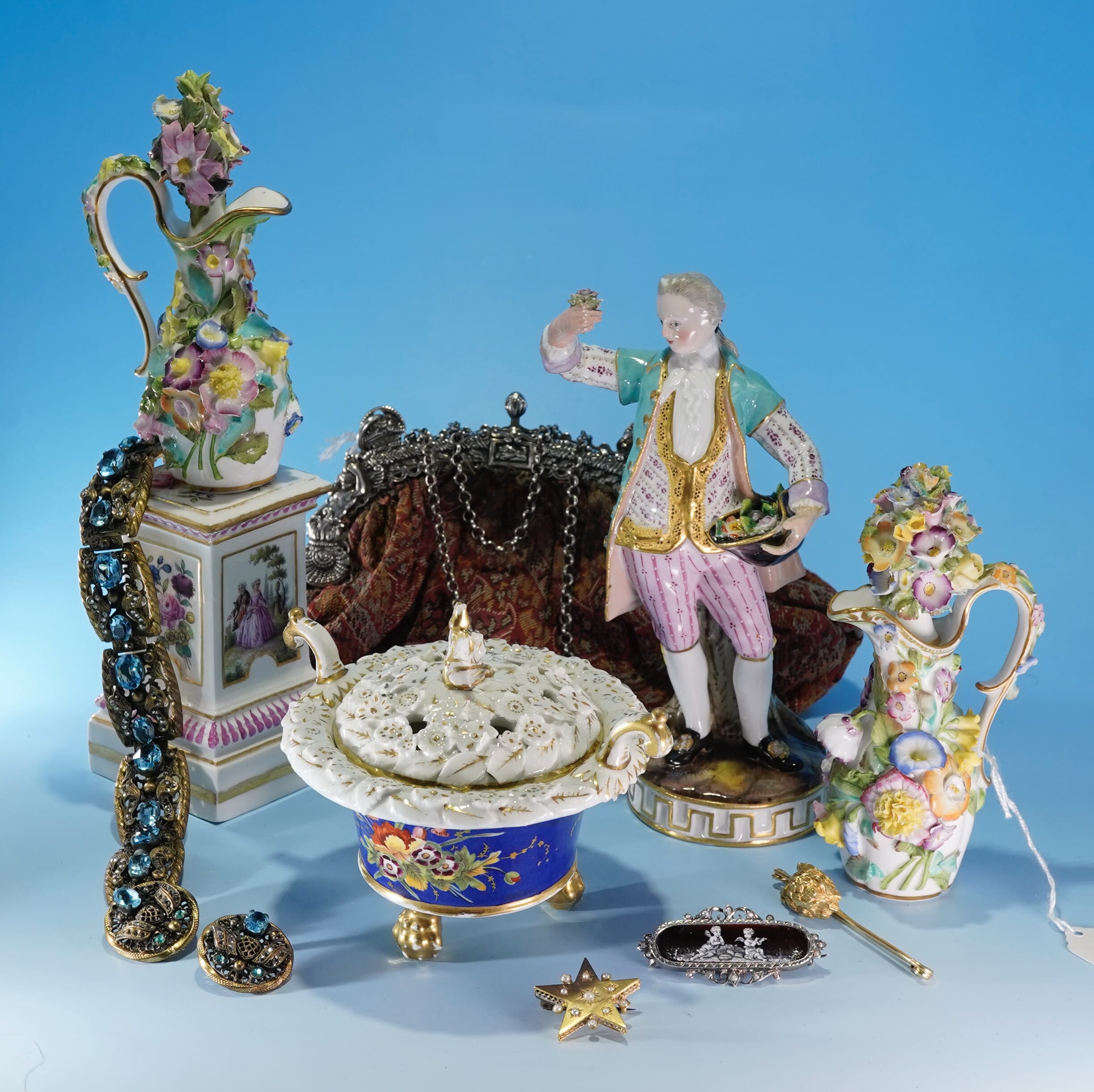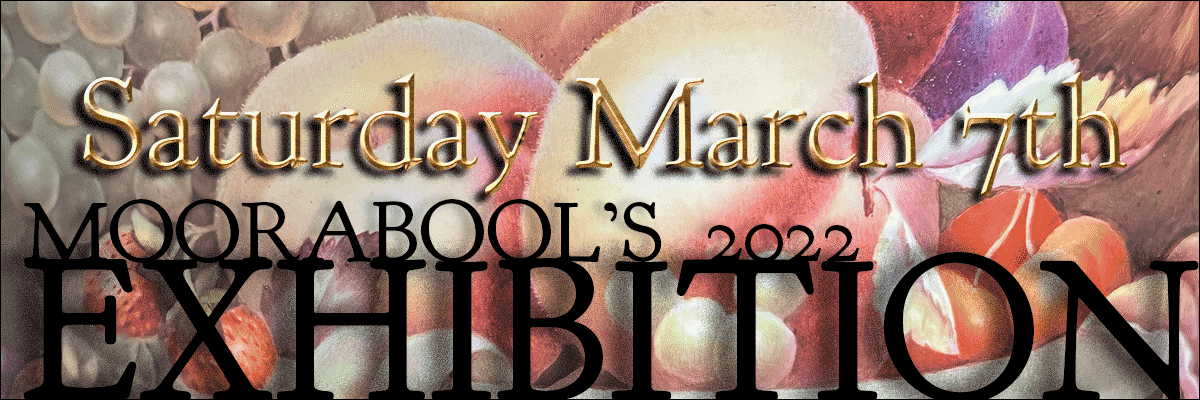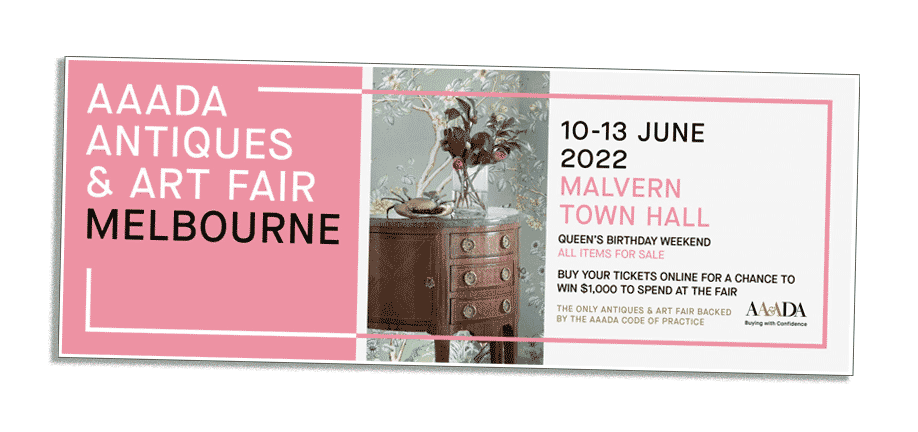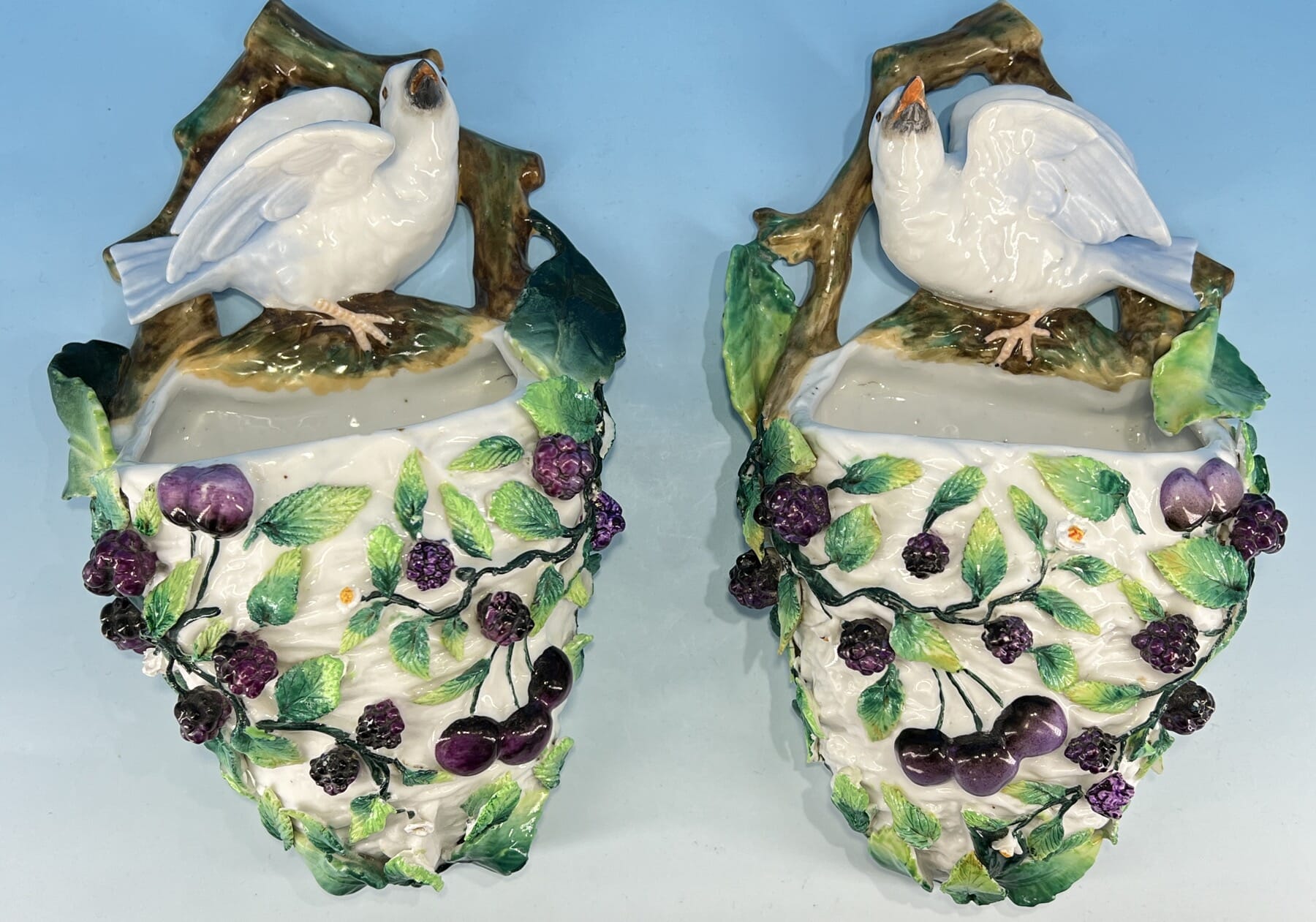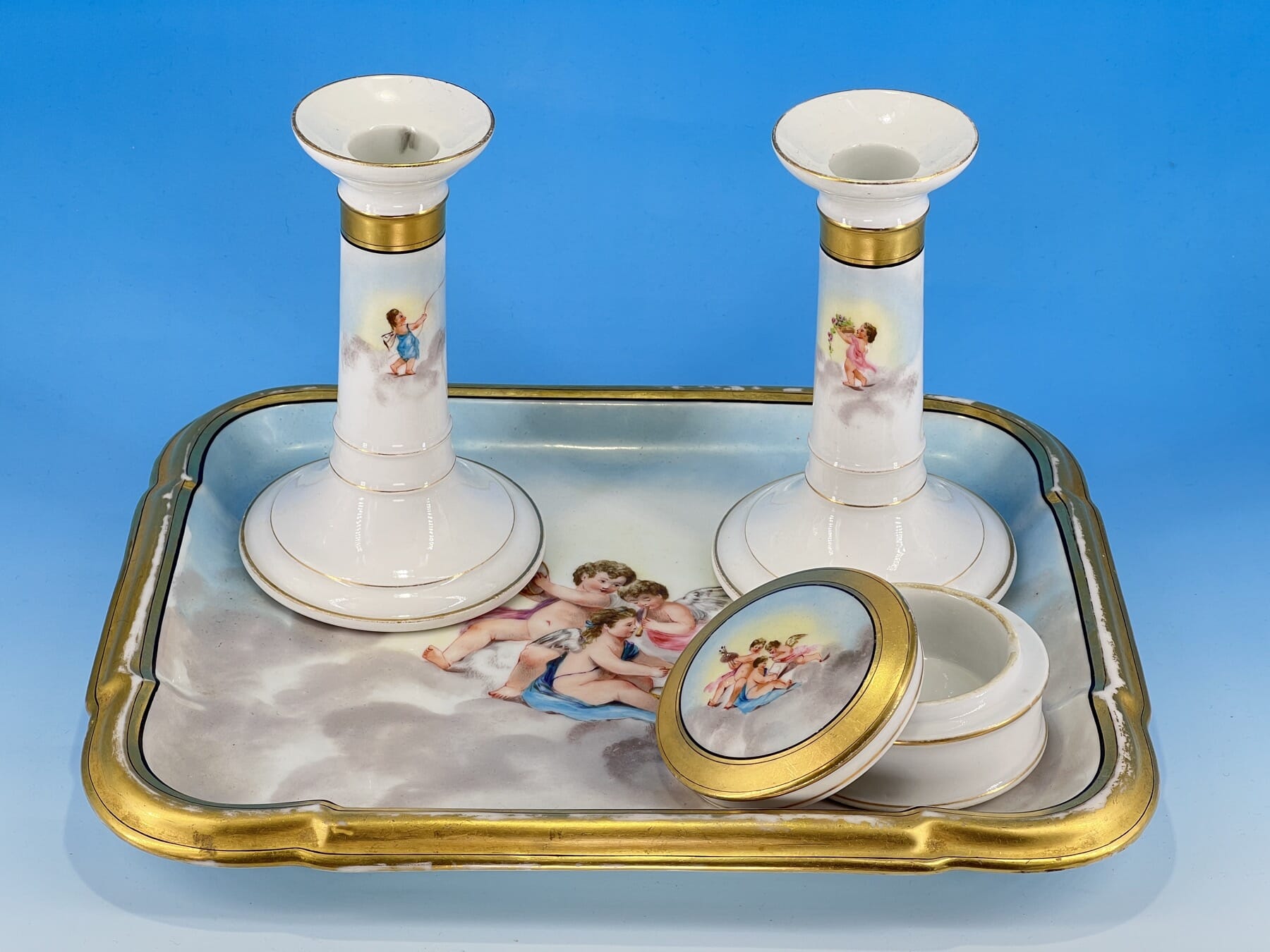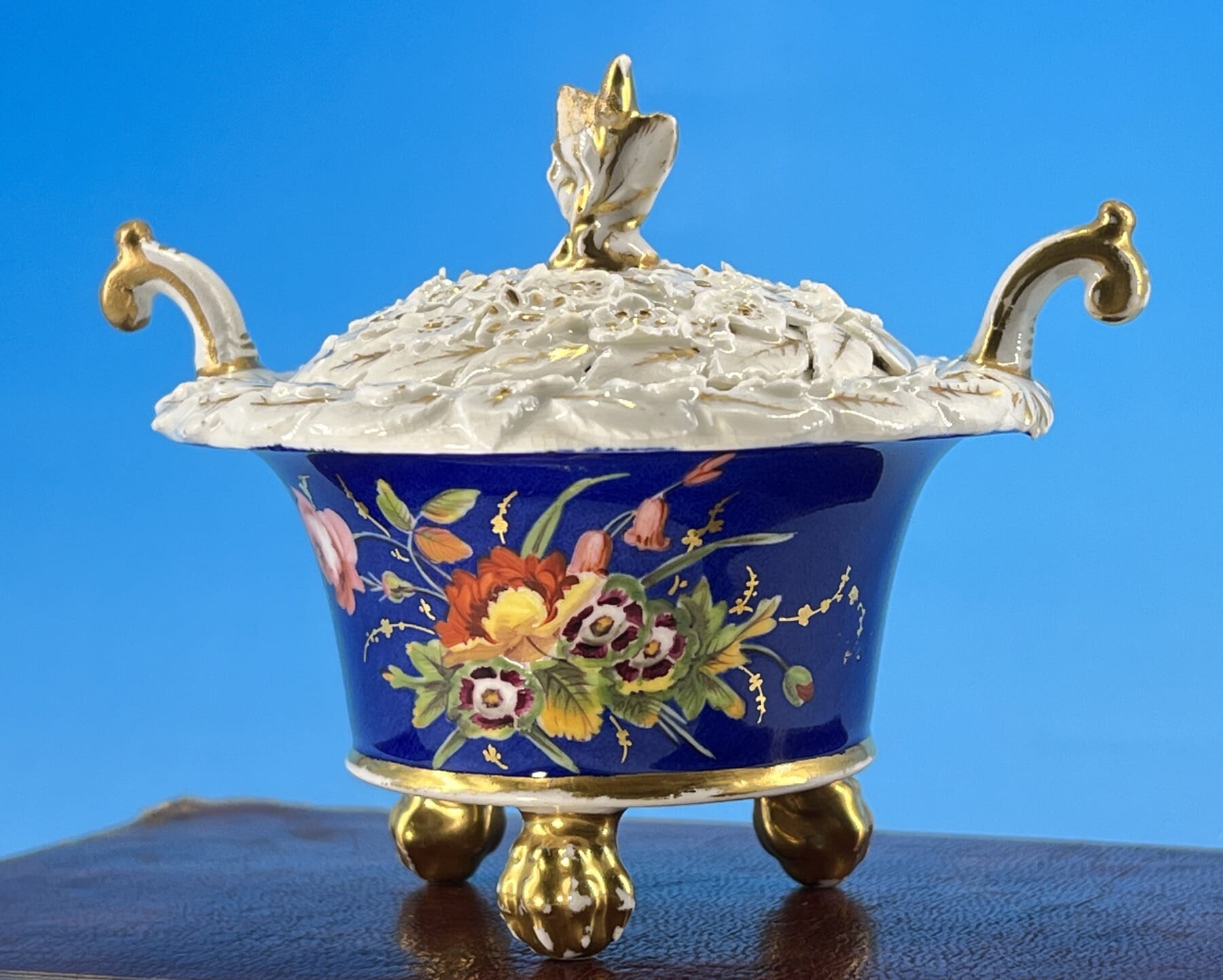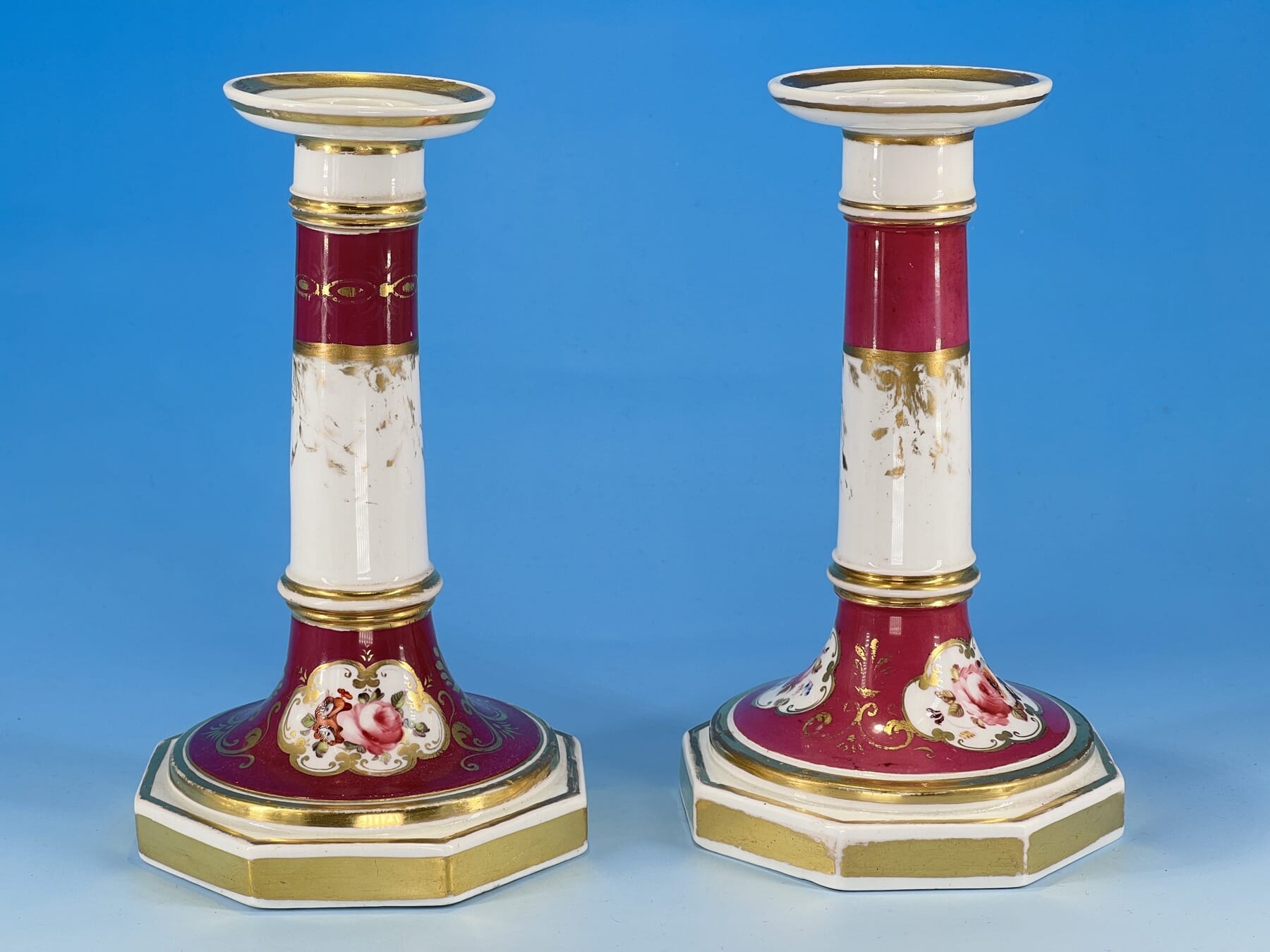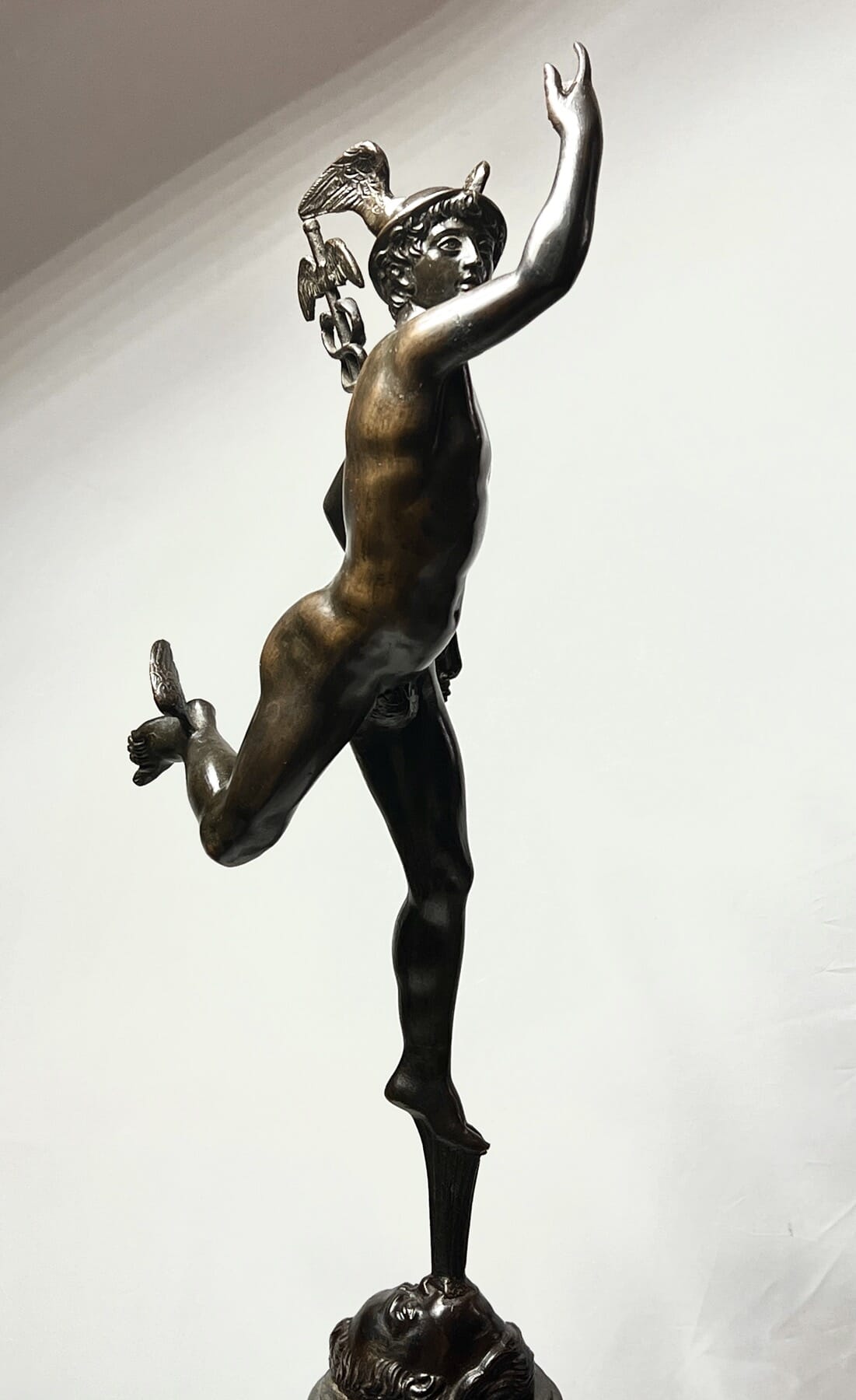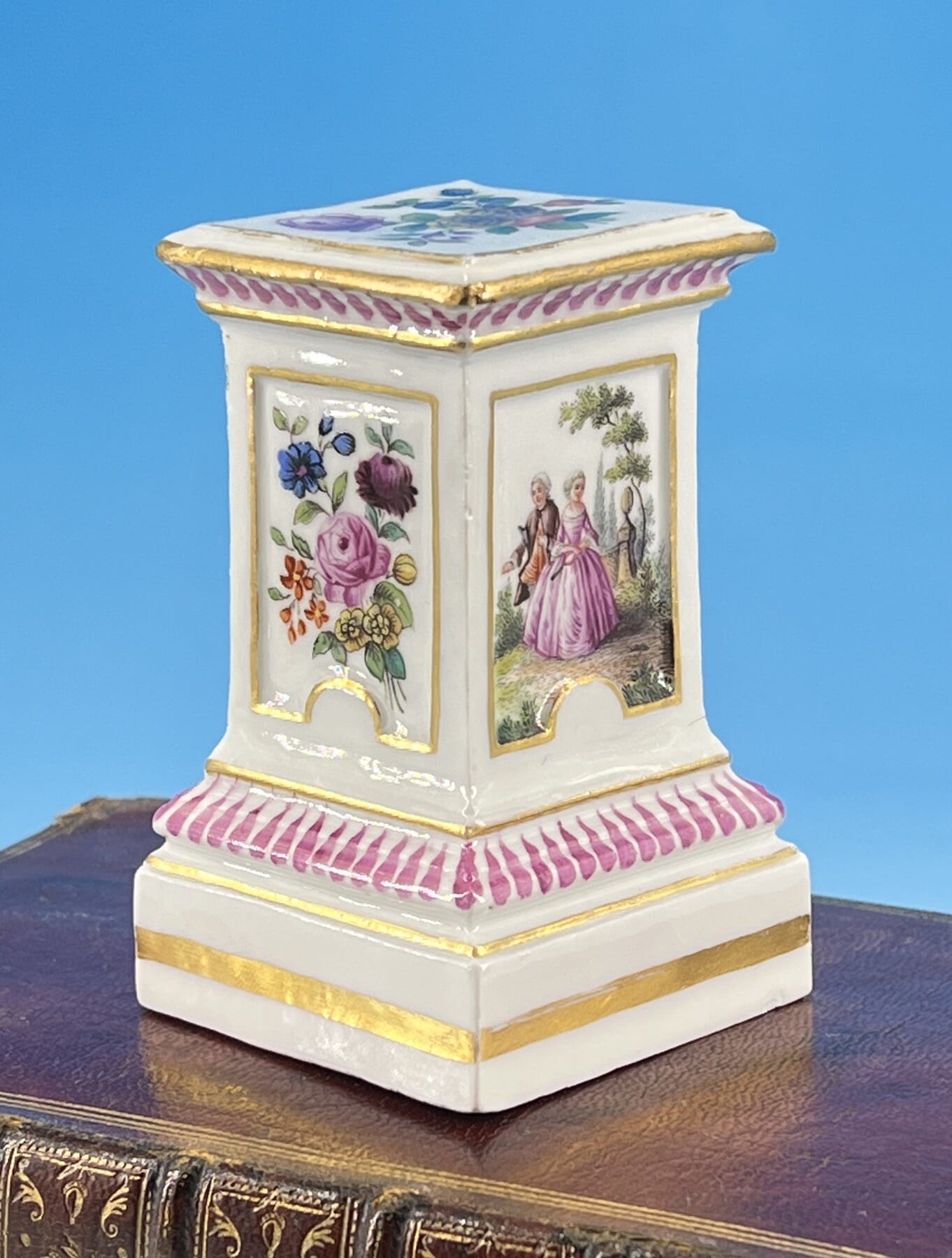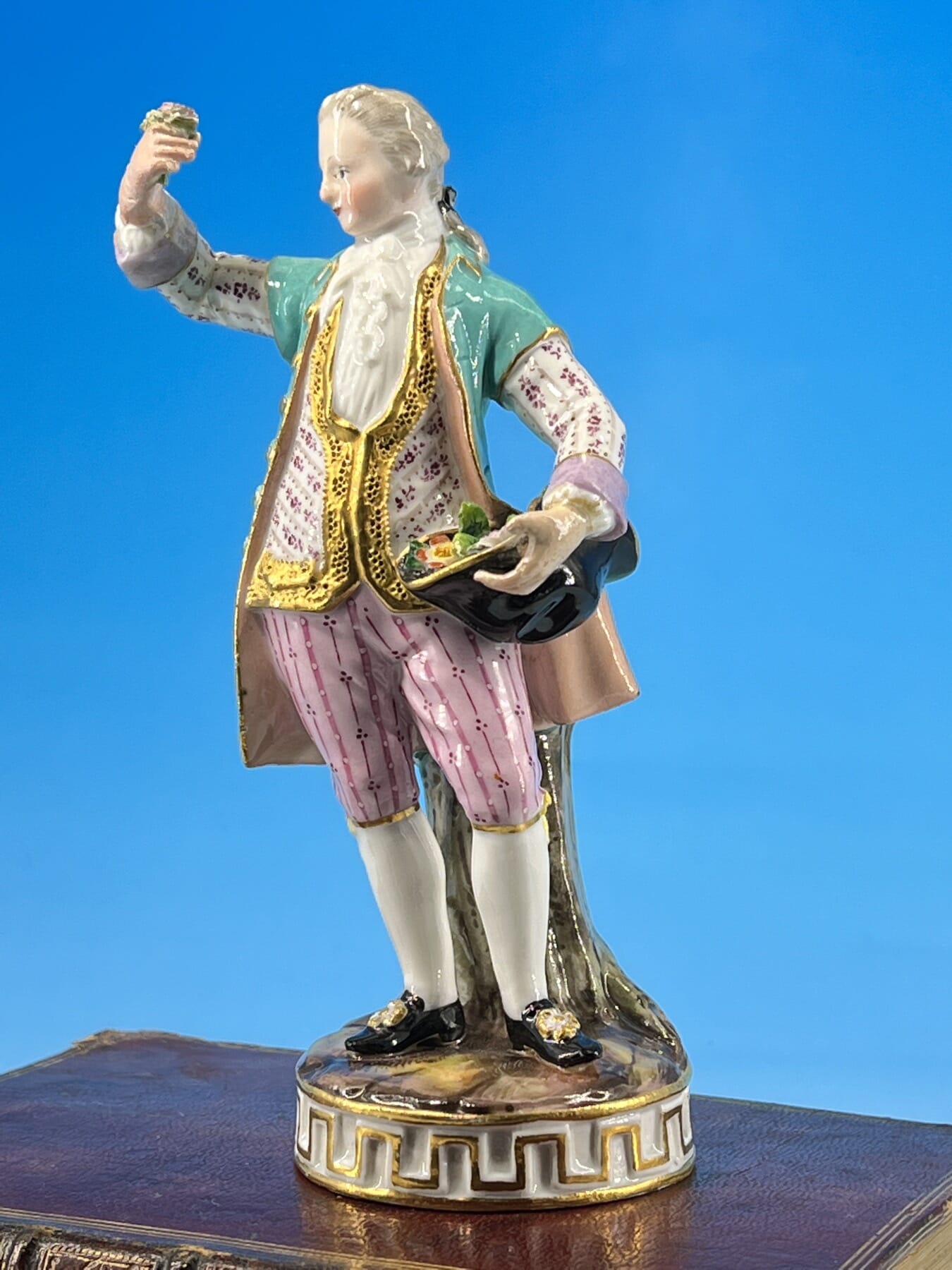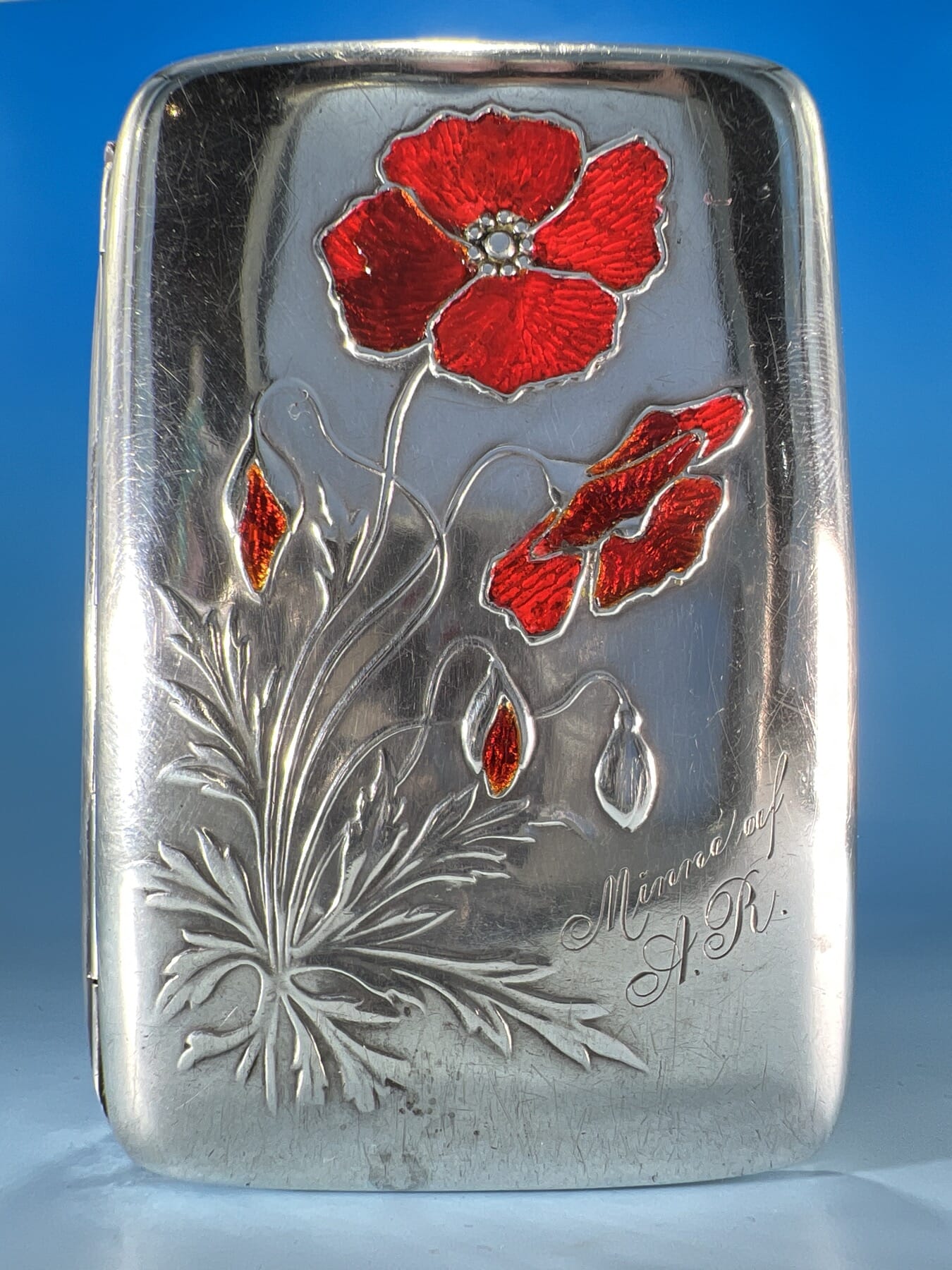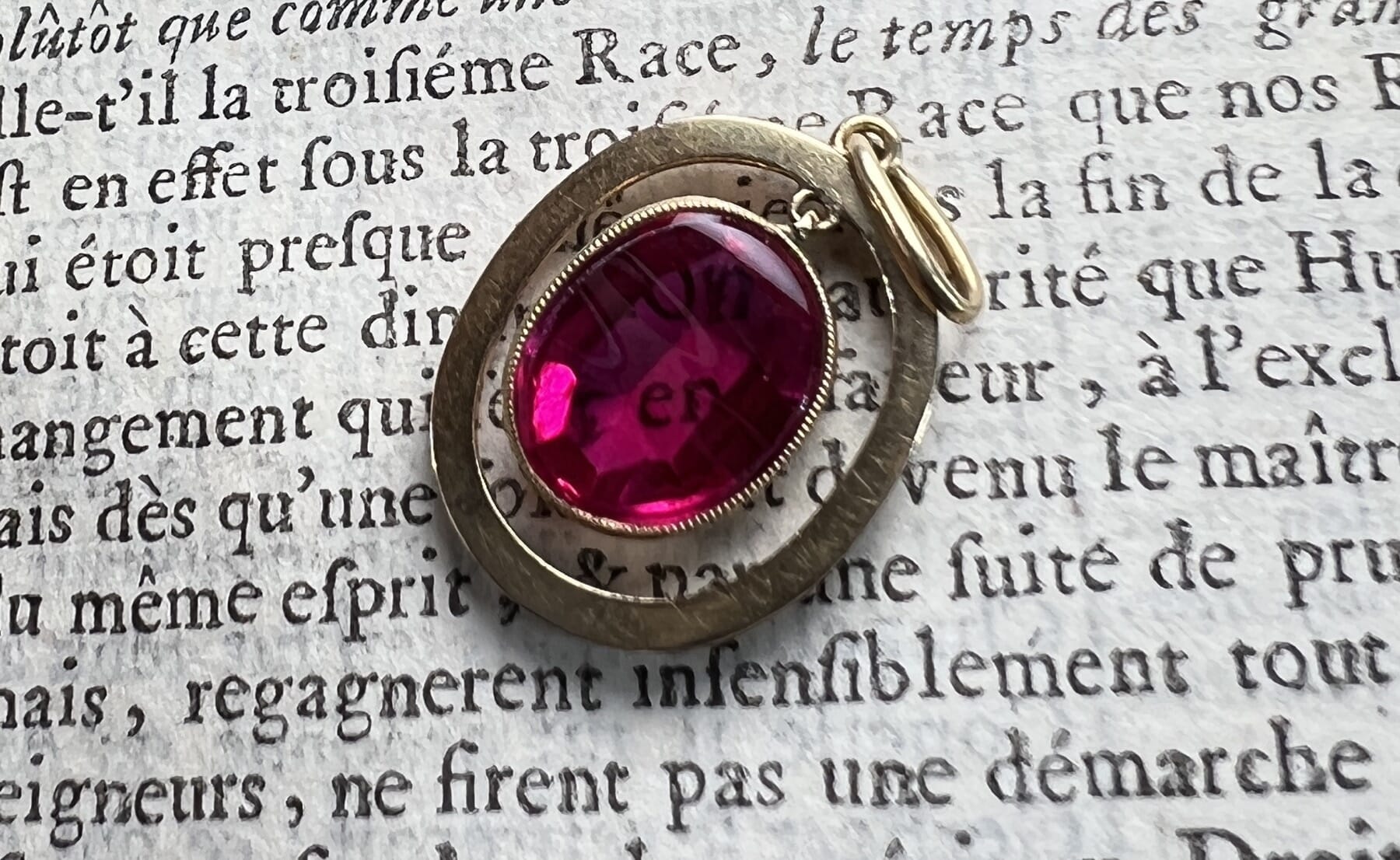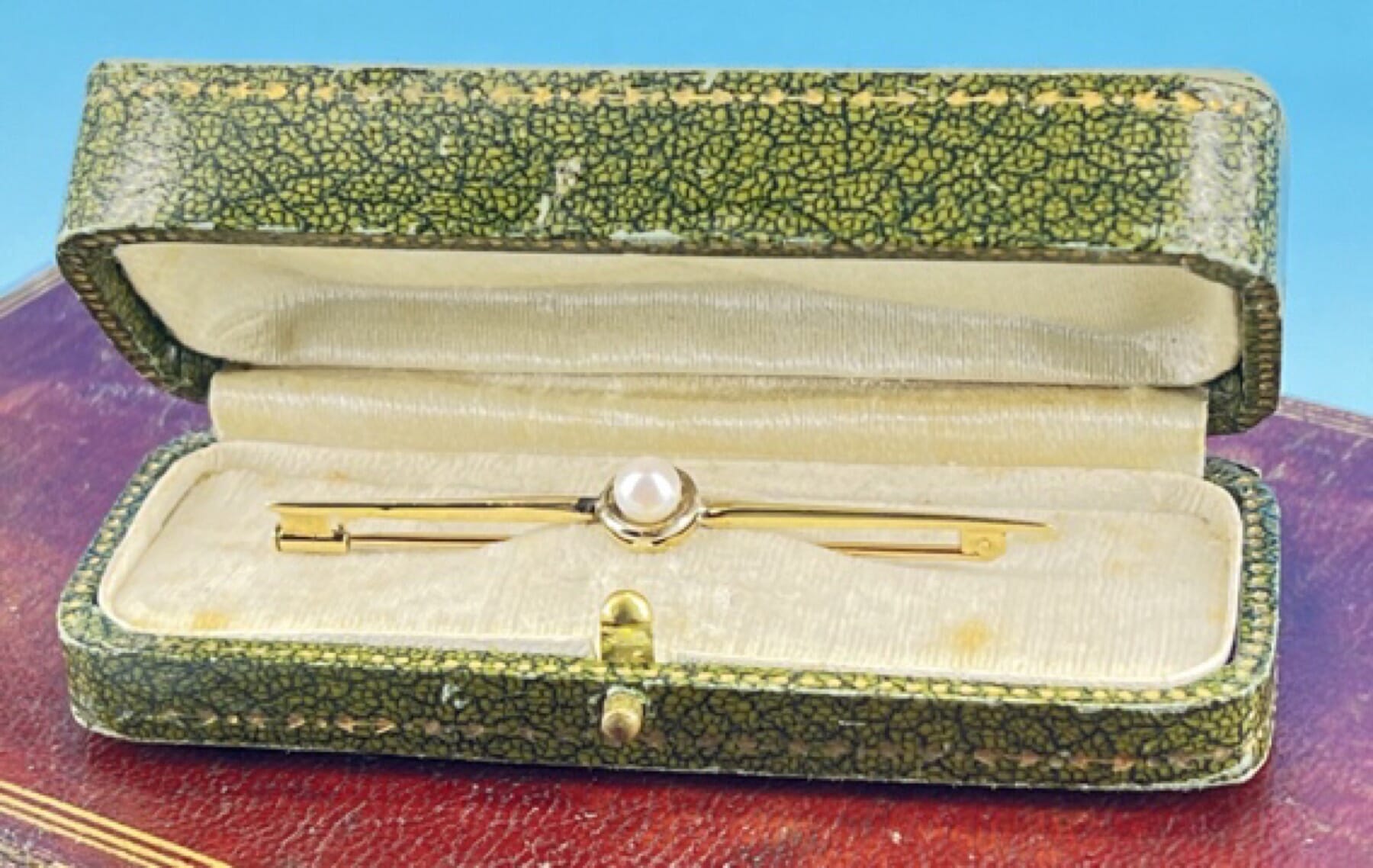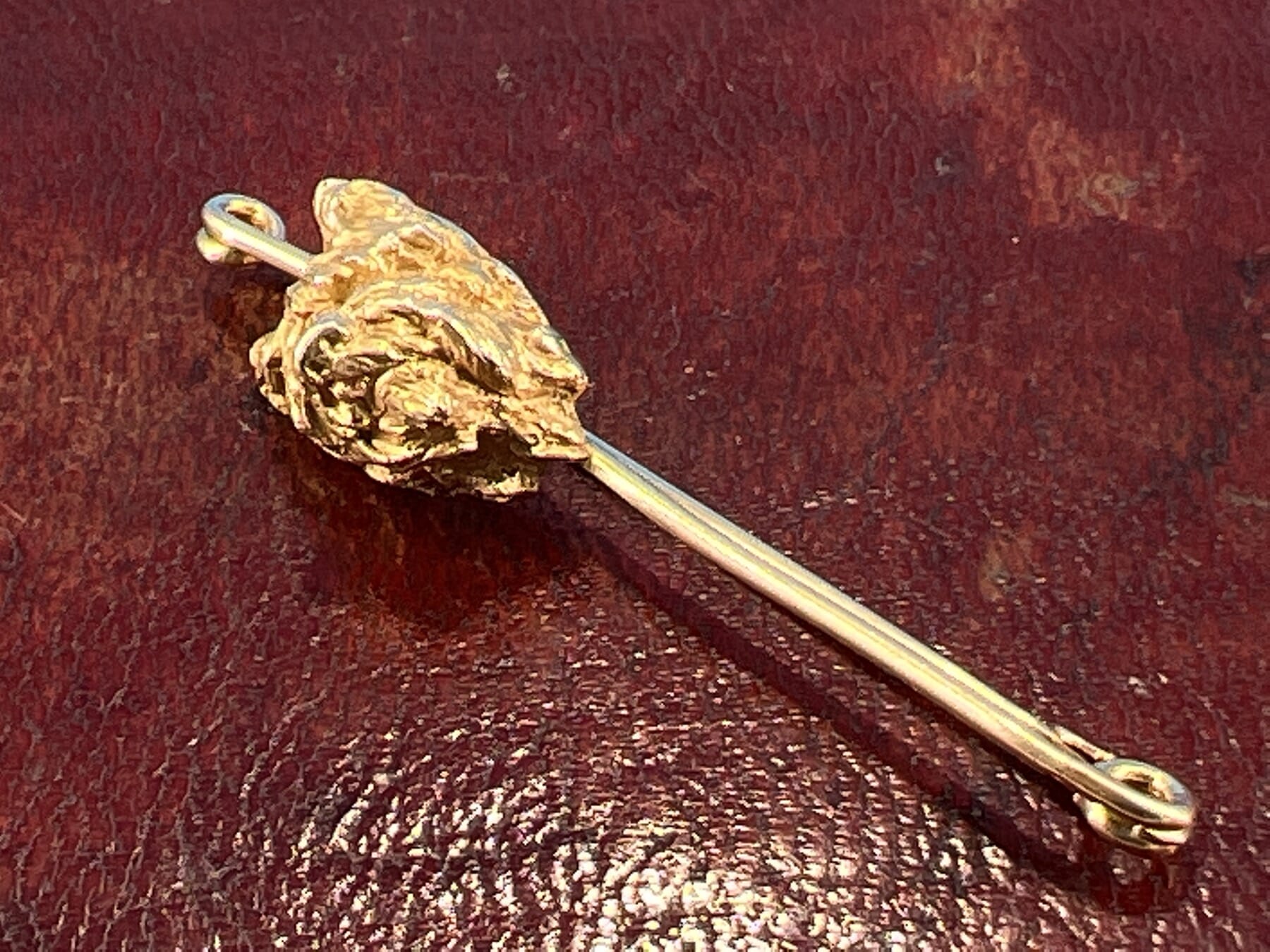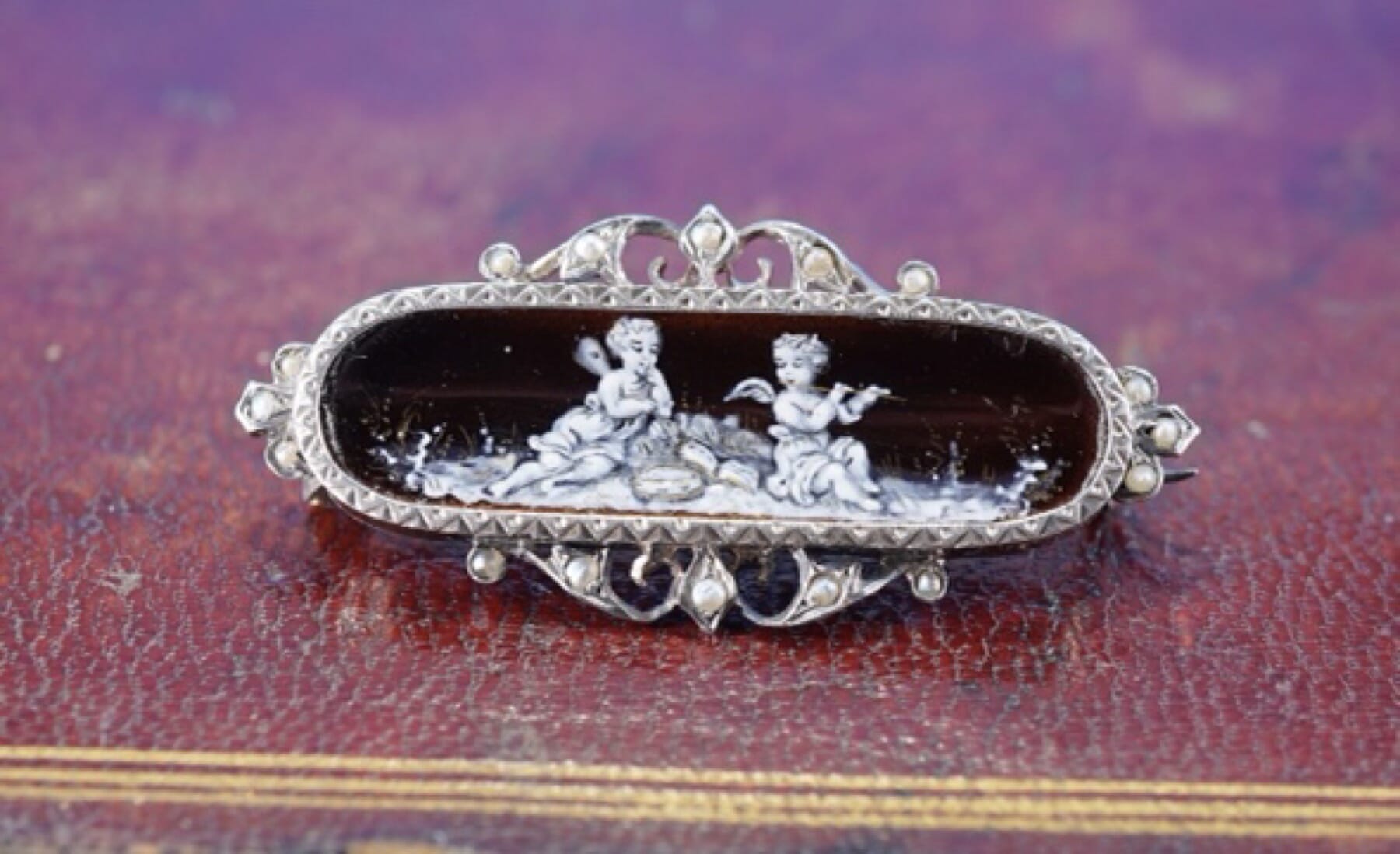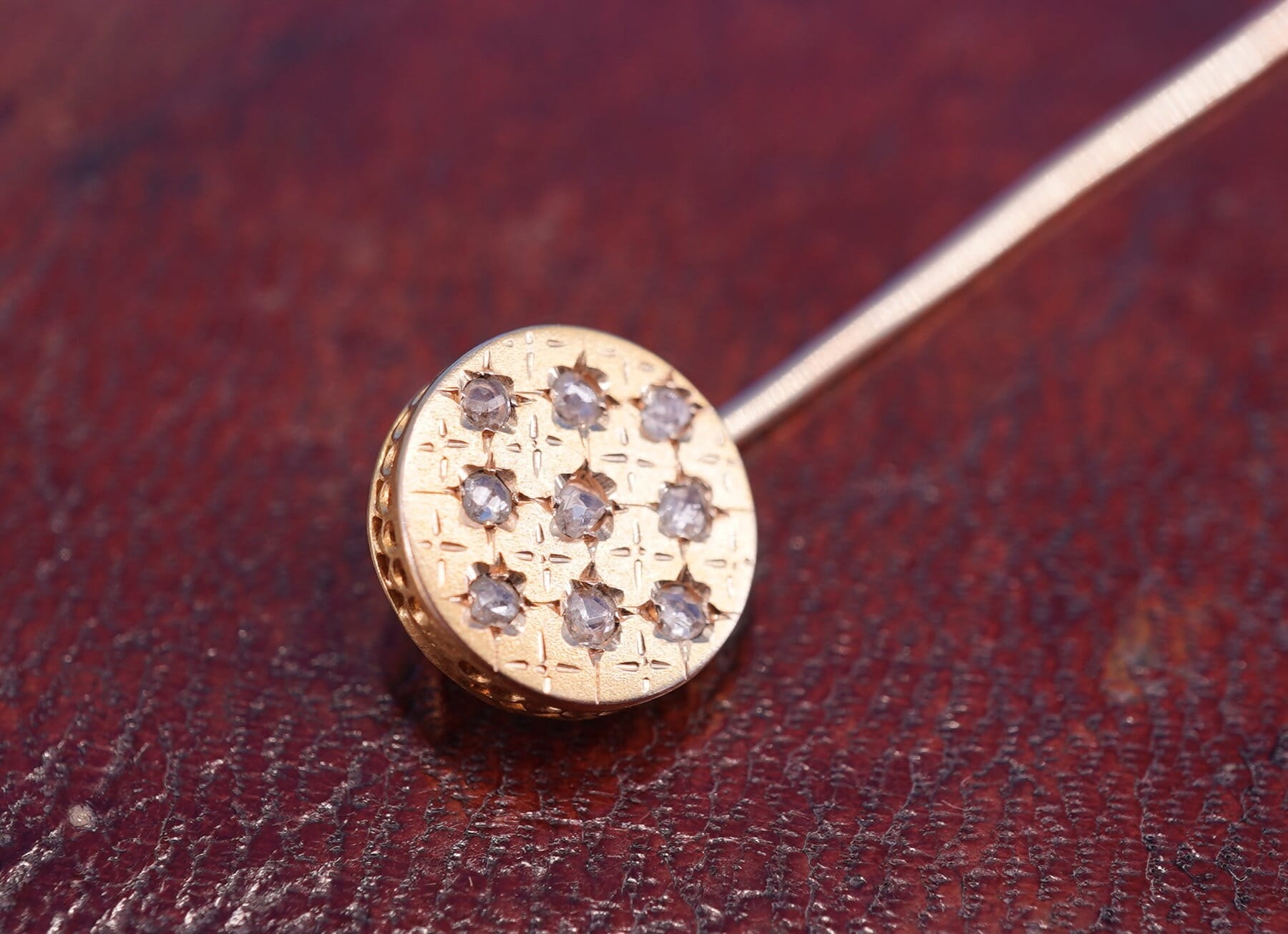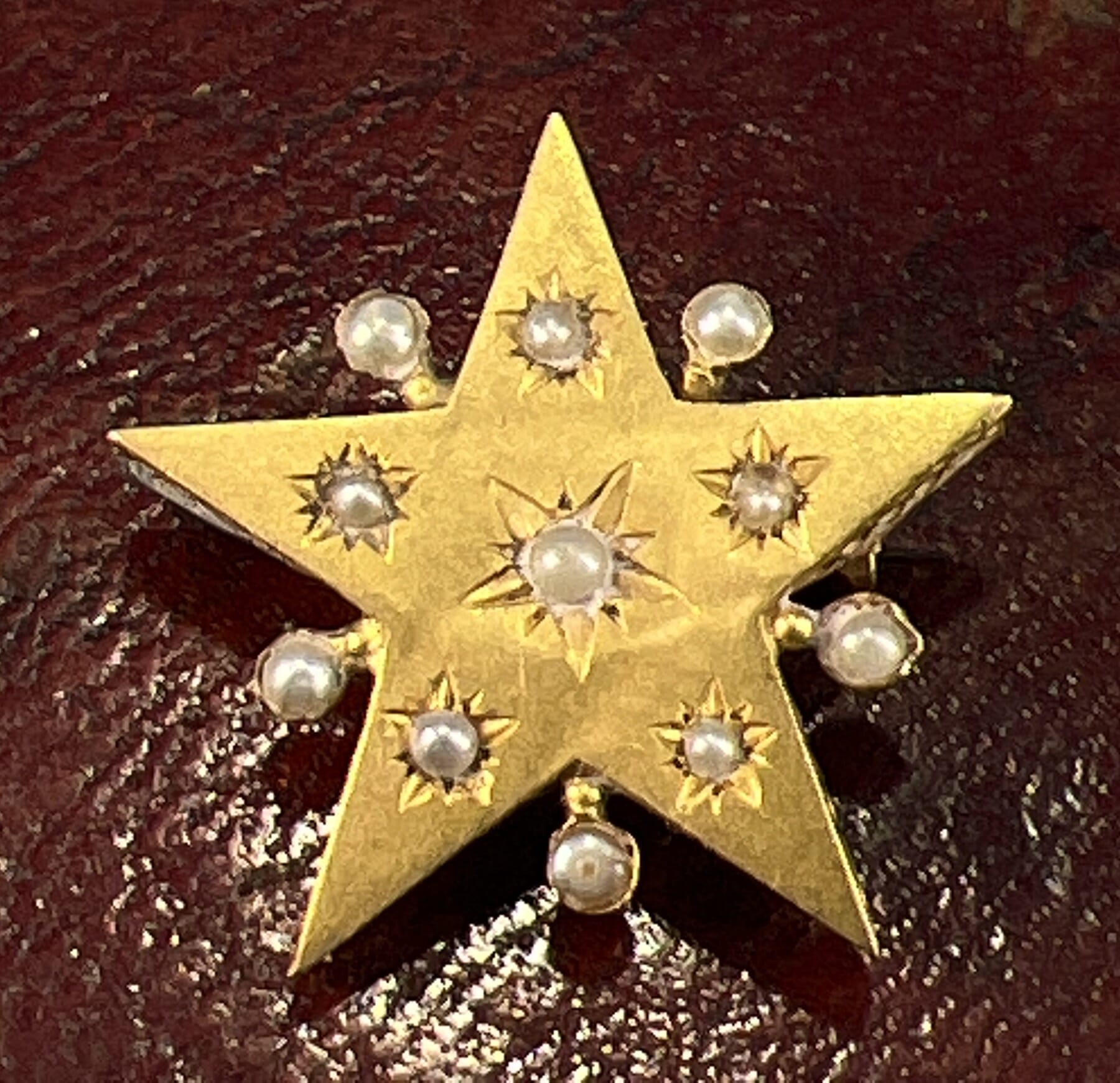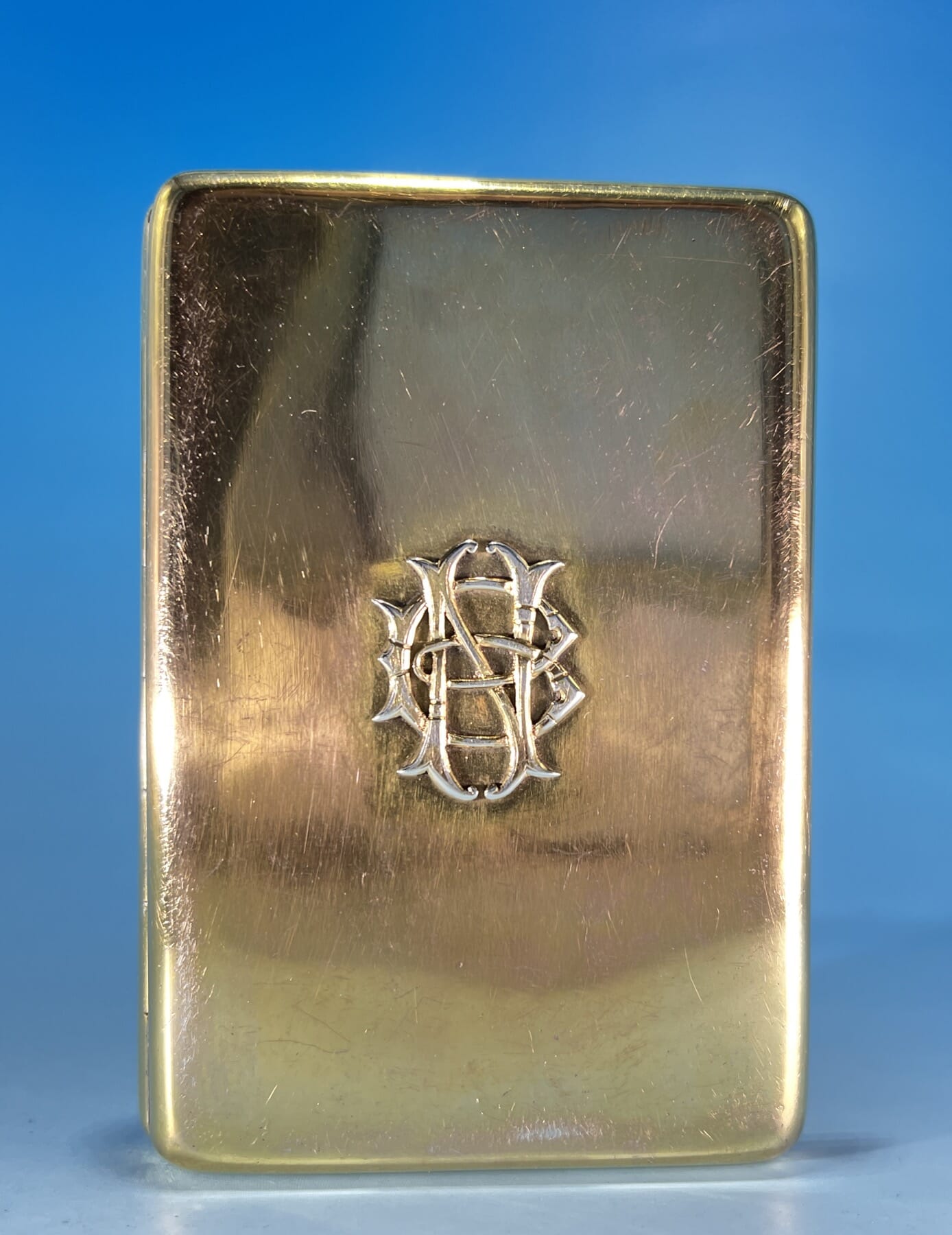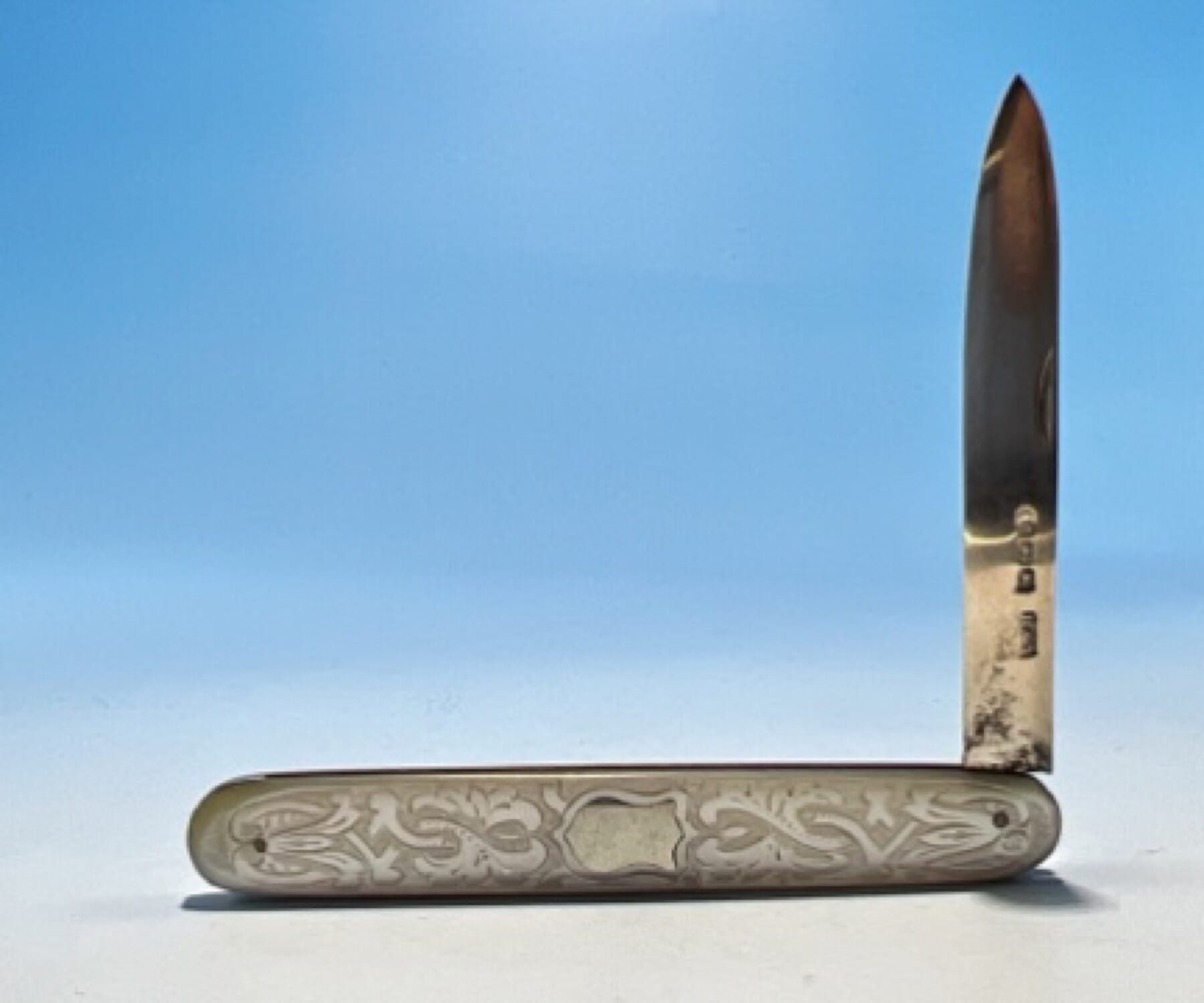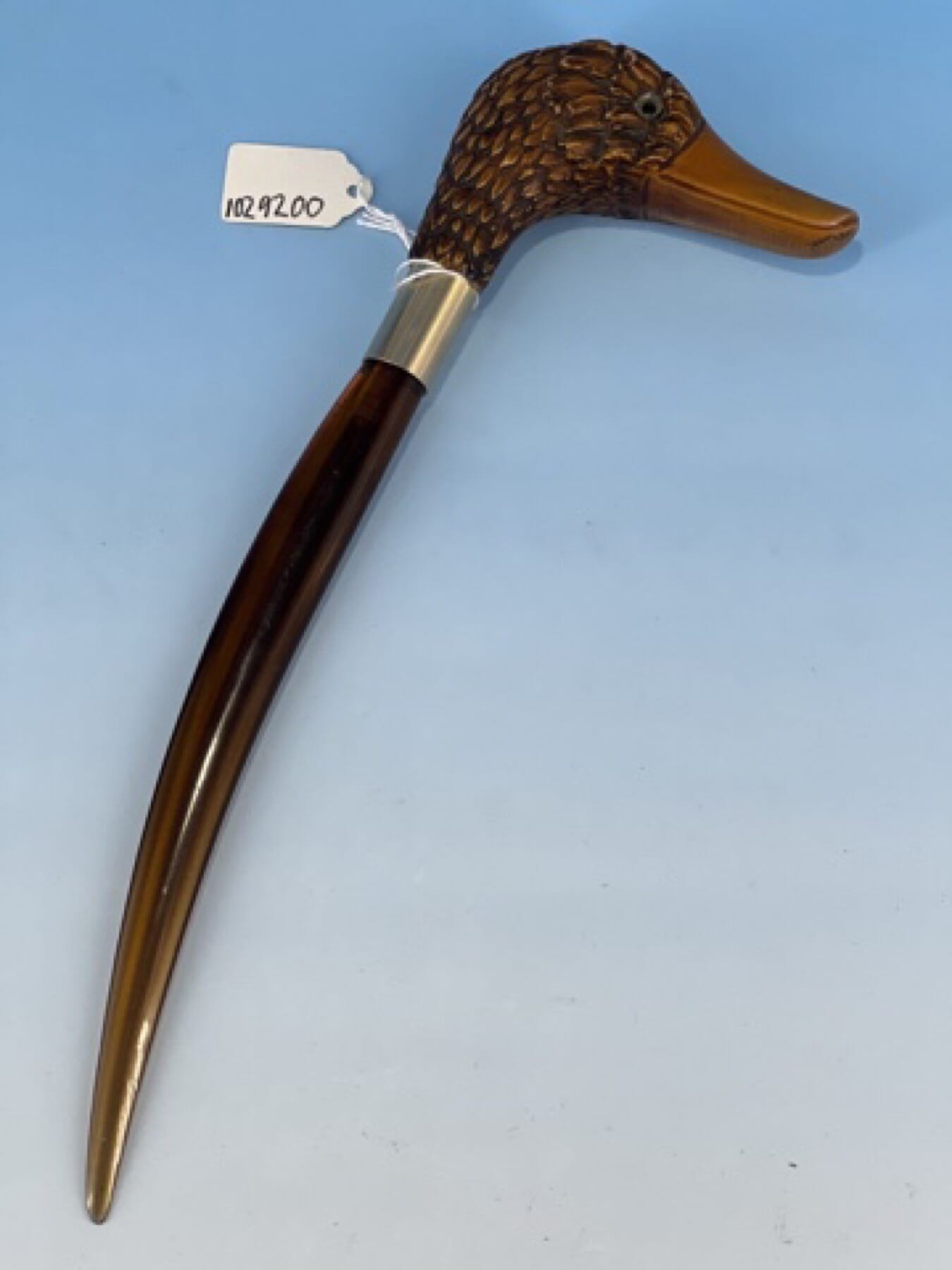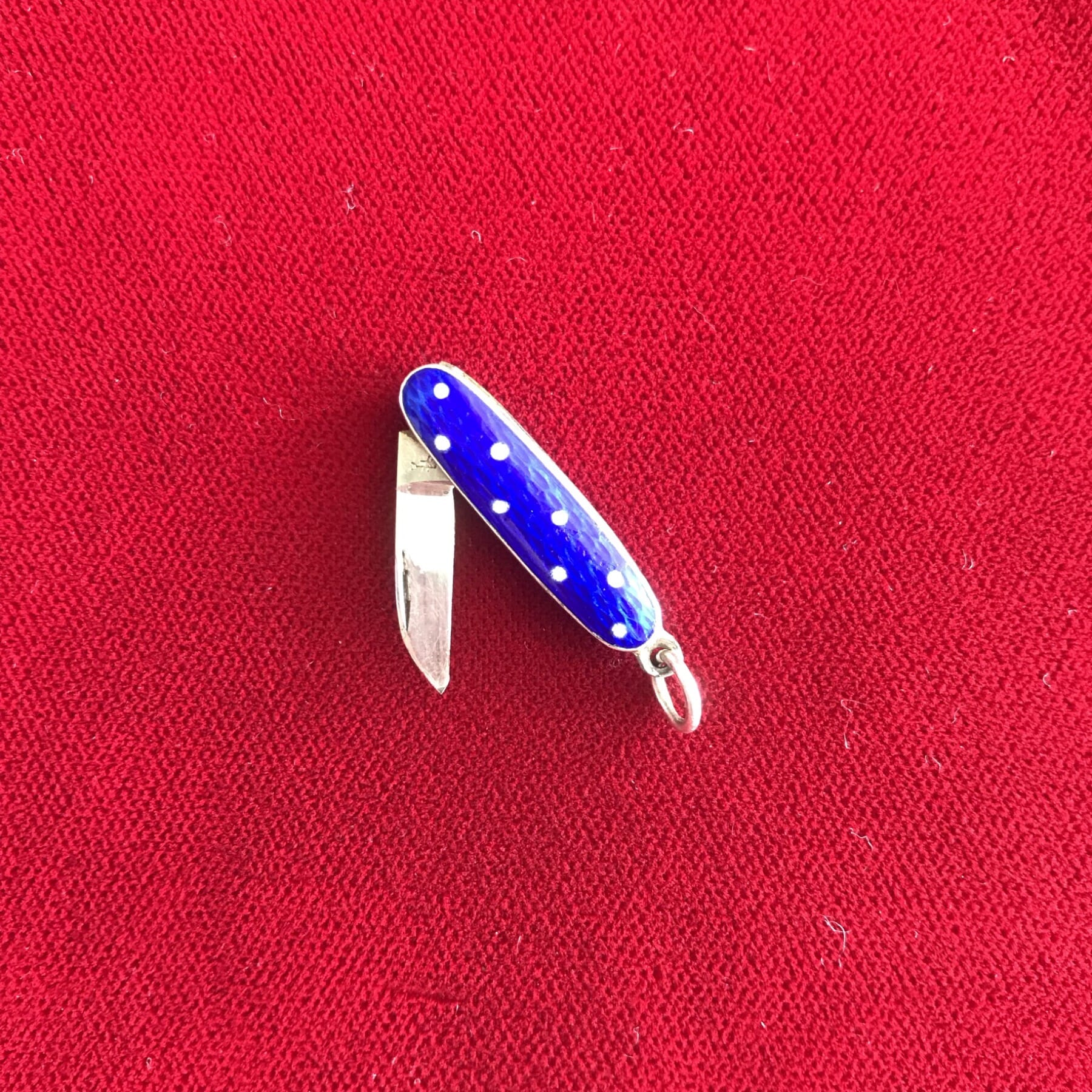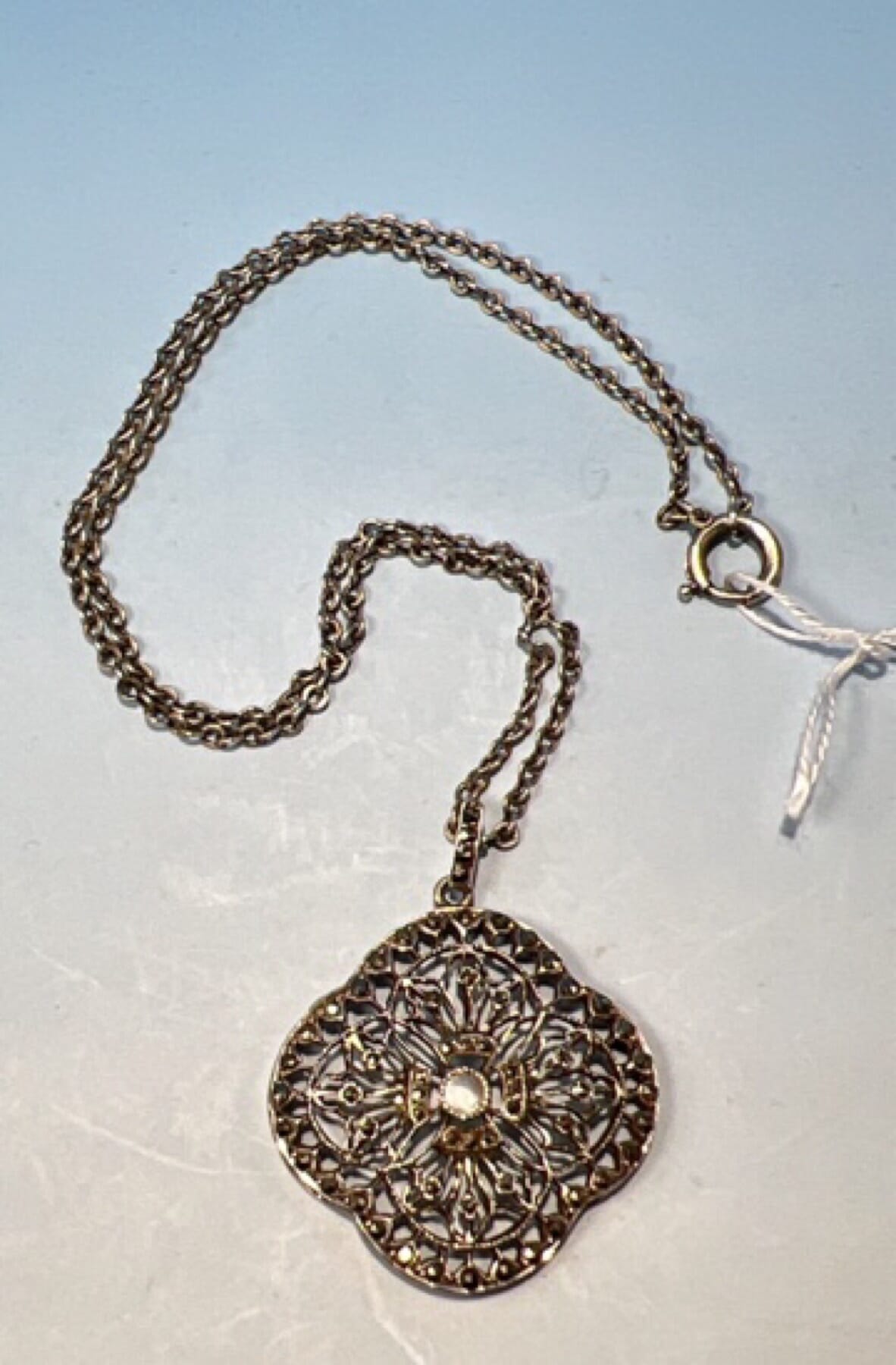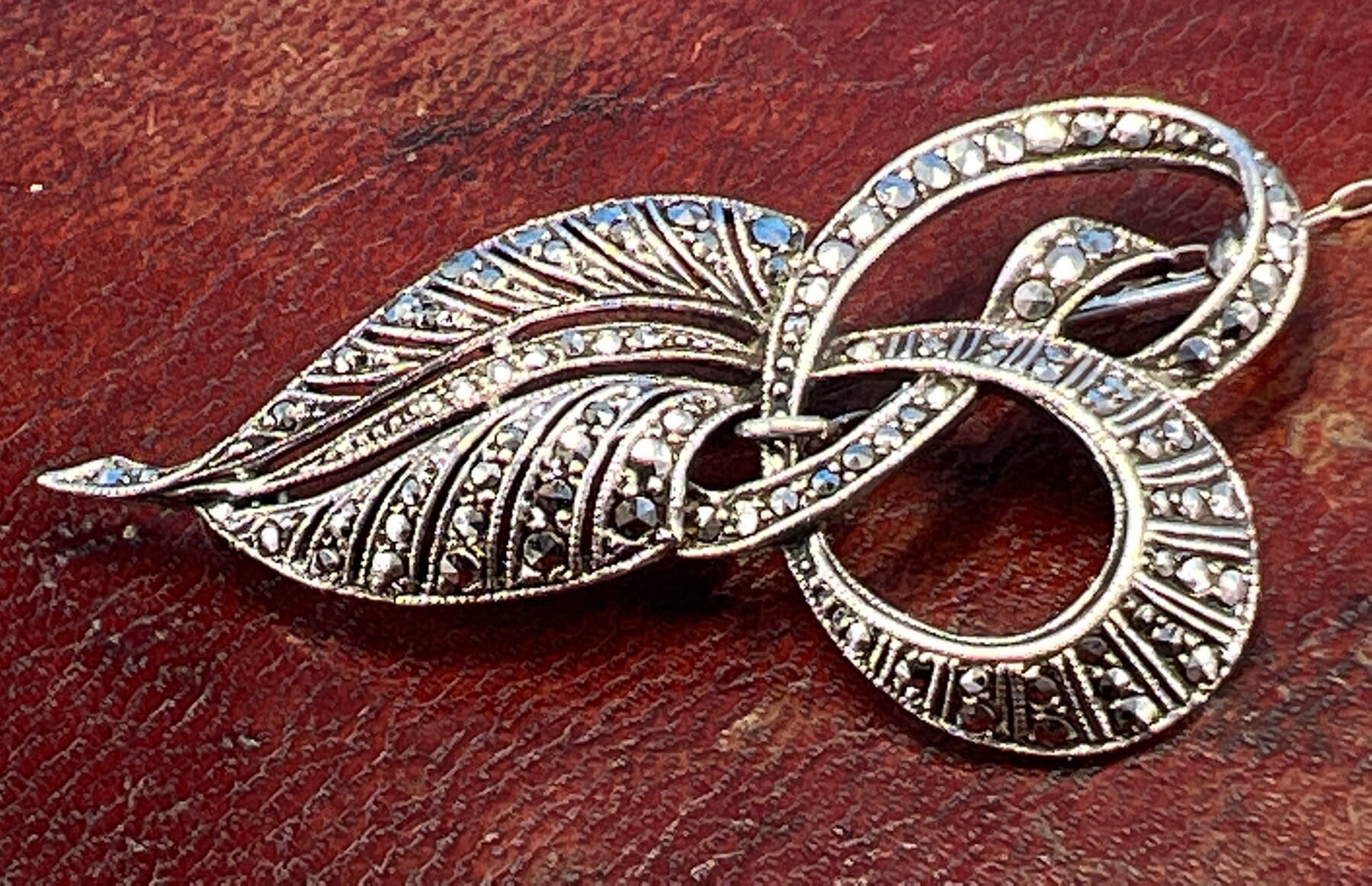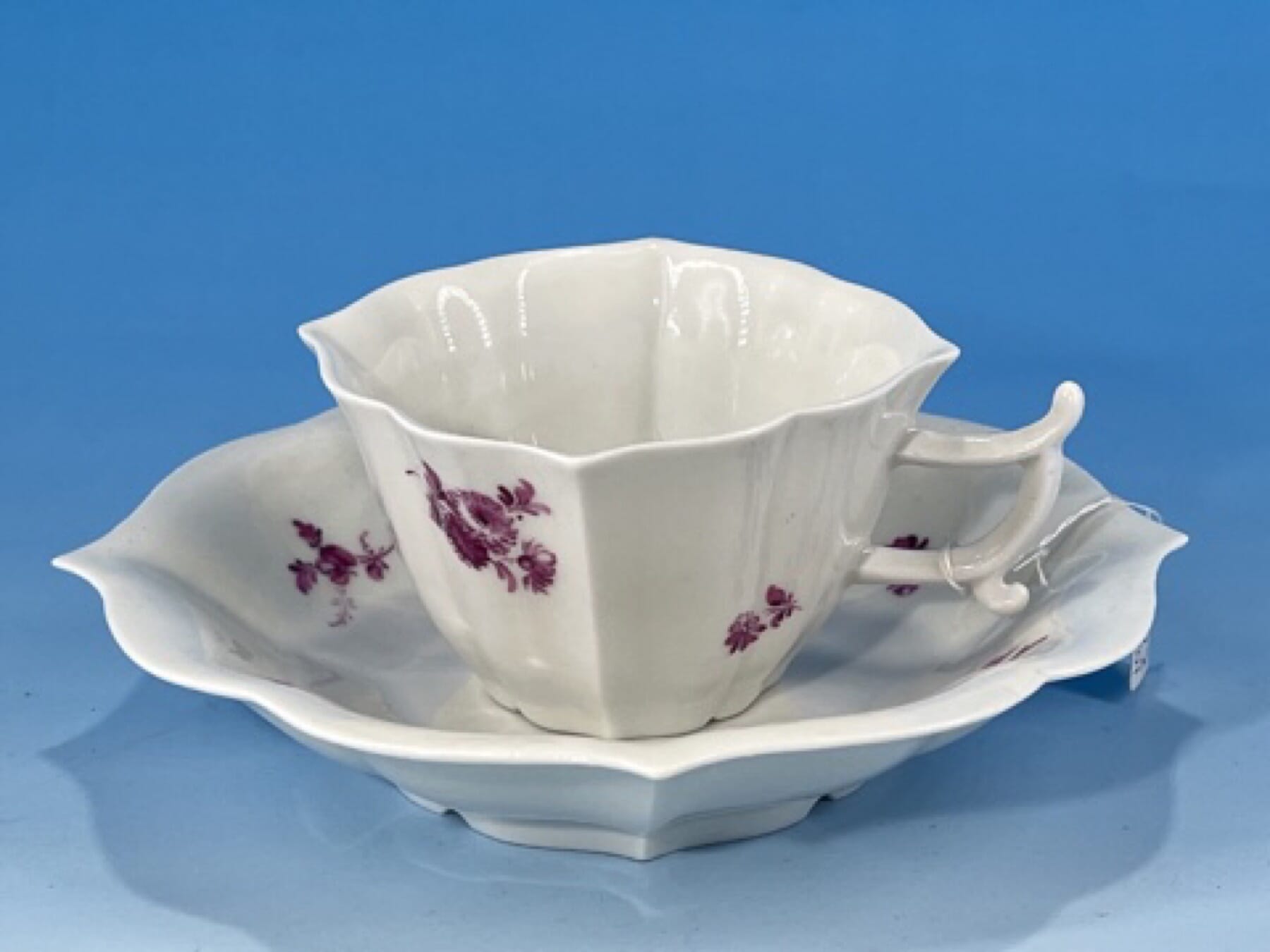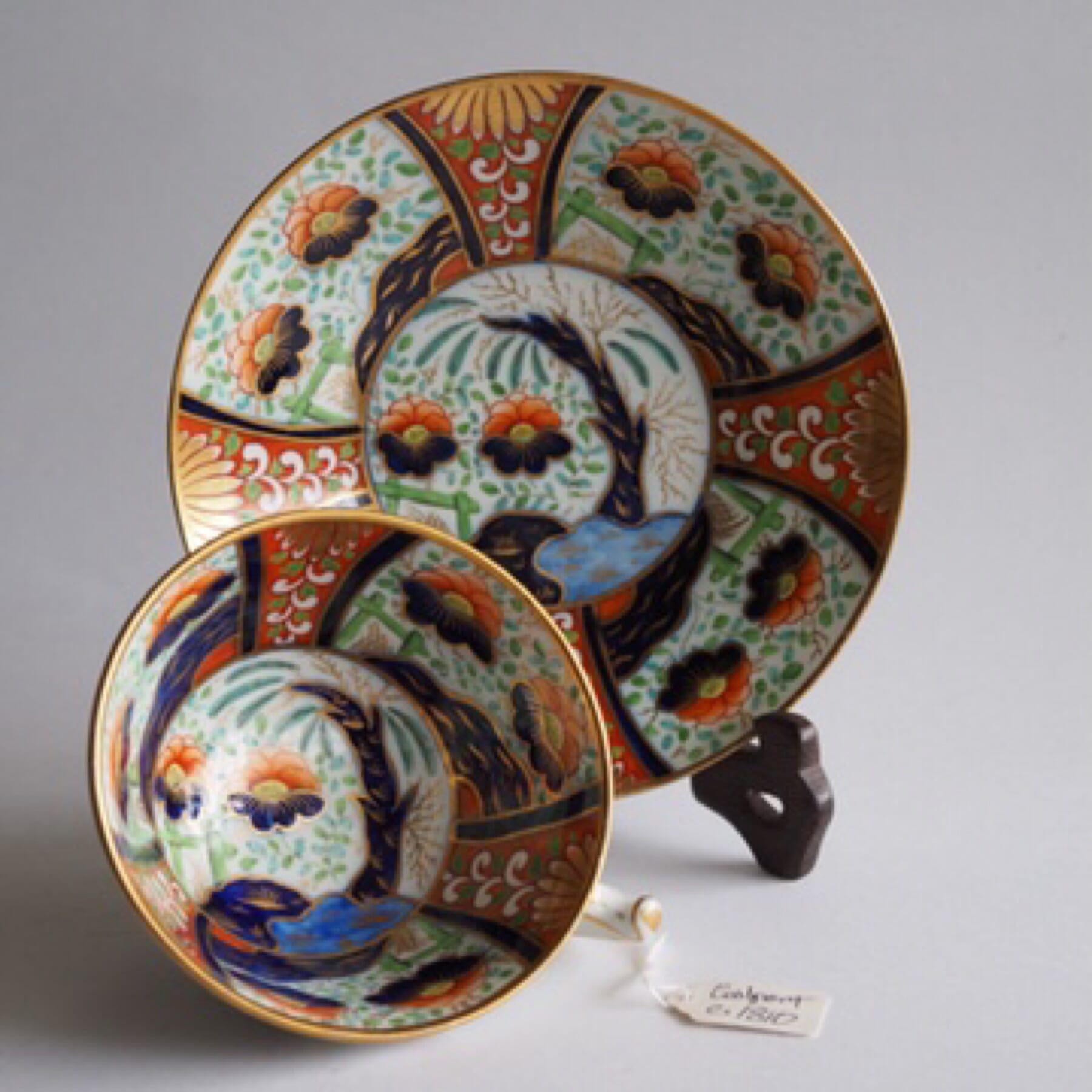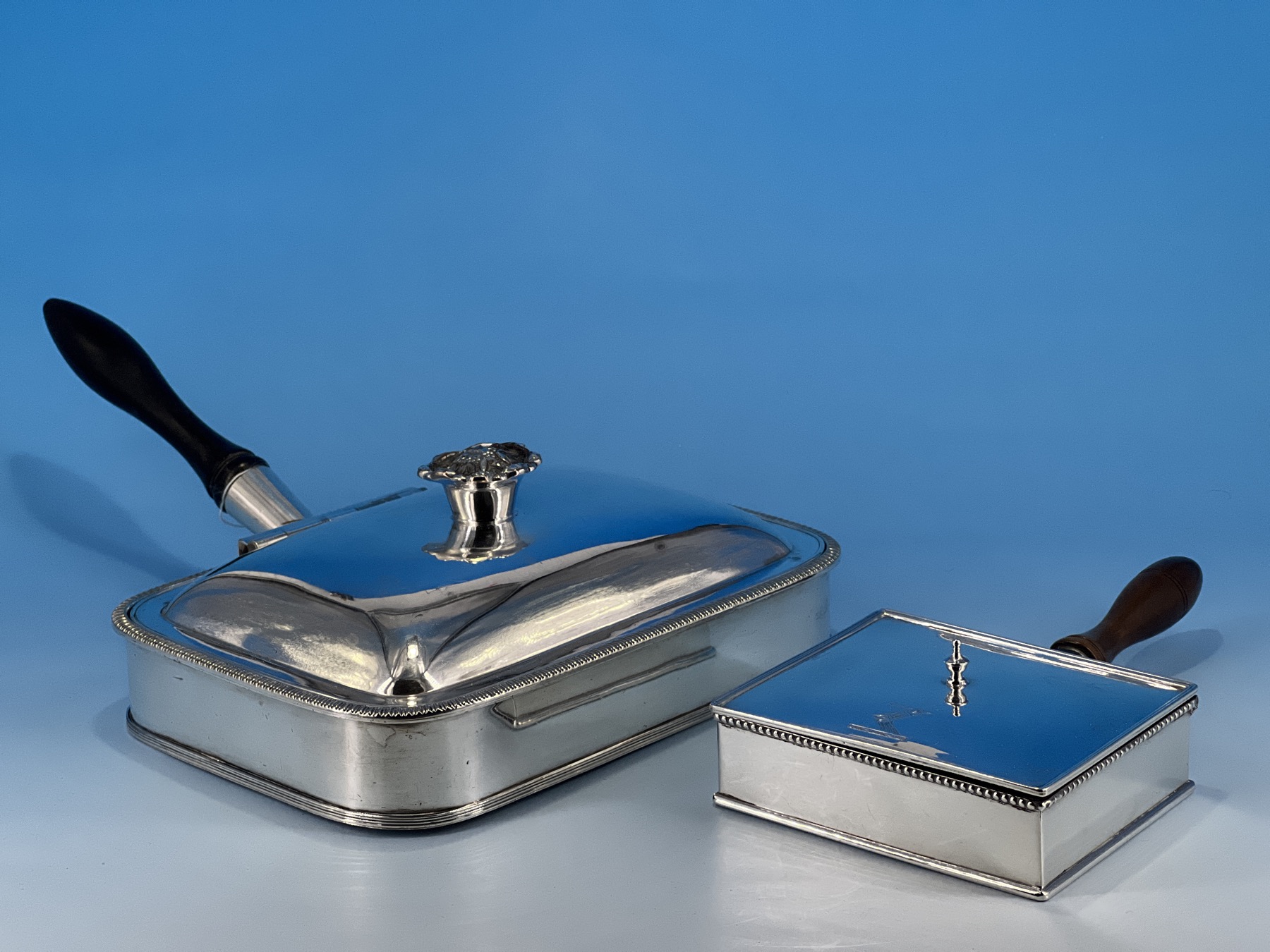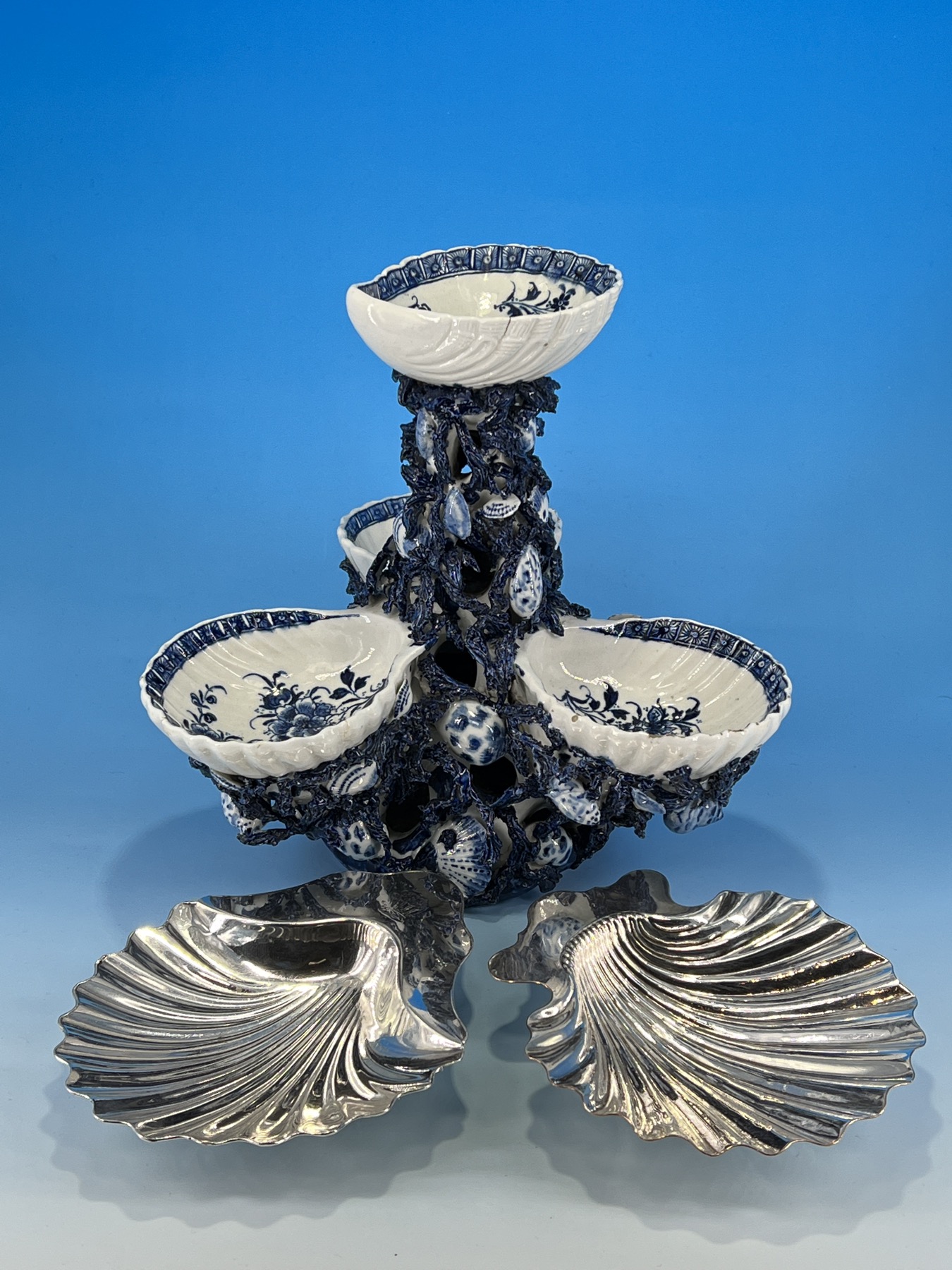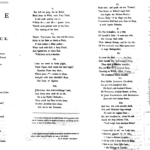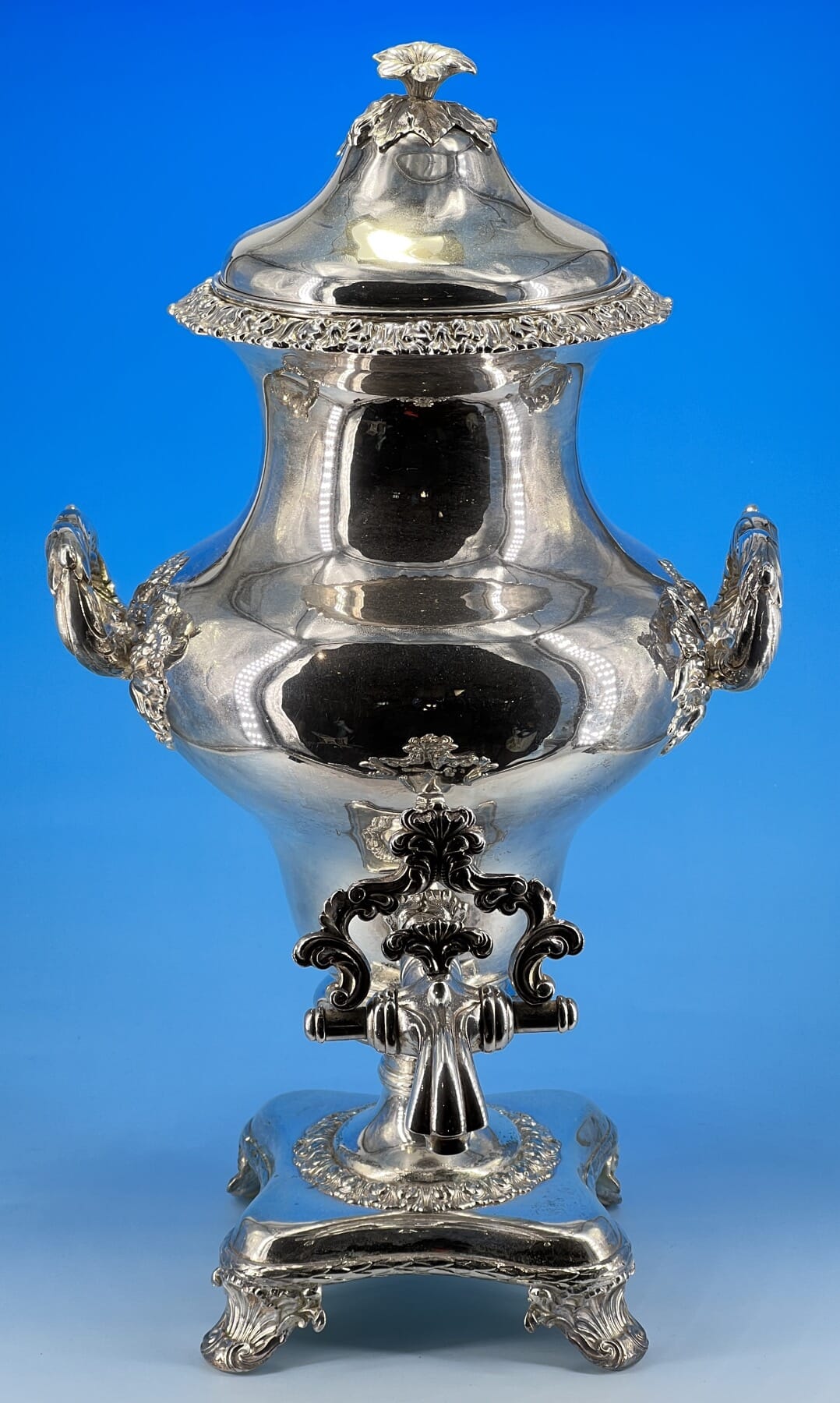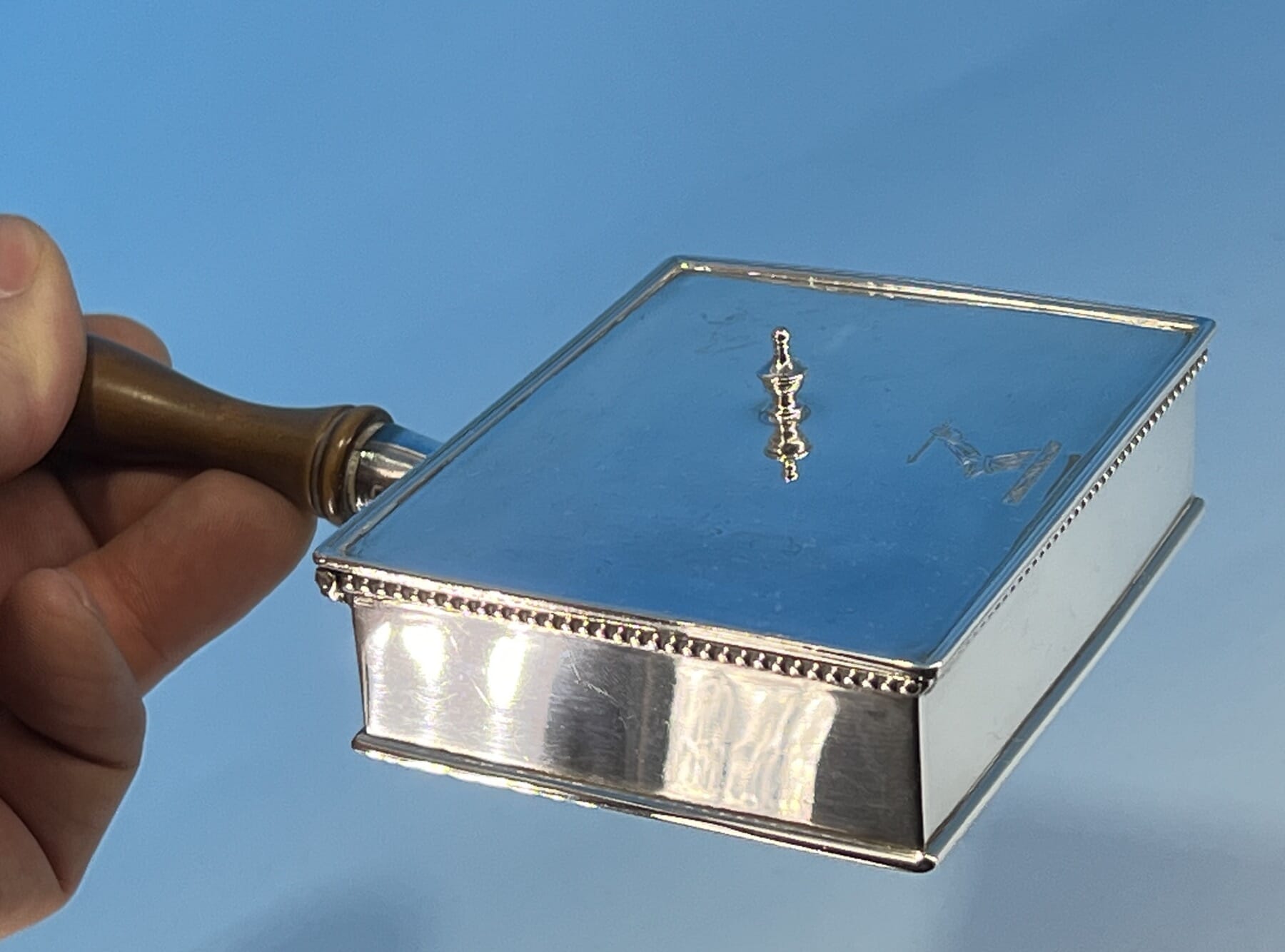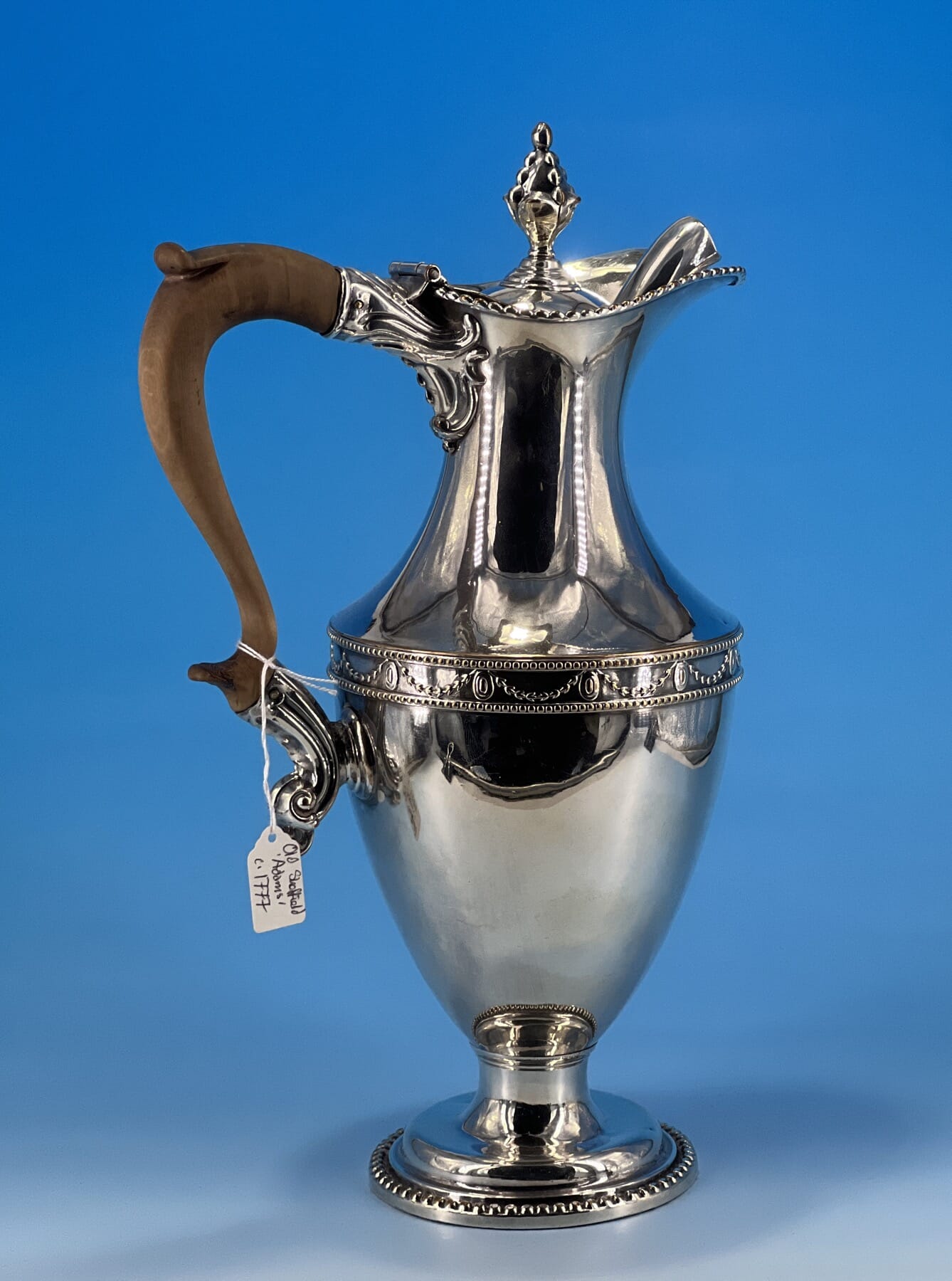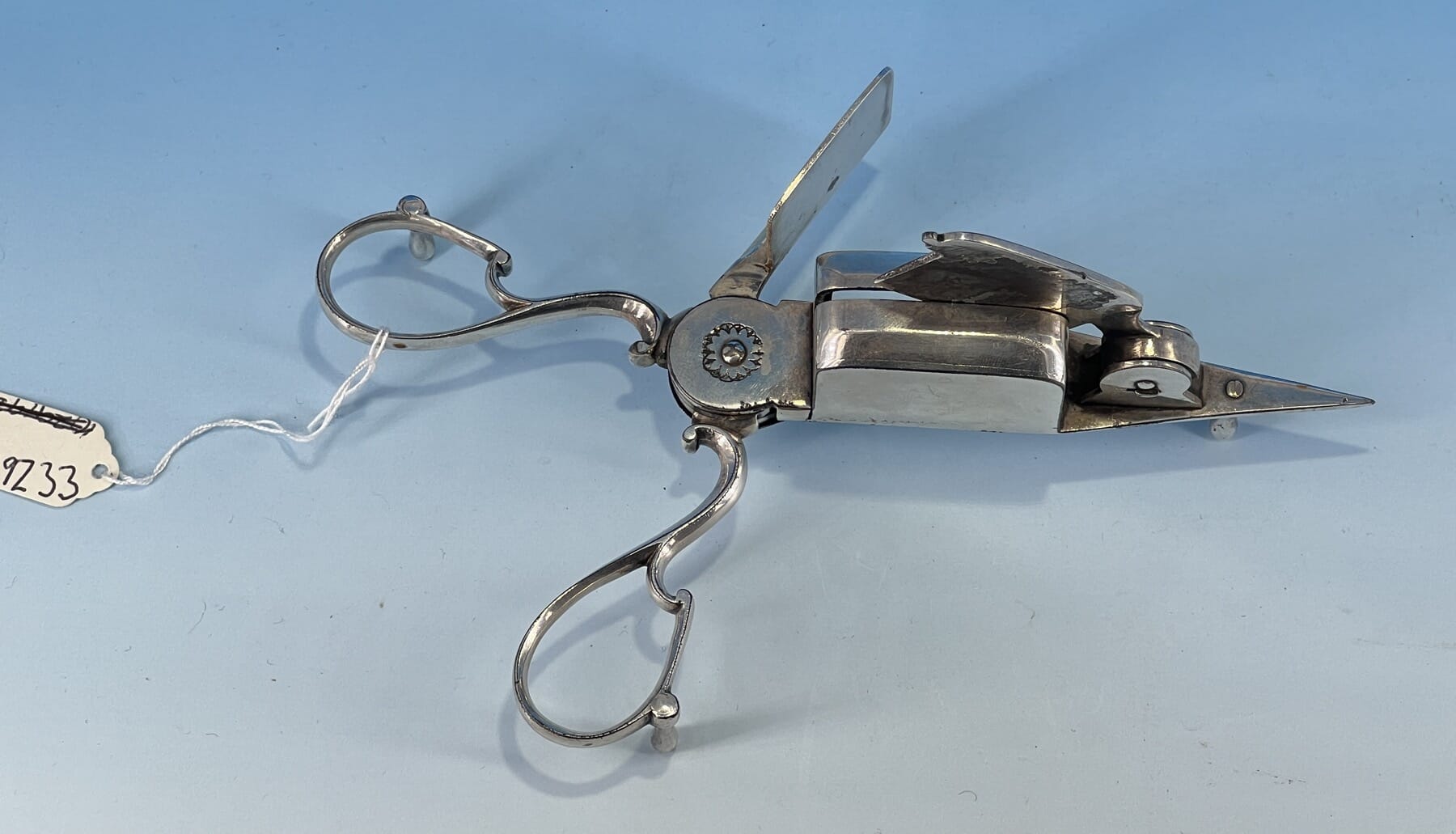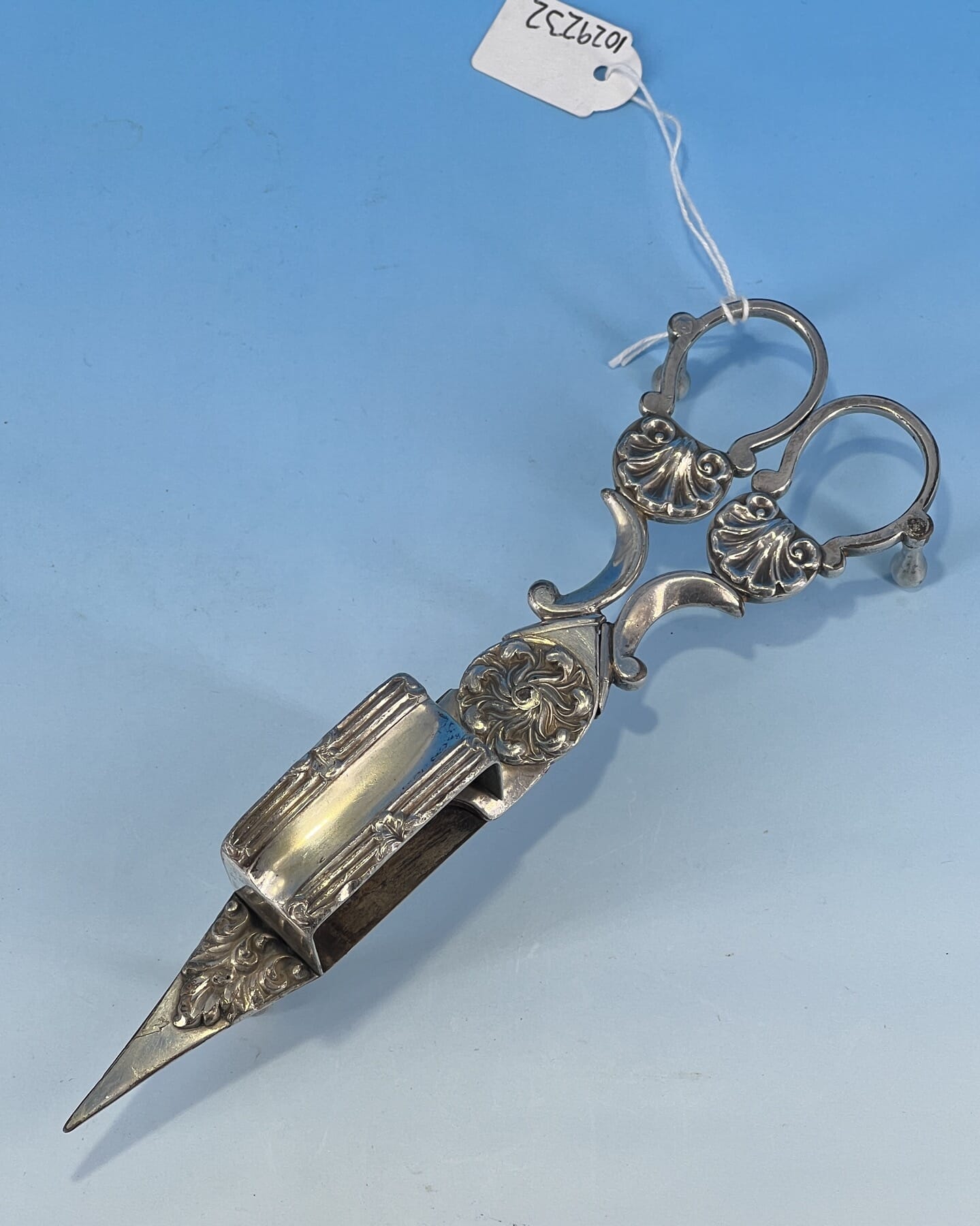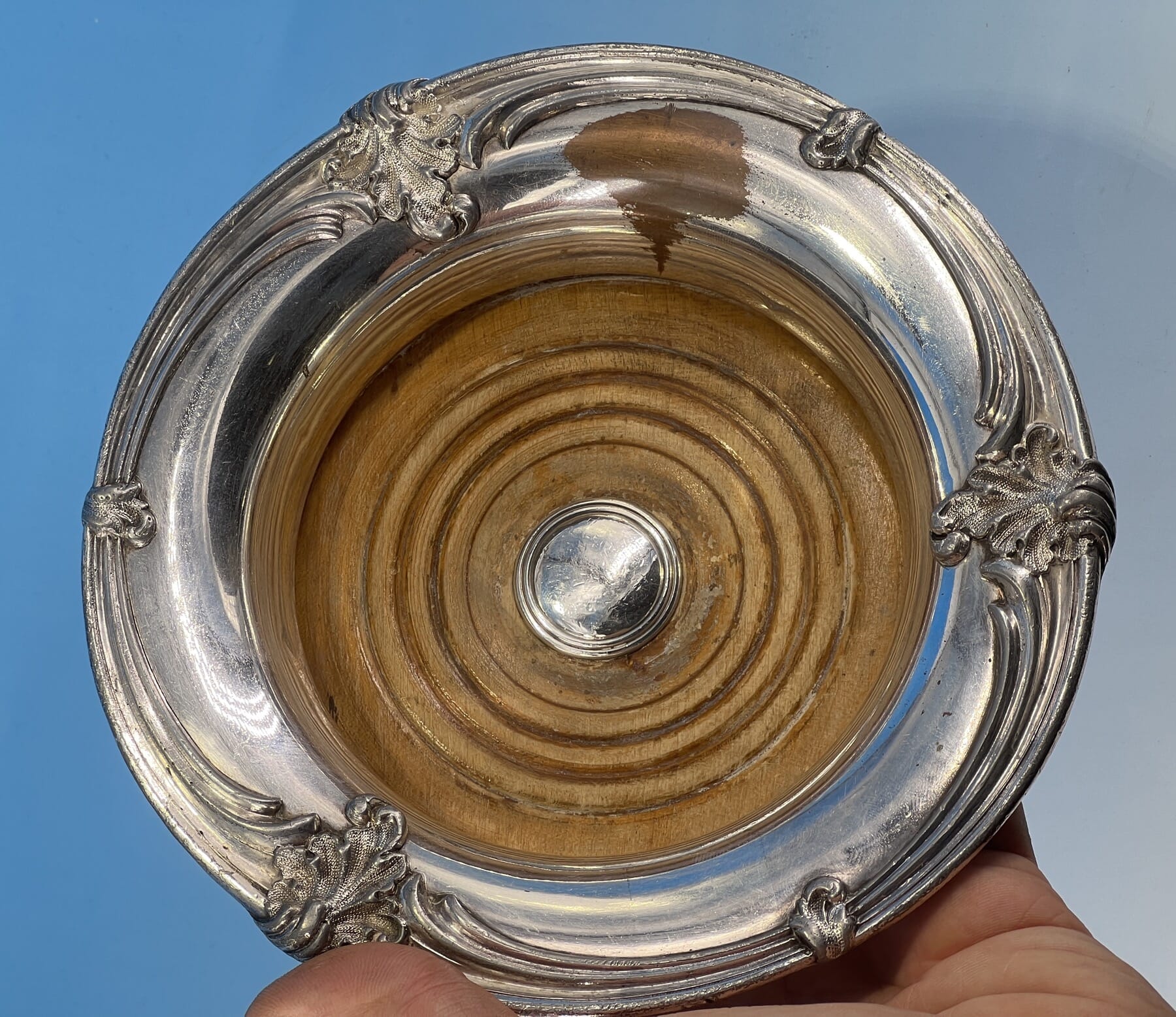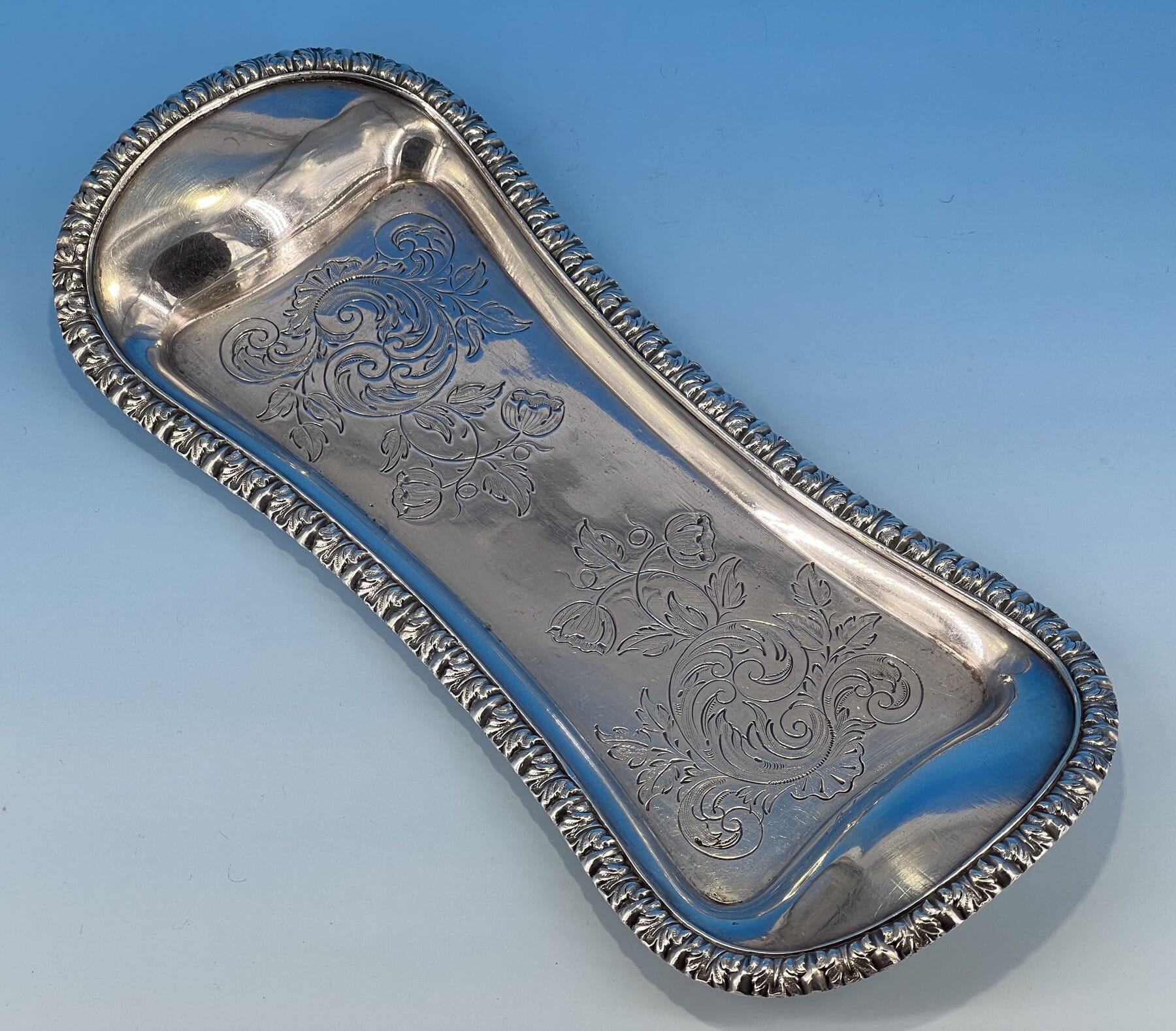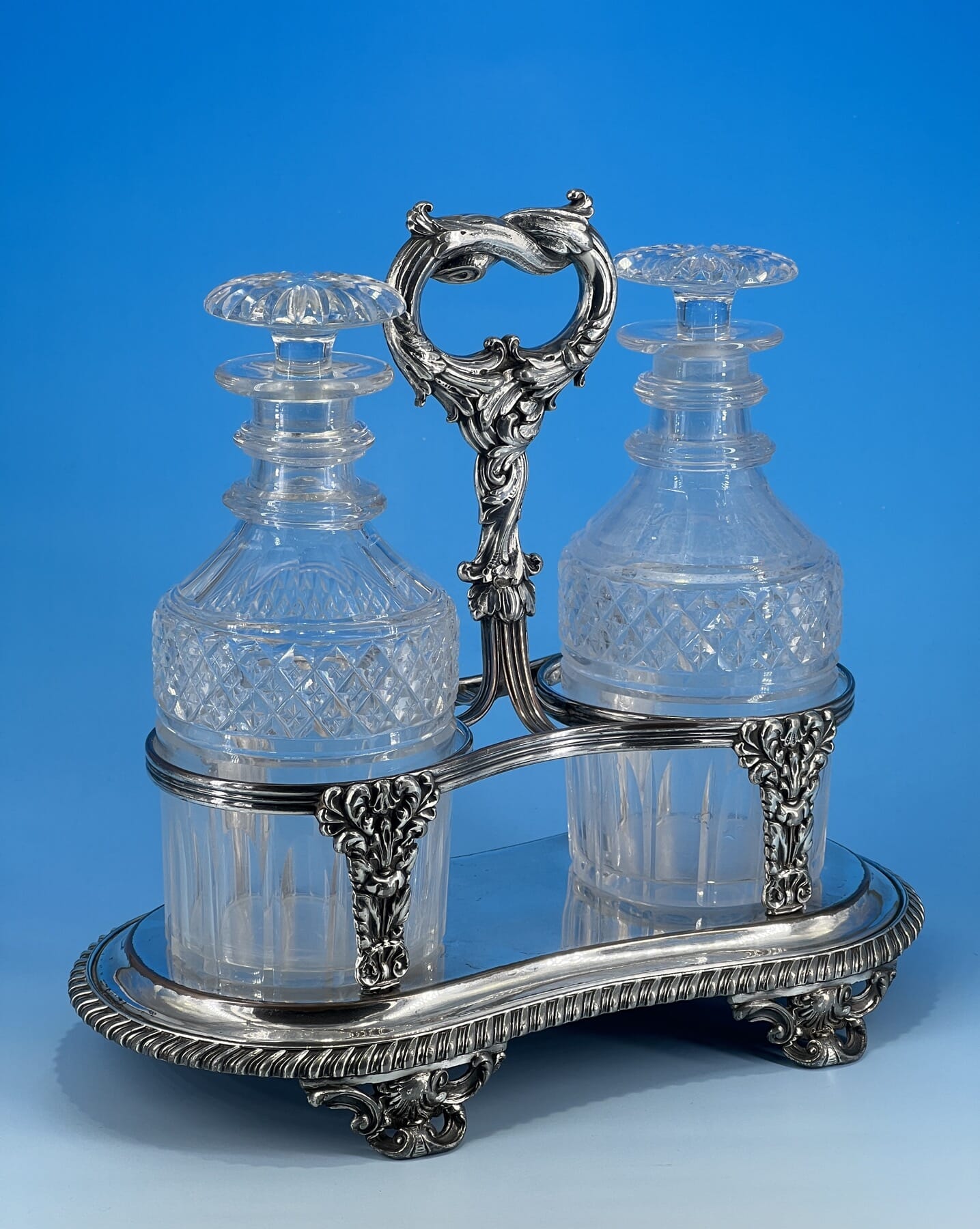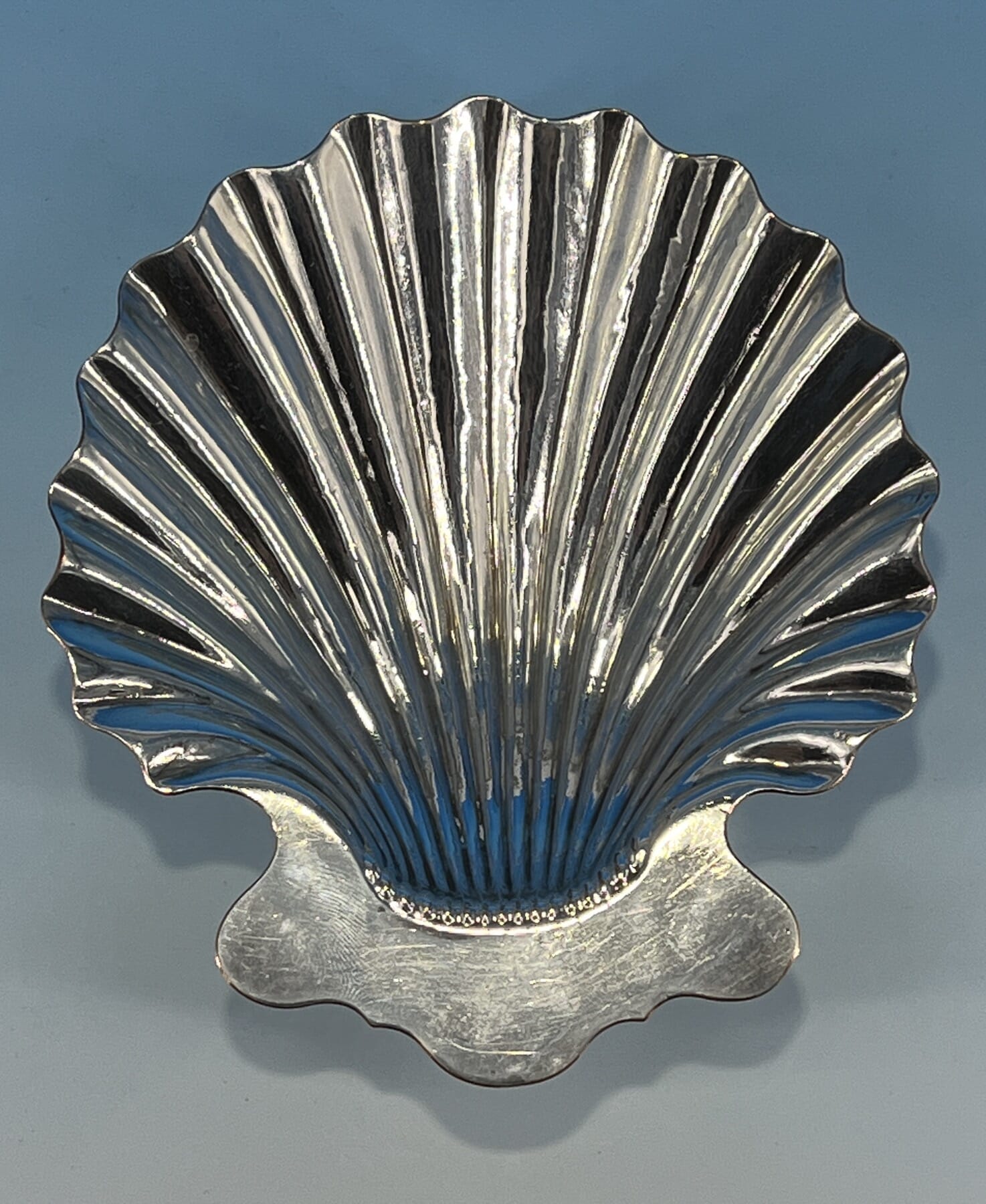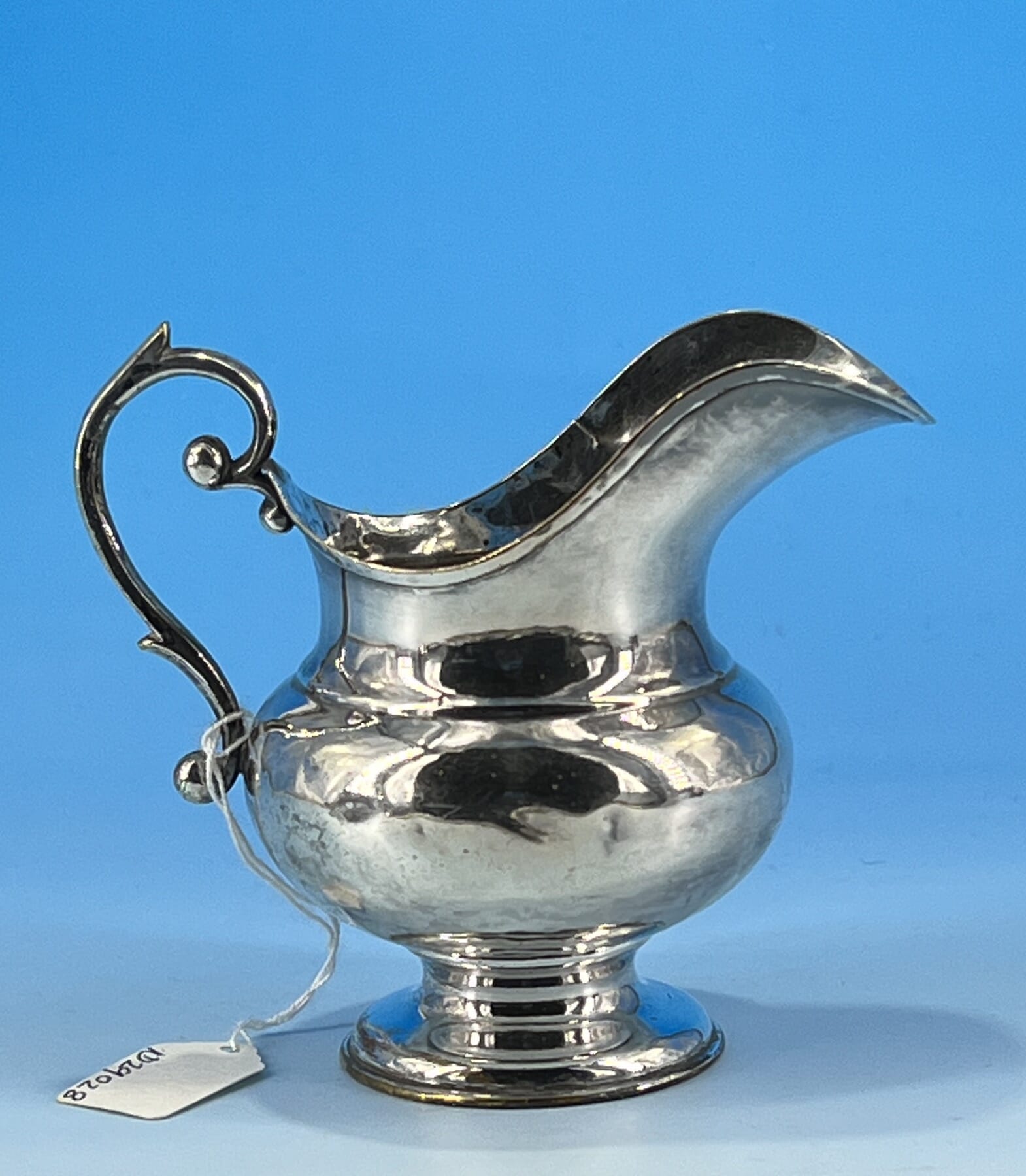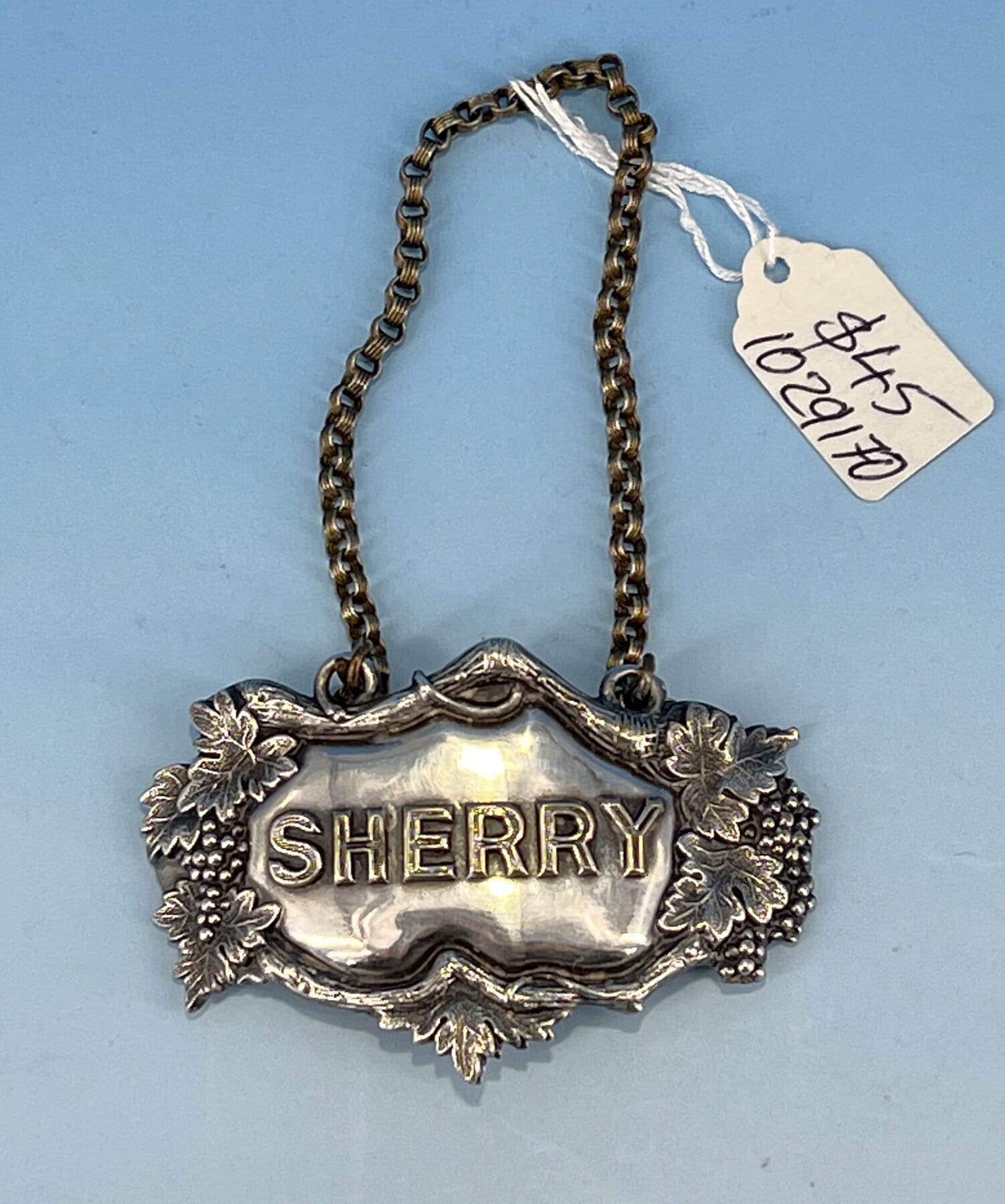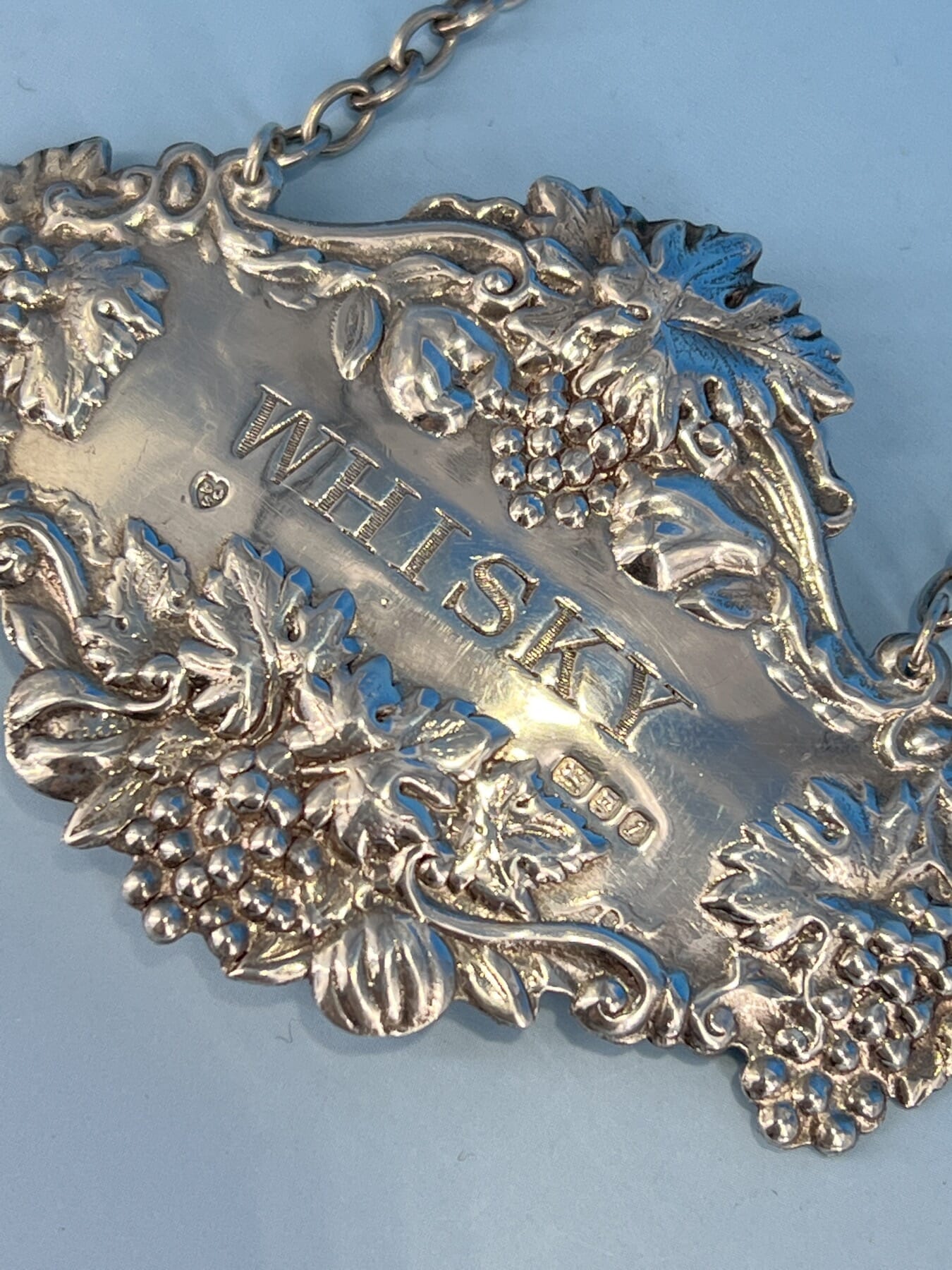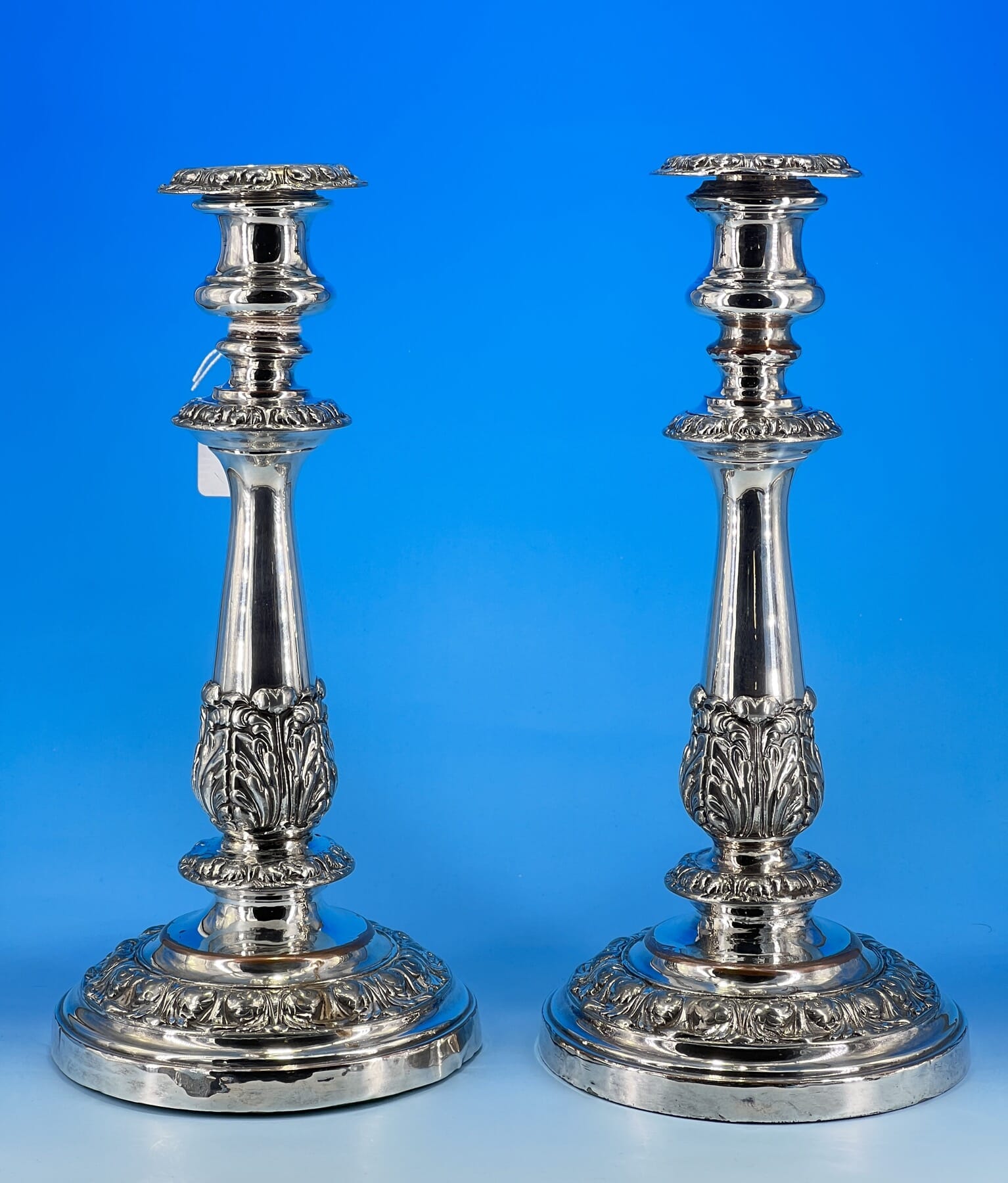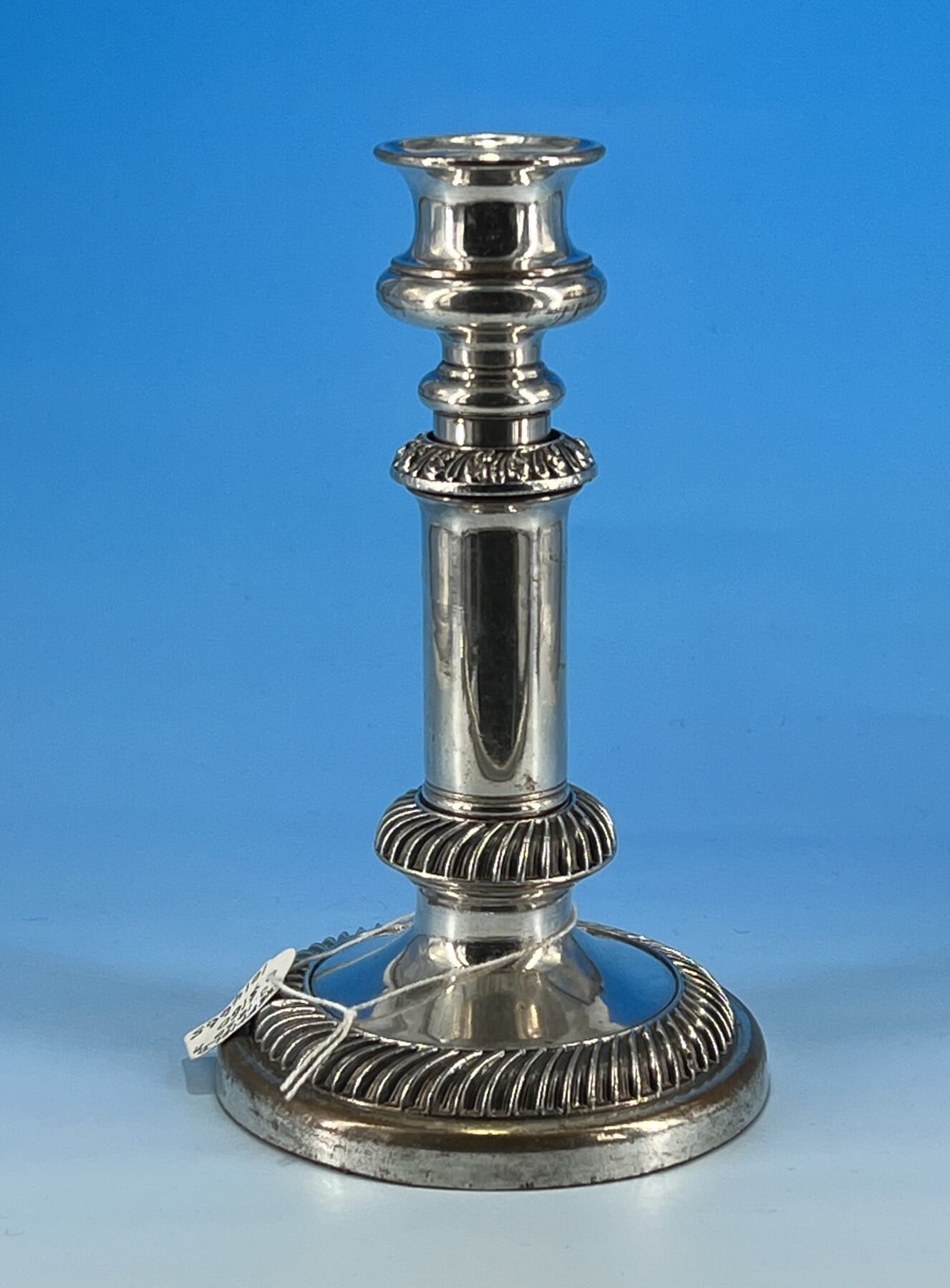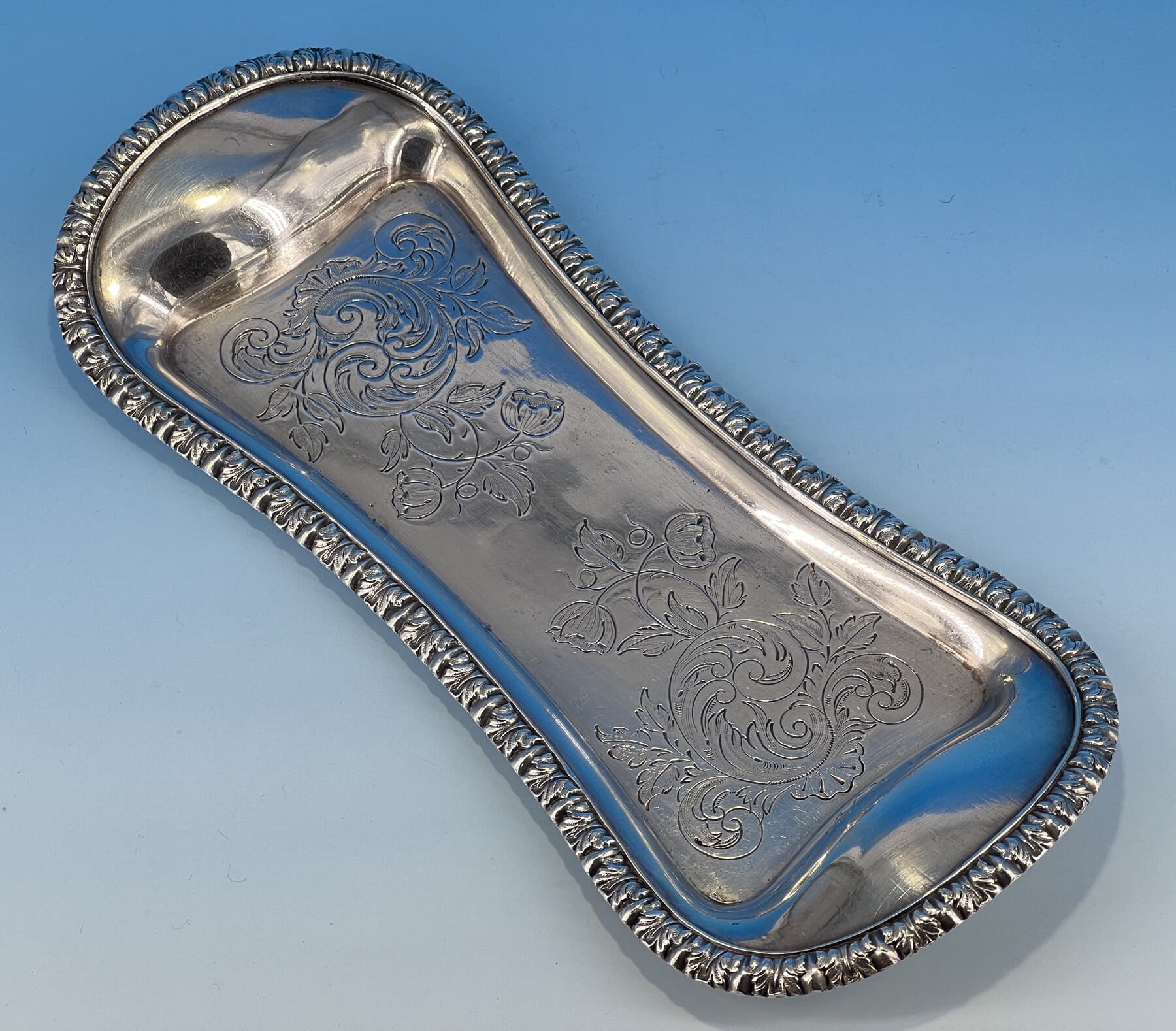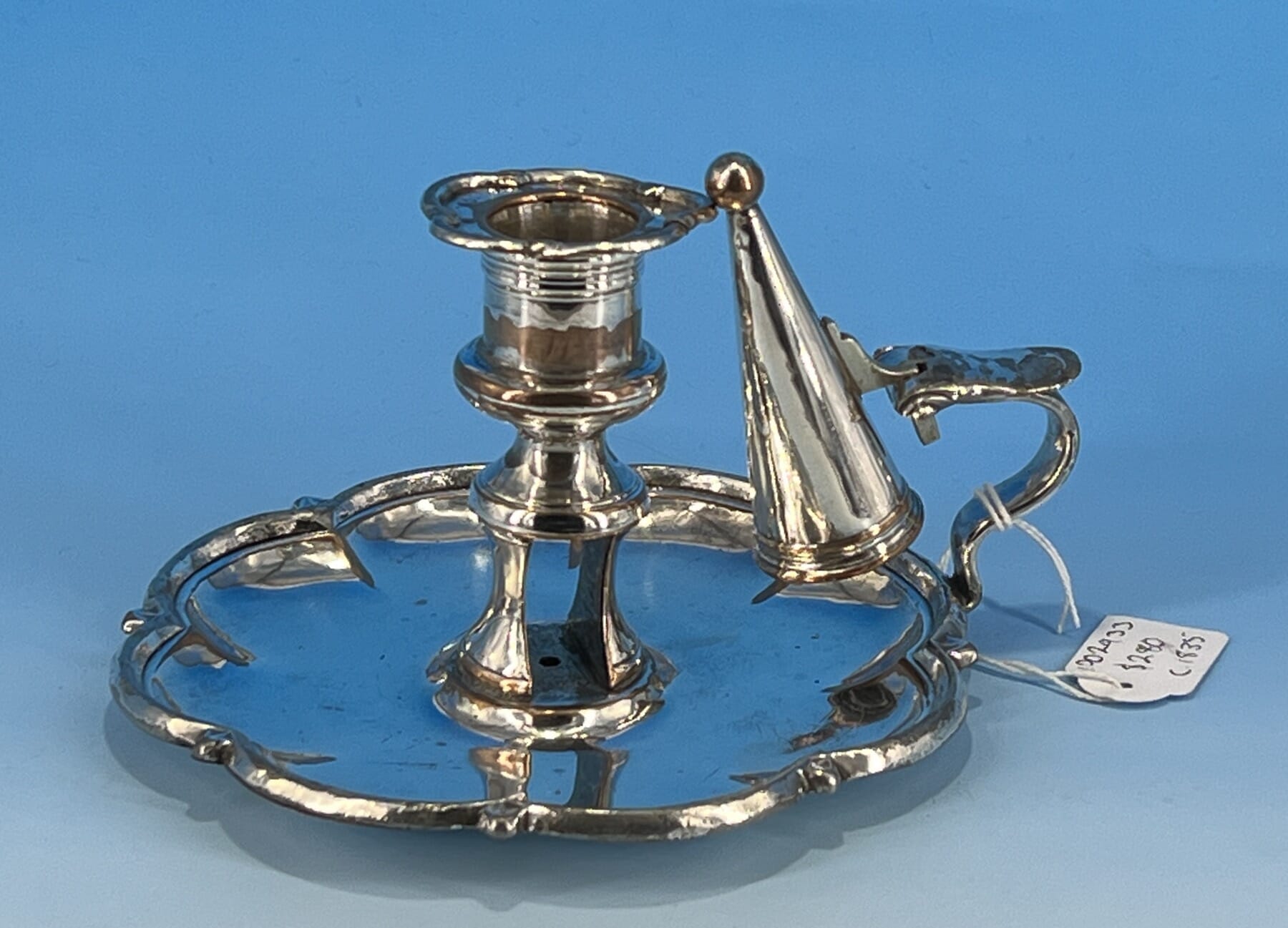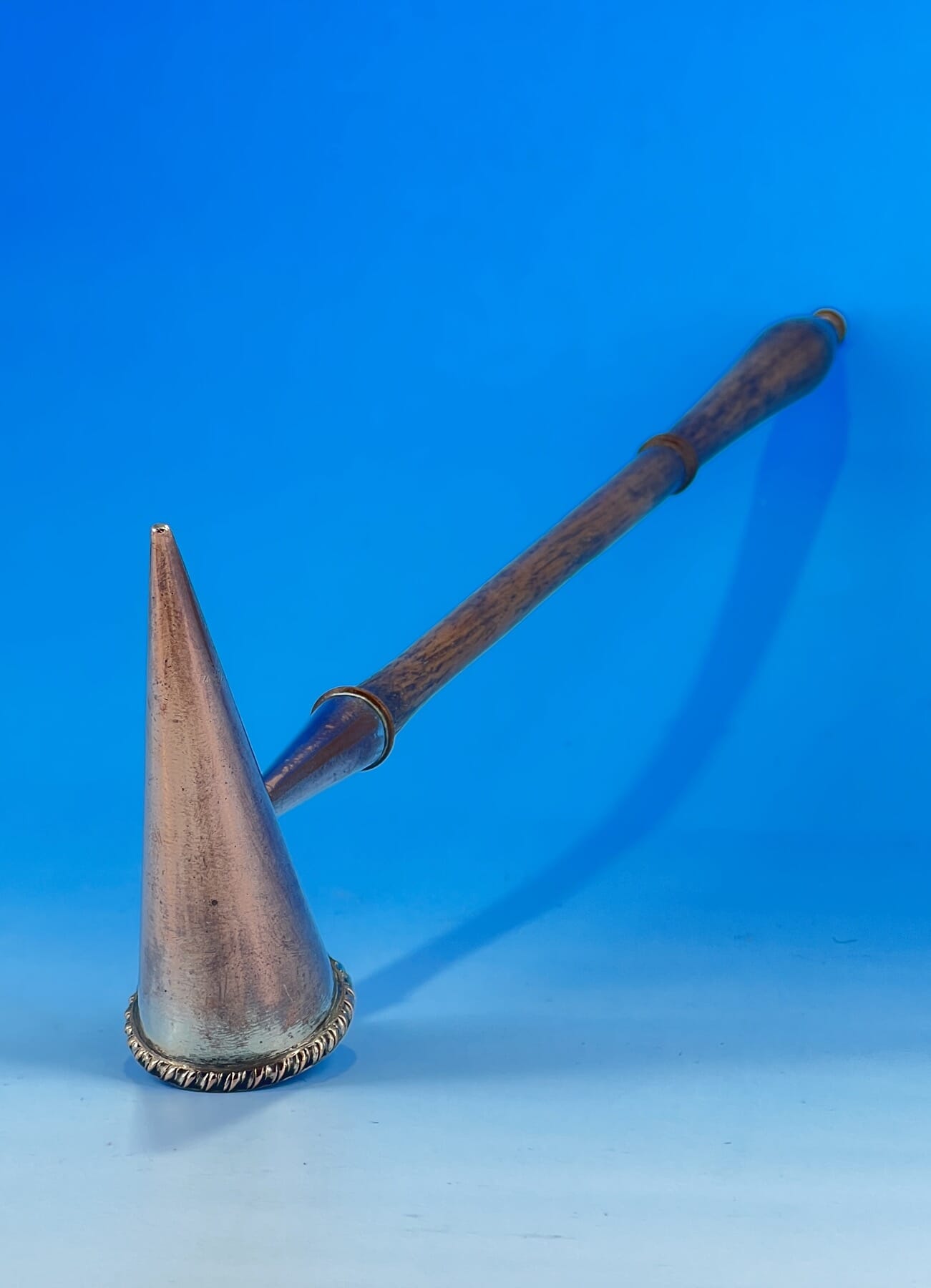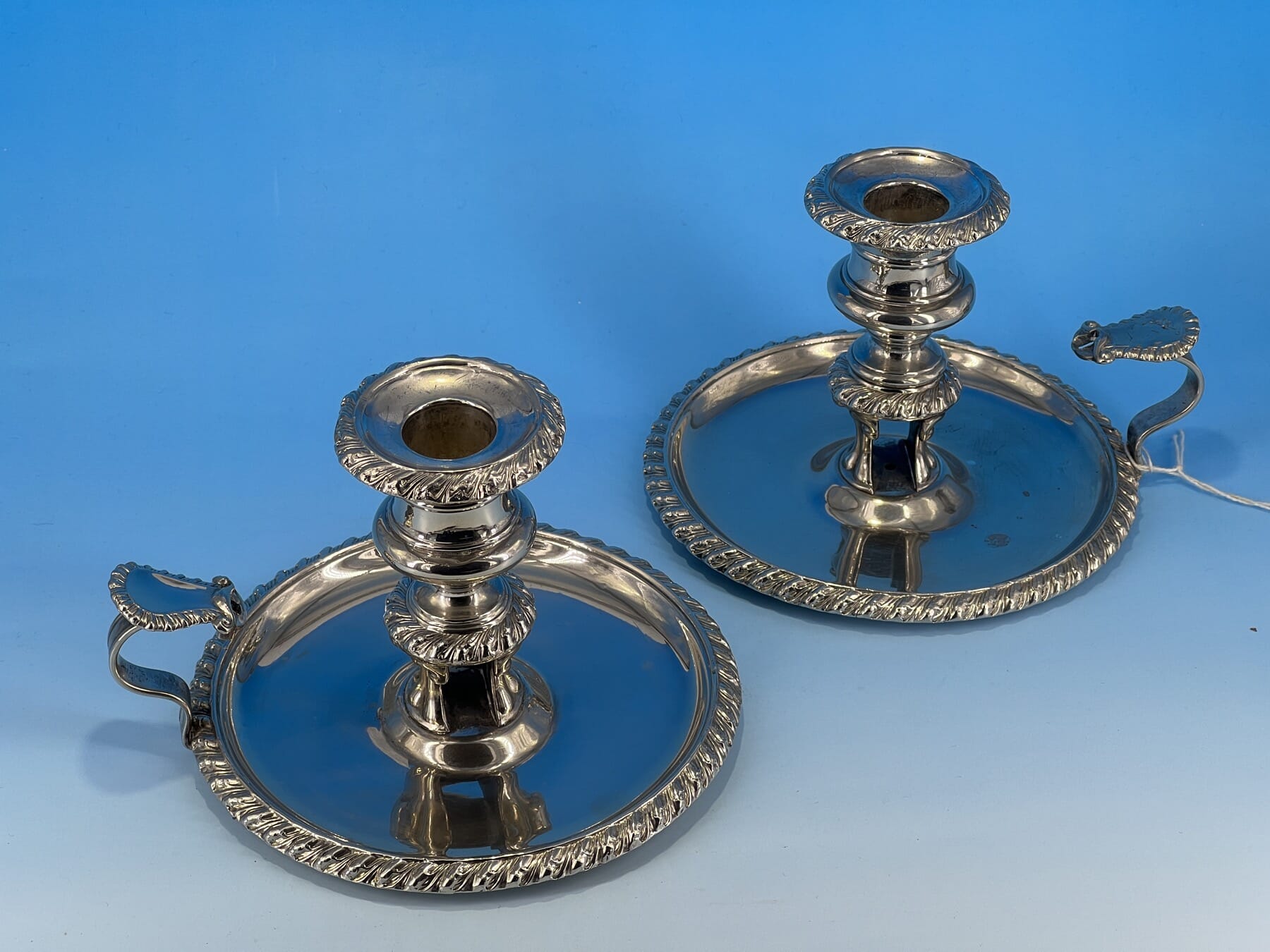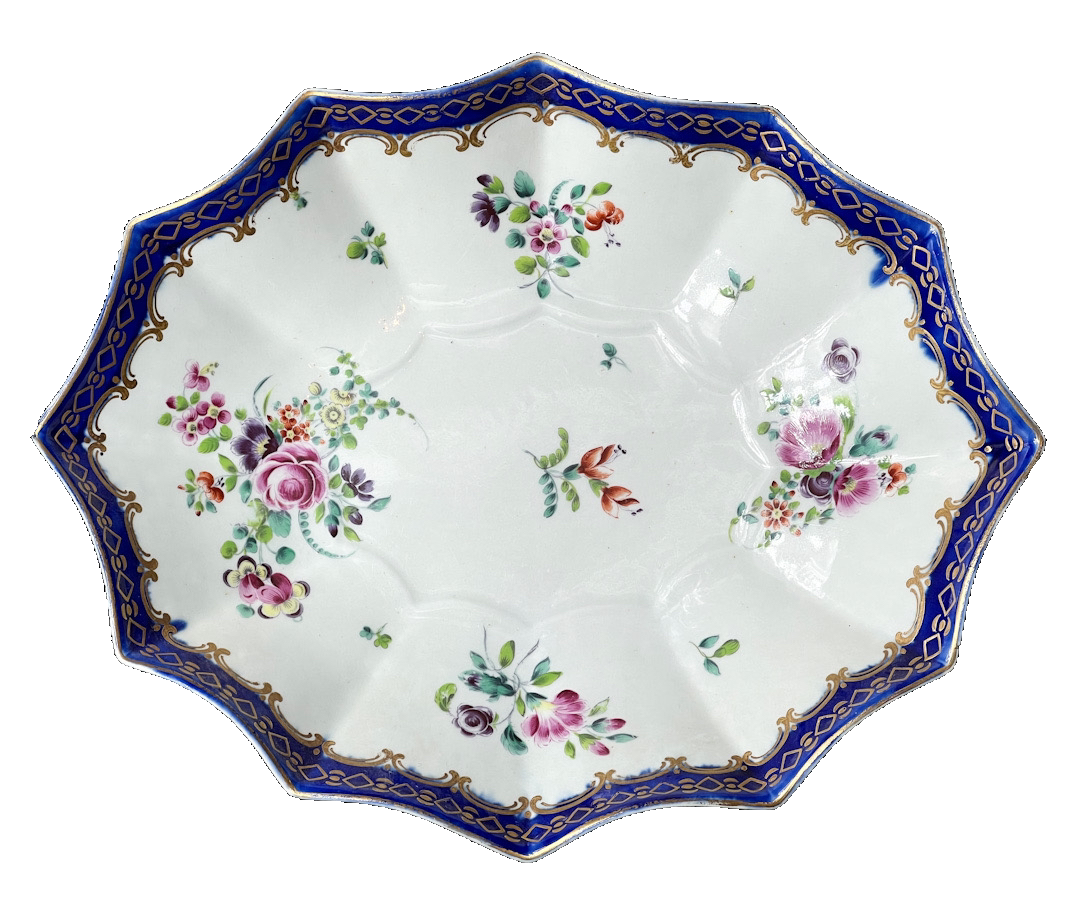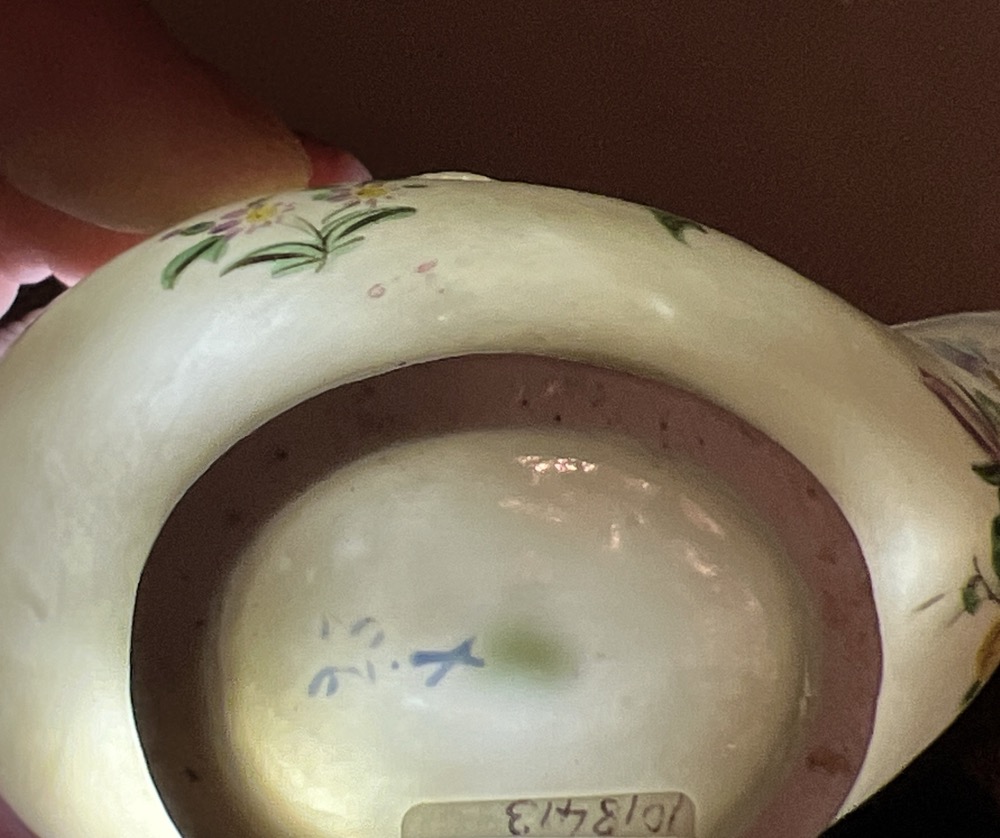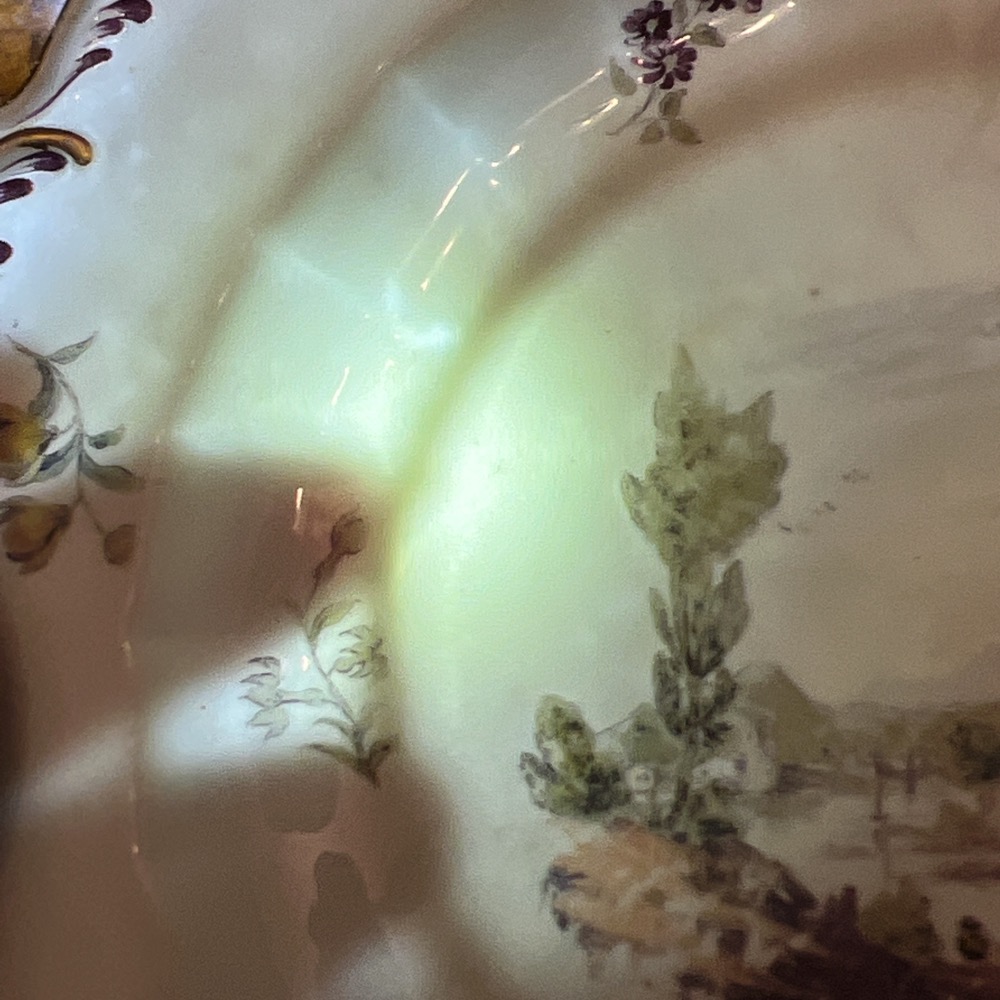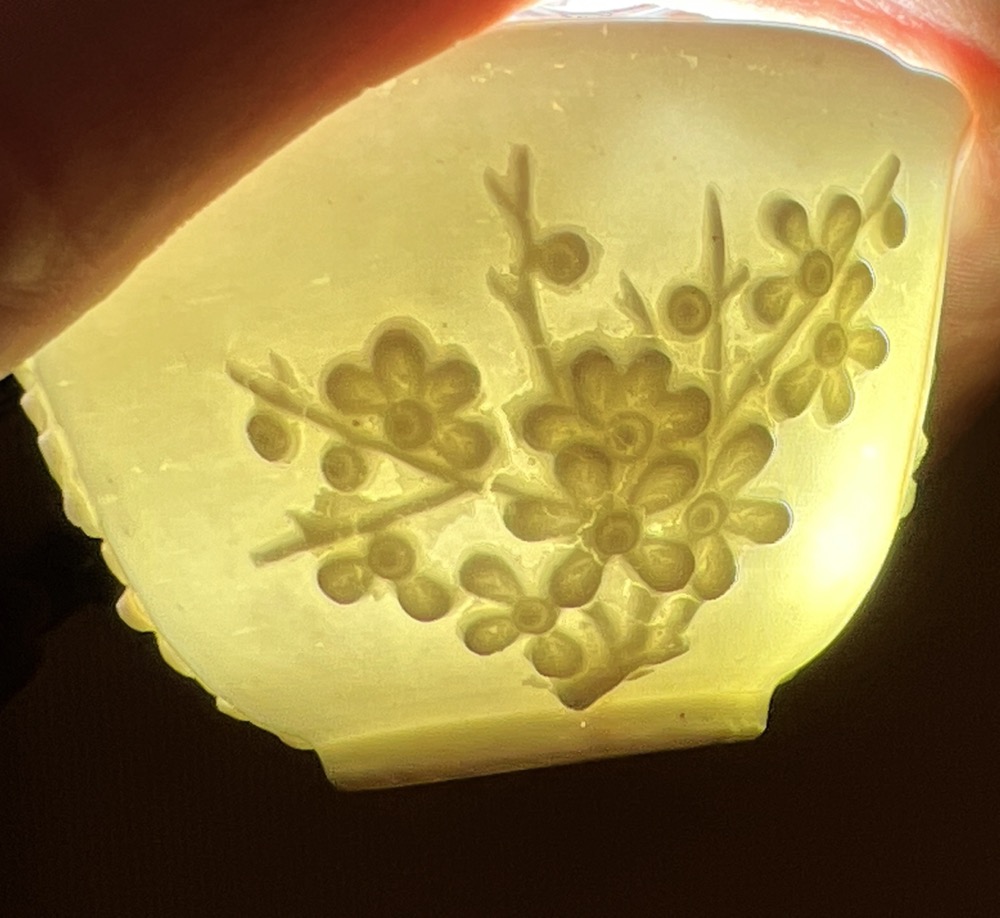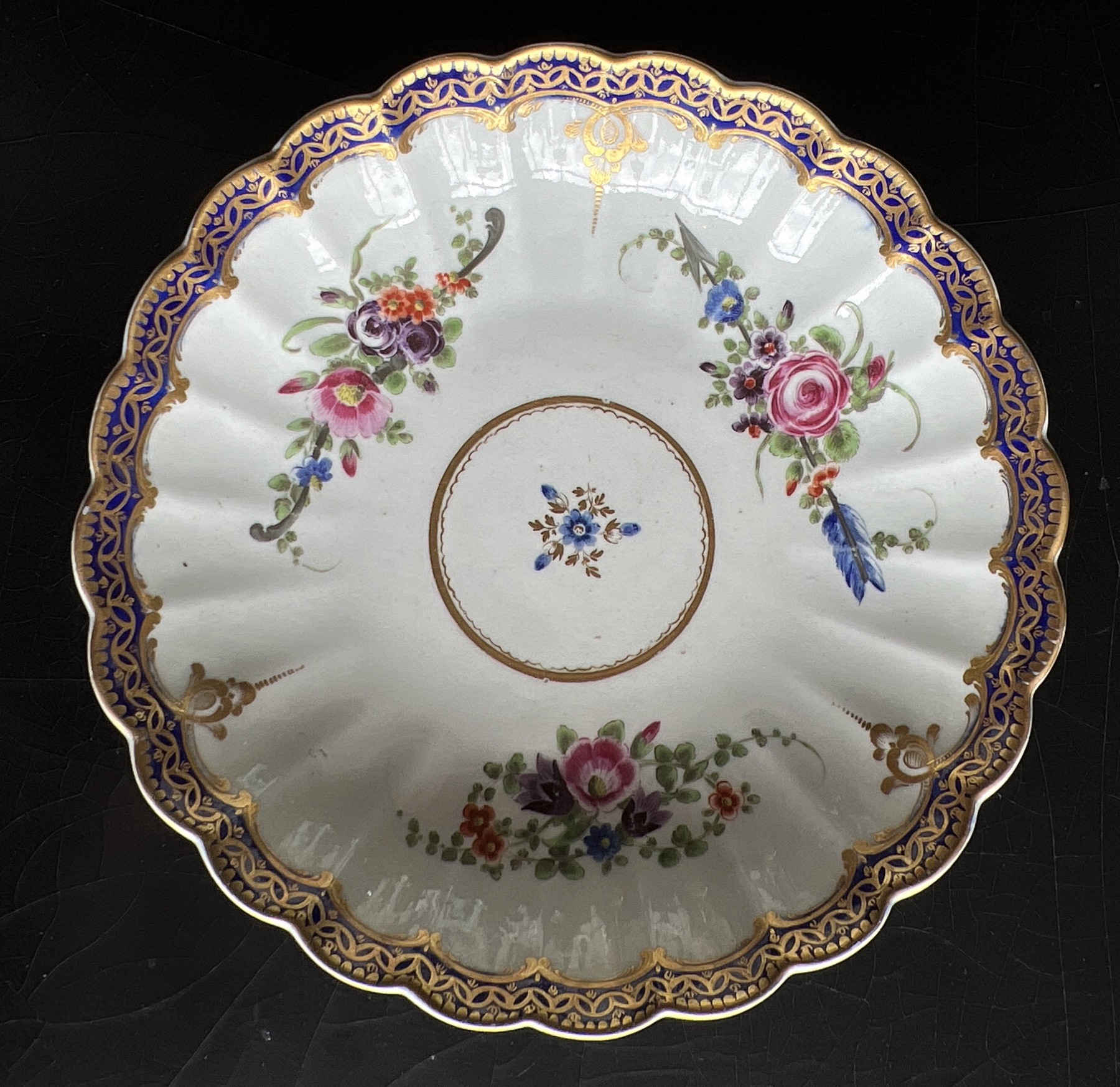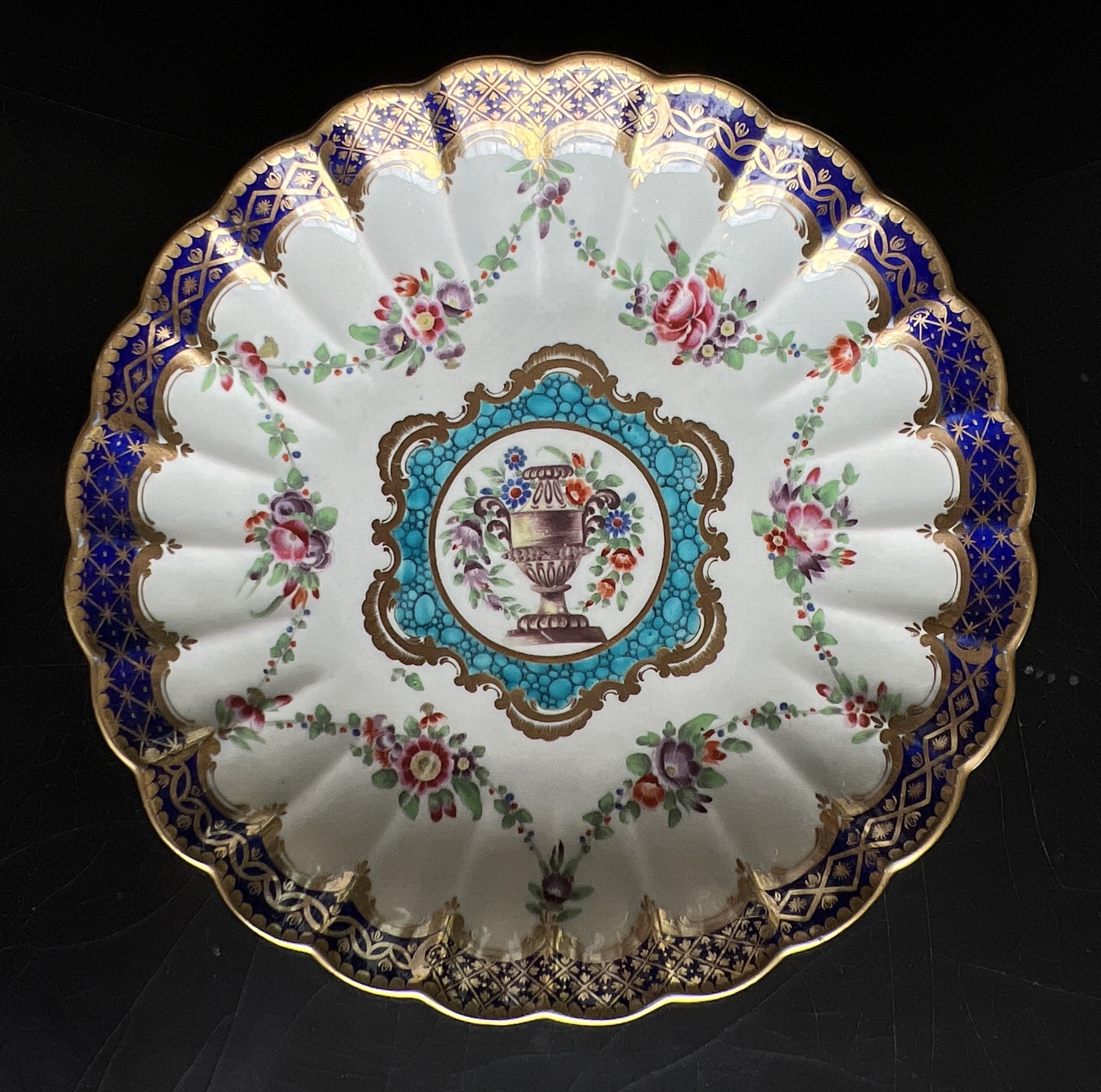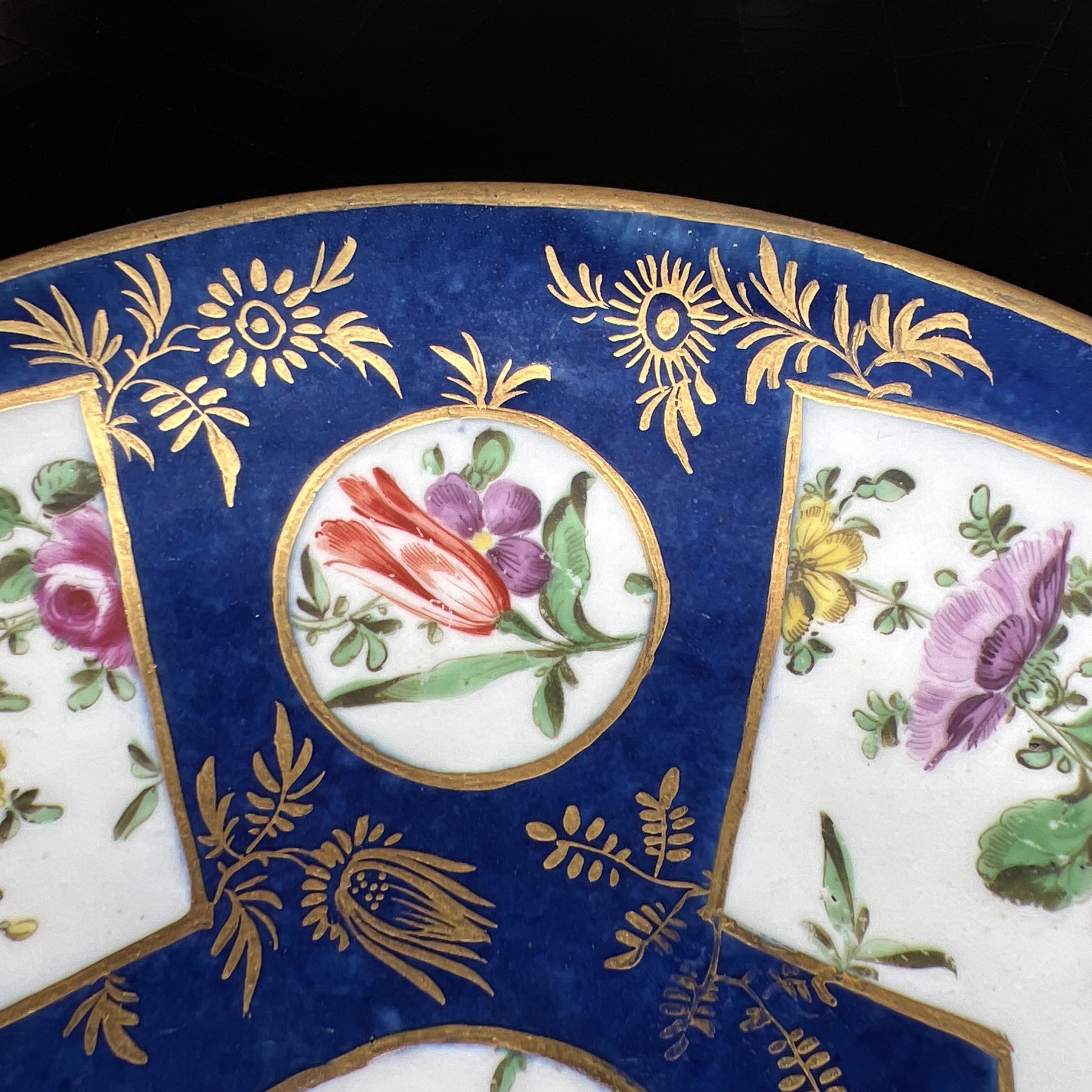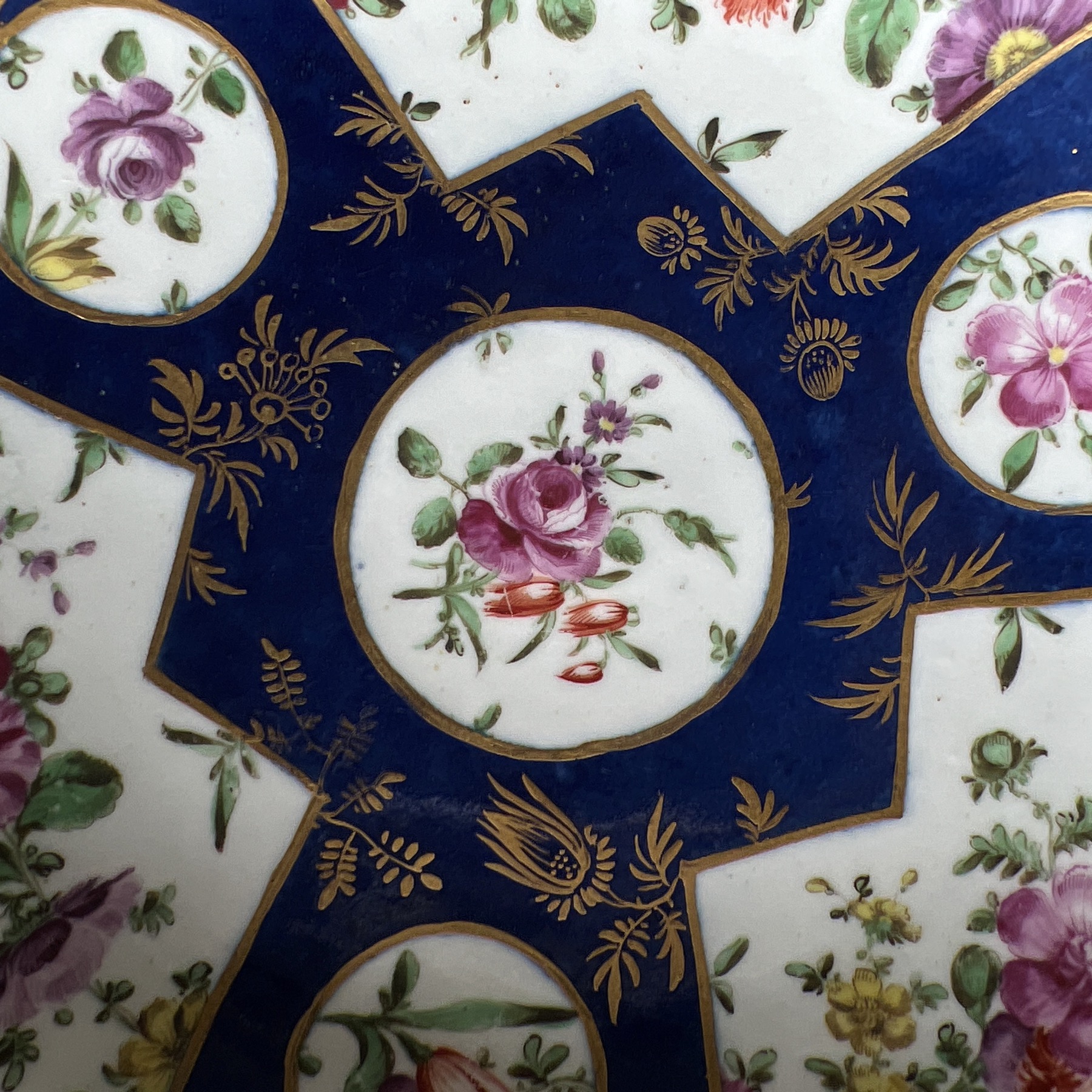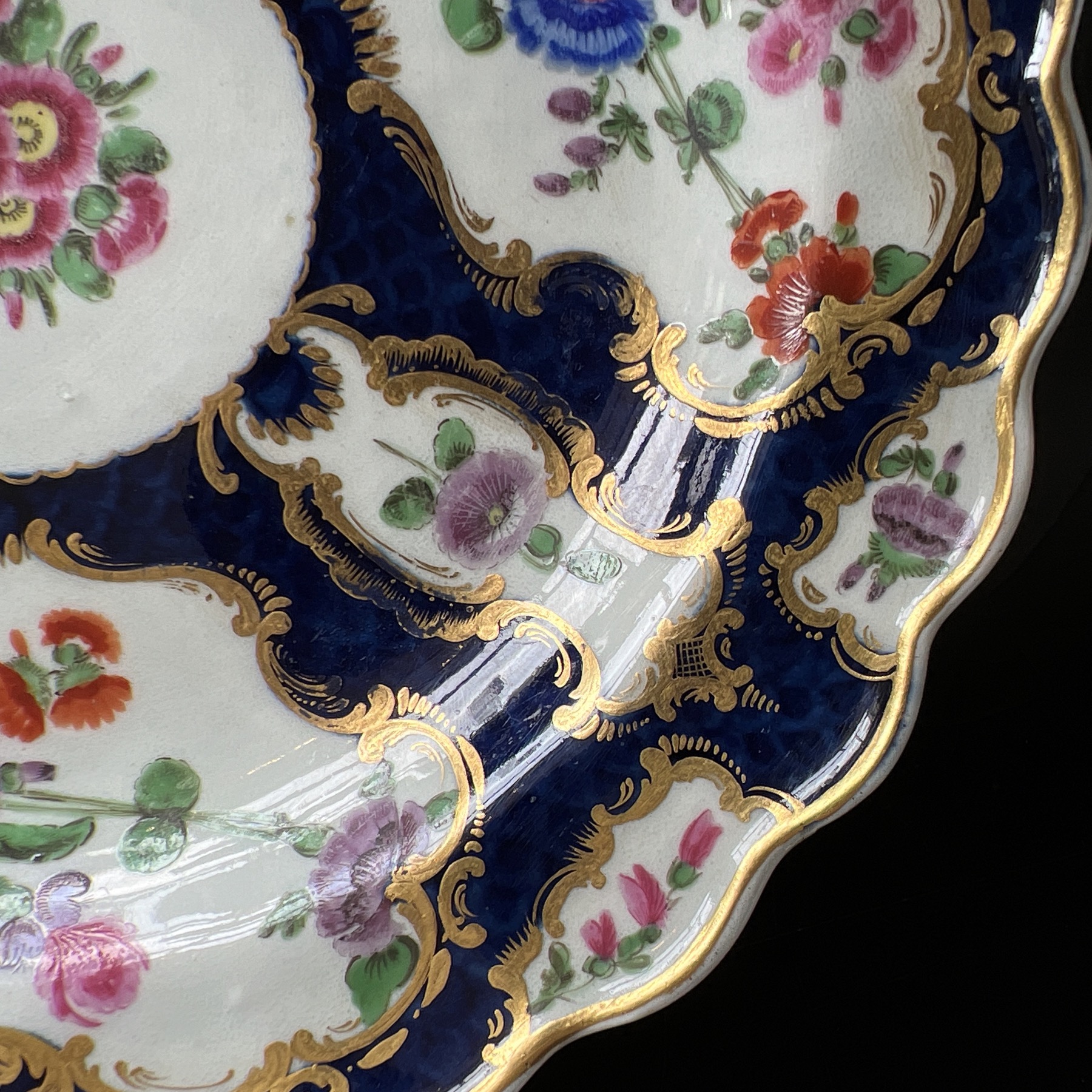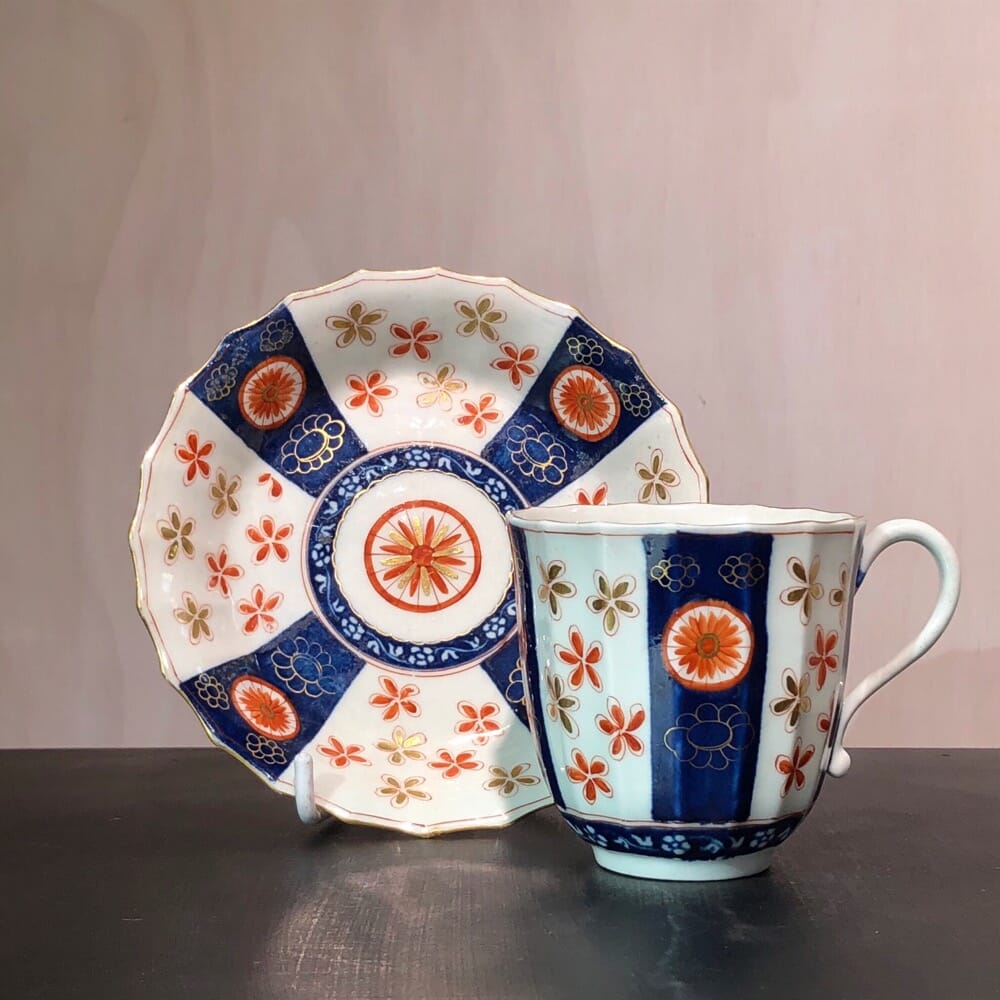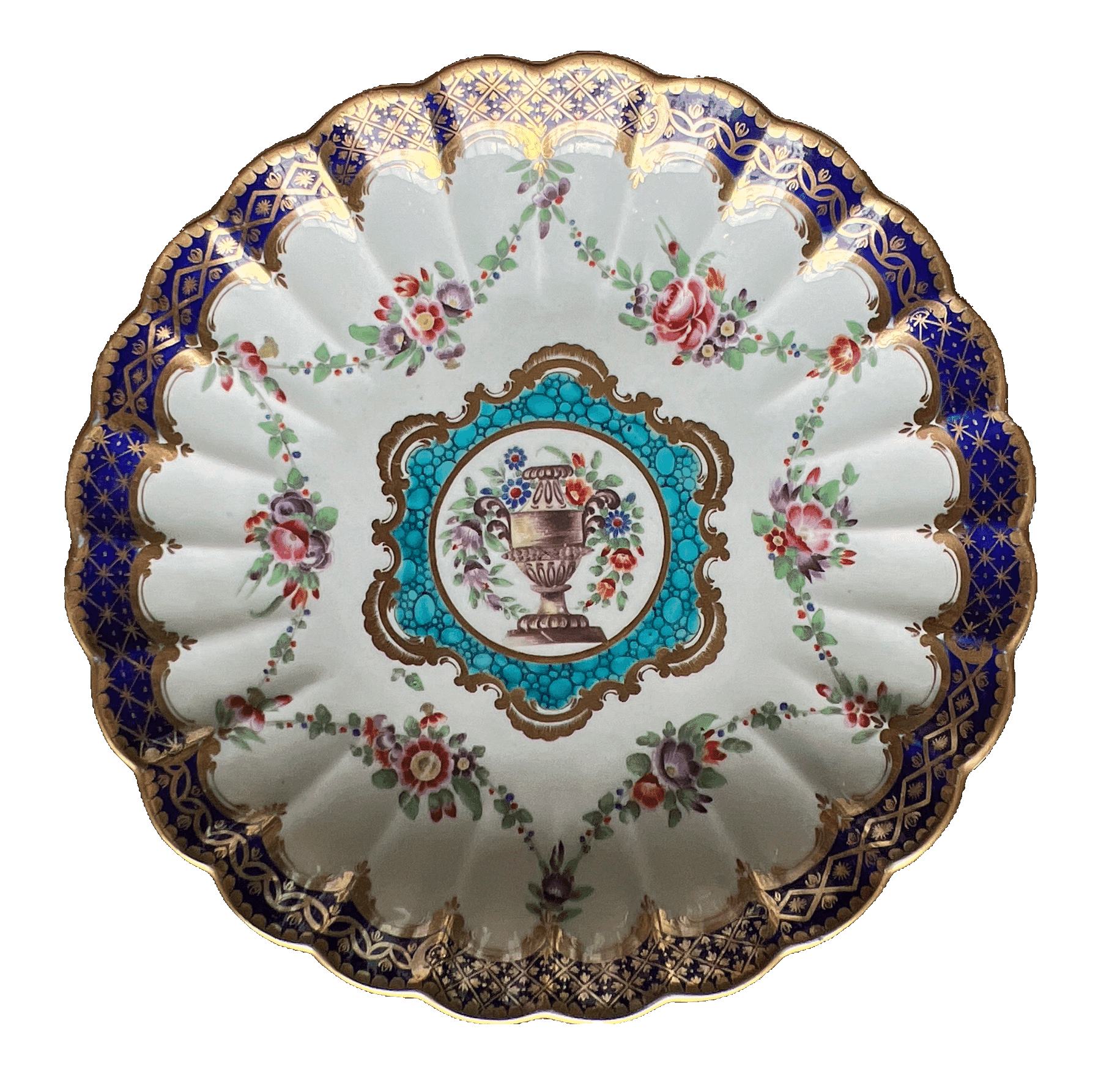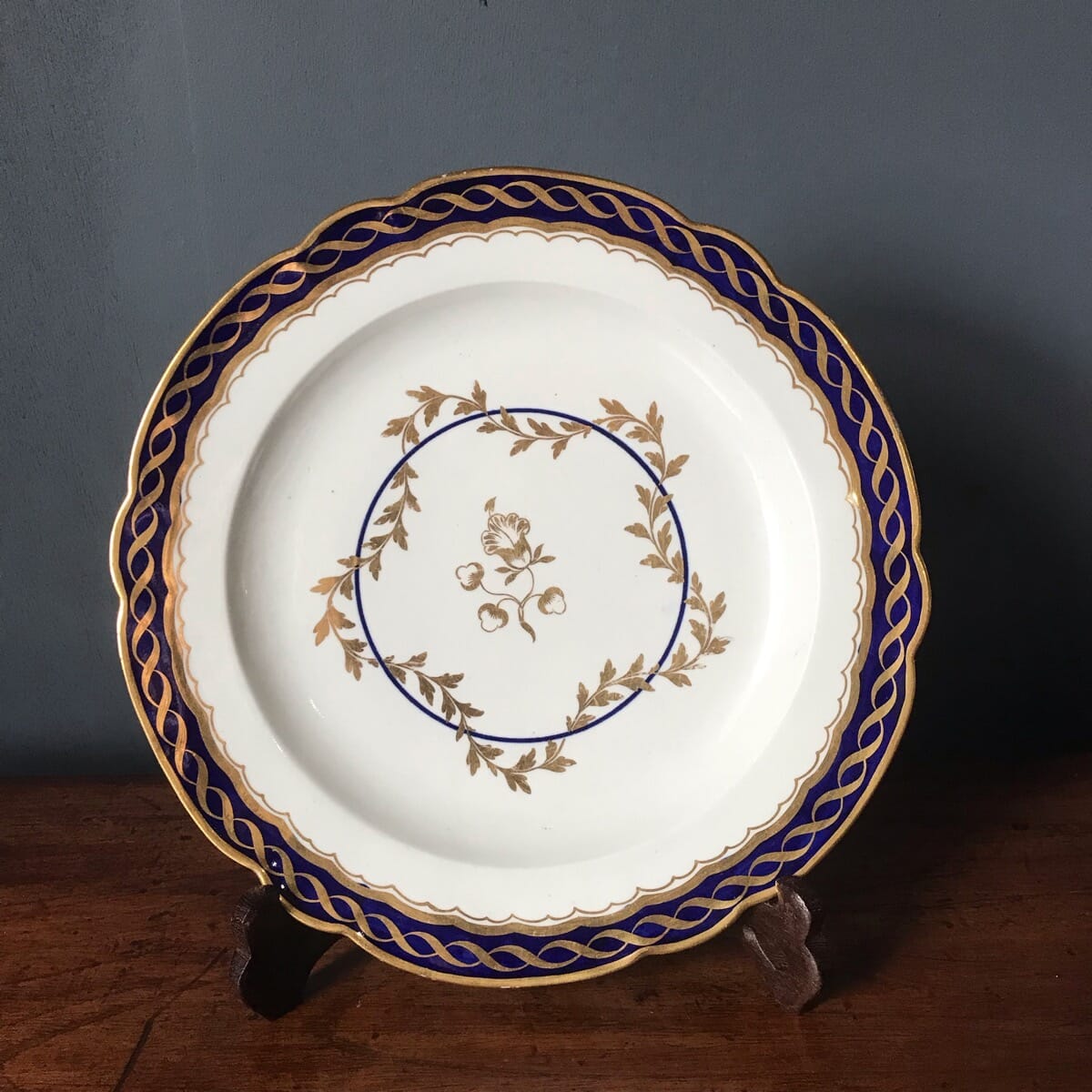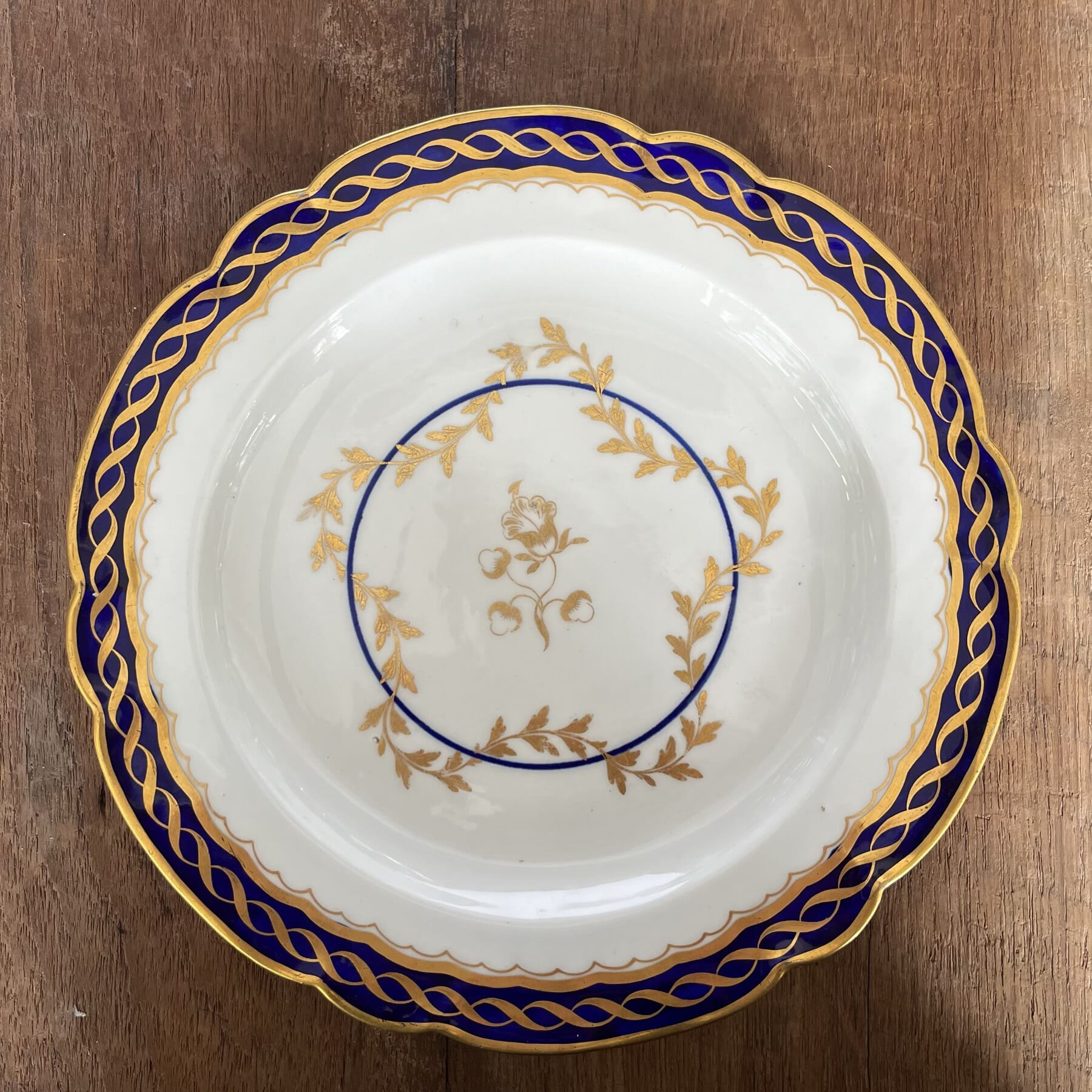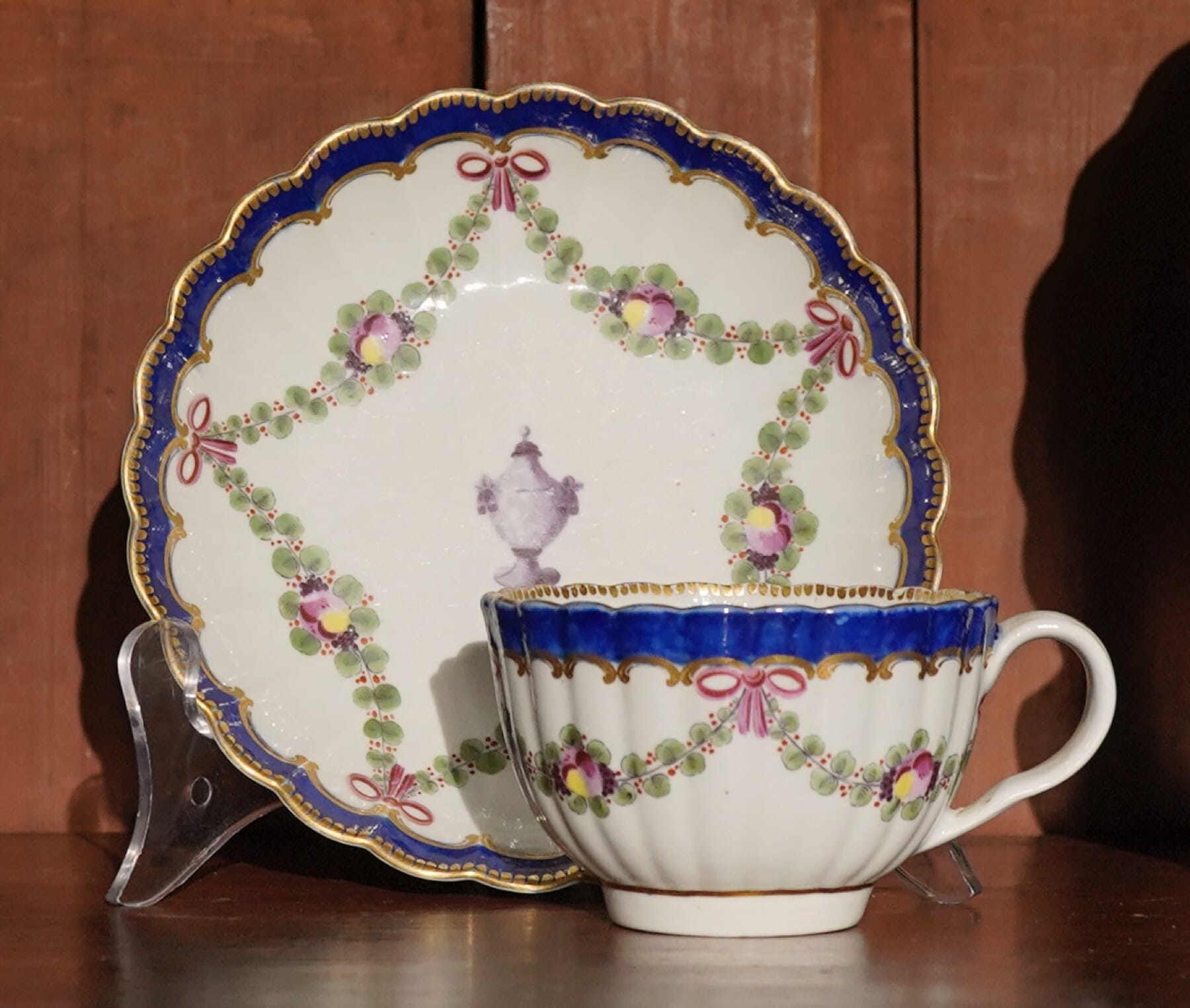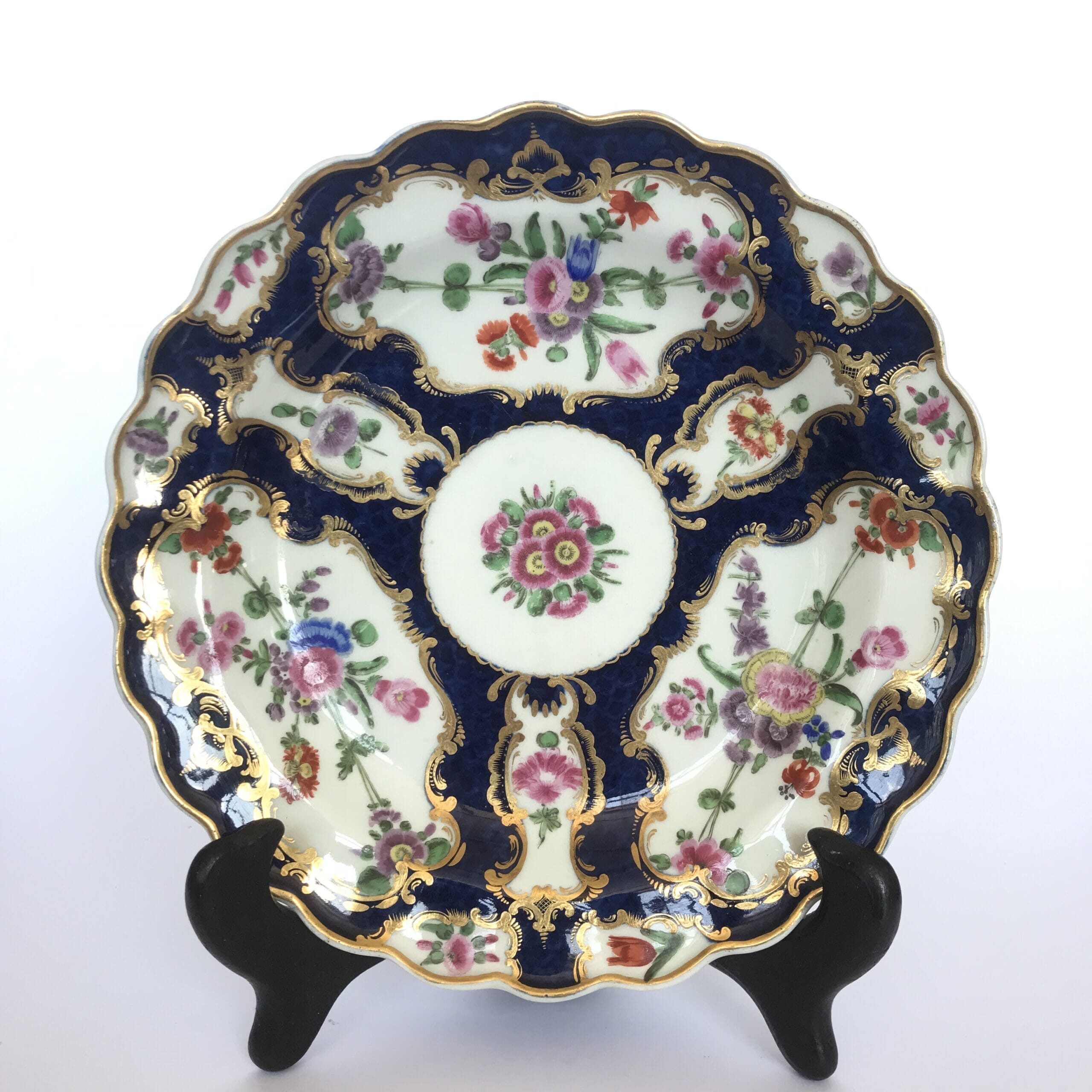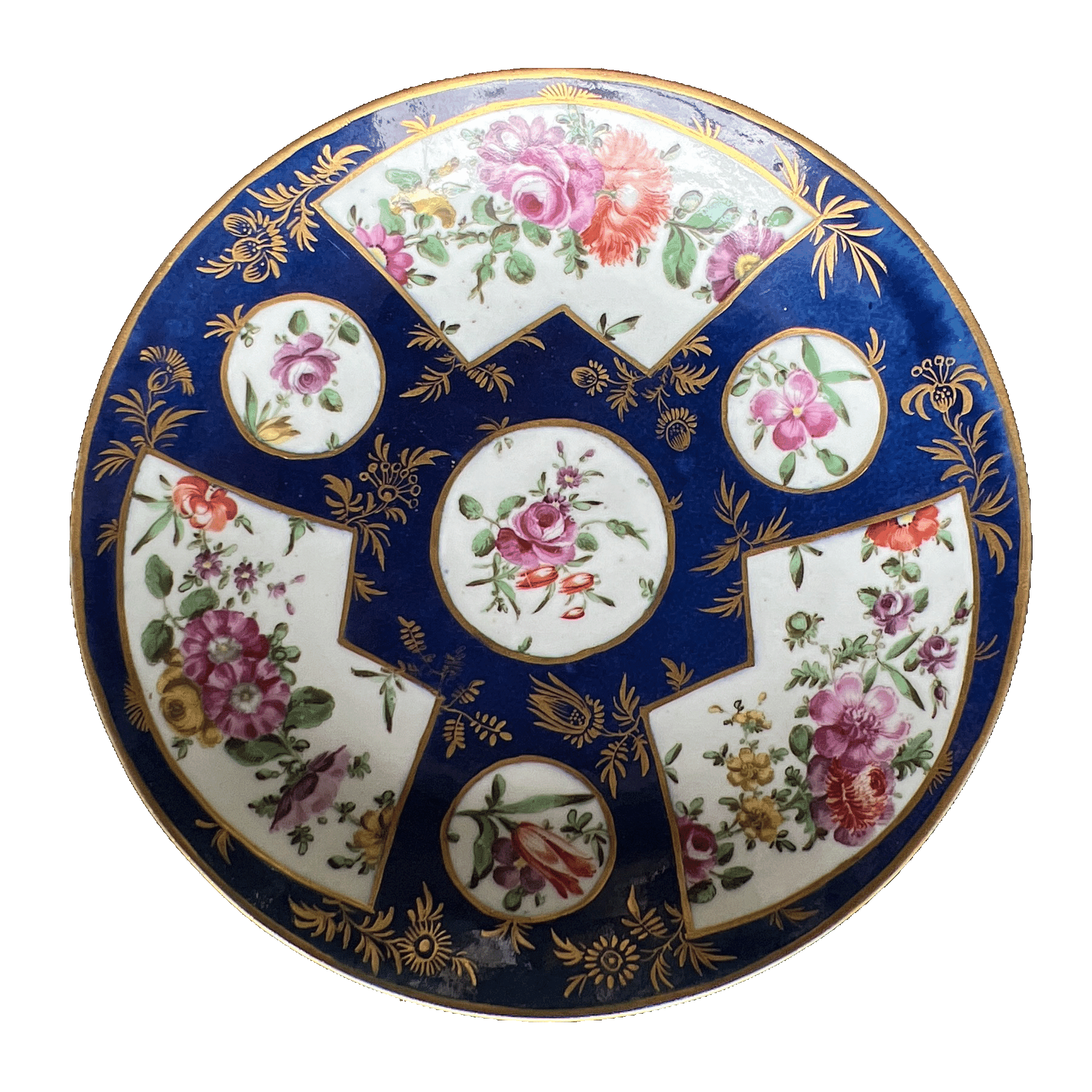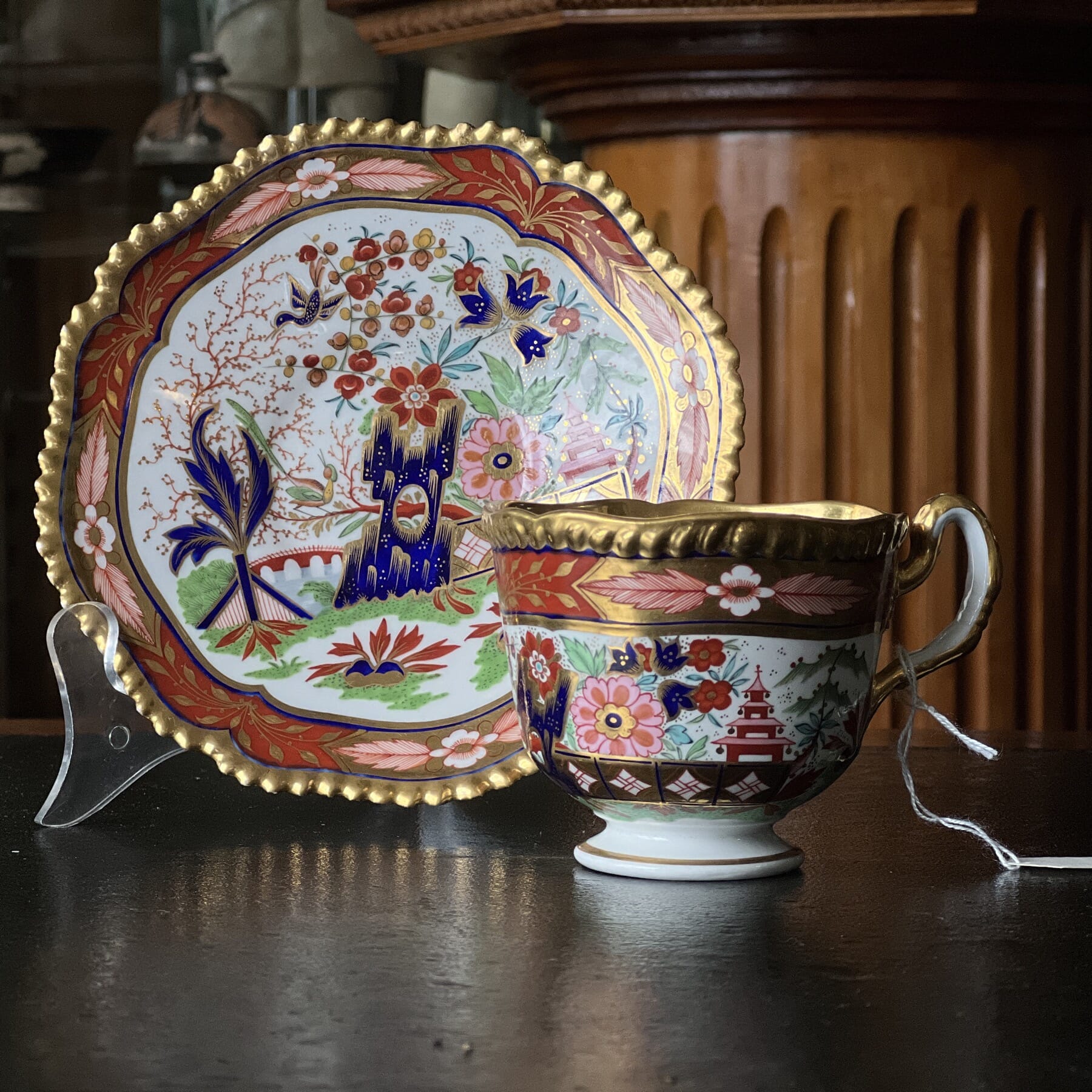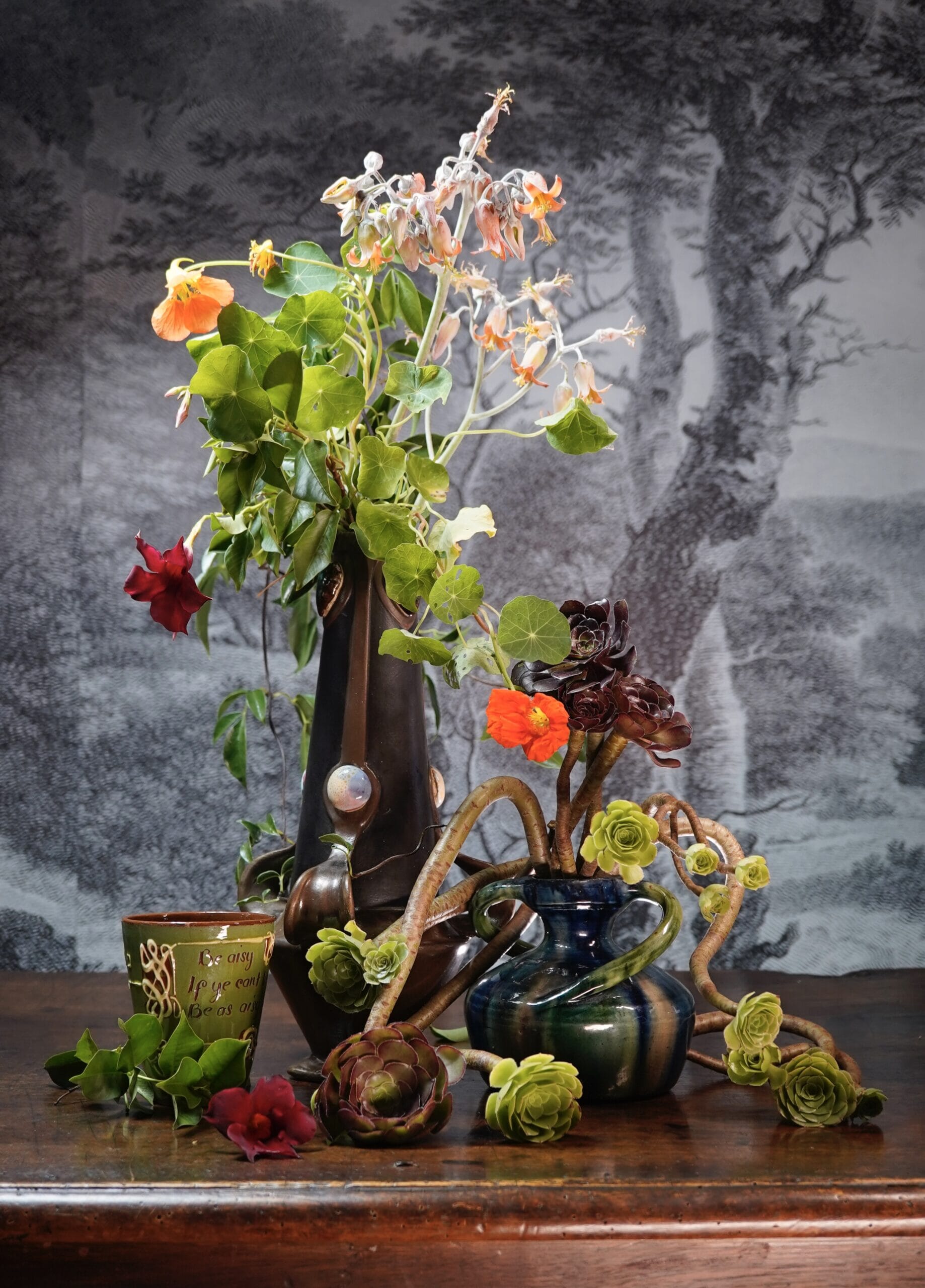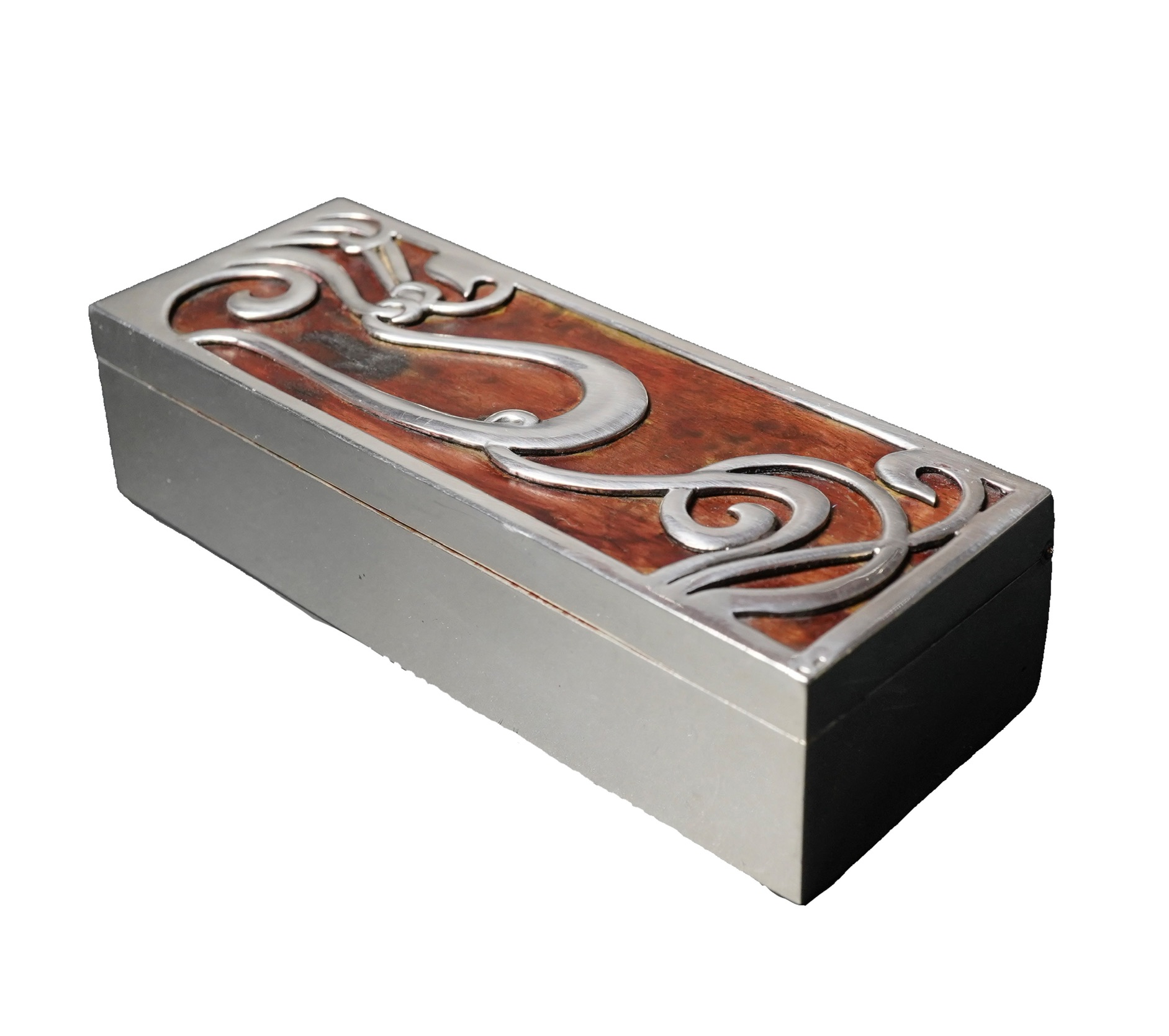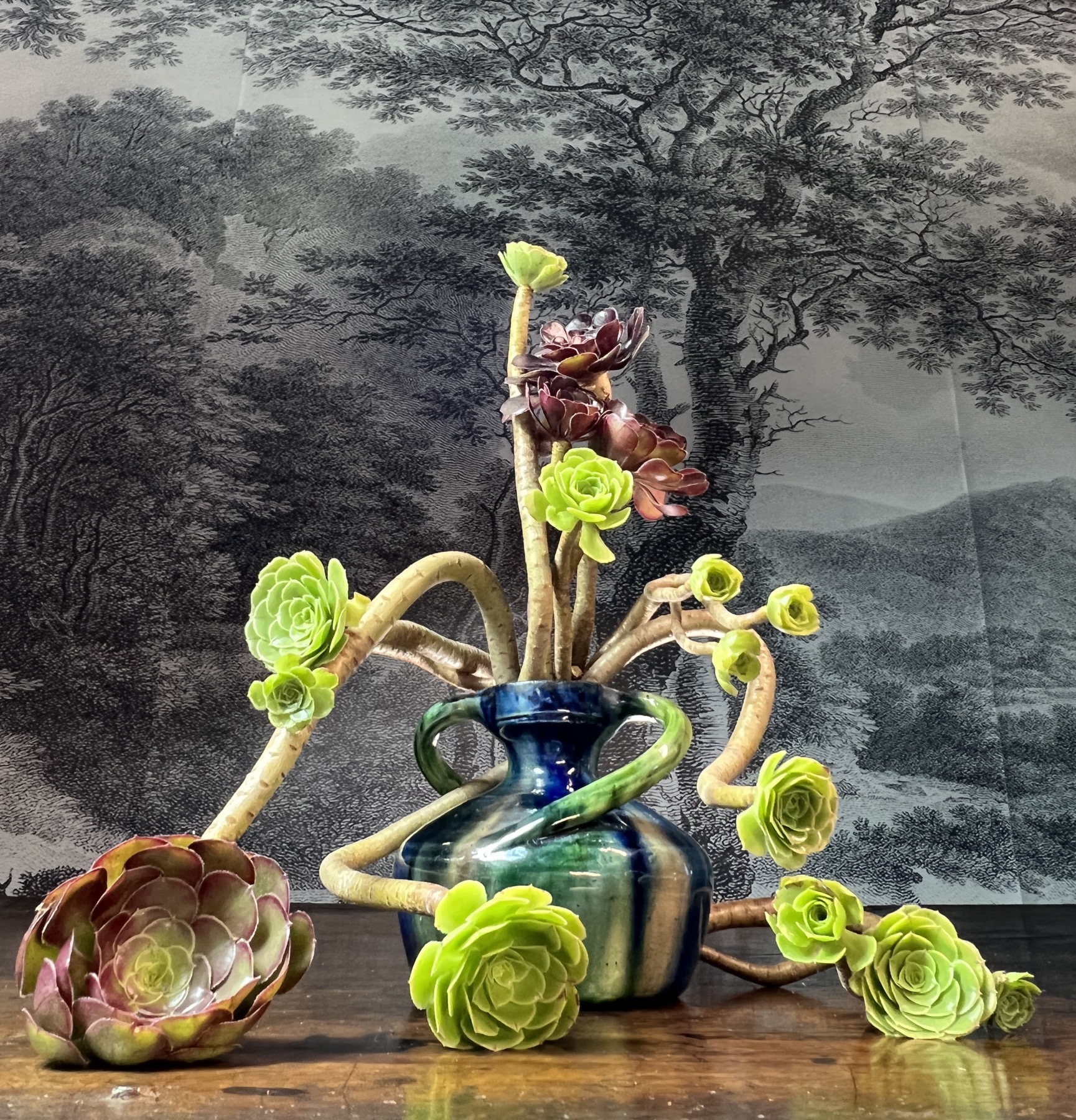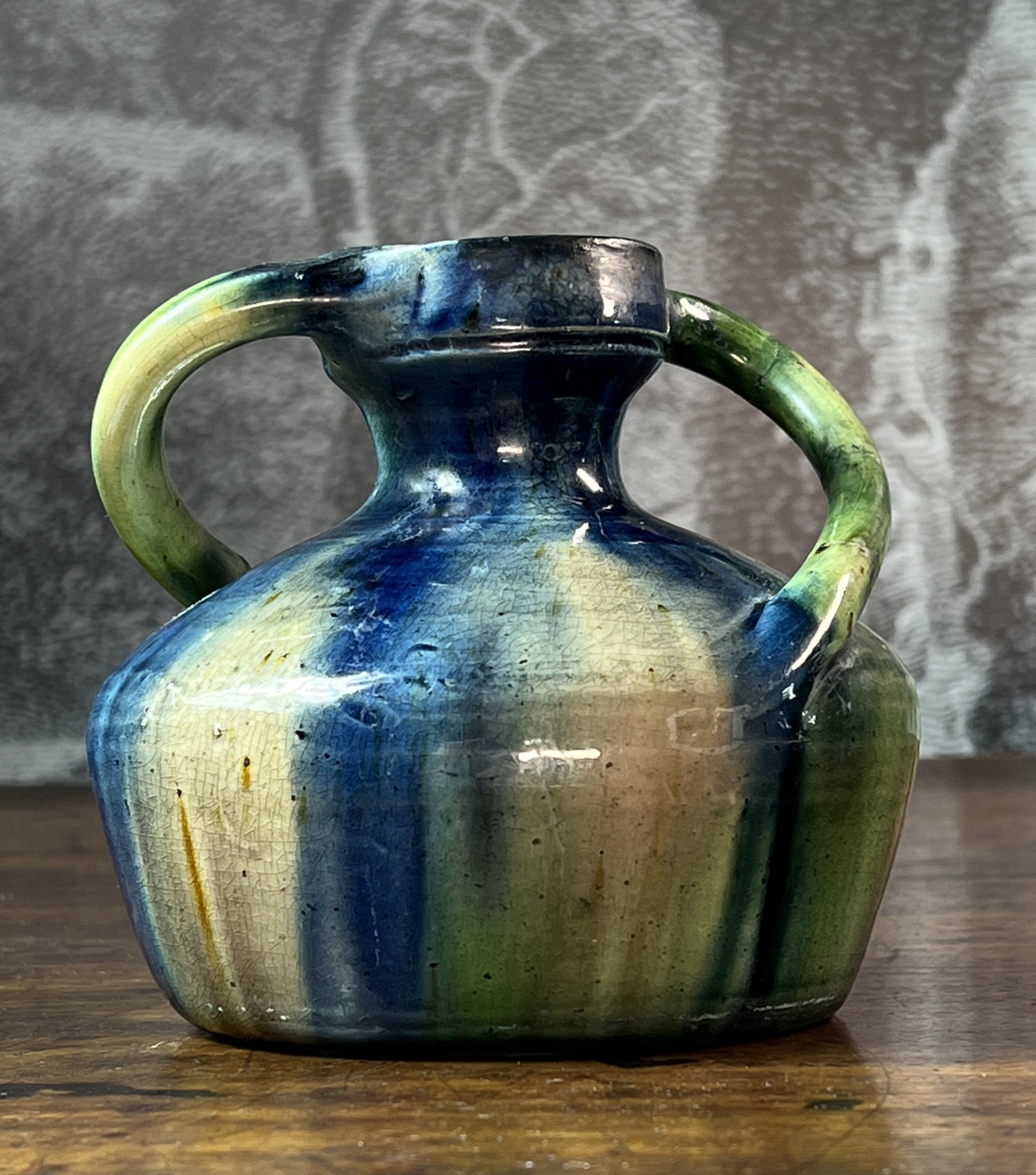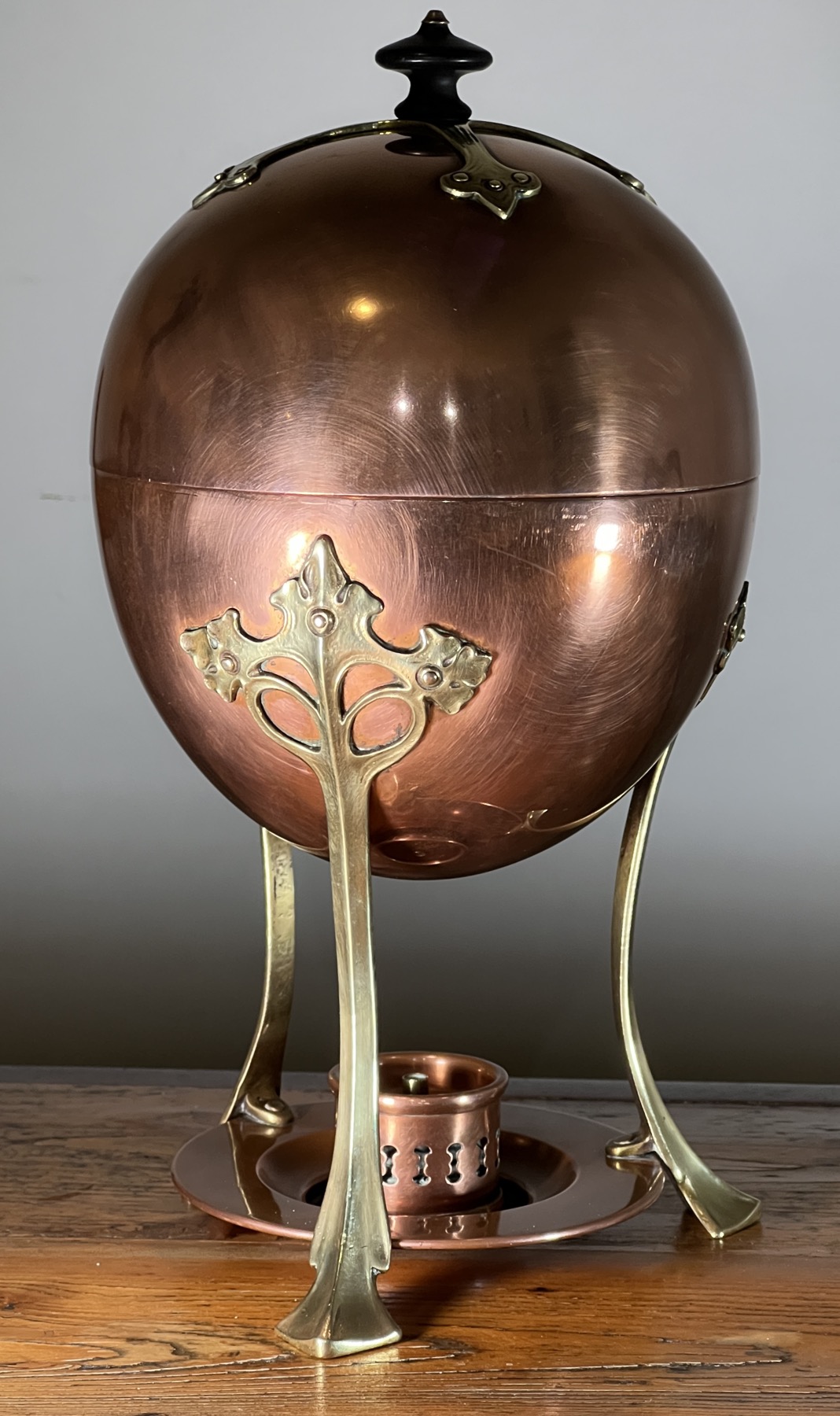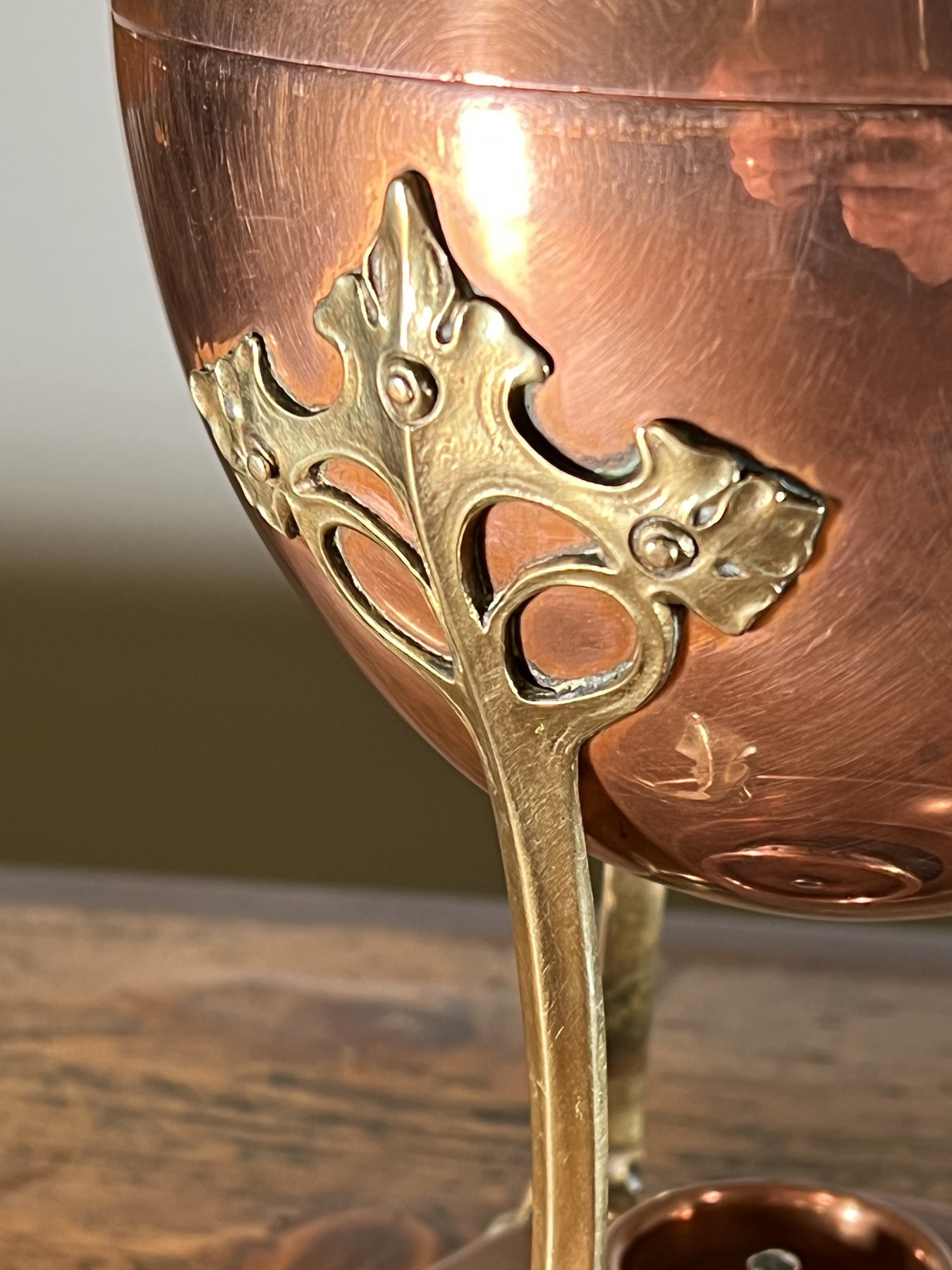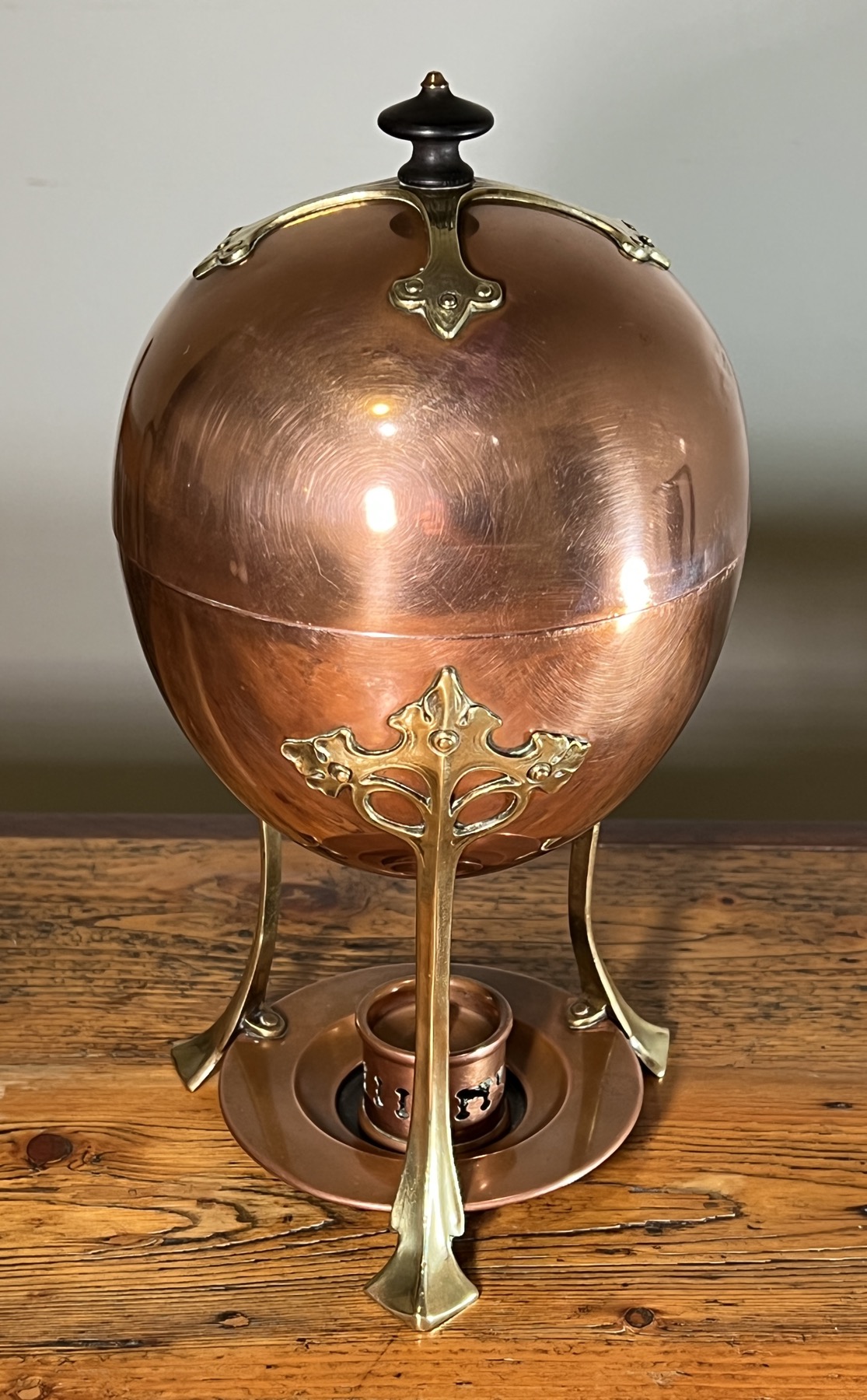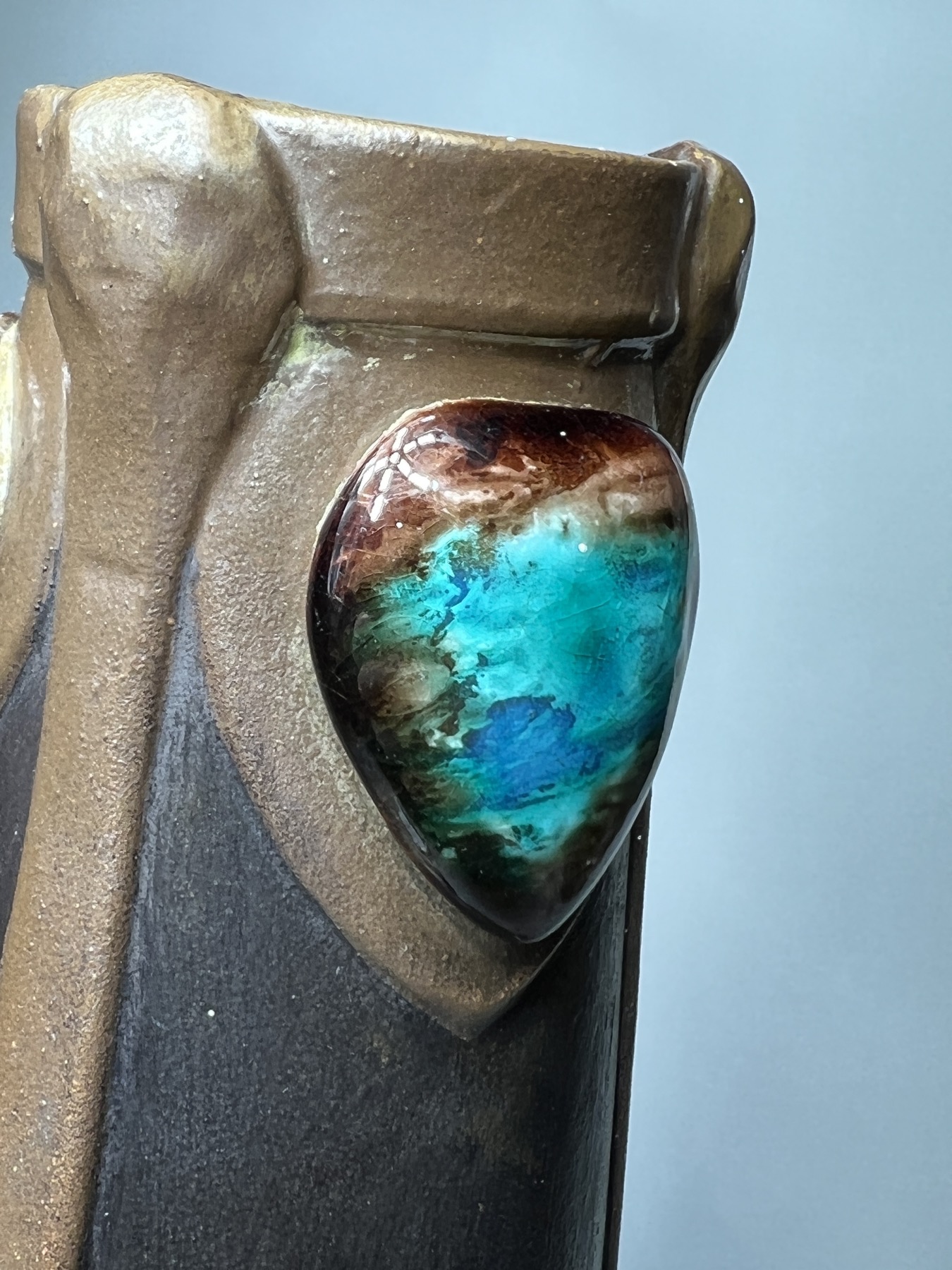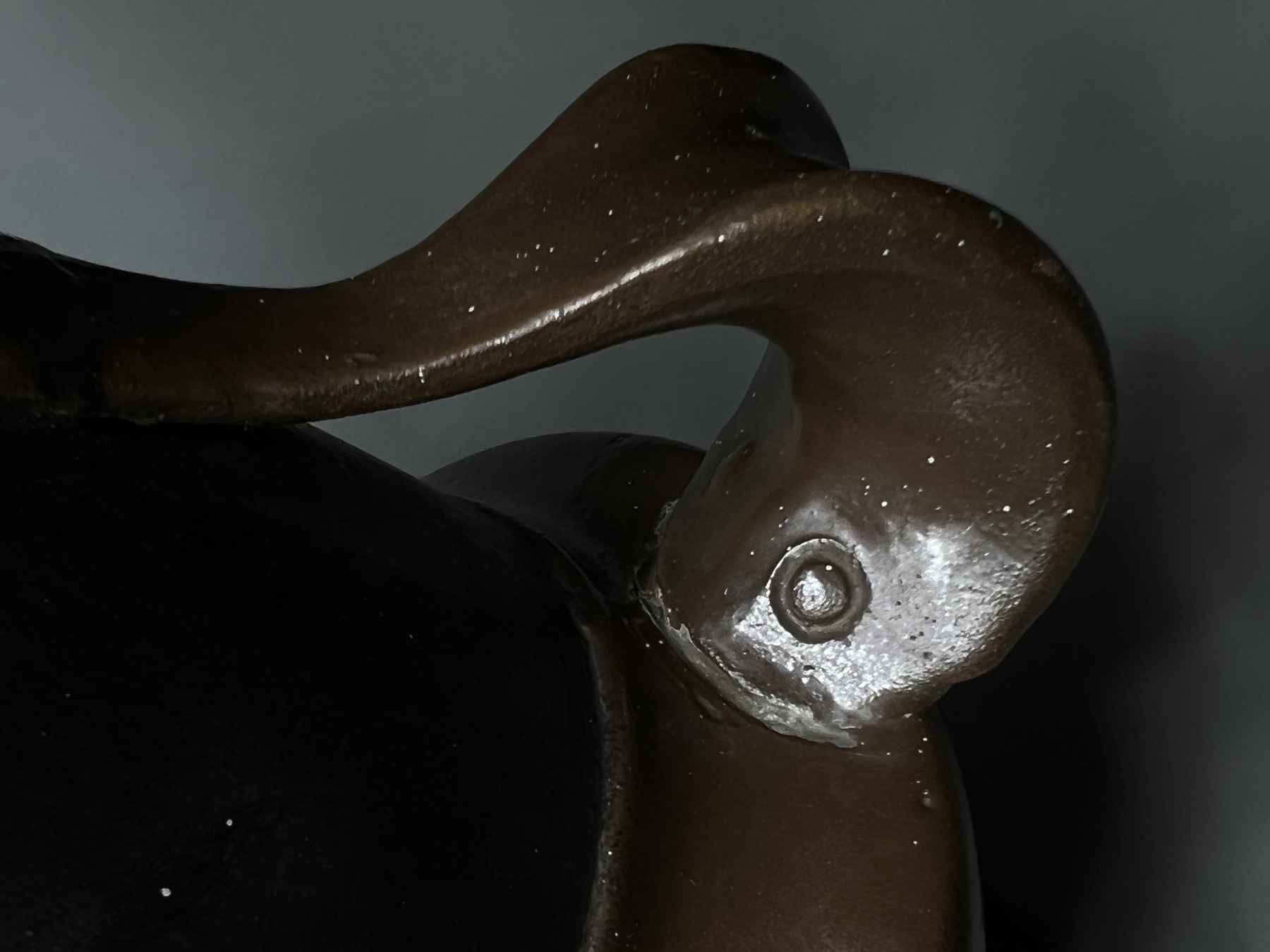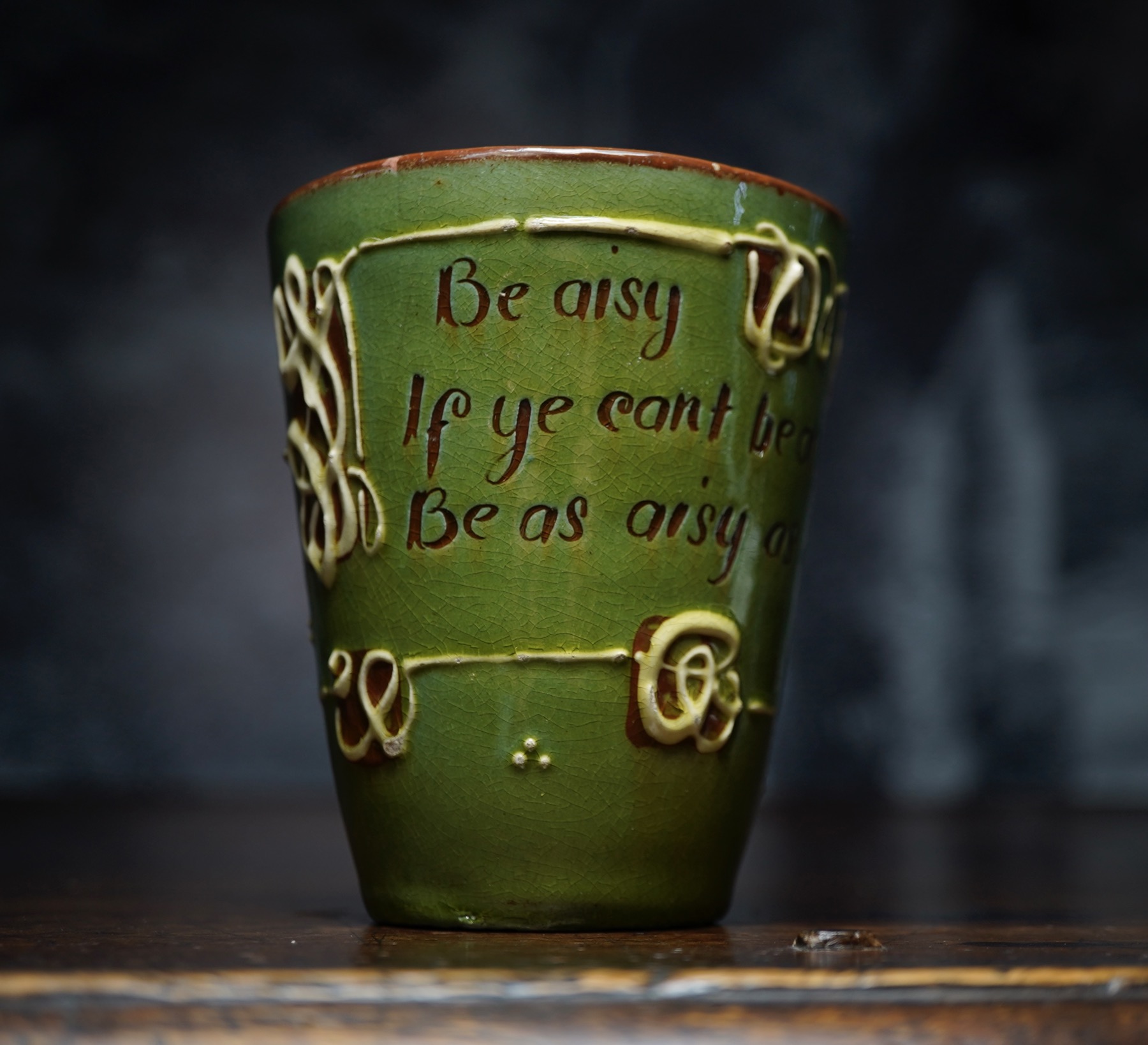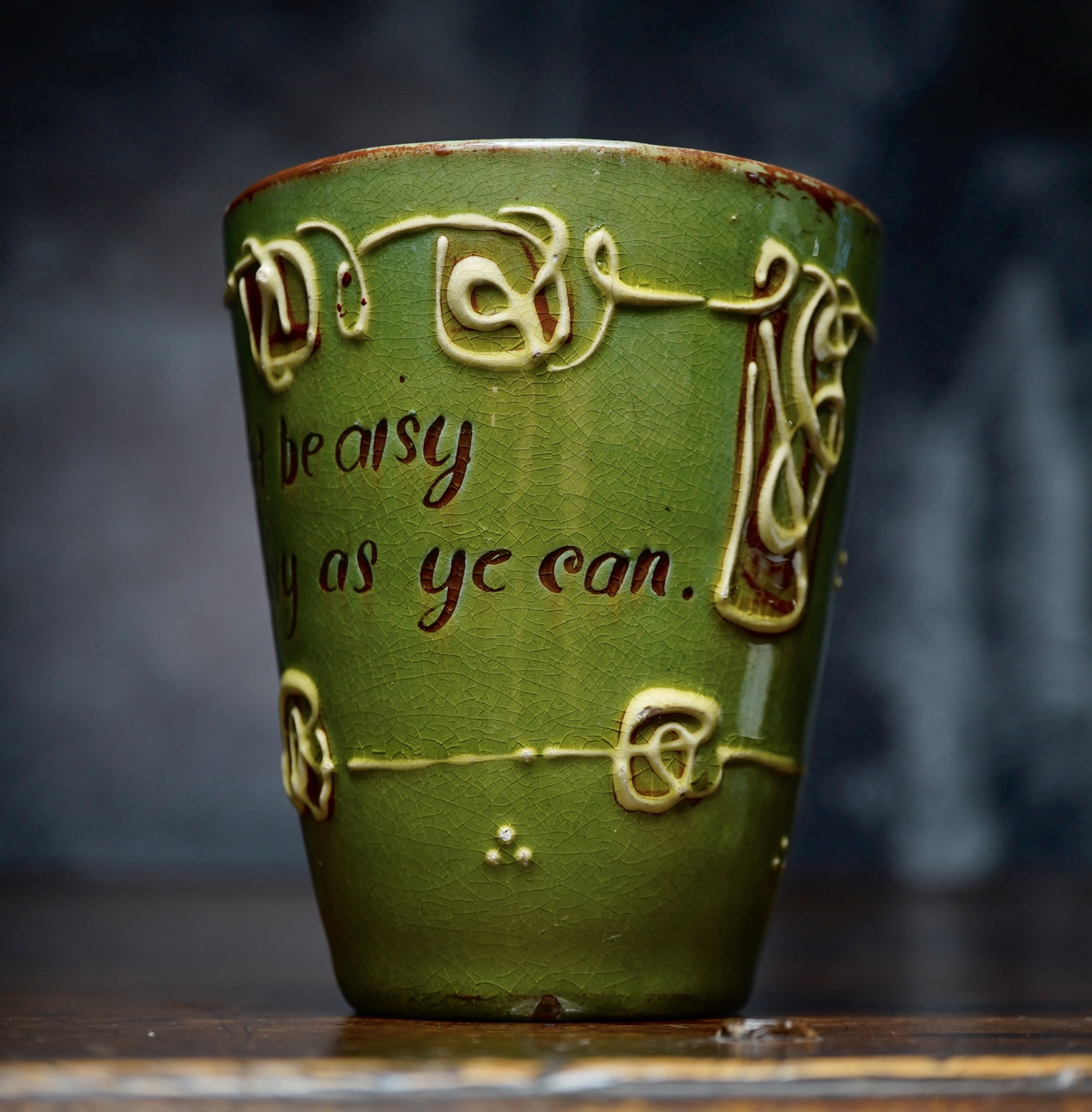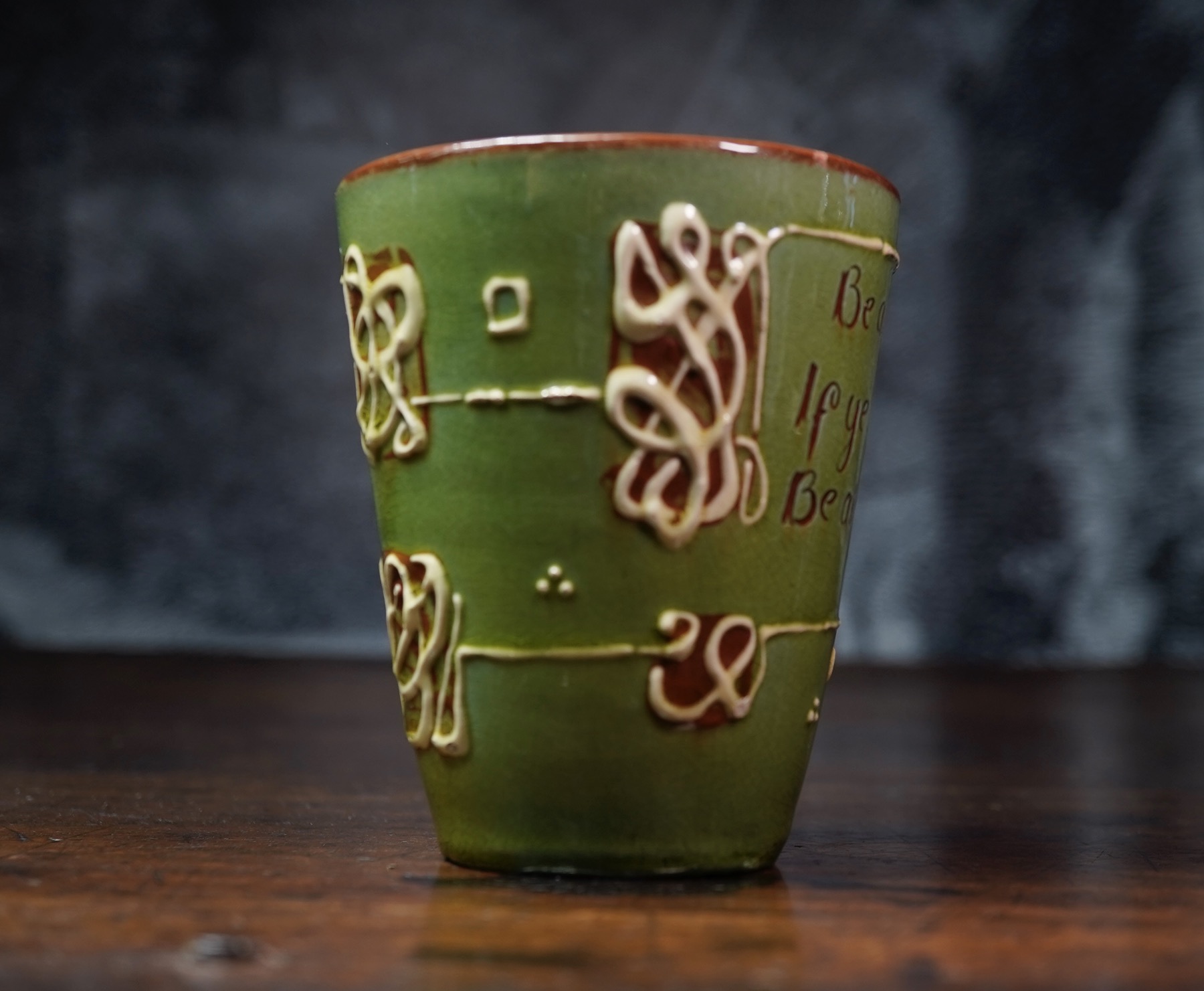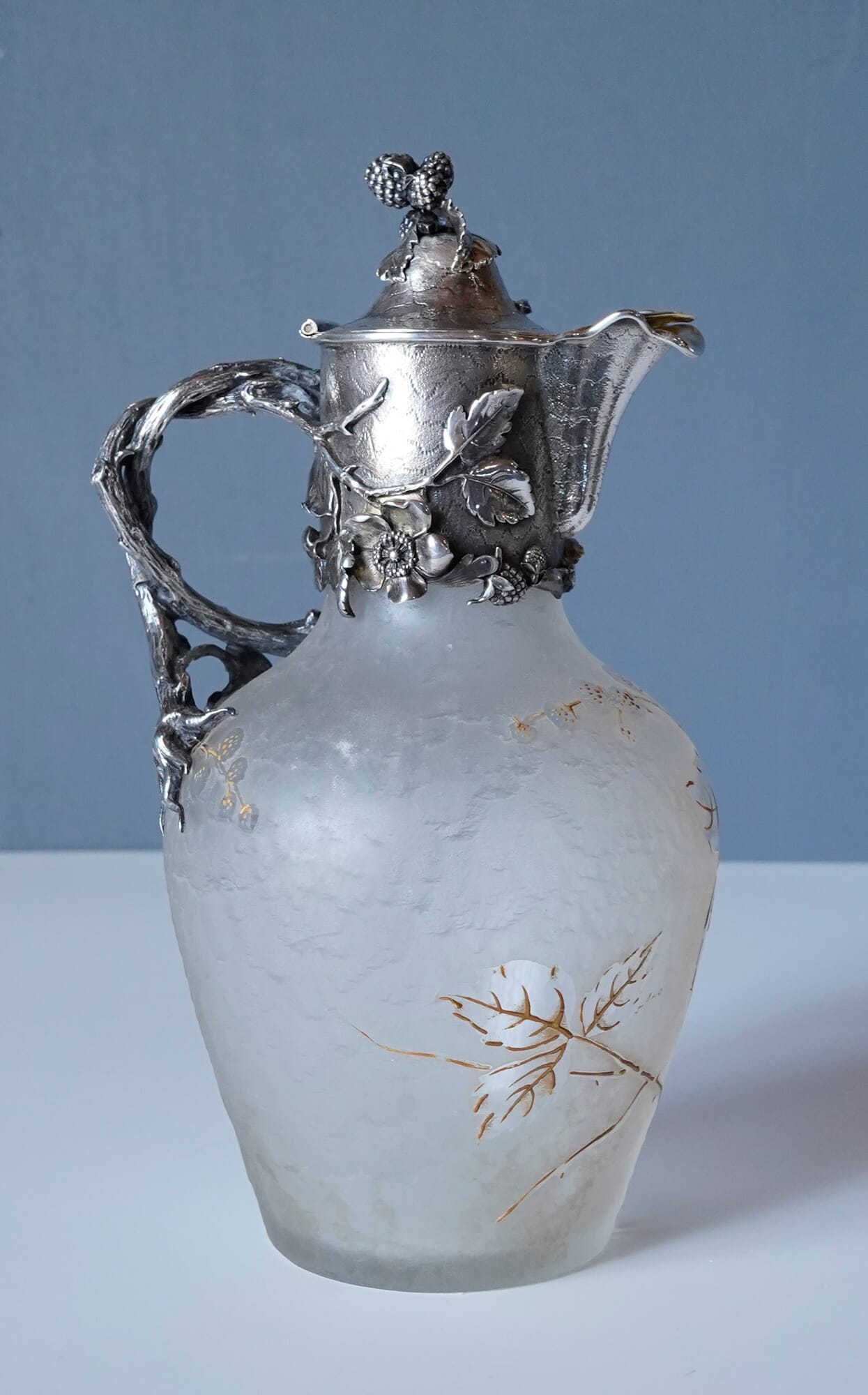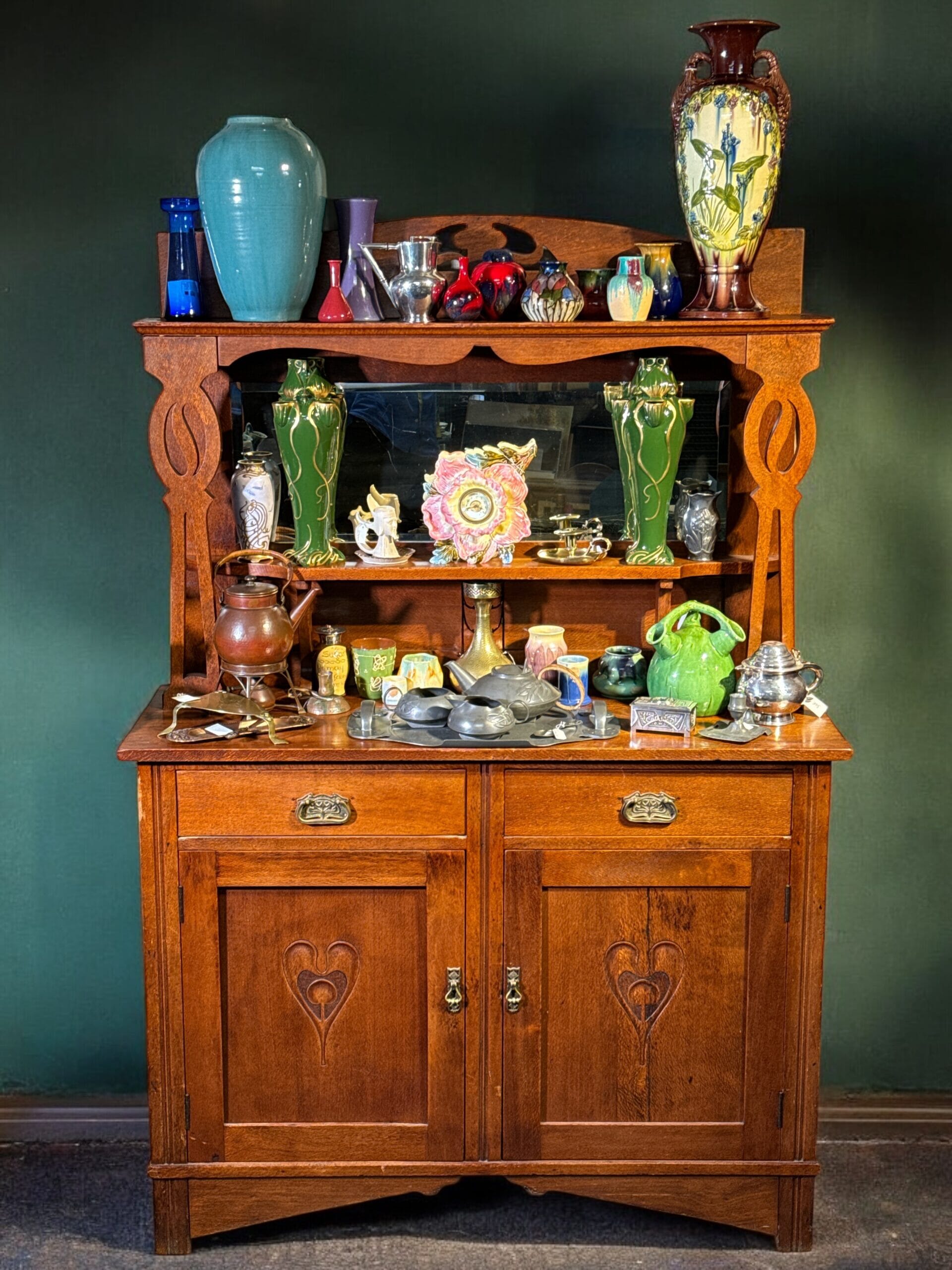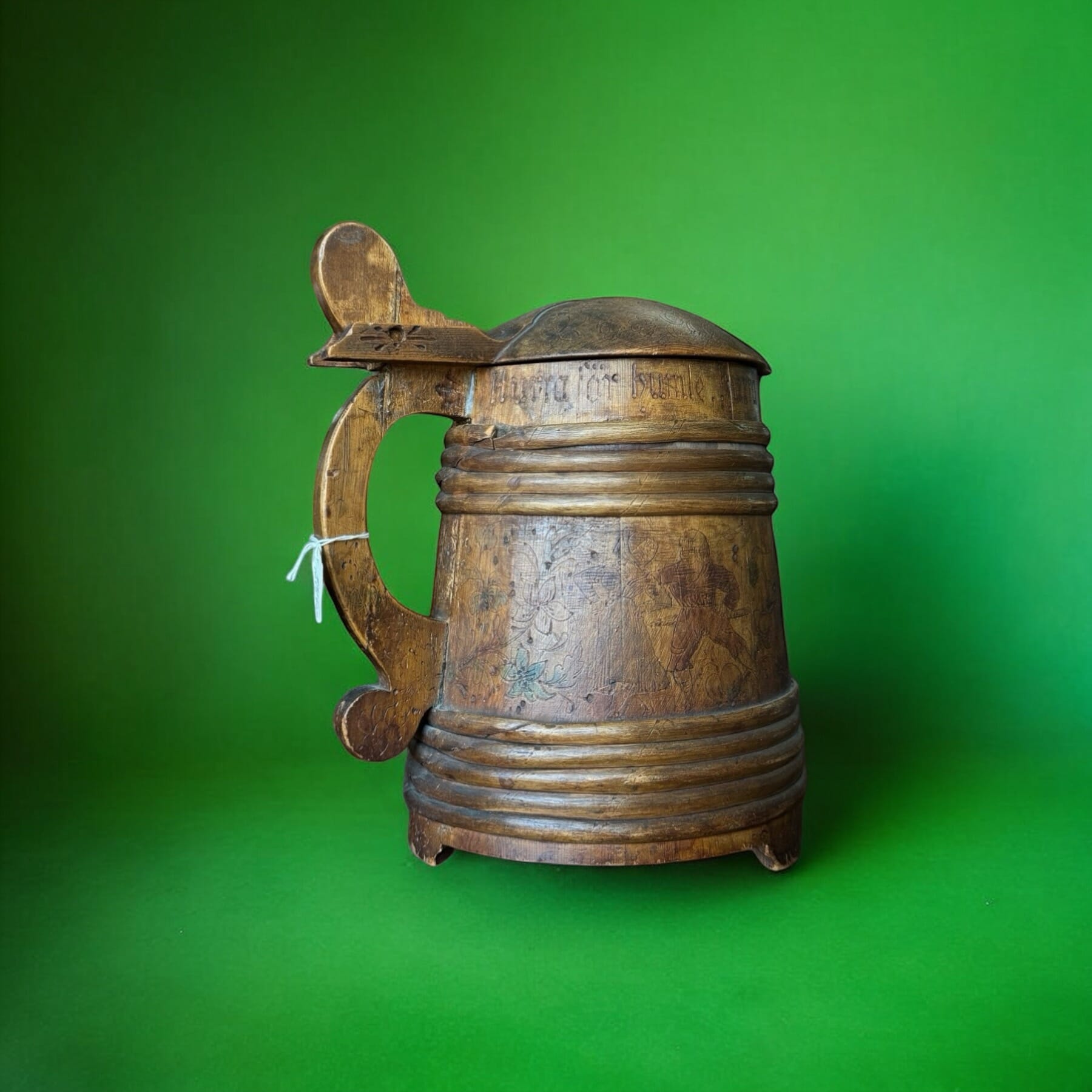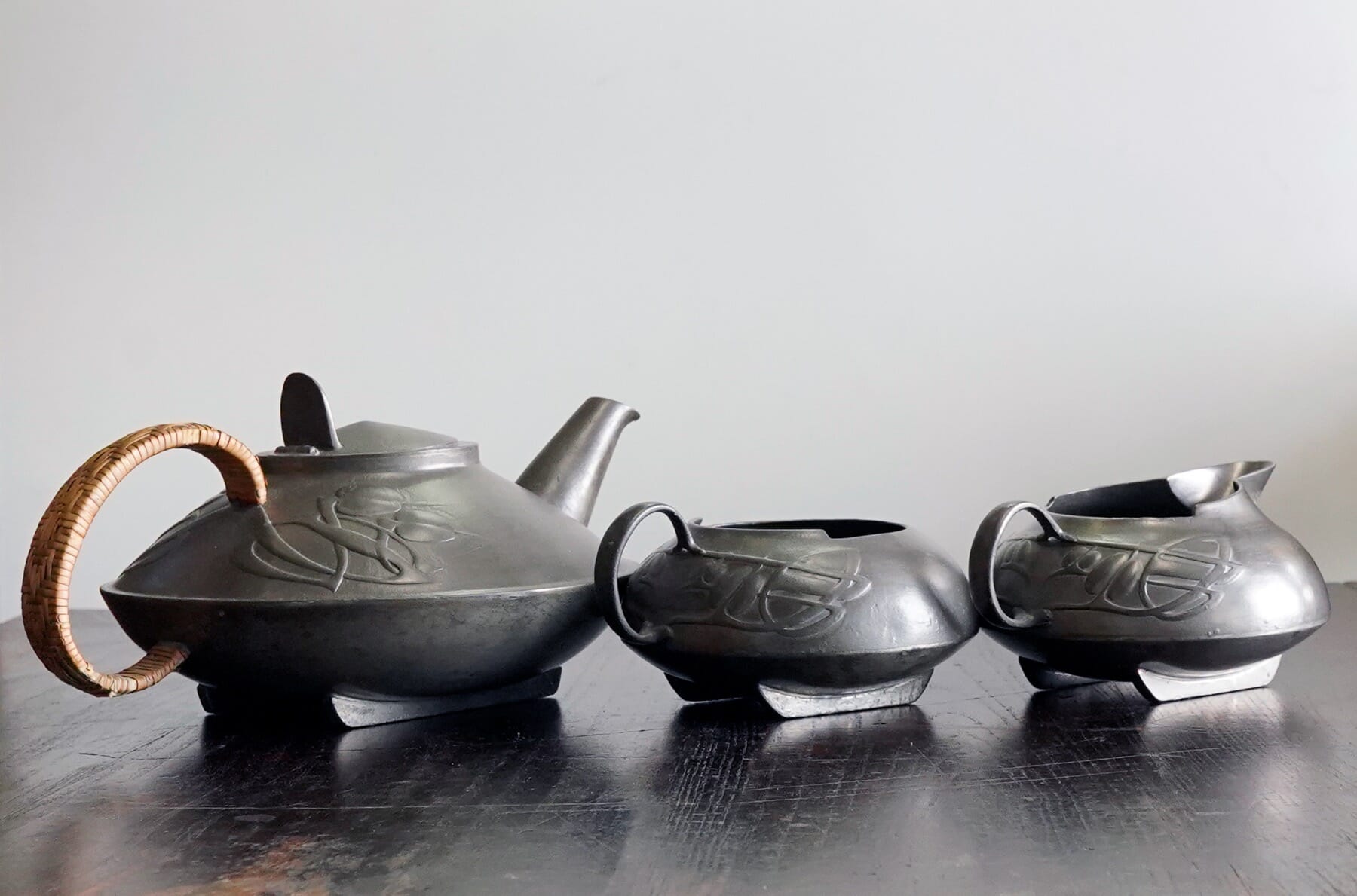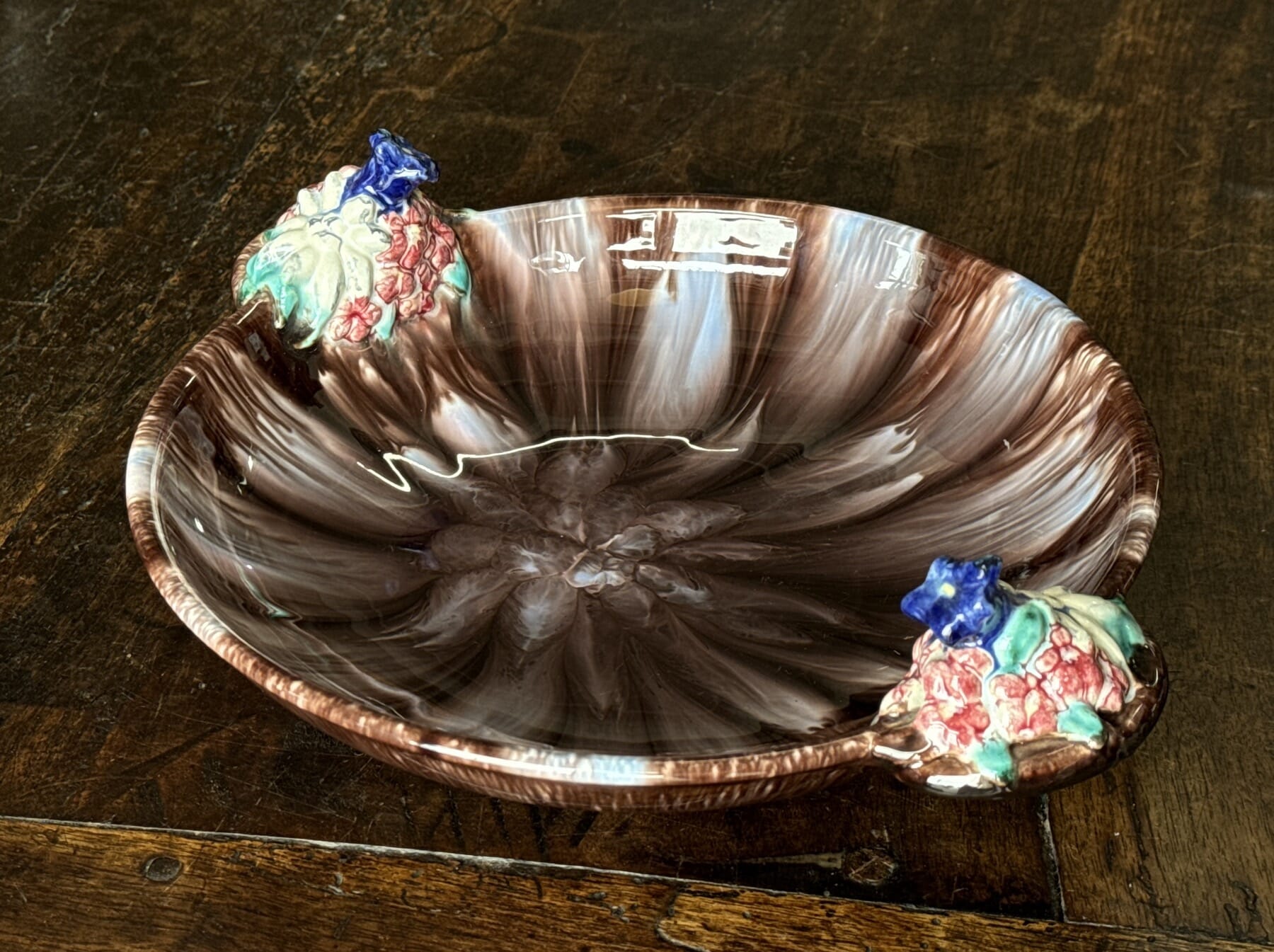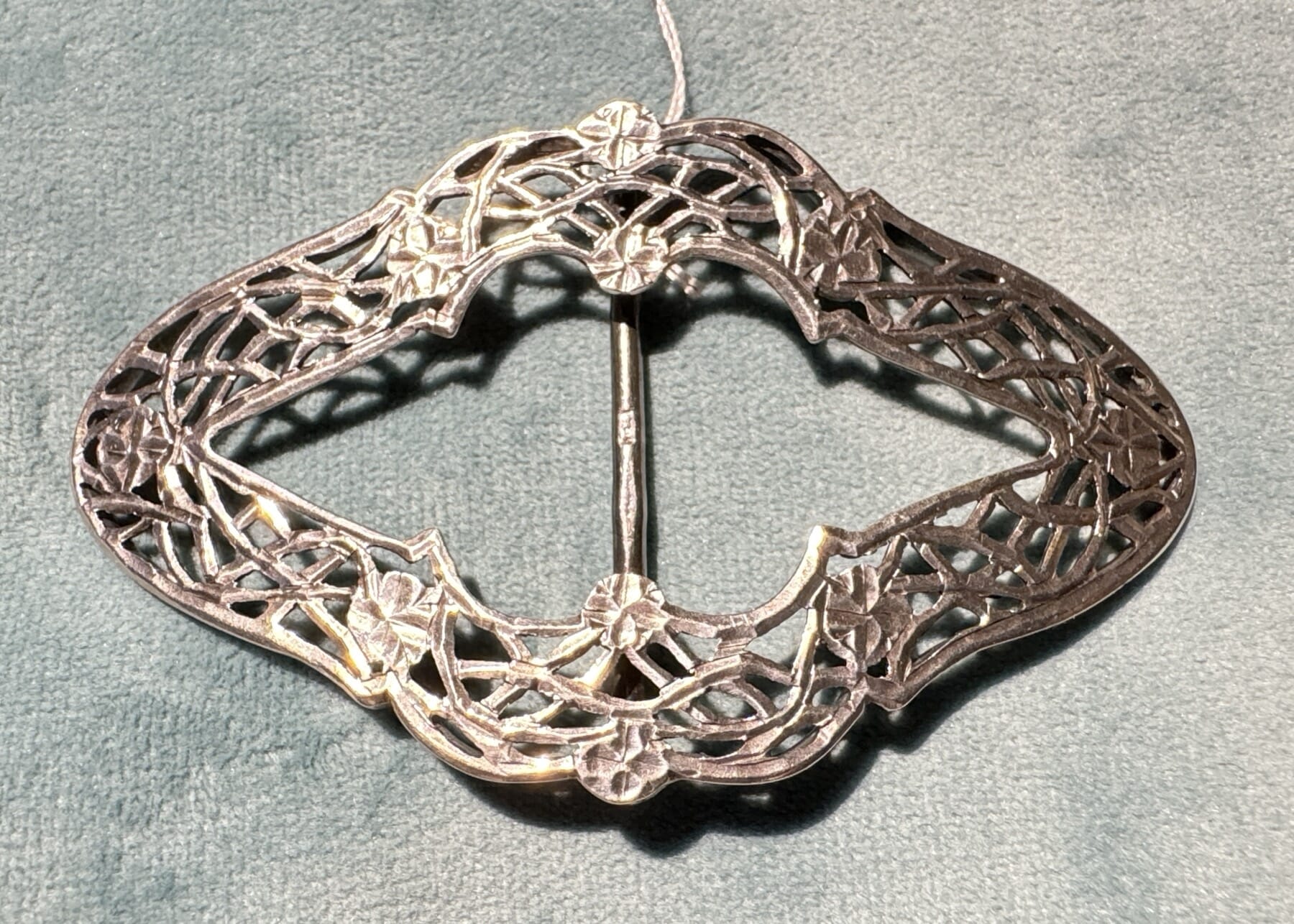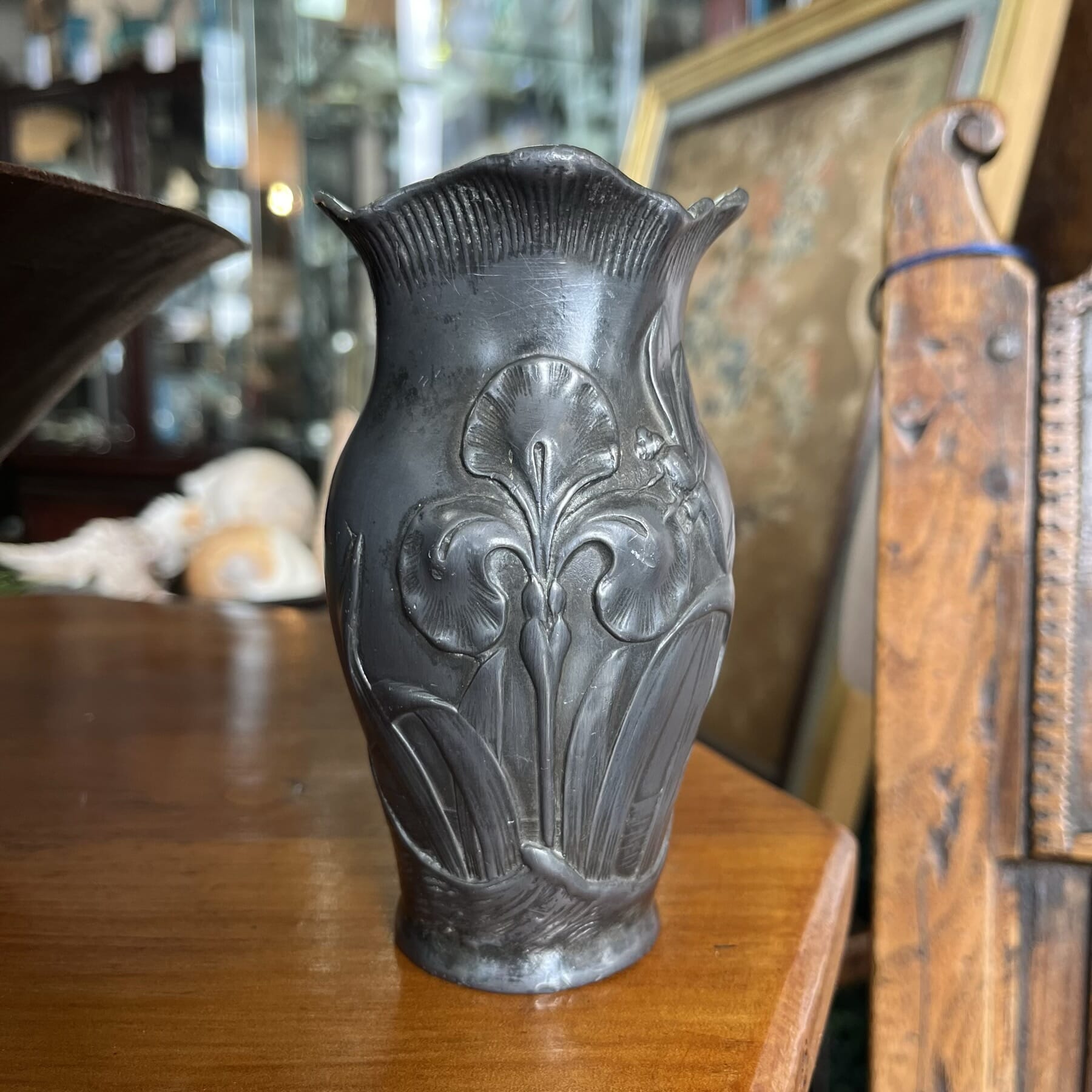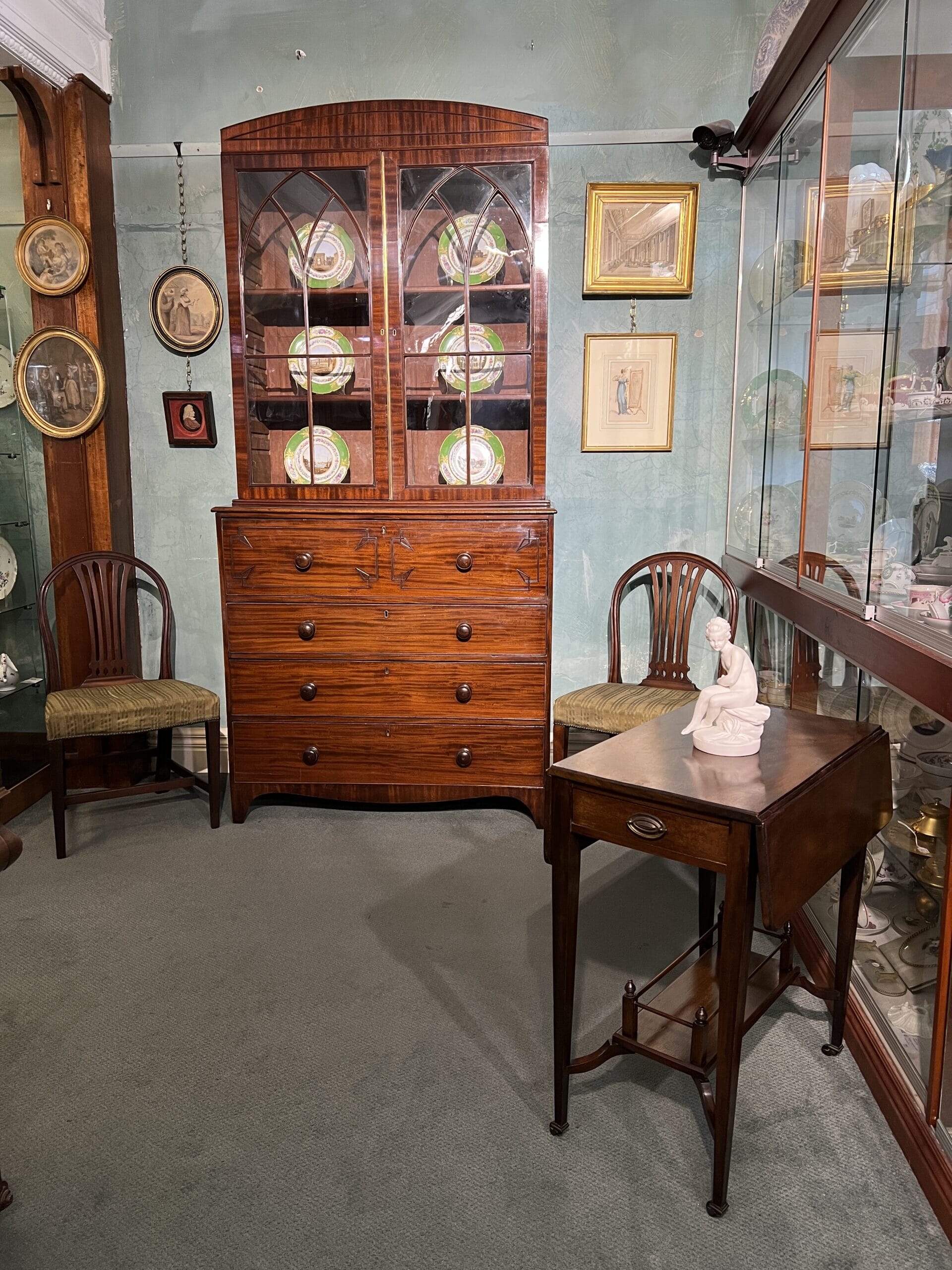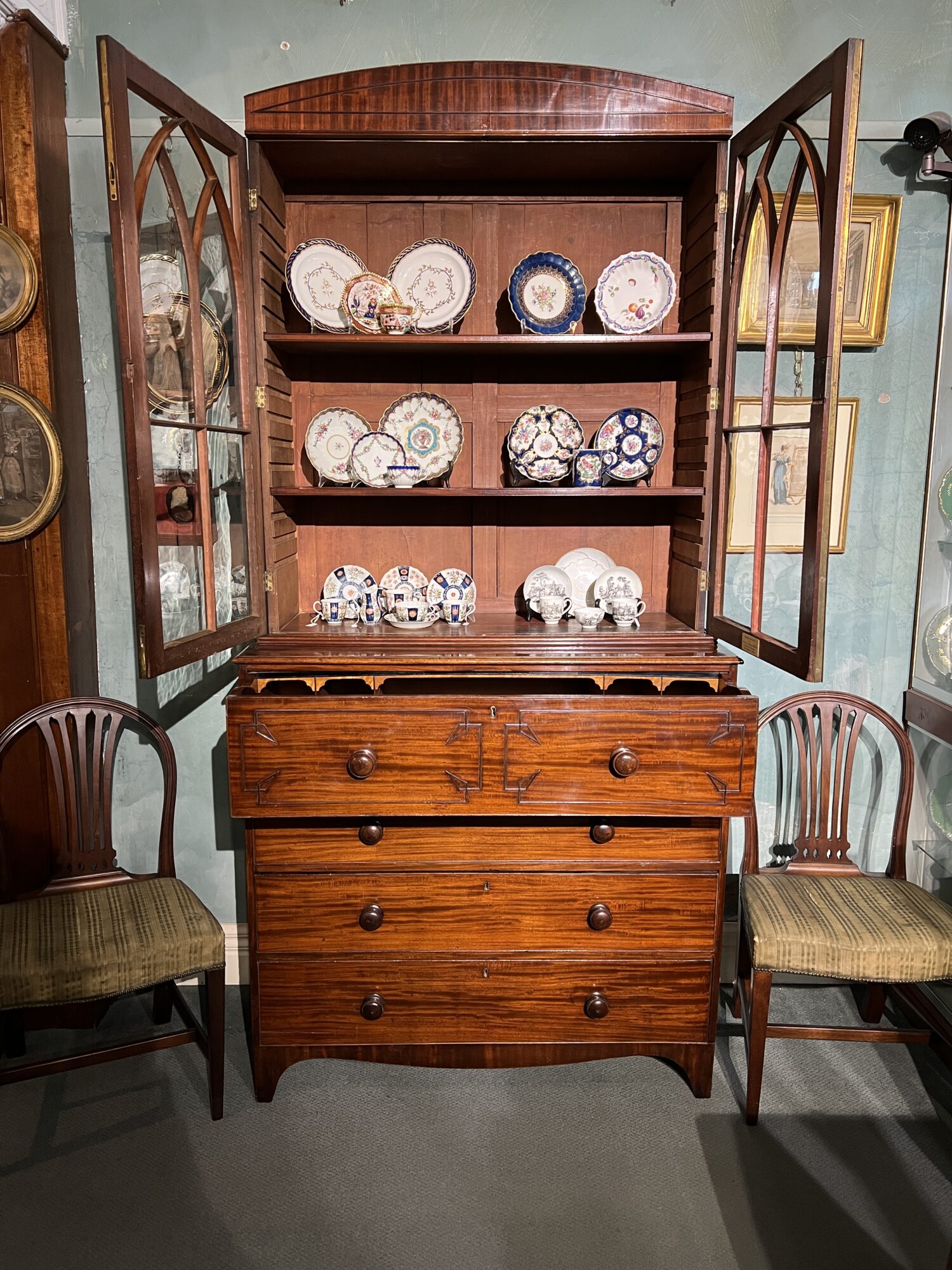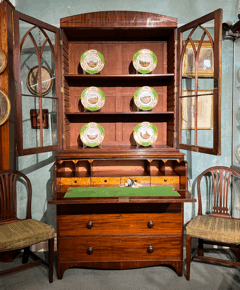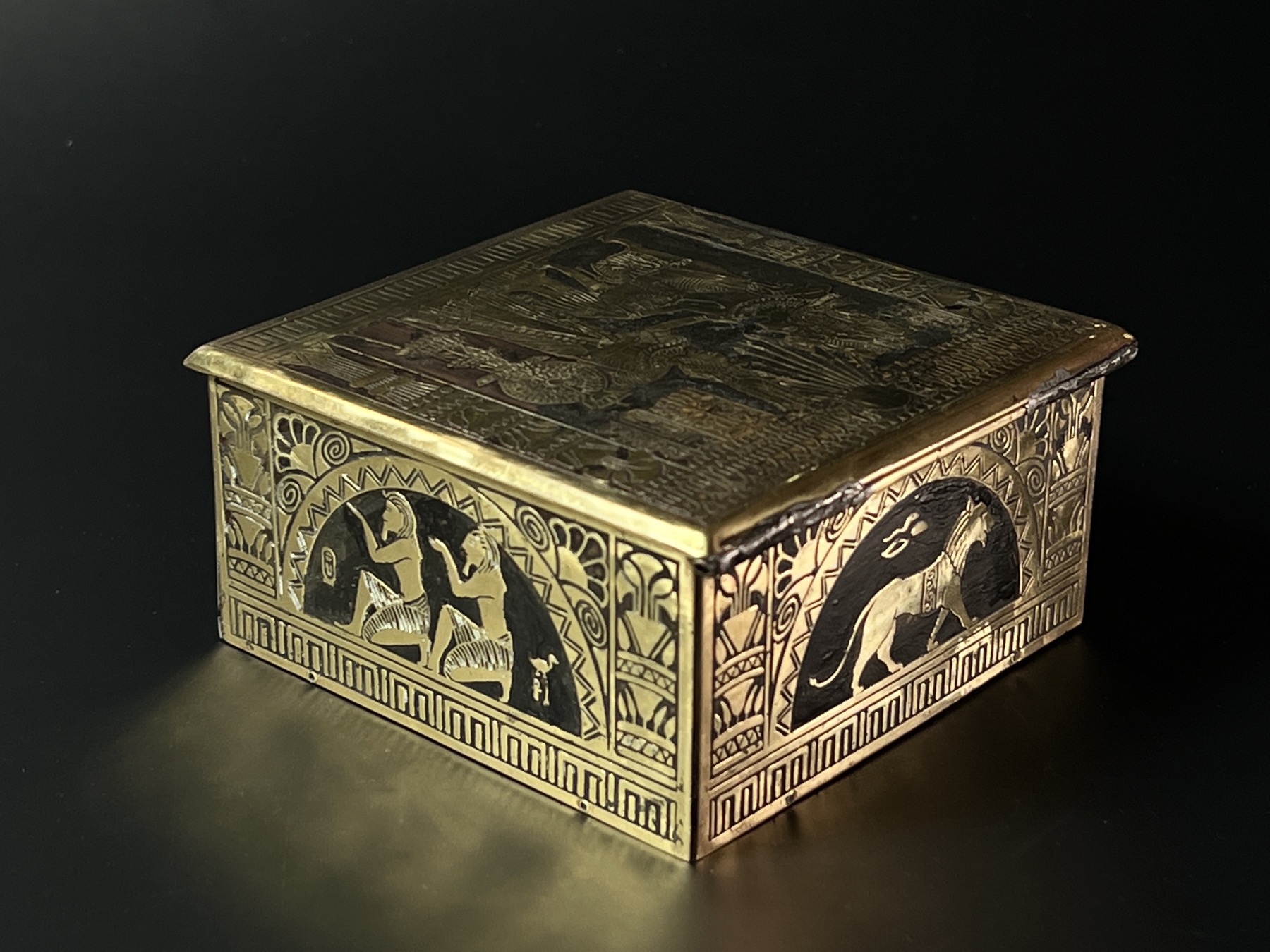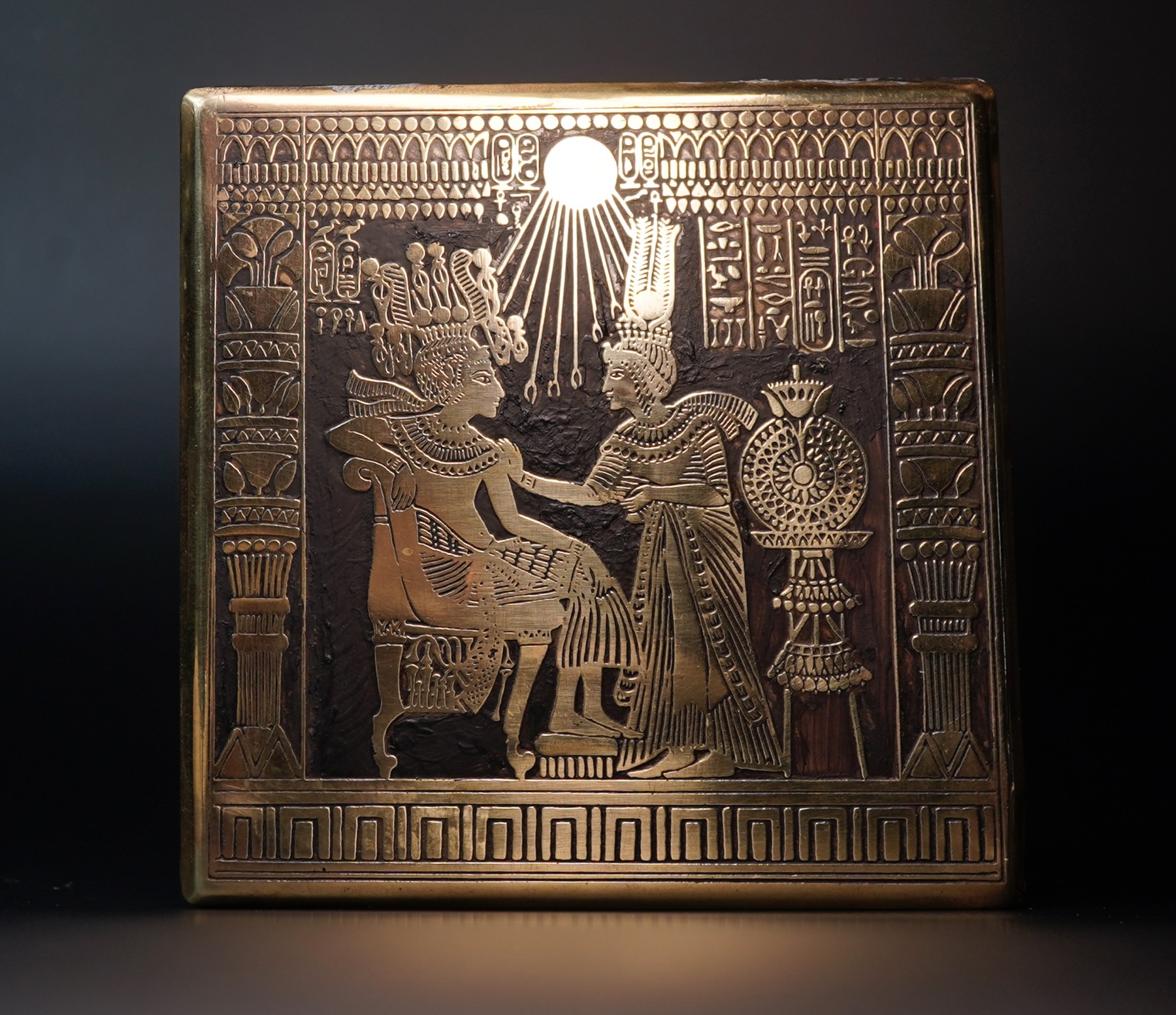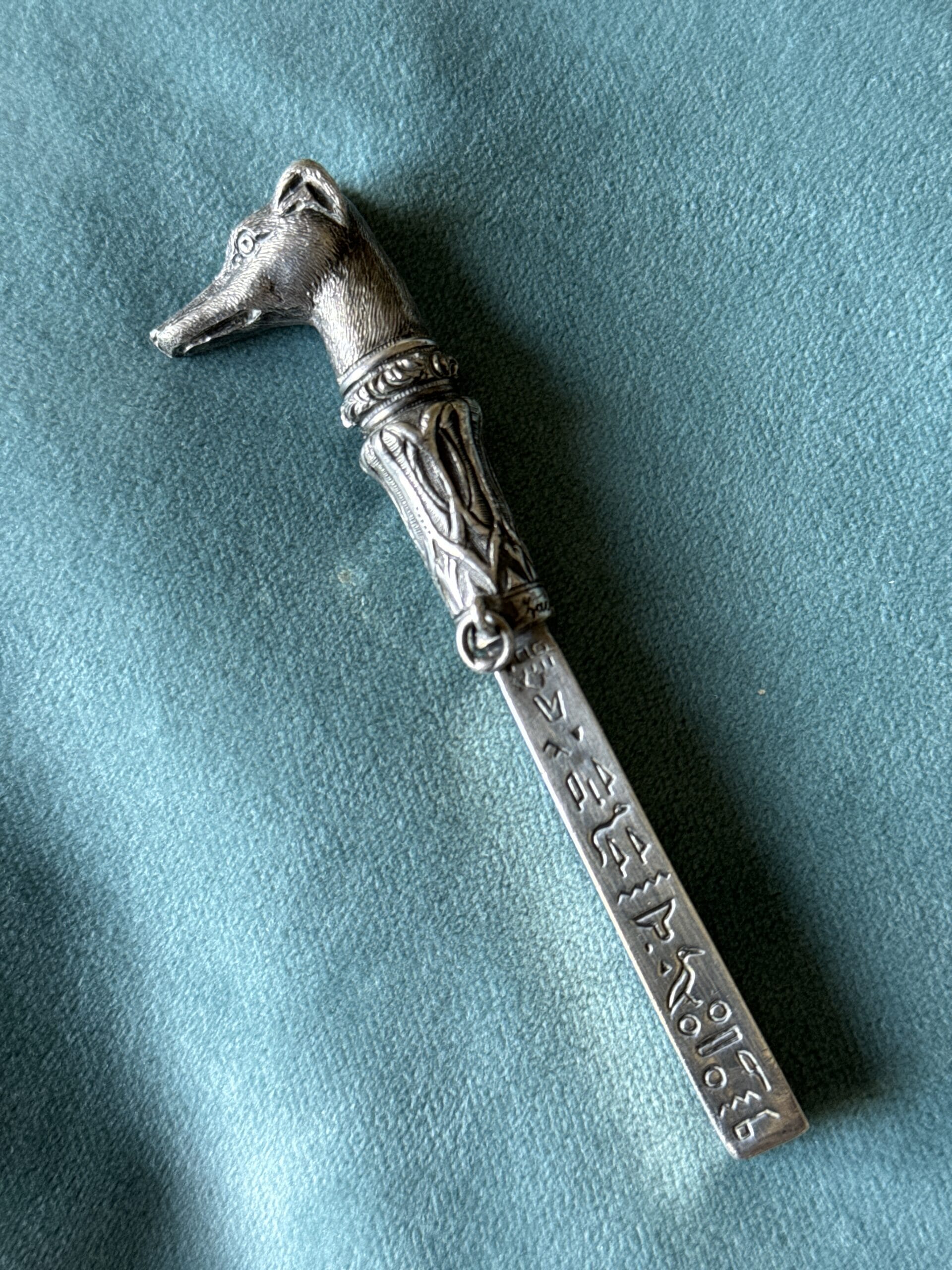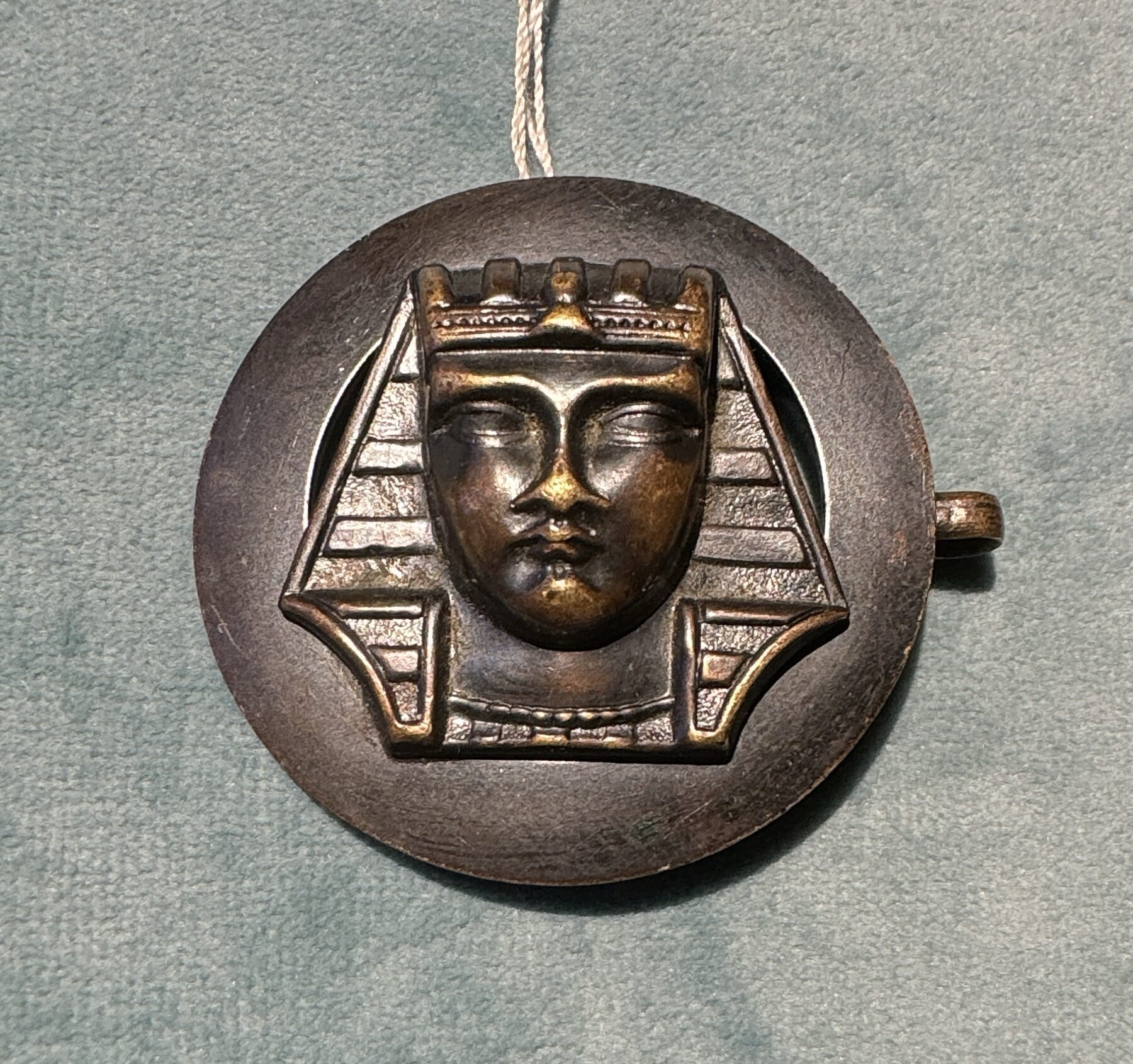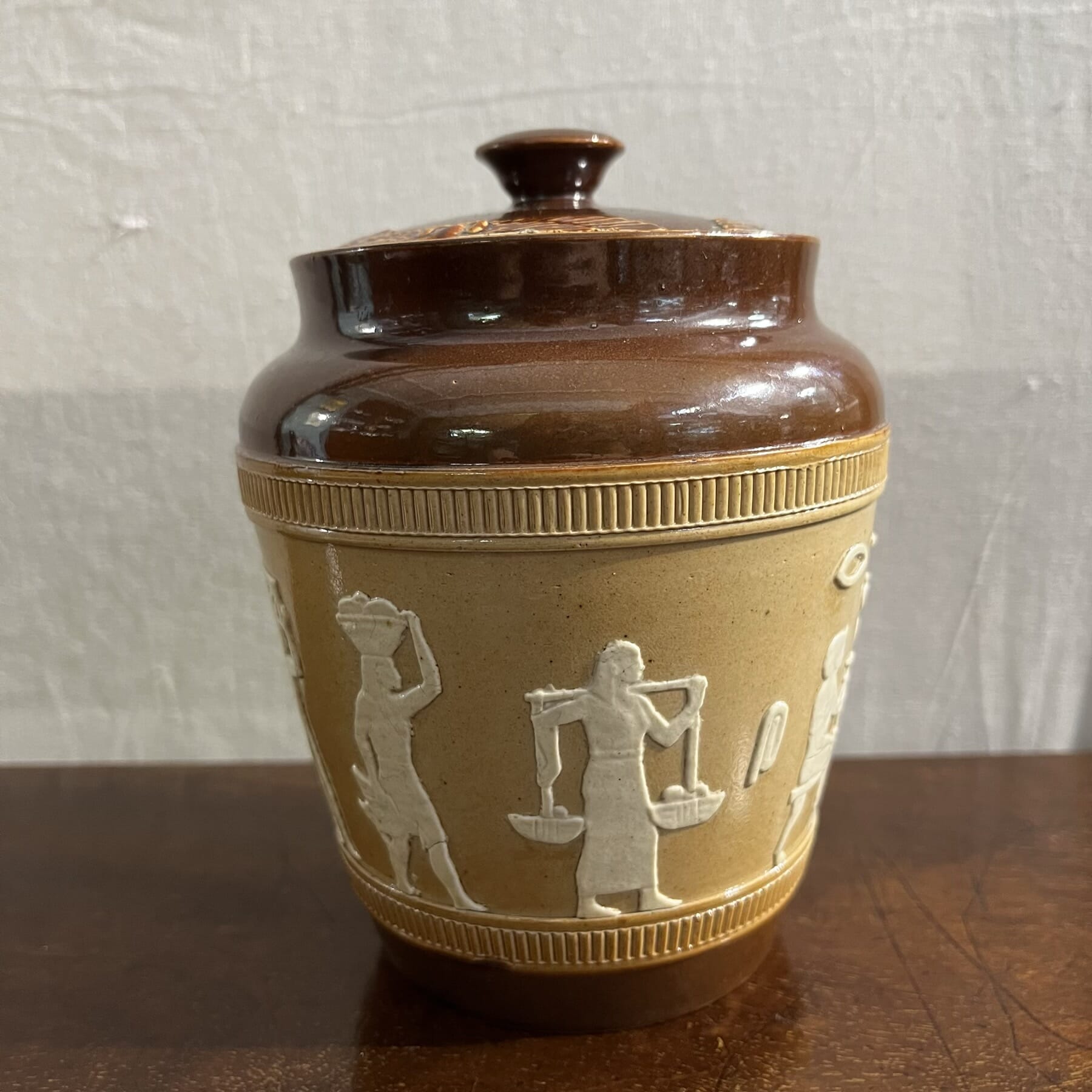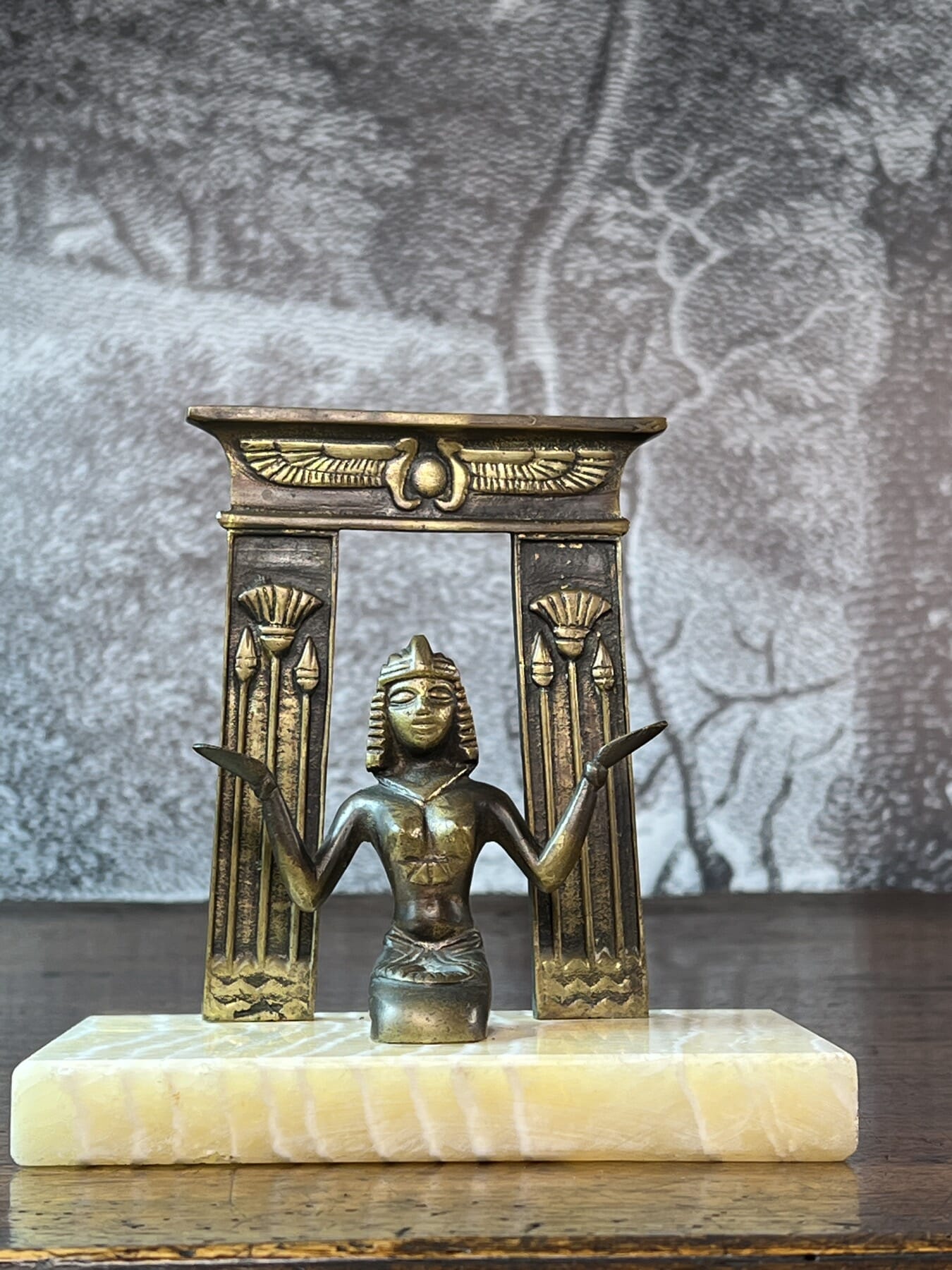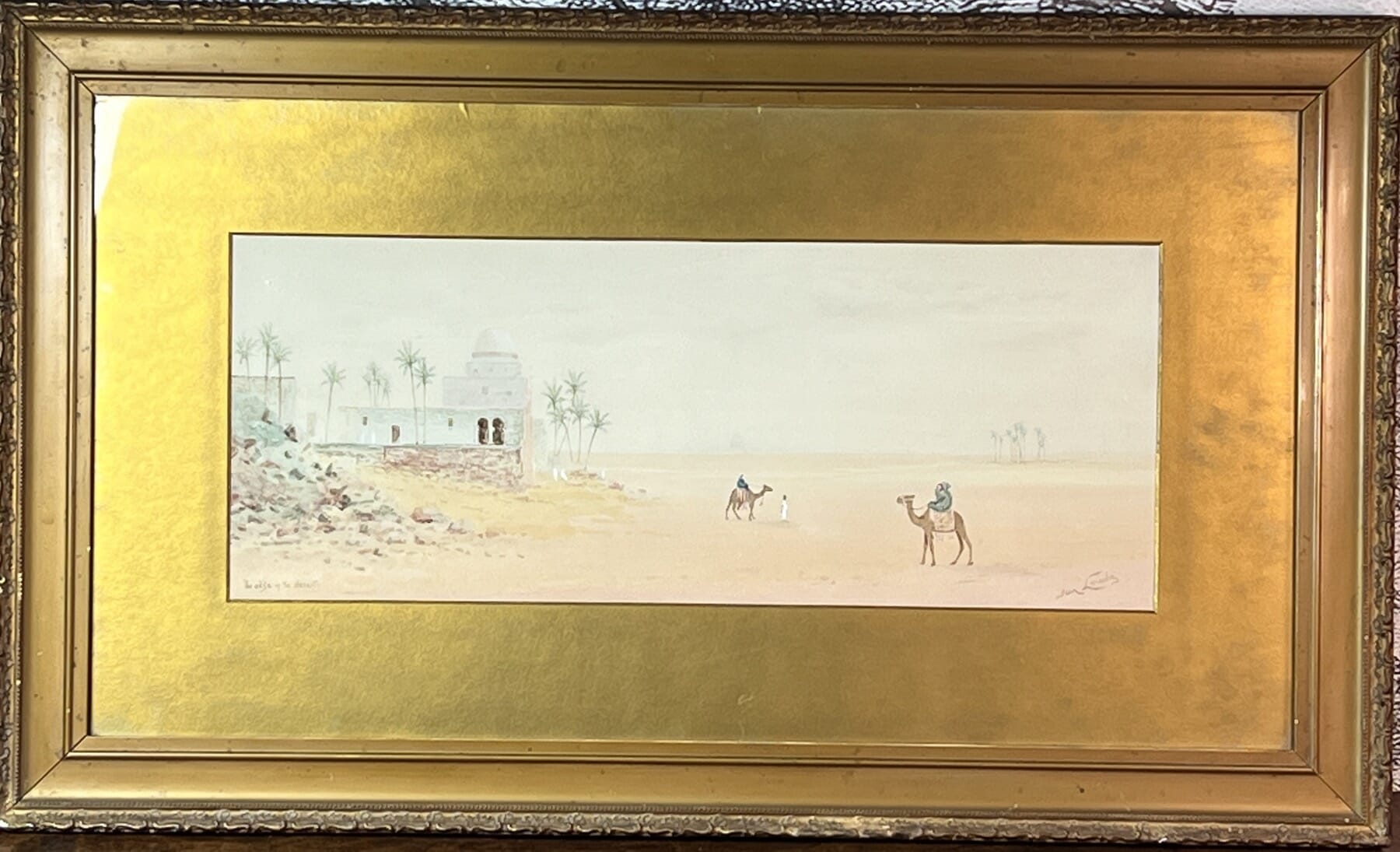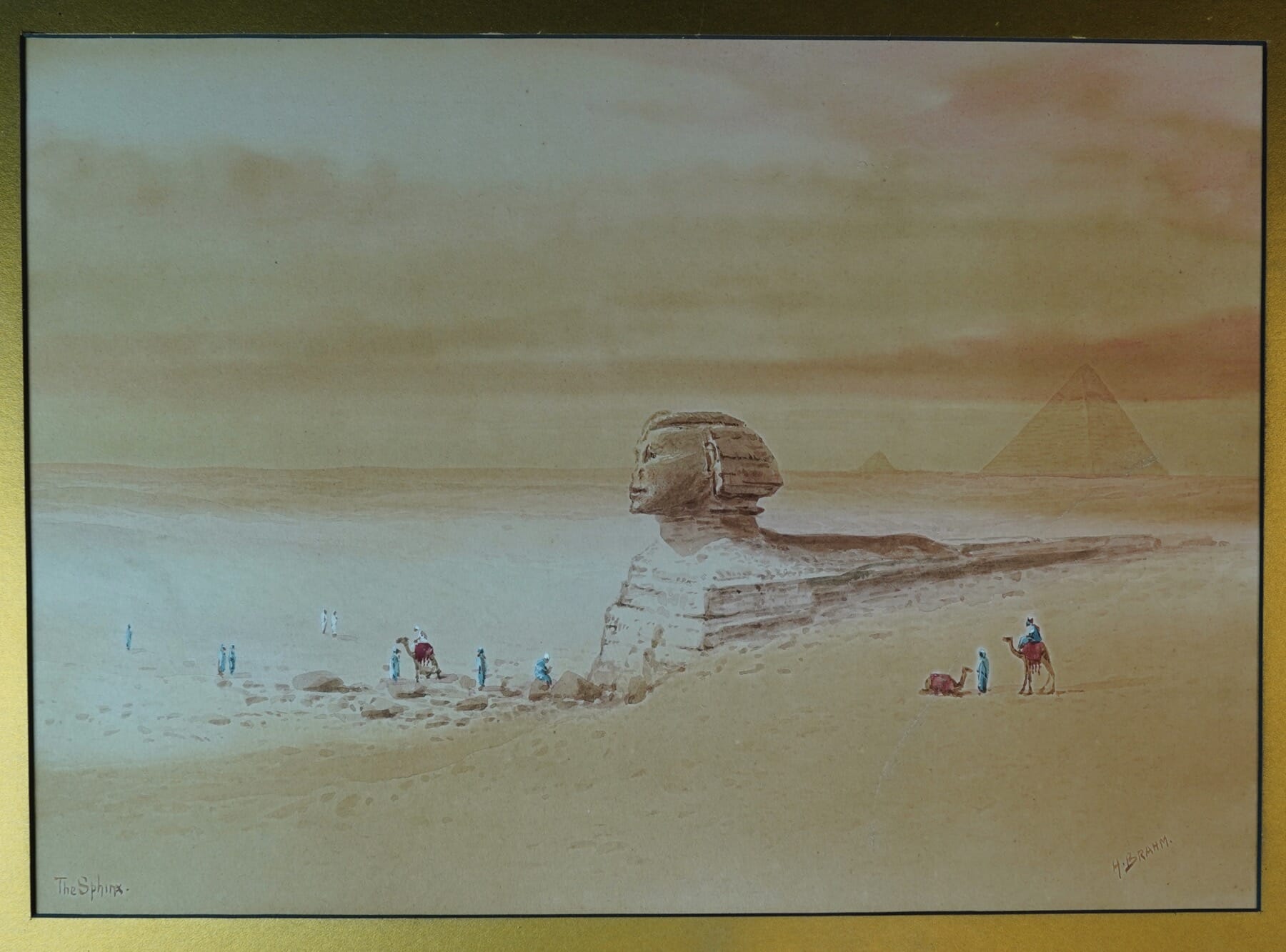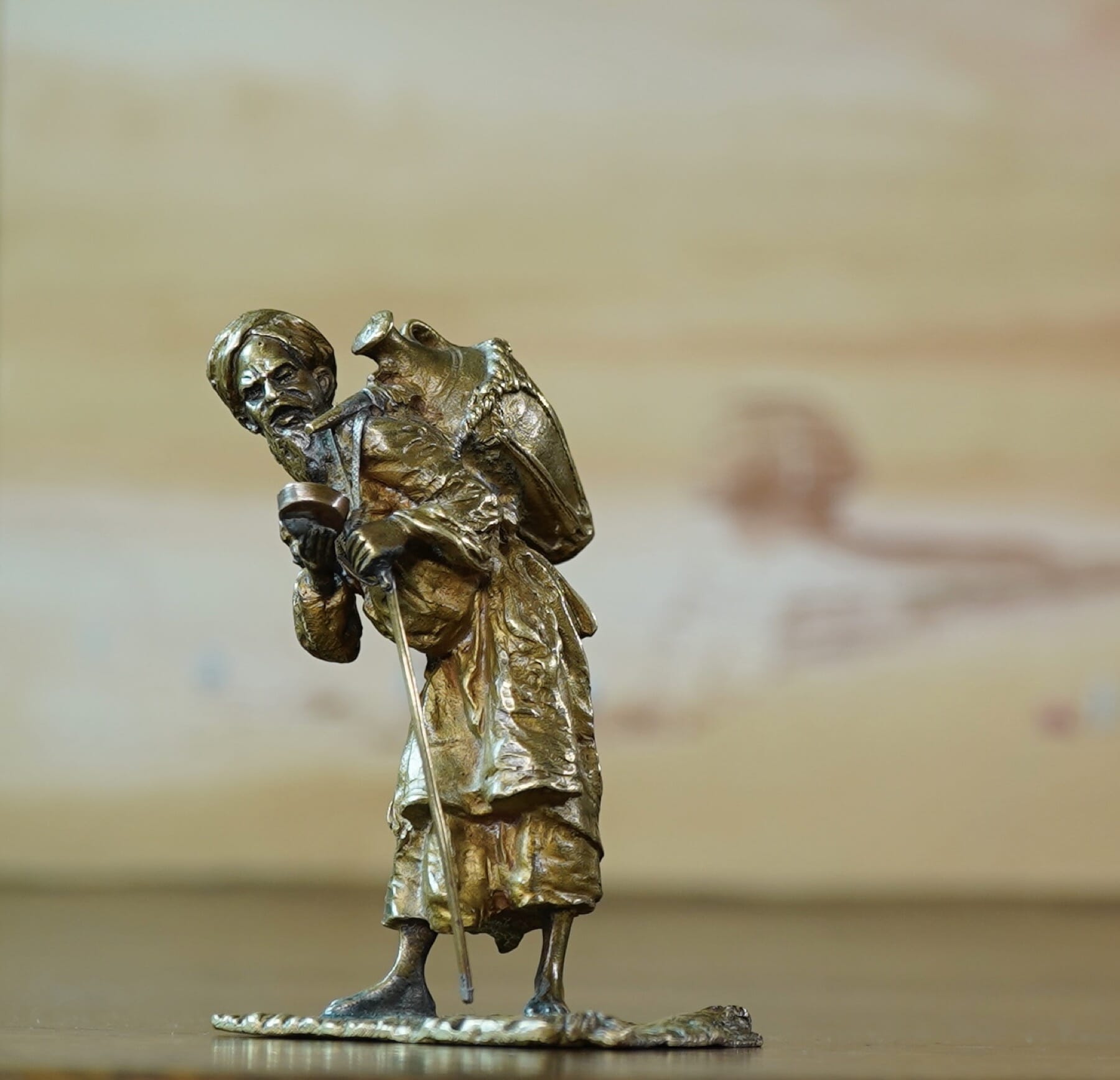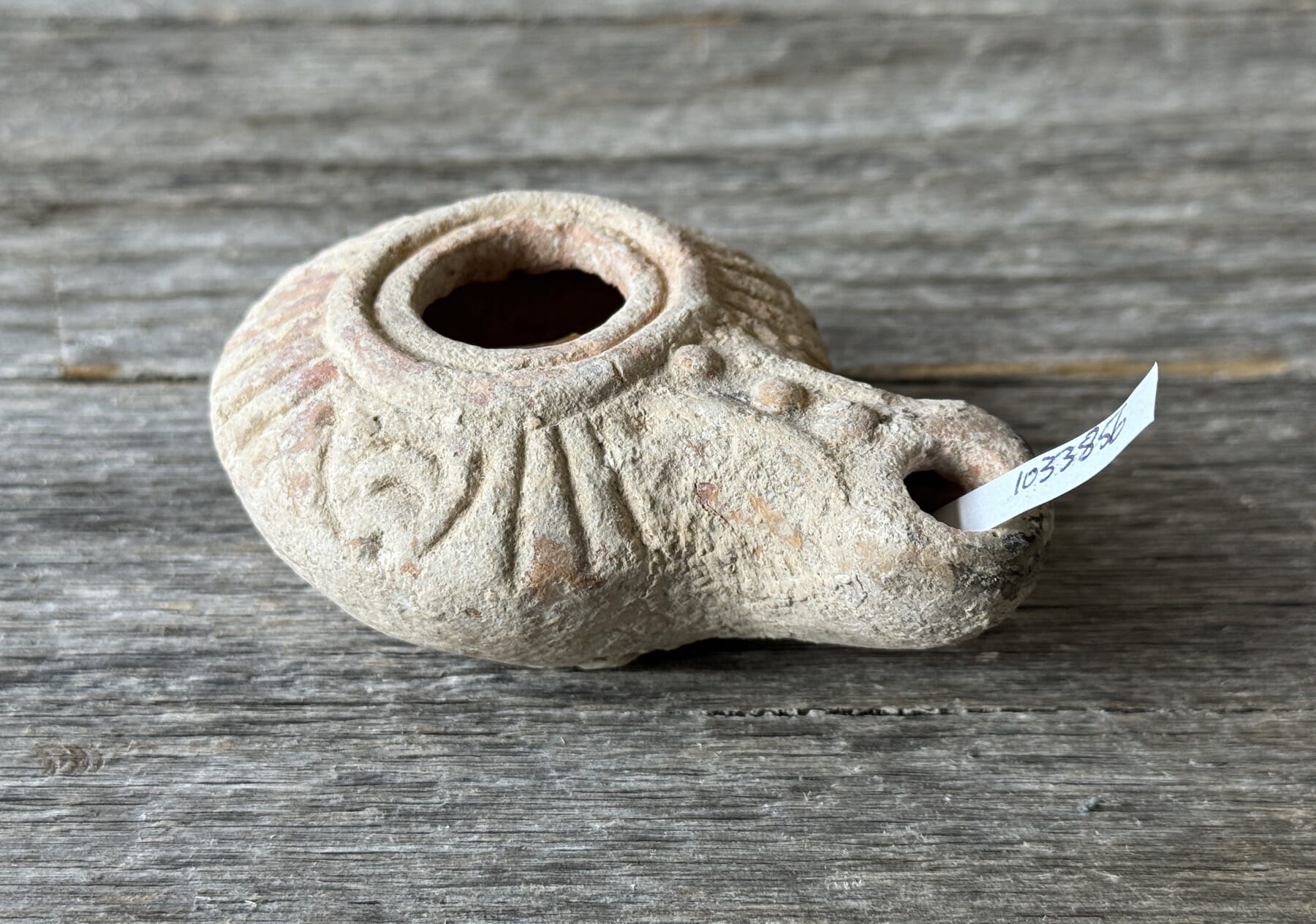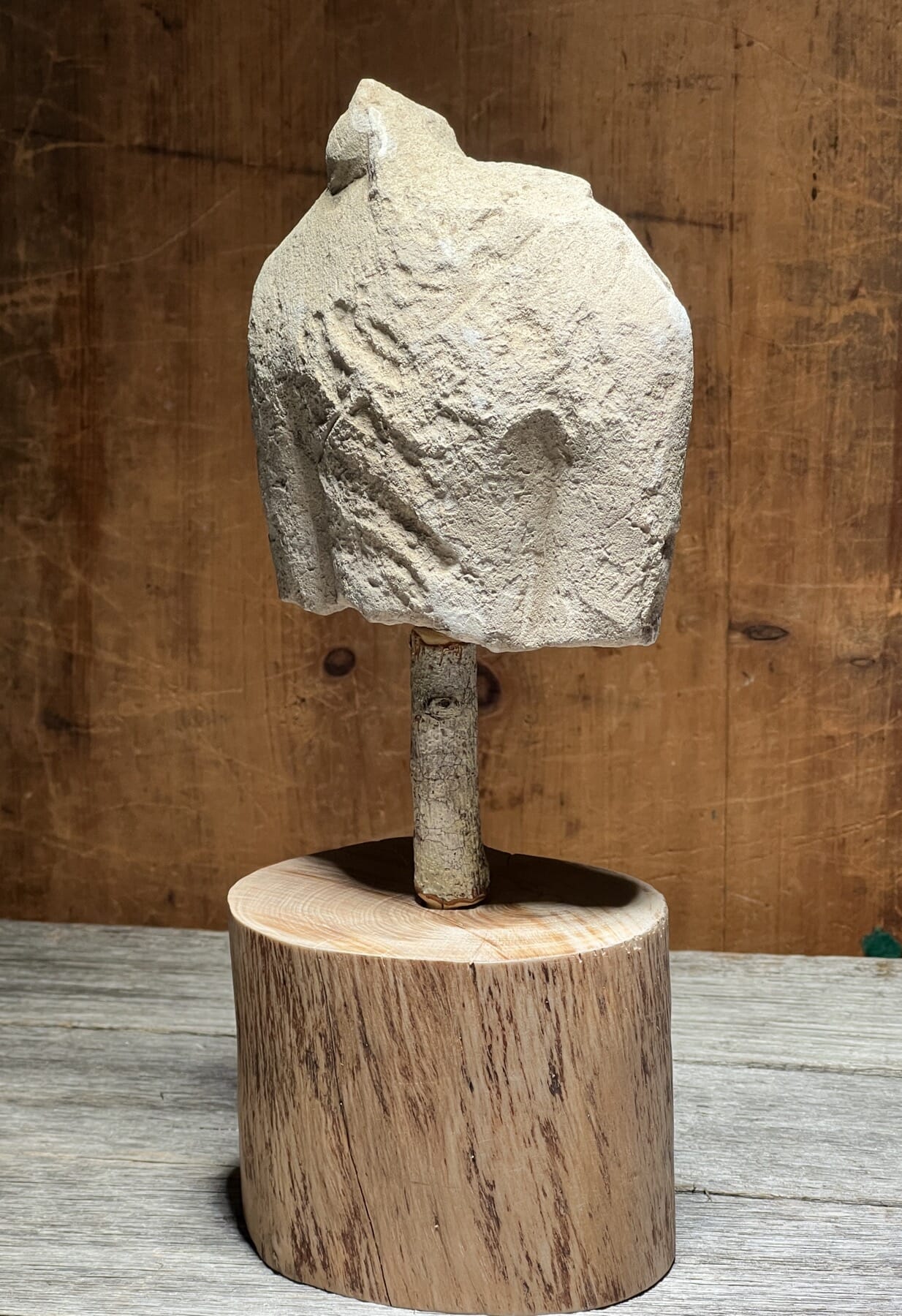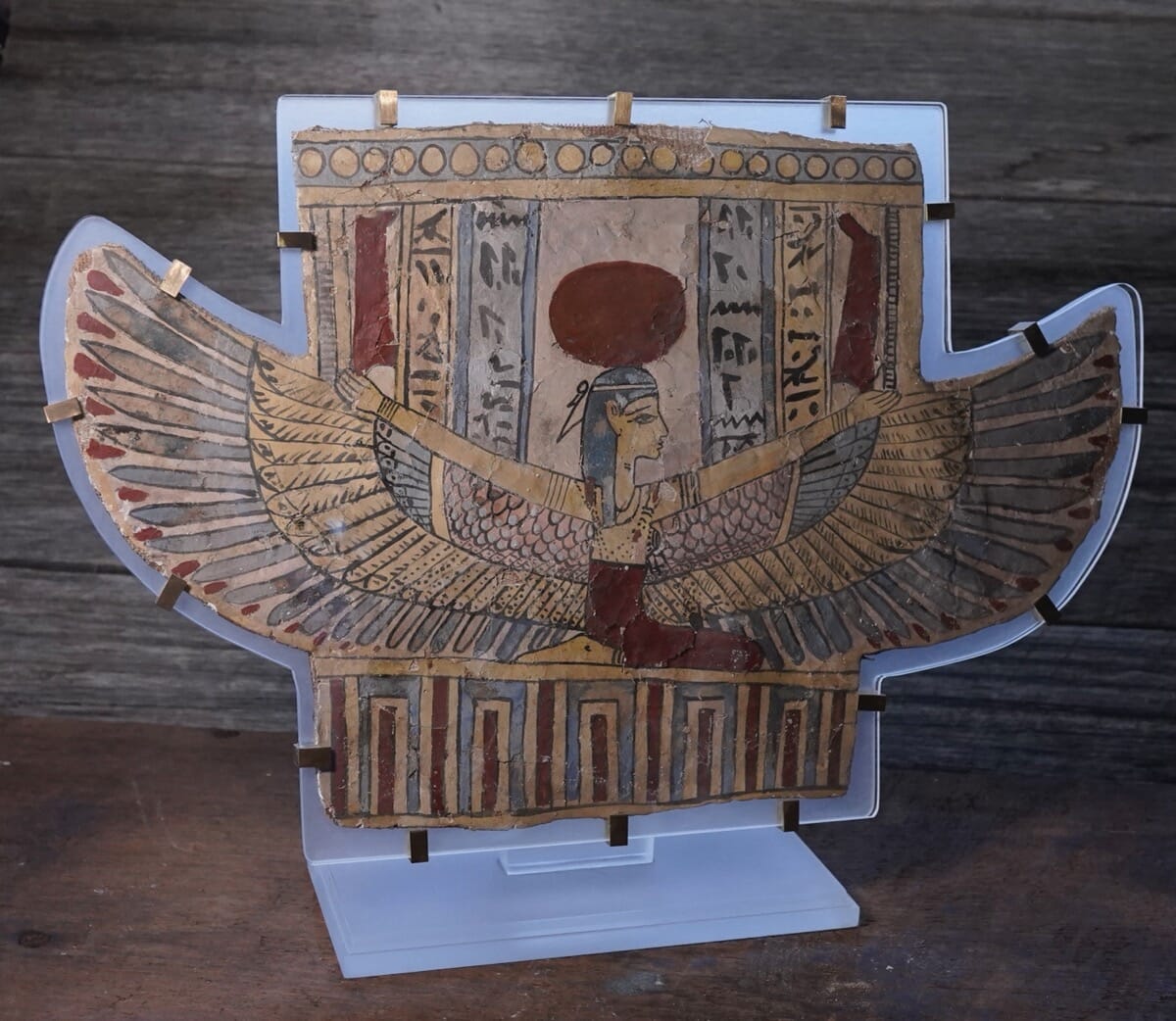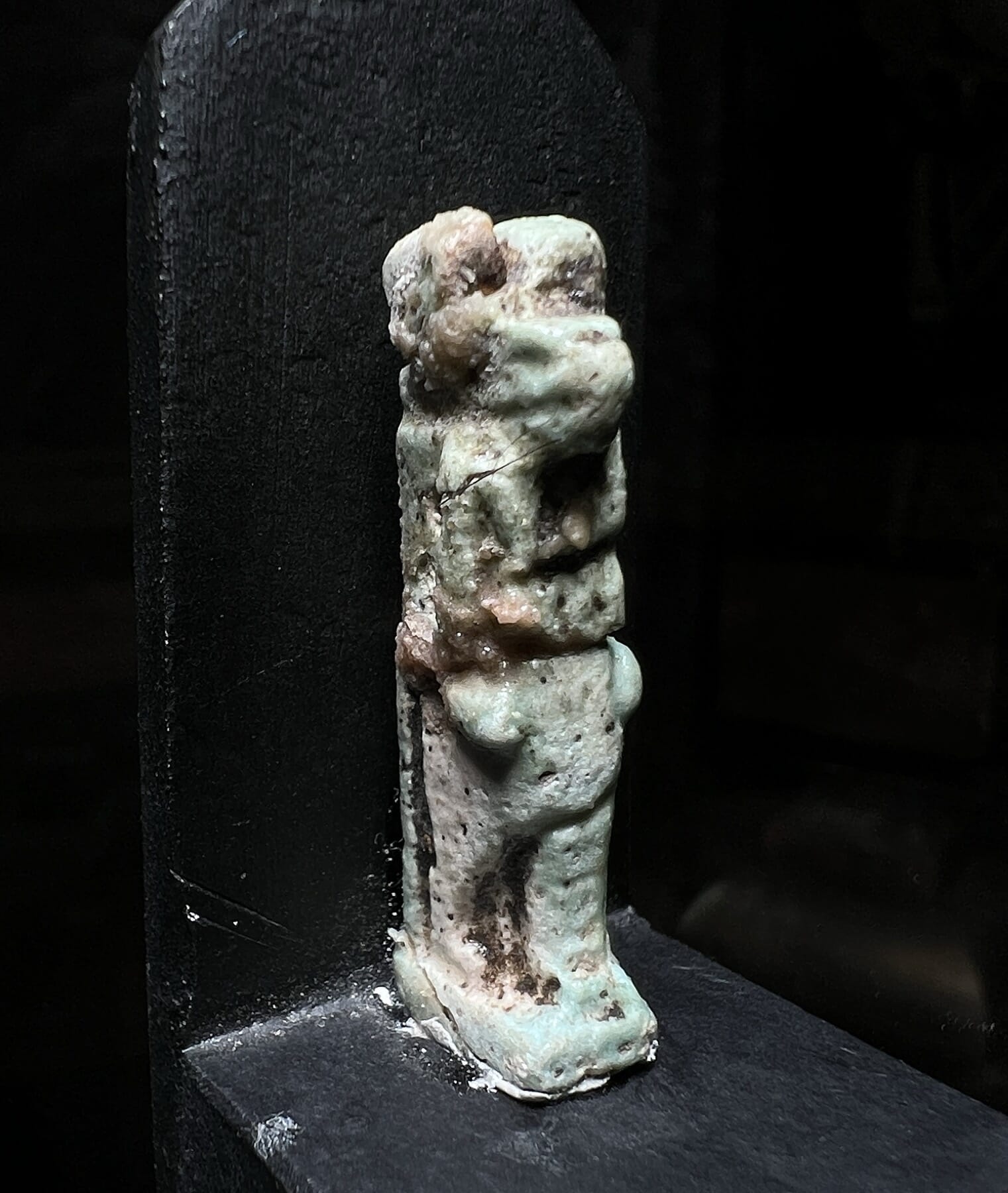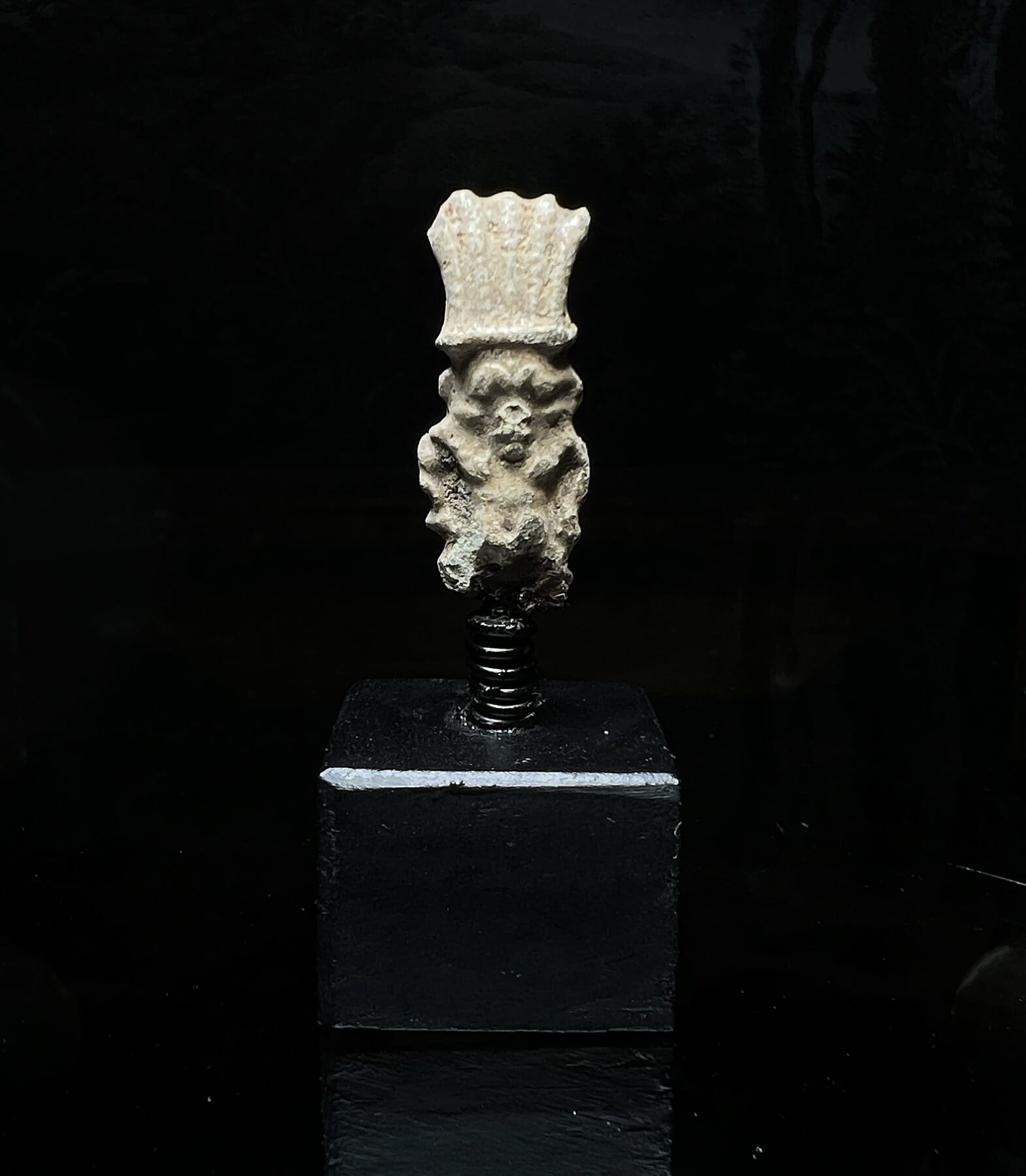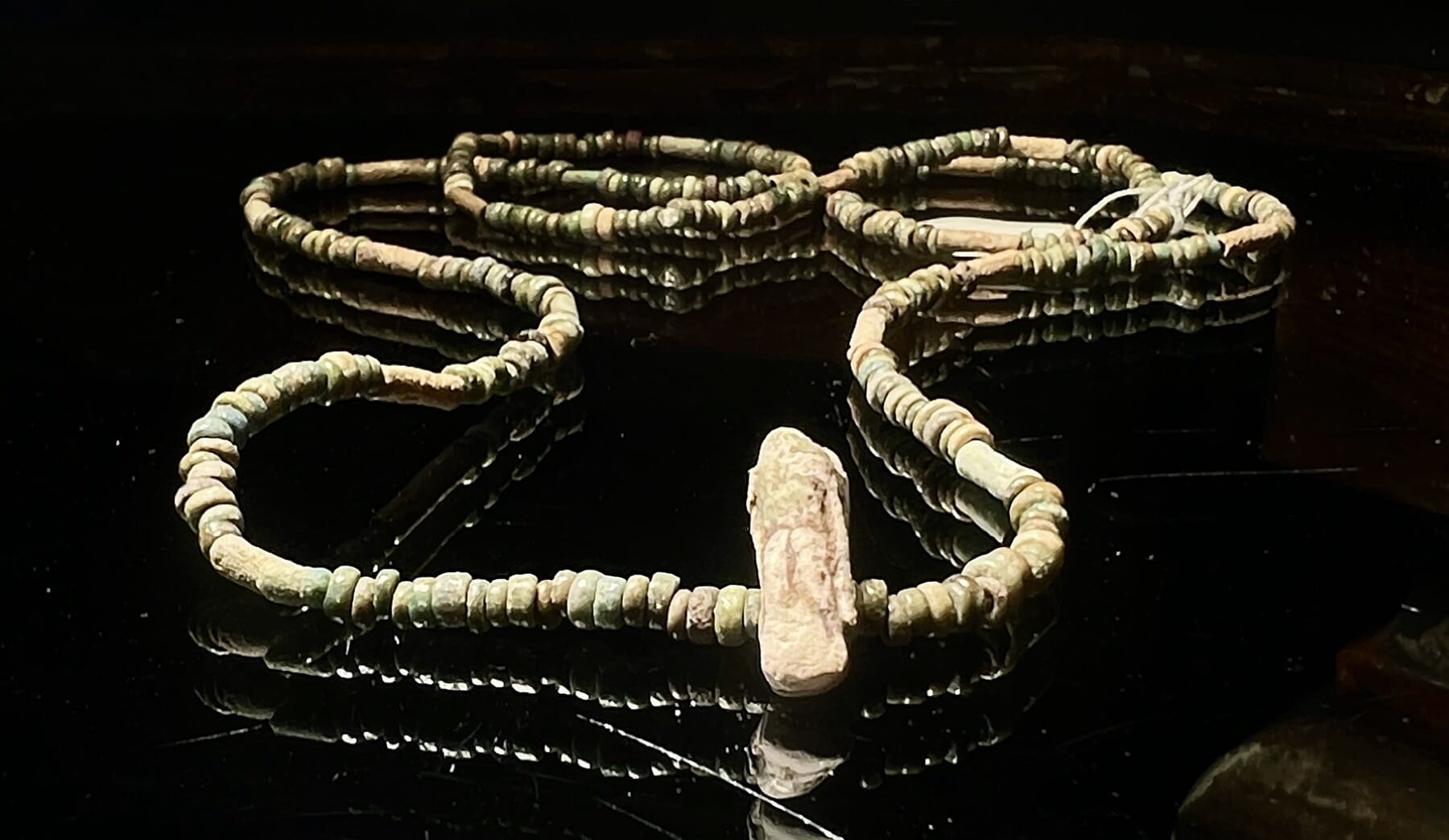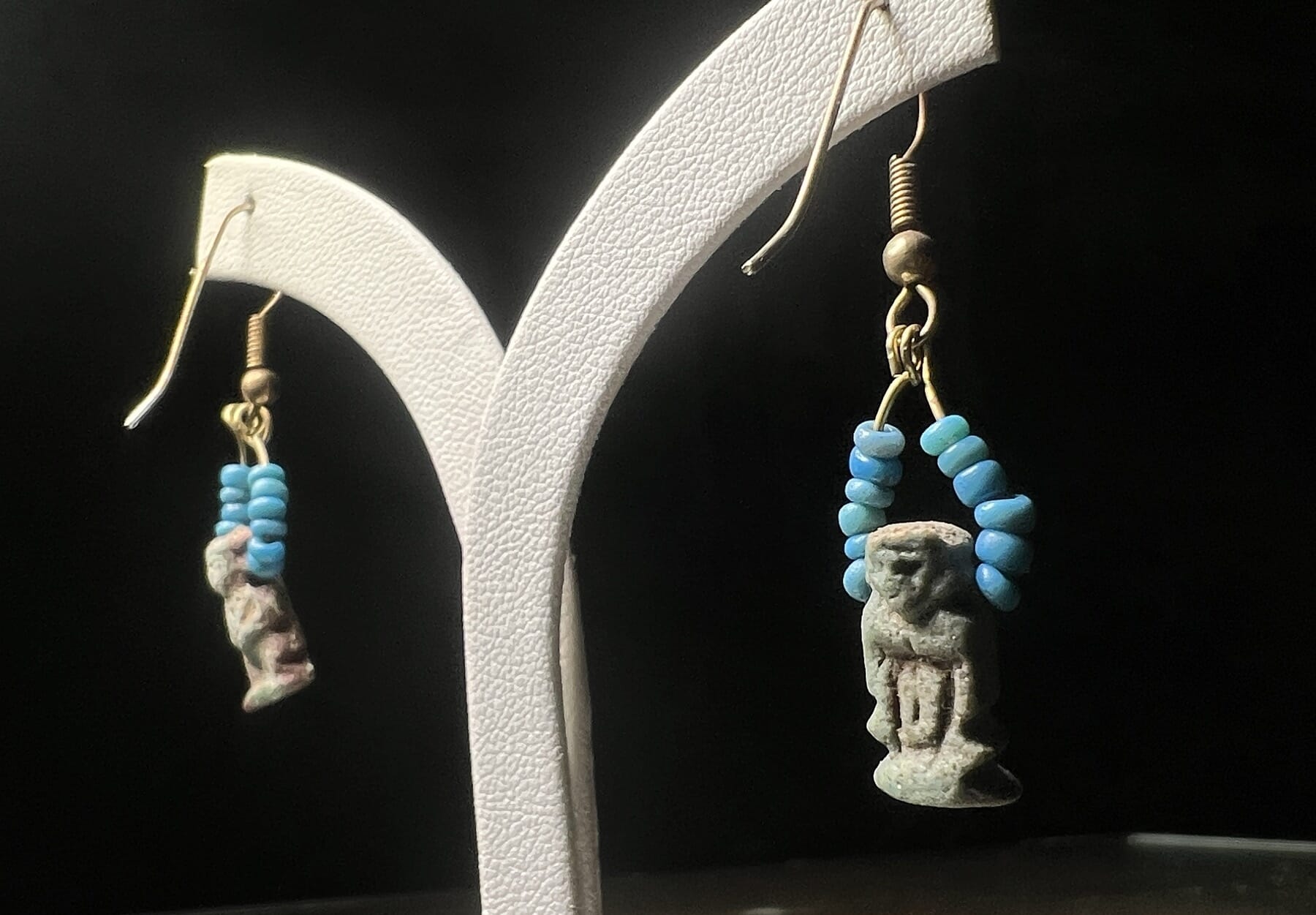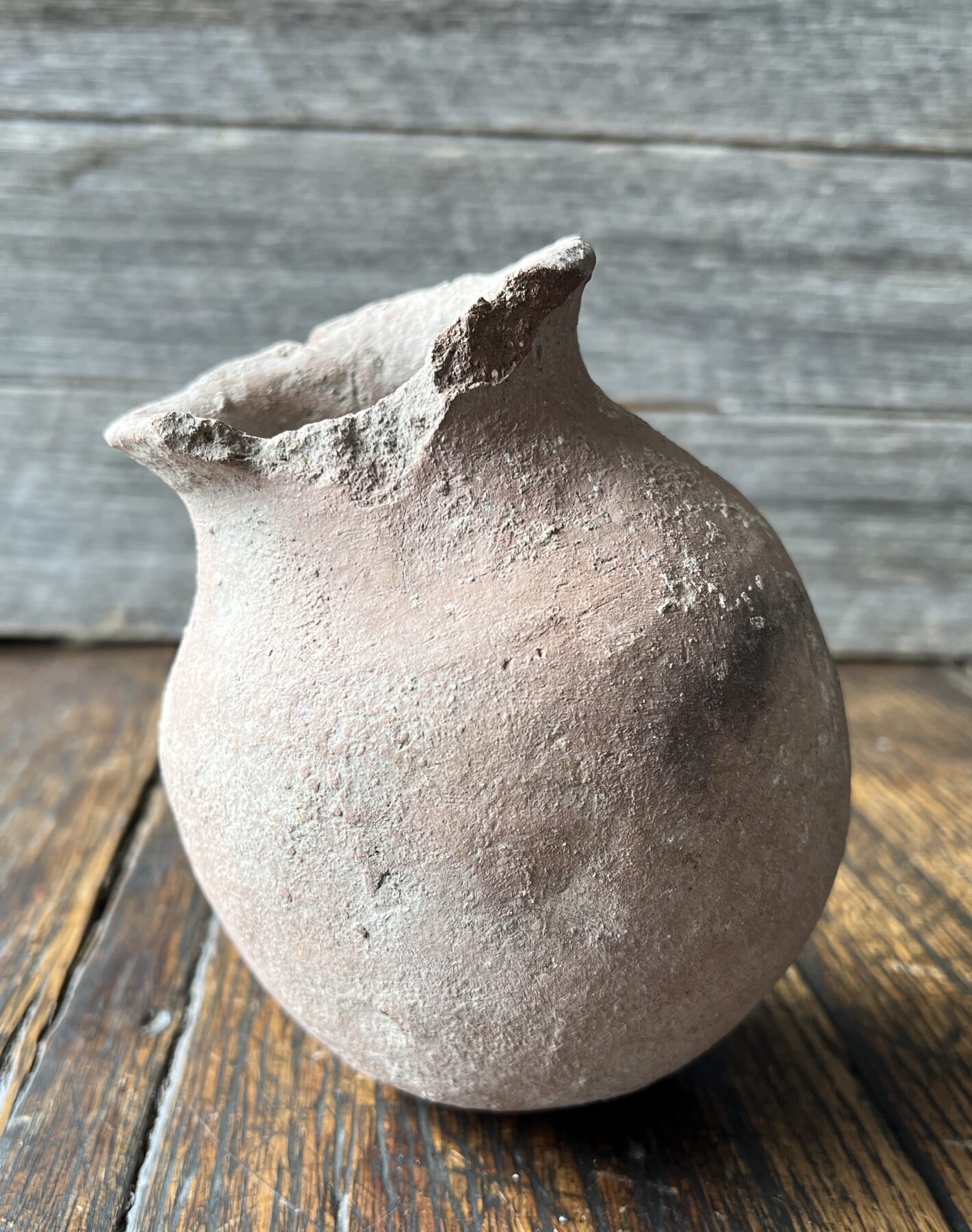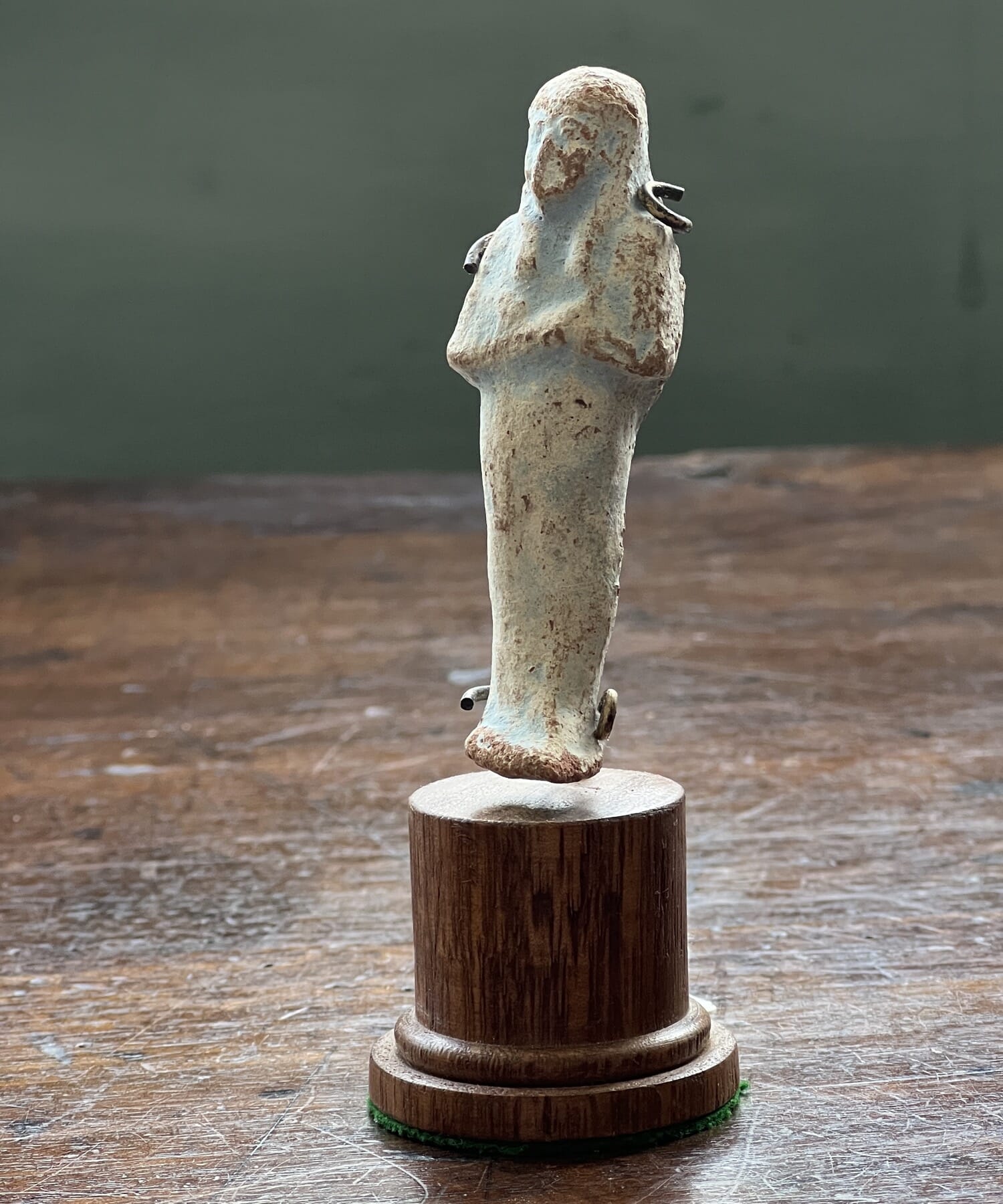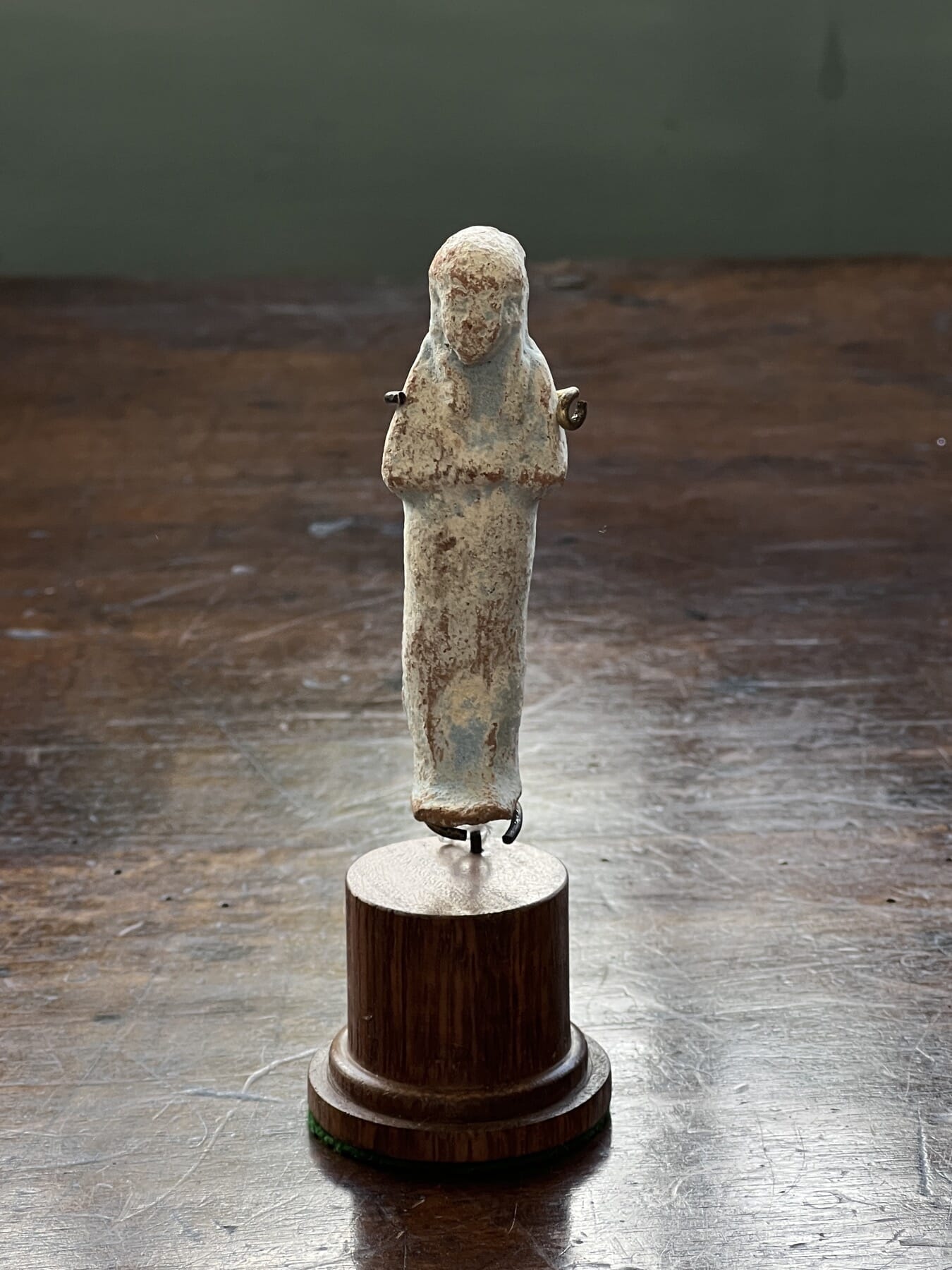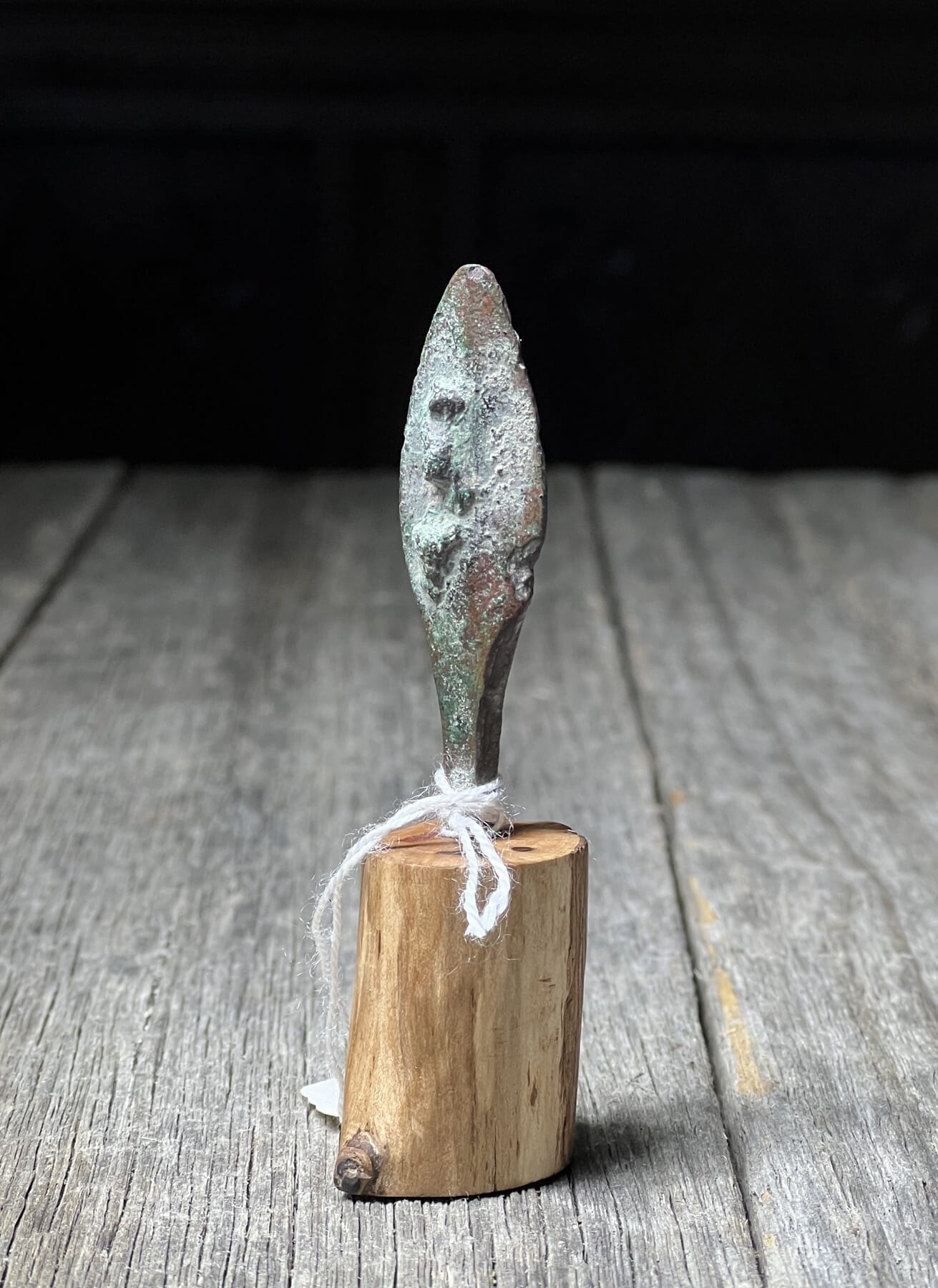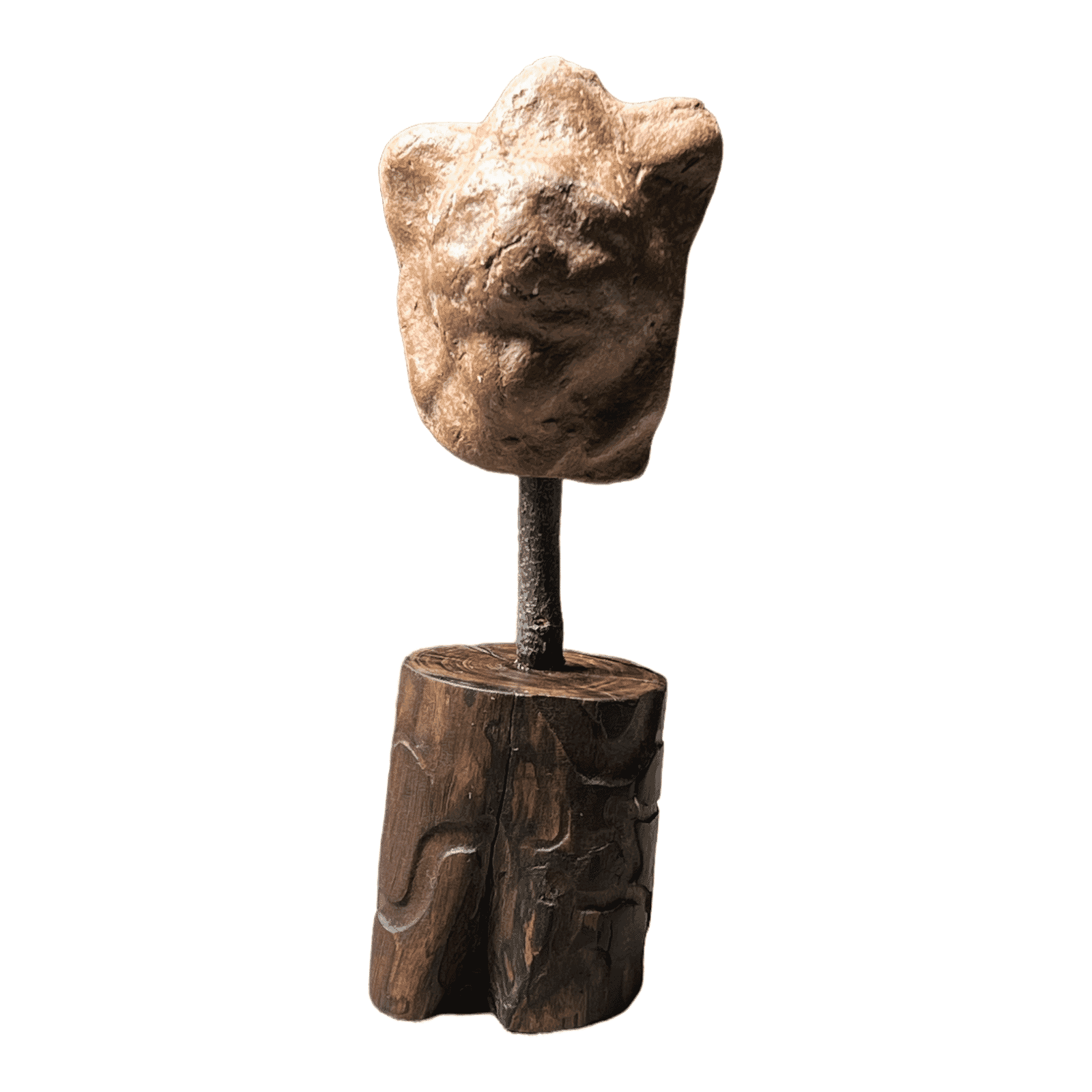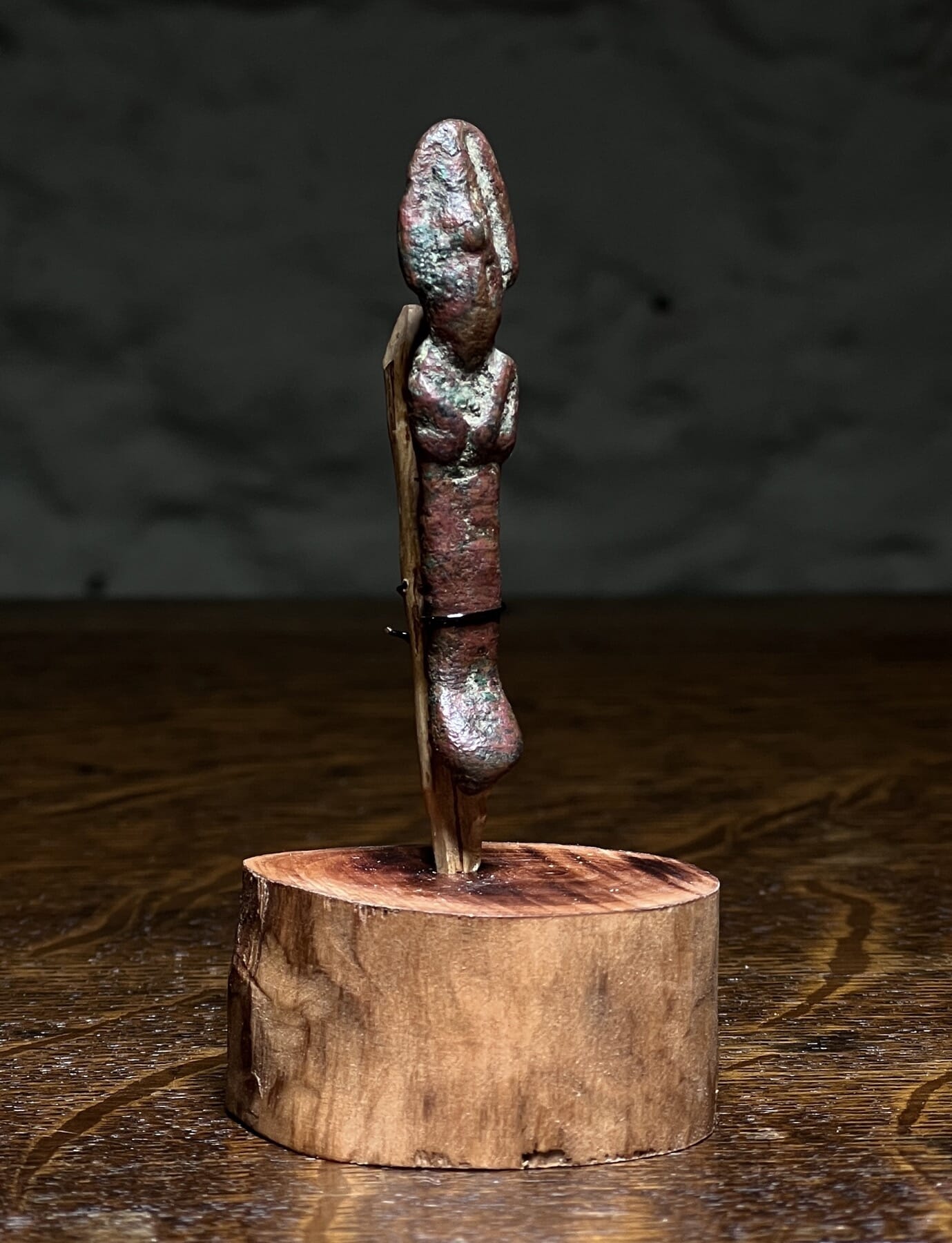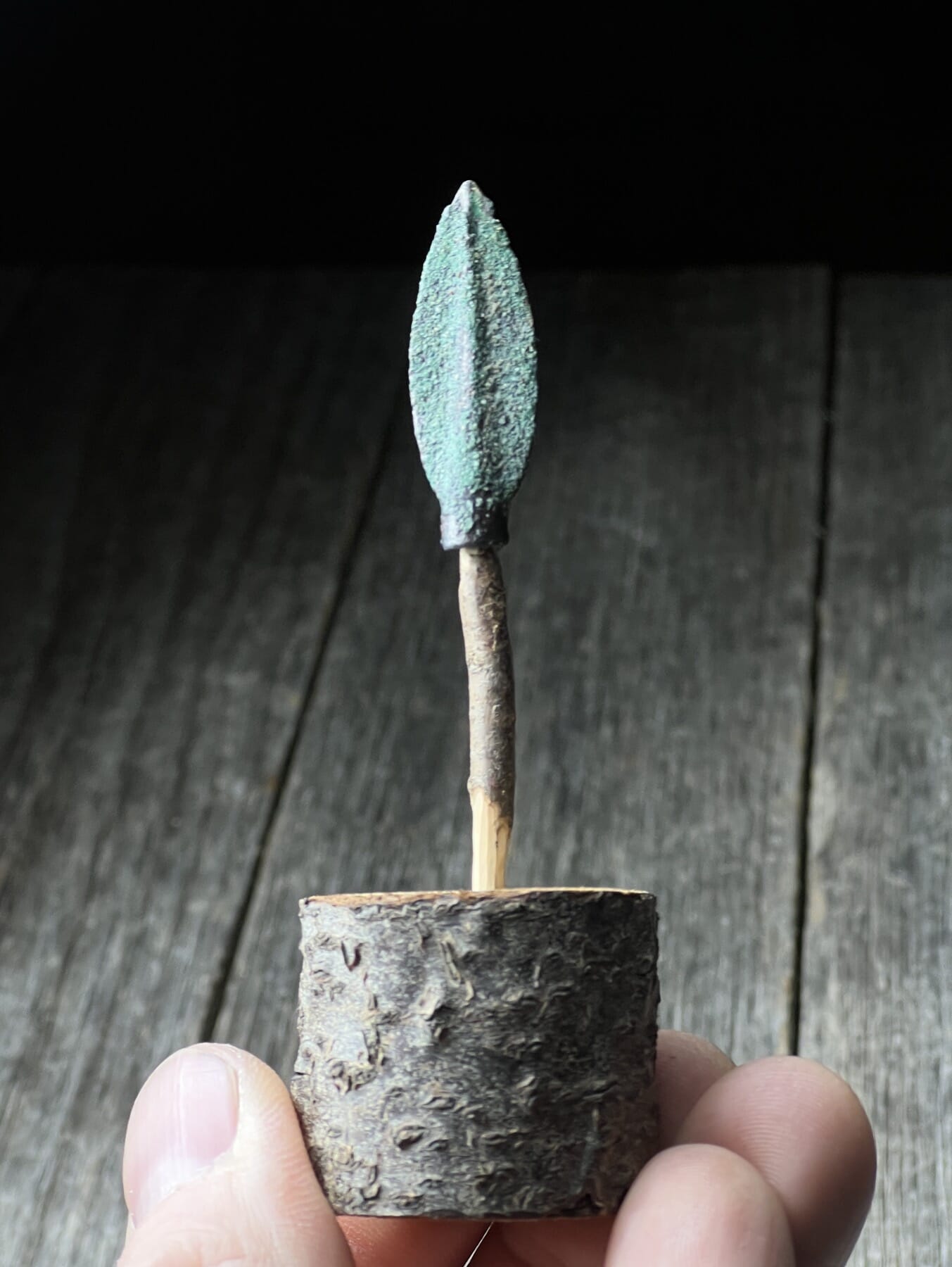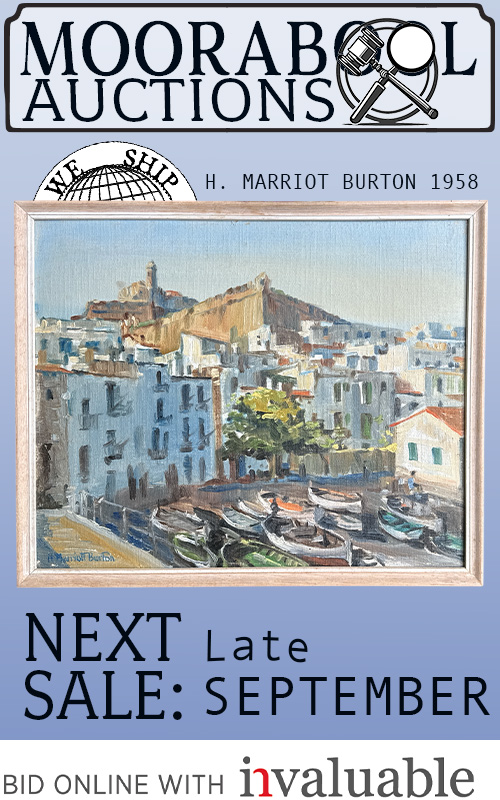
June 25, 2022
A large quantity of fine Fresh items have just been released.
It’s a ‘French Empire’ feel this time, with some magnificent examples of porcelain – and several bronzes – from the late 18th / early 19th century.
French Empire

This was the time when the classical world of the Greeks & Romans was re-imagined, and ceramics were the prime method of showing your sophistication and style…. a part-service with dramatic roundels of classical figures set against black are a prime example, with each plate having a different ‘classical’ gilt border pattern.
These are hand-painted, but some clever studios developed a technique for quickly creating ‘masterpieces’ – they used a printing technique to put a stippled black impression of the intended subject onto the porcelain, and then anyone who could weld a paintbrush was set to ‘colour it in’. This saved money, as good artists were not common & could charge more than a mere ‘painter’. The effect was rather good – can you tell from the two below which is hand-painted, and which has a print beneath?
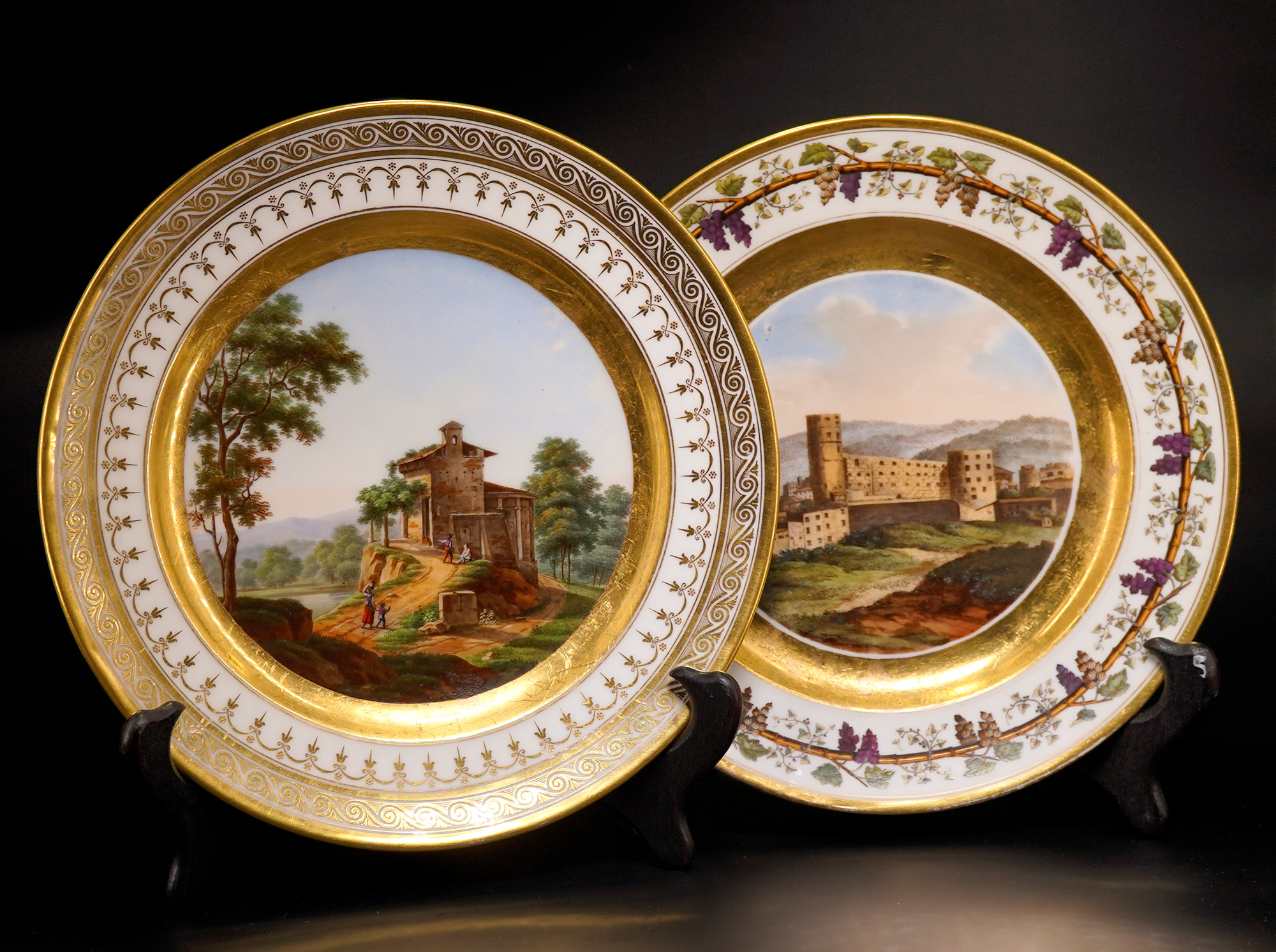
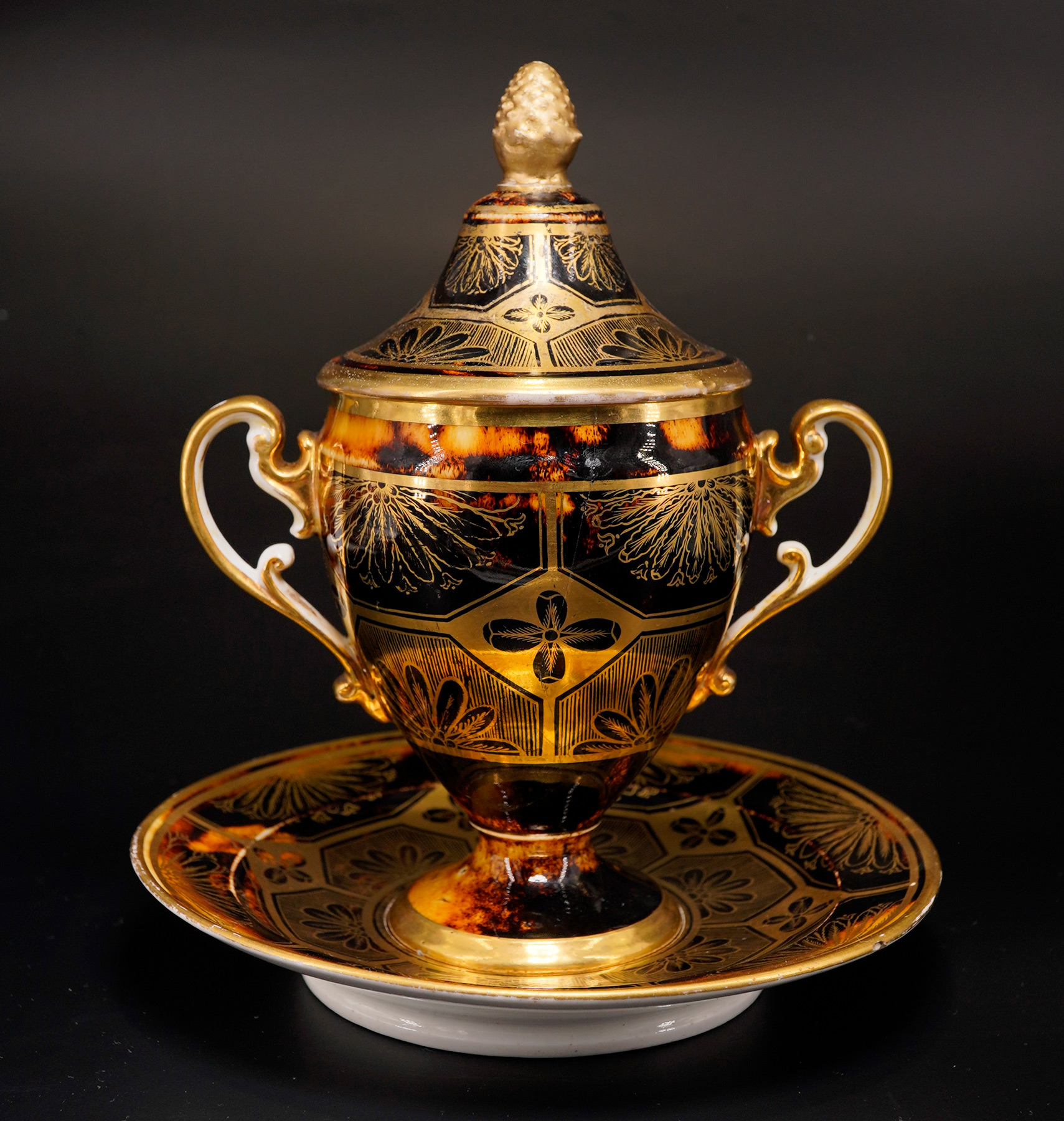
This Dihl et Guérhard covered cup & stand is a remarkable rarity, with the luxurious glaze imitating tortoiseshell. At this time, furniture and items such as inkwells and boxes would be covered in real tortoiseshell, and inlaid with bright brass: this is a ceramic version. Very few examples of this glaze can be found in the literature, with a plain piece in the Sévres Museum, and an odd saucer in the British Museum. Despite this piece being cracked & the knop restored, it is a desirable rarity.
The diamond- shaped dish is simply stunning, with ‘bronze’ items painted around a simulated polished stone. This is attributed to Darte, and matches a piece Moorabool had a few years ago – probably the same lavish service, in the finest late 18th century Empire taste.

The bronzes are simply sensational; the figure of Mars has an unrecorded foundry mark which links it to a foundry otherwise known for making church bells; his companion Athena is not marked, but clearly from the same source. The inkwell – boat form, with serpent supports- is the essence of Neoclassicism, like something Caesar would have used to ink his pen in. Which is exactly why it was created – for someone like Napoleon, who saw himself as a new Ceasar over his European Empire….
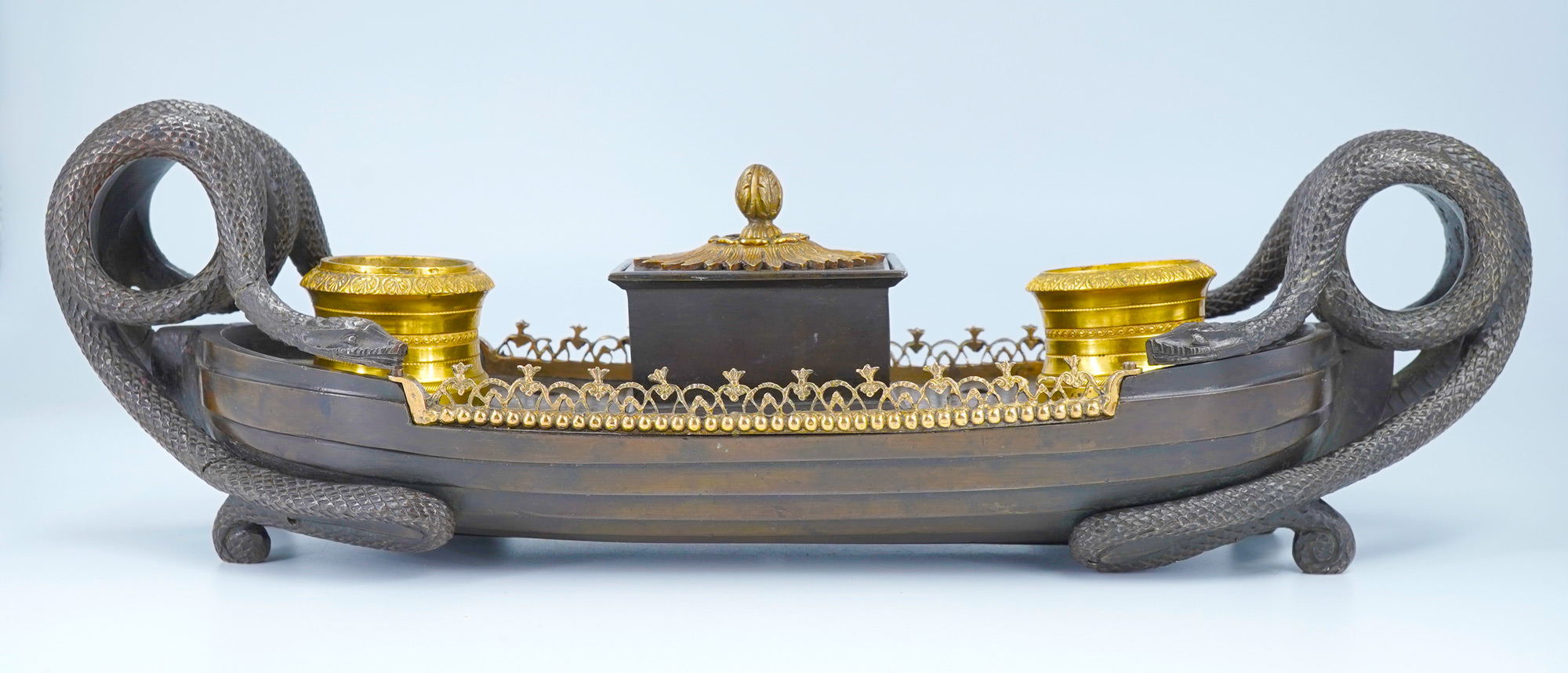


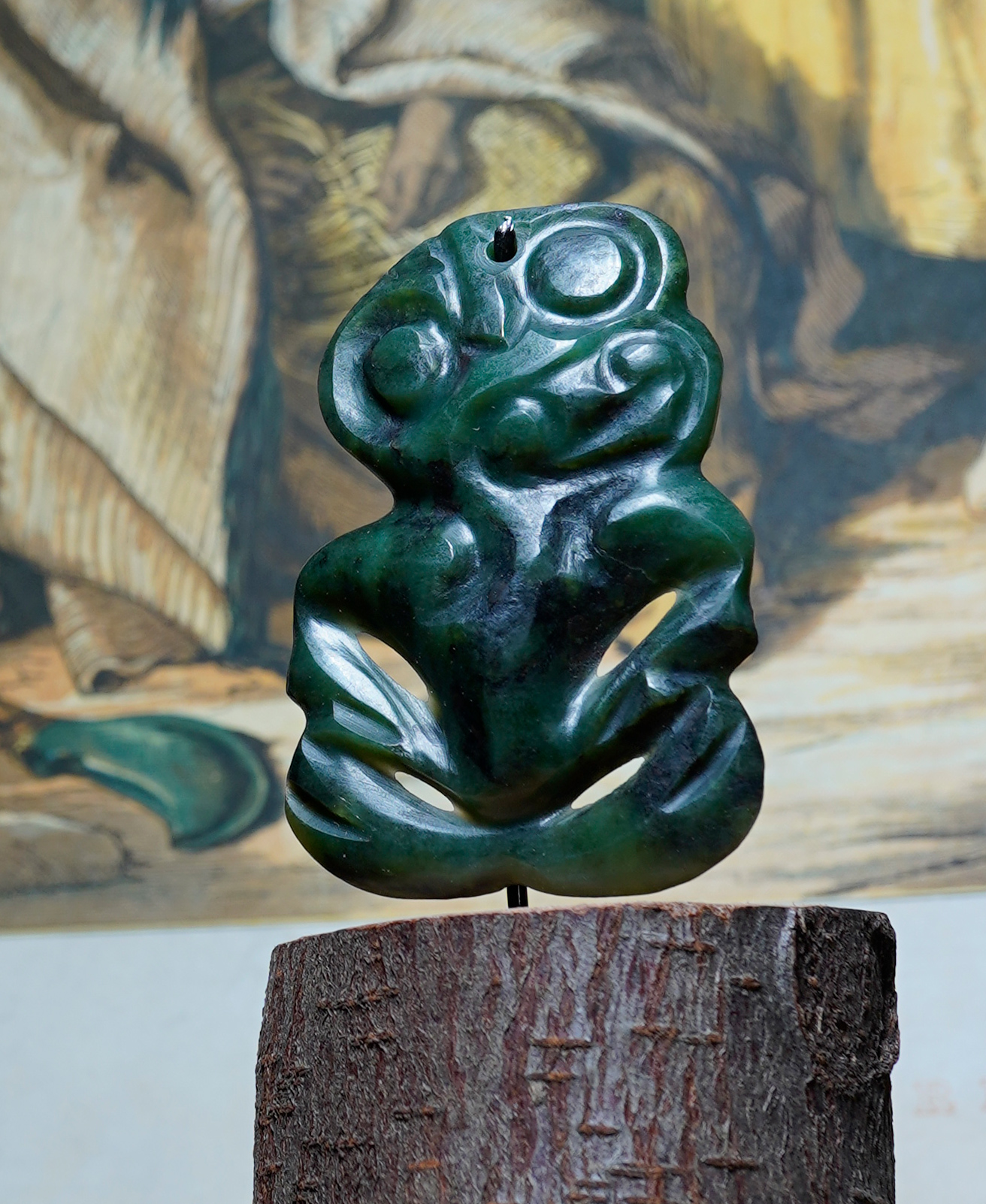
Now for something completely different!
There’s also some terrific ‘Colonial’ pieces – in particular, New Zealand pieces from the 19th century.
A stunning rarity is a New Zealand greenstone ‘Tiki’ – an original Maori-made piece from the 19th century.
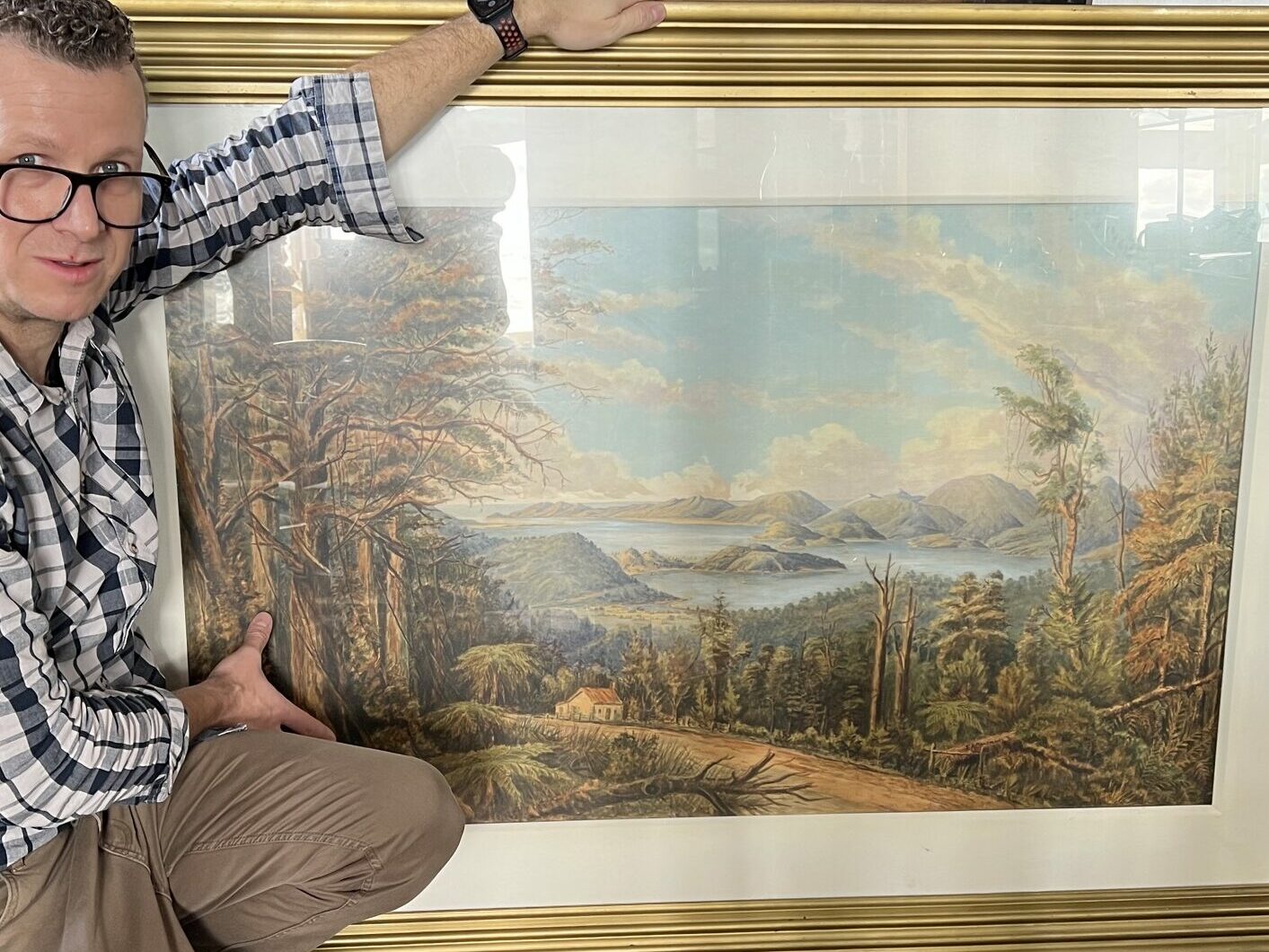
A giant watercolour of the Otago Peninsula by Ernest Arthur Chapman has a fascinating tale to tell. He is not well represented online, and we have researched his interesting story, outlined in another blog to be posted shortly. As a part of this research, we were able to find the exact viewpoint he painted this from – and the small house in the foreground is actually still partially in existence!
In the background is the hills of Port Chalmers, the shipping port for Dunedin. Just before is the settlement of Sawyer’s Bay, and the details shown allow us to date it to a very precise date – 1865-75. It’s a massive, detailed visual document of New Zealand’s history.
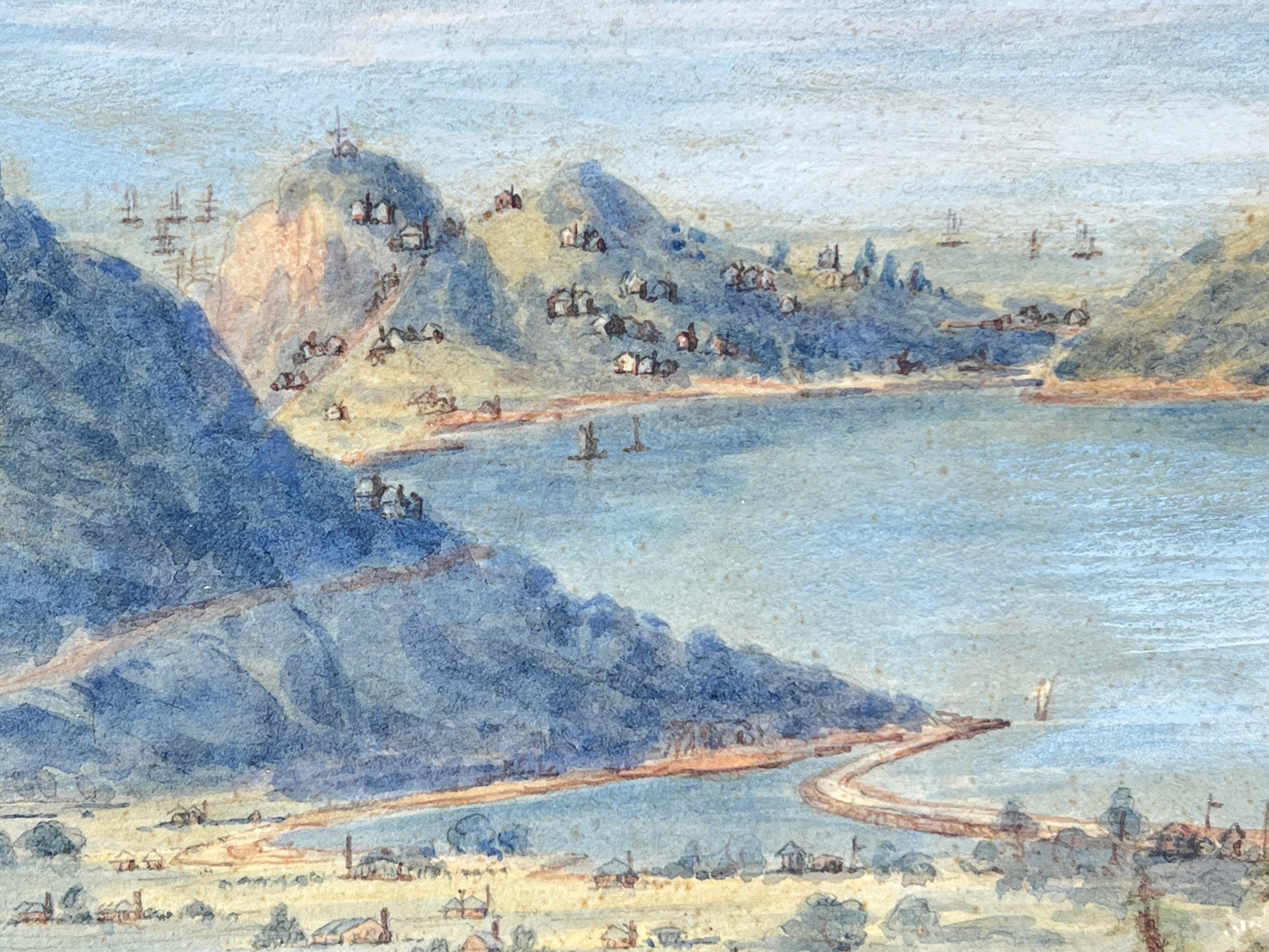
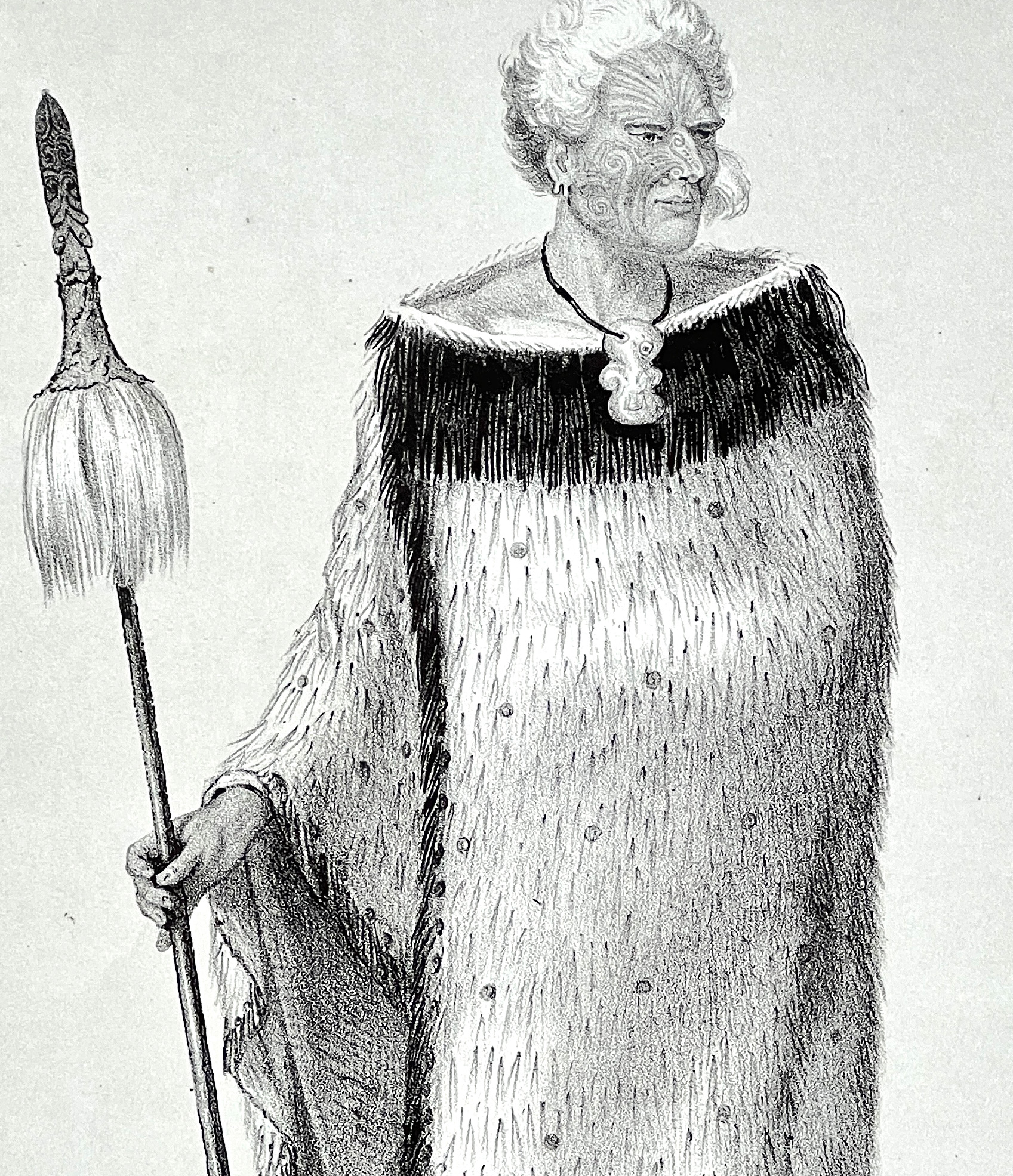
Several large lithographs explore the European fascination with the Maori culture. The artist at work here was the respected New Zealand artist Charles Decimus Barraud. He was the teacher – and father-in-law – of the artist E.A.Chapman behind the giant watercolour shown above.
A number of original New Zealand watercolour landscapes come from an Australian sketchbook – the ‘Budd Sisters’ – recording the landscapes encountered by them during a trip to the South Island in the 1860’s. Although amateur, they do compare well to the locations described when we go onto ‘google earth’ and explore the location described in ink on the back of each.

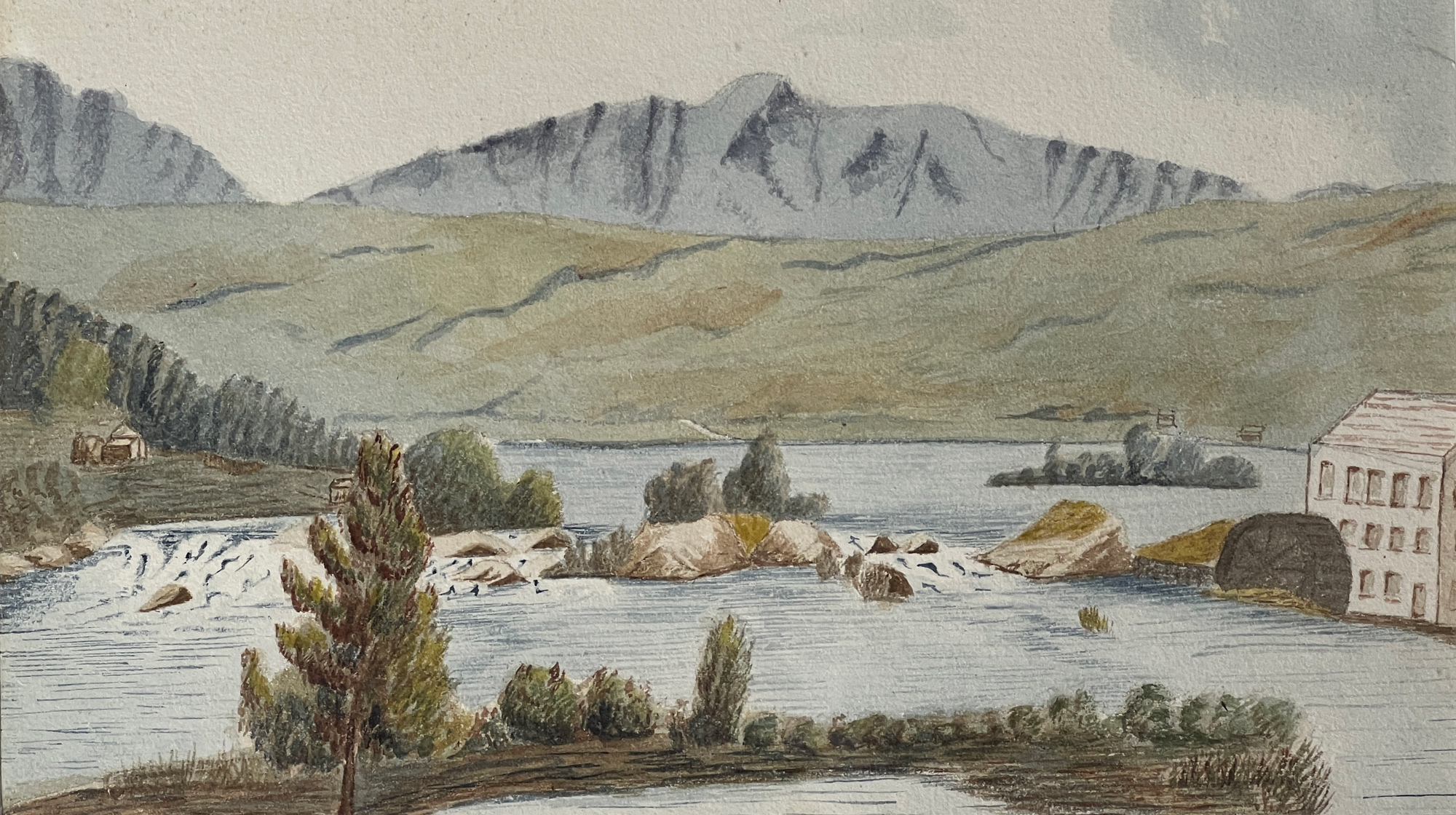
-
 Set of New Zealand paua shell Sterling Silver spoons, c. 1925$85.00 AUD
Set of New Zealand paua shell Sterling Silver spoons, c. 1925$85.00 AUD -
 New Zealand lithograph – Maori Chief Te Rangihaieta, by Barraud 1877$650.00 AUD
New Zealand lithograph – Maori Chief Te Rangihaieta, by Barraud 1877$650.00 AUD -
 New Zealand lithograph – Te Puni, by Barraud 1877$650.00 AUD
New Zealand lithograph – Te Puni, by Barraud 1877$650.00 AUD -
 Maori Girls by Thomas Selby Cousins, steel engraving hand-coloured, c. 1880$540.00 AUD
Maori Girls by Thomas Selby Cousins, steel engraving hand-coloured, c. 1880$540.00 AUD -
 New Zealand interest: a Budd sisters sketchbook leaf, Cosmos Peaks, dated 1882$395.00 AUD
New Zealand interest: a Budd sisters sketchbook leaf, Cosmos Peaks, dated 1882$395.00 AUD -
 New Zealand interest: View of Bluff, a Budd sisters sketchbook leaf, dated 1882$395.00 AUD
New Zealand interest: View of Bluff, a Budd sisters sketchbook leaf, dated 1882$395.00 AUD -
 New Zealand interest: a Budd sisters sketchbook leaf, Kinloch, Lake Wakatipu, Dart River, 1882$395.00 AUD
New Zealand interest: a Budd sisters sketchbook leaf, Kinloch, Lake Wakatipu, Dart River, 1882$395.00 AUD -
 New Zealand interest: a Budd sisters sketchbook leaf, View down lake Wakutipu, Kinloch, dated 1882$395.00 AUD
New Zealand interest: a Budd sisters sketchbook leaf, View down lake Wakutipu, Kinloch, dated 1882$395.00 AUD -
 New Zealand interest: a Budd sisters sketchbook leaf, Watermill, Queenstown, dated 1882$395.00 AUD
New Zealand interest: a Budd sisters sketchbook leaf, Watermill, Queenstown, dated 1882$395.00 AUD -
 New Zealand interest: a Budd sisters sketchbook leaf, Wakatipu, Queenstown, dated 1882$395.00 AUD
New Zealand interest: a Budd sisters sketchbook leaf, Wakatipu, Queenstown, dated 1882$395.00 AUD -
 New Zealand Greenstone carved hei Tiki, 19th centurySold
New Zealand Greenstone carved hei Tiki, 19th centurySold -
 American Colonial Australia Map of Australia, ‘New Holland & New Zealand’ J.Greenleaf, c. 1848$325.00 AUD
American Colonial Australia Map of Australia, ‘New Holland & New Zealand’ J.Greenleaf, c. 1848$325.00 AUD -
 Fine quality Clipper Ship in Bottle, by G. W. Woodlord, Symington 1908Sold
Fine quality Clipper Ship in Bottle, by G. W. Woodlord, Symington 1908Sold -
 New Zealand timbers frame, figured totara, Auckland portrait photo, Bartlett c. 1890$450.00 AUD
New Zealand timbers frame, figured totara, Auckland portrait photo, Bartlett c. 1890$450.00 AUD -
 Rare NZ ‘Martin’s Patent’ embossed photo, by Wrigglesworth & Binns, Christchurch c.1897$495.00 AUD
Rare NZ ‘Martin’s Patent’ embossed photo, by Wrigglesworth & Binns, Christchurch c.1897$495.00 AUD -
 Ernest Arthur Chapman – v. large NZ landscape, Otago Heads, Sawyers Bay & Port Chalmers, c. 1865Sold
Ernest Arthur Chapman – v. large NZ landscape, Otago Heads, Sawyers Bay & Port Chalmers, c. 1865Sold
Arts & Crafts
The Arts & Crafts are represented by a scattering of interesting items, including some ‘Tudric’ pewter – made for Liberties of London, some pieces to the design of Archibald Knox. This teapot with applied enamel ‘gems’ is unmistakably a Knox design, and a magnificent example of the style he pioneered. There are several other examples of his work in this stock release, such as a rare clock, and a pin cushion.

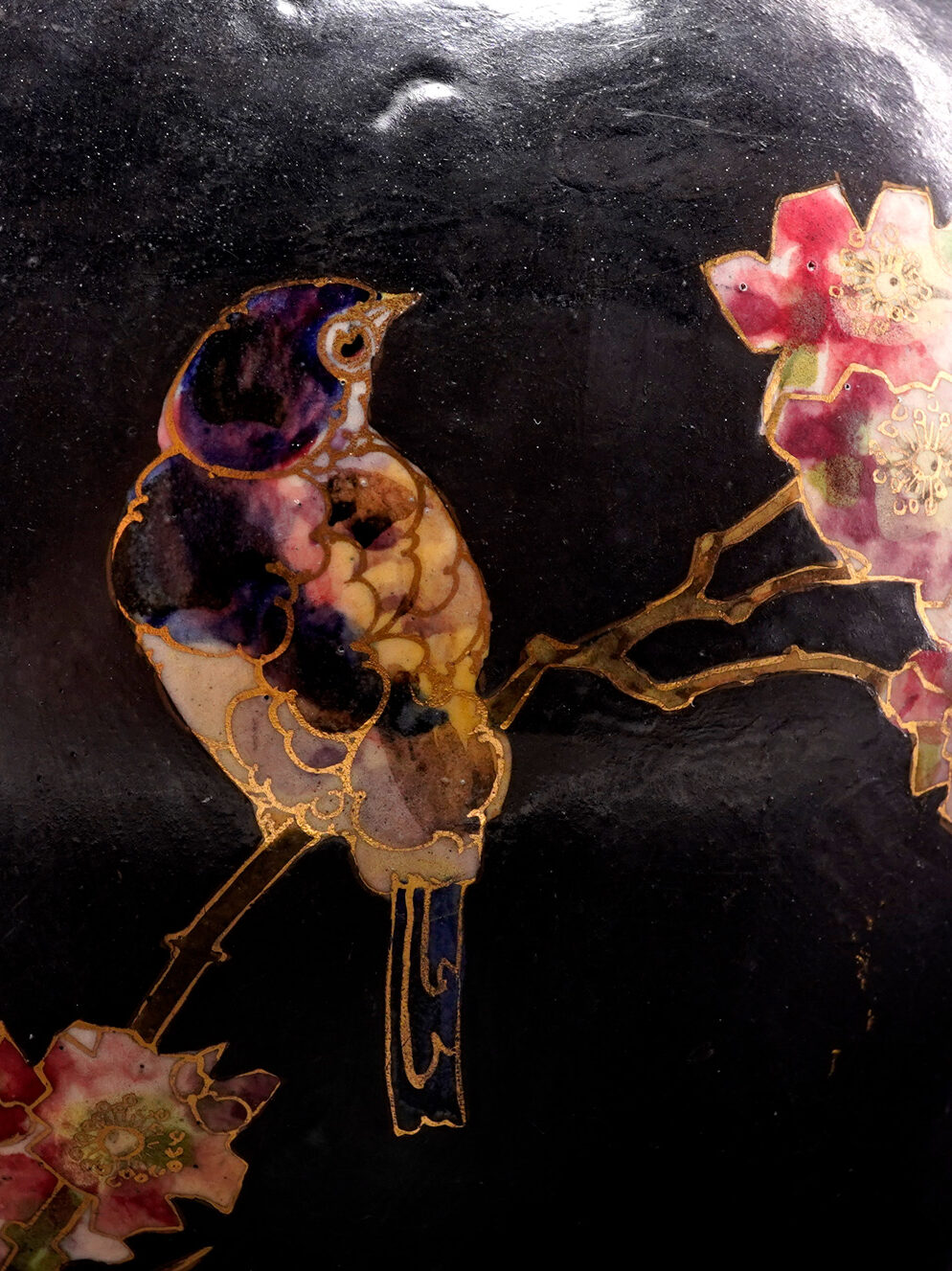
A Bretby pottery piece has the appearance of a hand-beaten copper planter inset with Japanese lacquer plaques – but is in fact all just glazes and enamels! In fact, the panels with birds on flowering branches are imitating cloisonne, as there is a gilt line around each colour – making it even more ‘Aesthetic’ in nature!
There’s quite a number of other pieces to see also – take a look at the ‘Latest Additions’ – we are now adding items almost daily, and sending out our email to let you know: if you’re not on our email list, sign up here >>
Enjoy!
A selection of our FRESHEST STOCK
-
 Dihl and Guérhard covered cup & stand, fine neo-classical gilt decoration on ‘tortoise shell’ ground, c.1795Sold
Dihl and Guérhard covered cup & stand, fine neo-classical gilt decoration on ‘tortoise shell’ ground, c.1795Sold -
 Paris Porcelain plate, with Italian view, marked ‘fuiles’, c. 1815Sold
Paris Porcelain plate, with Italian view, marked ‘fuiles’, c. 1815Sold -
 Paris porcelain Empire style coffee cup and saucer, c.1810$590.00 AUD
Paris porcelain Empire style coffee cup and saucer, c.1810$590.00 AUD -
 Paris porcelain plate, painted in the Neoclassical taste, Nast C 1805$980.00 AUD
Paris porcelain plate, painted in the Neoclassical taste, Nast C 1805$980.00 AUD -
 Paris porcelain plate, painted in the Neoclassical taste, Nast C 1805Sold
Paris porcelain plate, painted in the Neoclassical taste, Nast C 1805Sold -
 Scottish silver mounted agate brooch, C. 1870$560.00 AUD
Scottish silver mounted agate brooch, C. 1870$560.00 AUD -
 Continental Majolica Art Nouveau ‘Geranium’ vase, c. 1900Sold
Continental Majolica Art Nouveau ‘Geranium’ vase, c. 1900Sold -
 Archibald Knox for Liberty & Co Tudric pewter teapot, enamel plaques, c. 1903Sold
Archibald Knox for Liberty & Co Tudric pewter teapot, enamel plaques, c. 1903Sold -
 Small ‘Tudric’ pewter Liberty & Co clock, Knox design with enamel bosses, c. 1905Sold
Small ‘Tudric’ pewter Liberty & Co clock, Knox design with enamel bosses, c. 1905Sold -
 Copper Arts & Crafts candlestick, tri-split stem with ‘woodgrain’ hammerwork, Nouveau terminals, c. 1905Sold
Copper Arts & Crafts candlestick, tri-split stem with ‘woodgrain’ hammerwork, Nouveau terminals, c. 1905Sold -
 Bretby pottery Arts & Crafts jardinier, ‘copper’ with ‘cloisonne’ panels, c. 1910$495.00 AUD
Bretby pottery Arts & Crafts jardinier, ‘copper’ with ‘cloisonne’ panels, c. 1910$495.00 AUD -
 Derby figure , a dandy in white, circa 1775$495.00 AUD
Derby figure , a dandy in white, circa 1775$495.00 AUD -
 Chamberlain’s Worcester porcelain hand painted and gilded tea set, C. 1810$2,800.00 AUD
Chamberlain’s Worcester porcelain hand painted and gilded tea set, C. 1810$2,800.00 AUD -
 Wedgwood gilt bone china clam shell centrepiece, C. 1880$2,500.00 AUD
Wedgwood gilt bone china clam shell centrepiece, C. 1880$2,500.00 AUD -
 Chinese blue & white ginger jar with lid, 19th century$480.00 AUD
Chinese blue & white ginger jar with lid, 19th century$480.00 AUD

